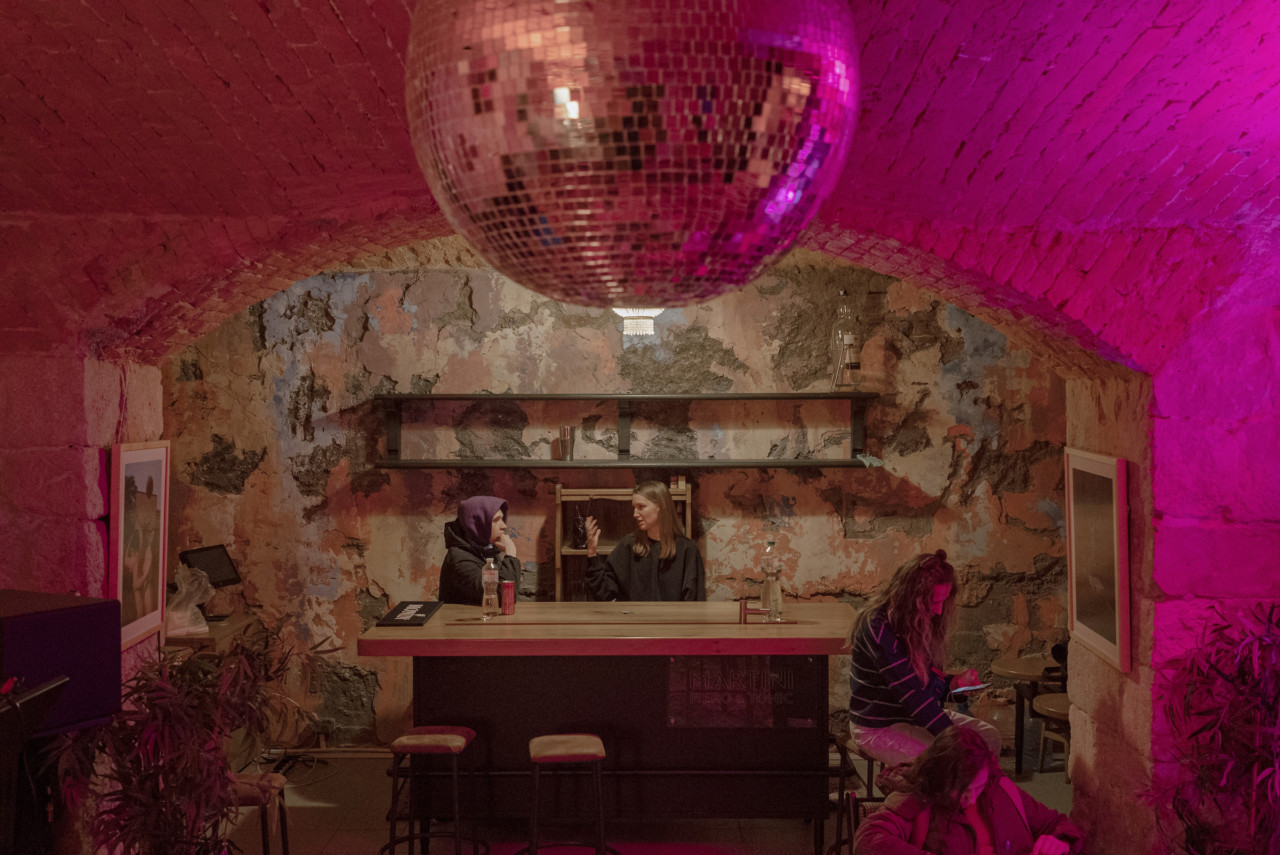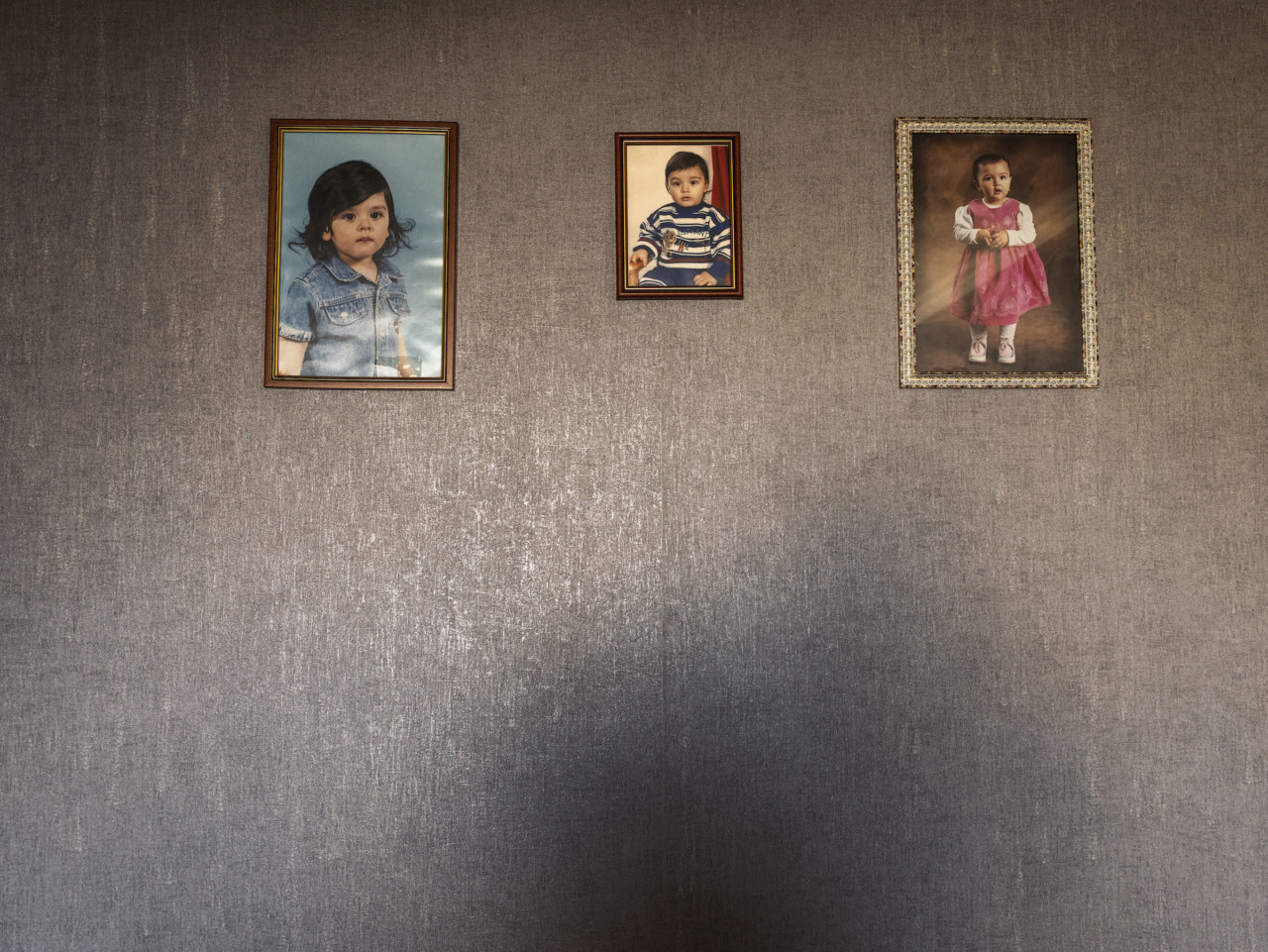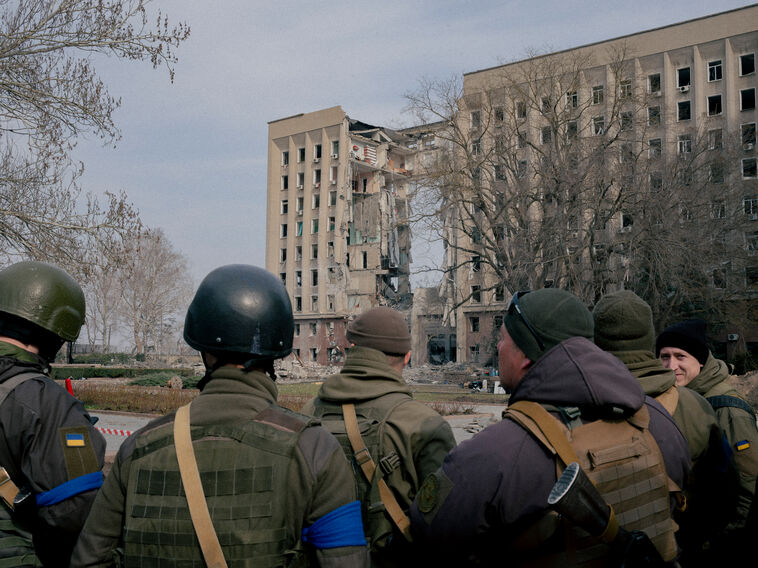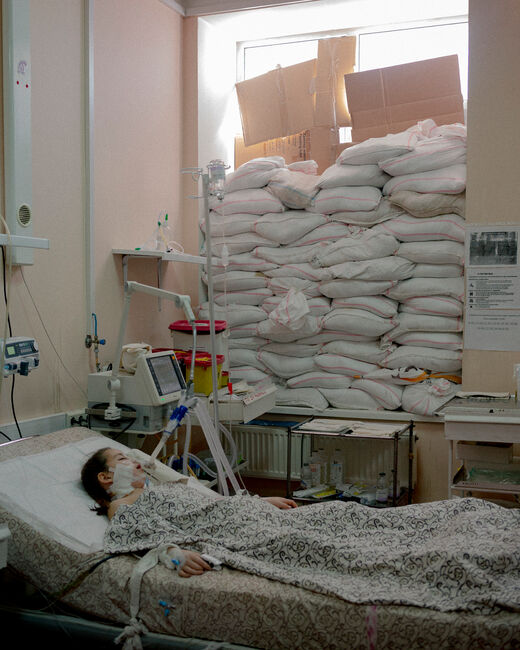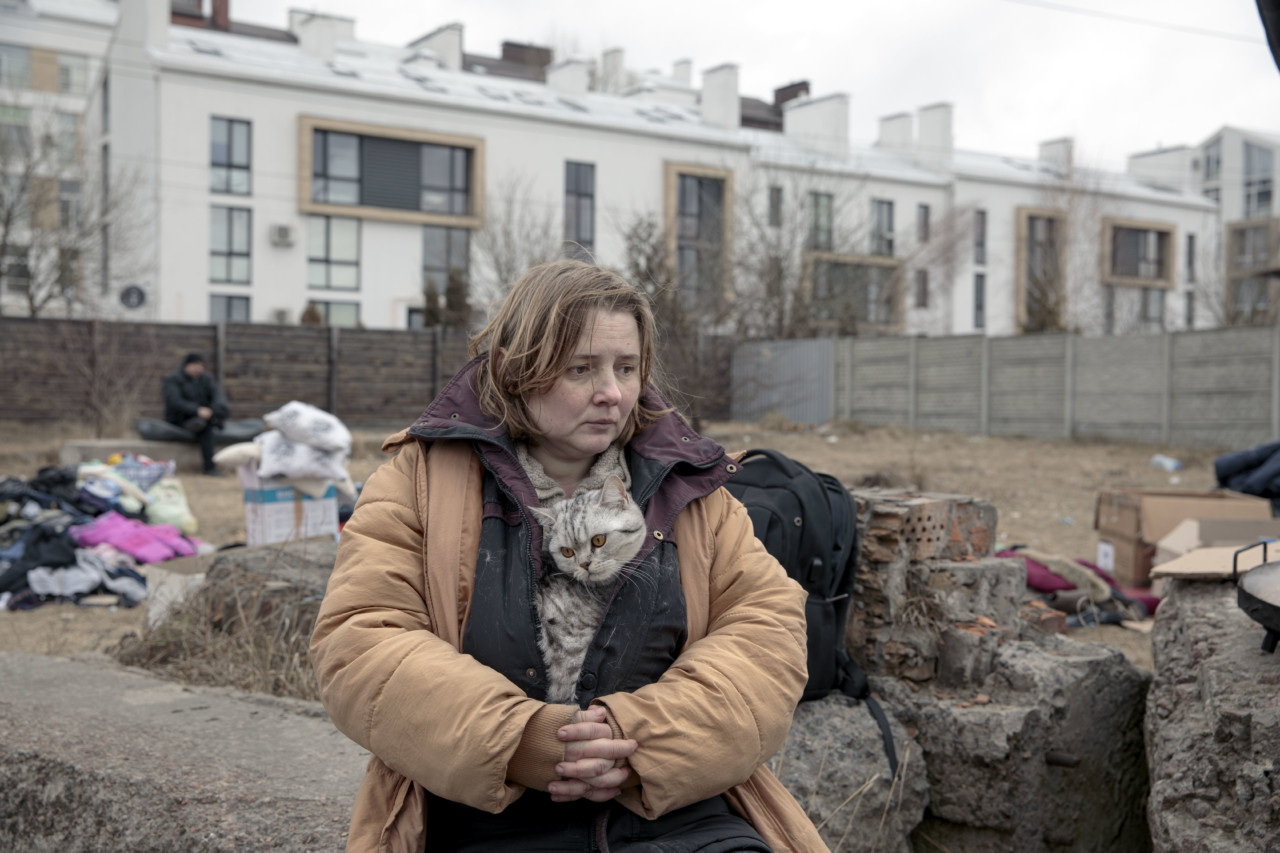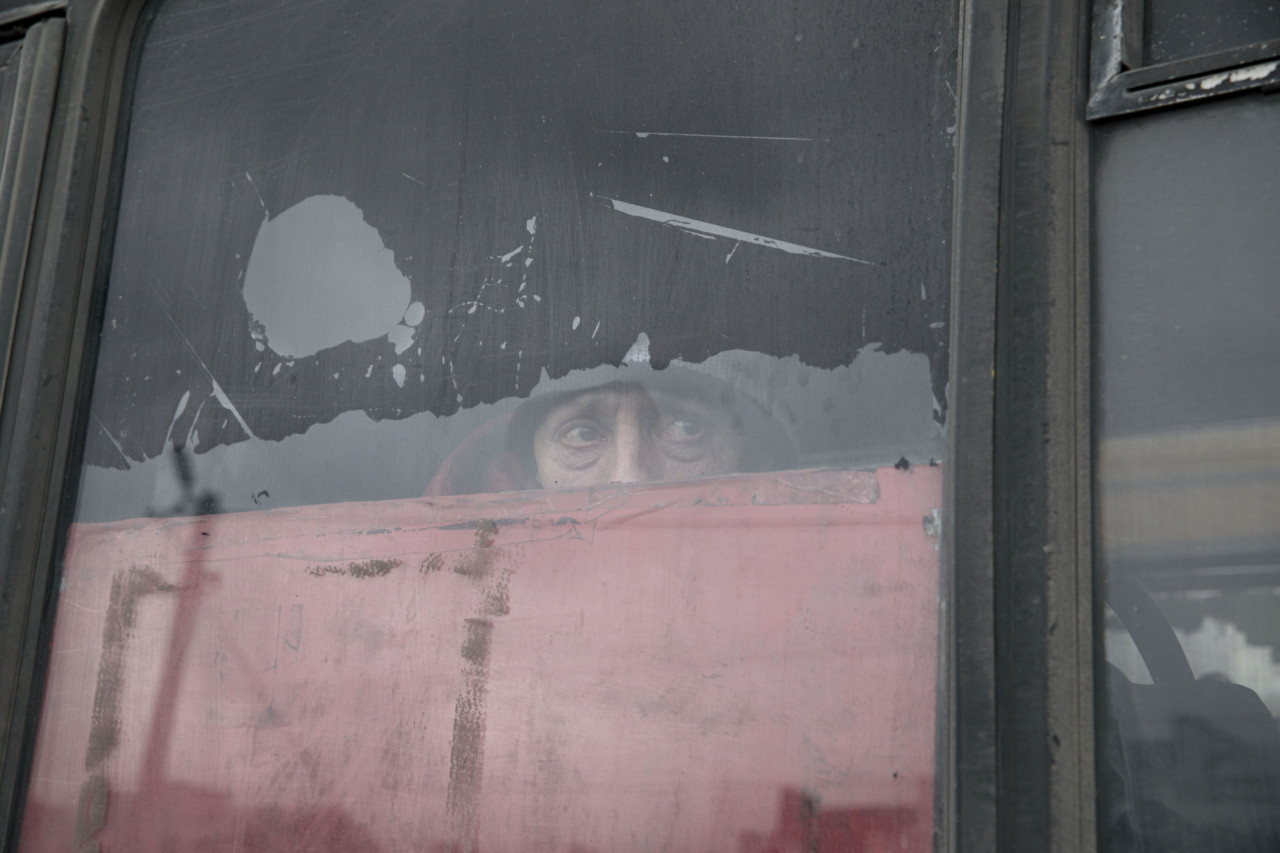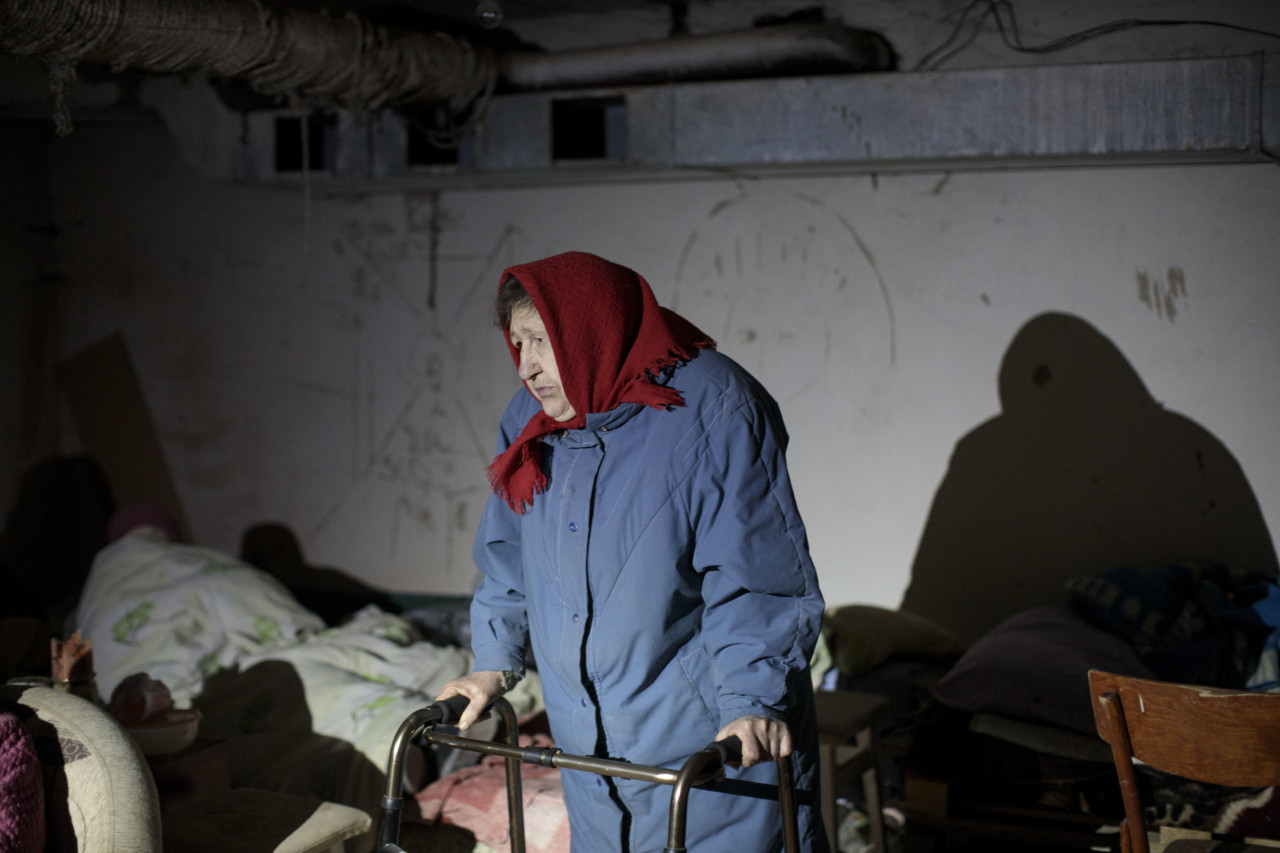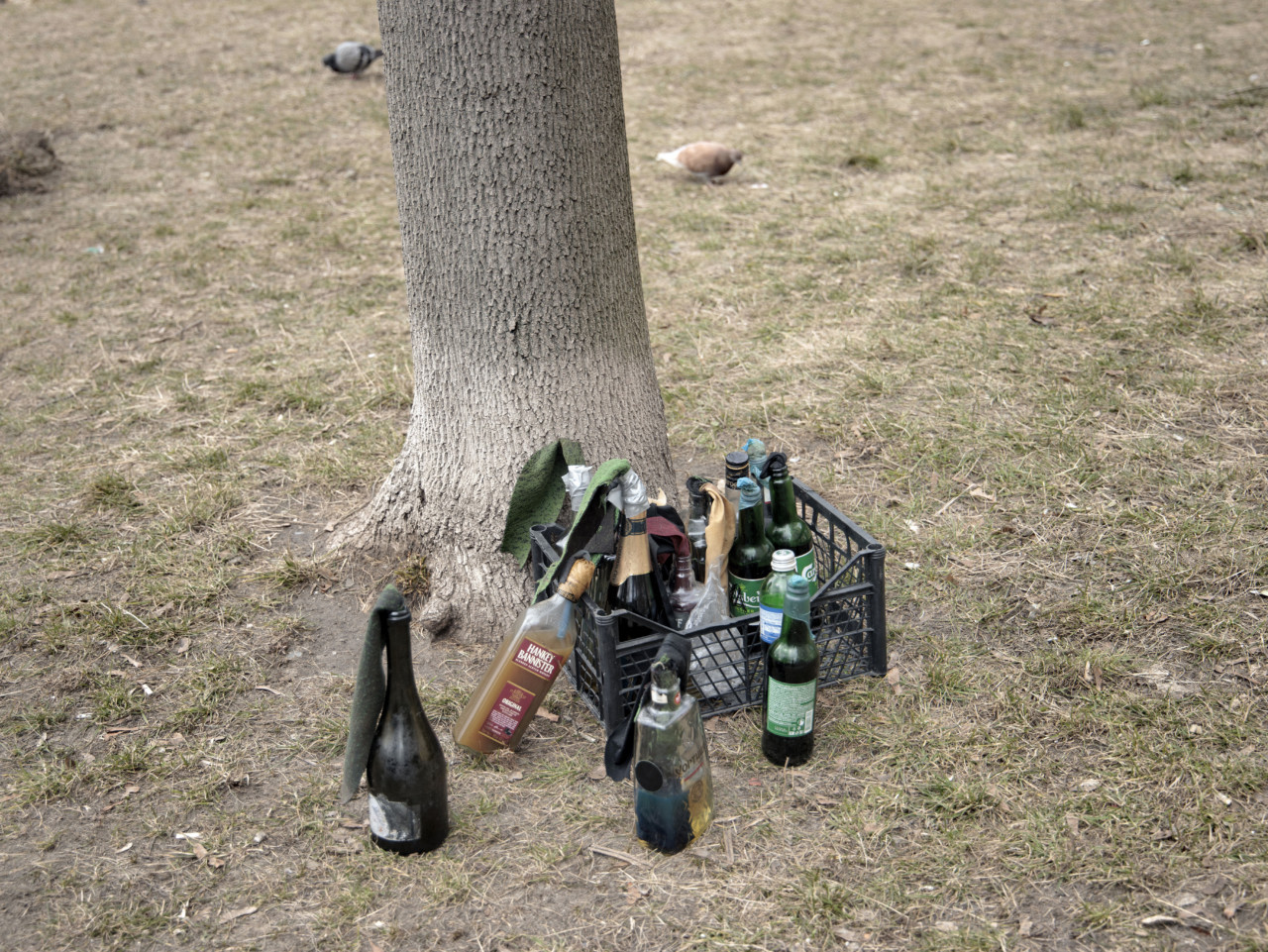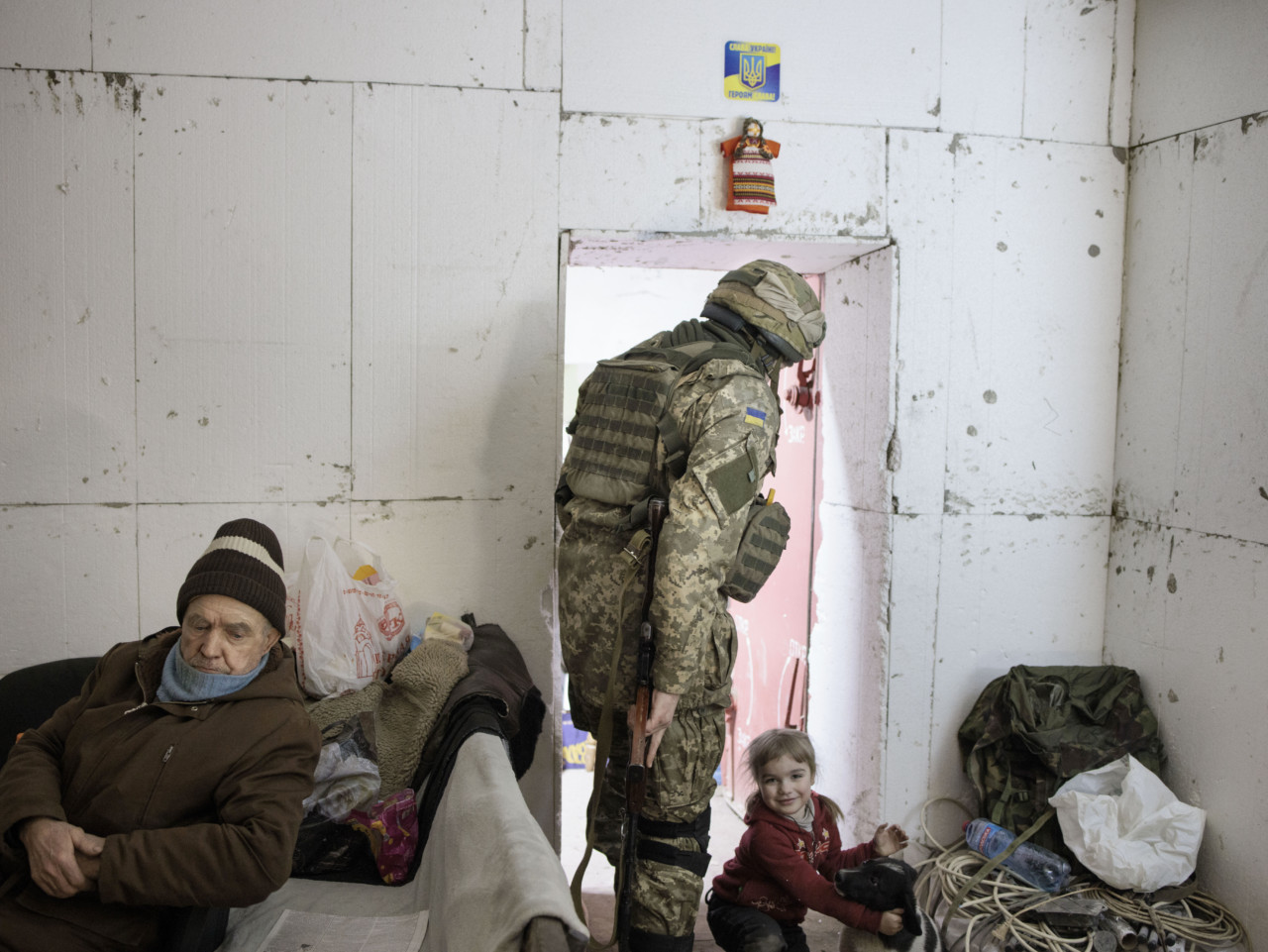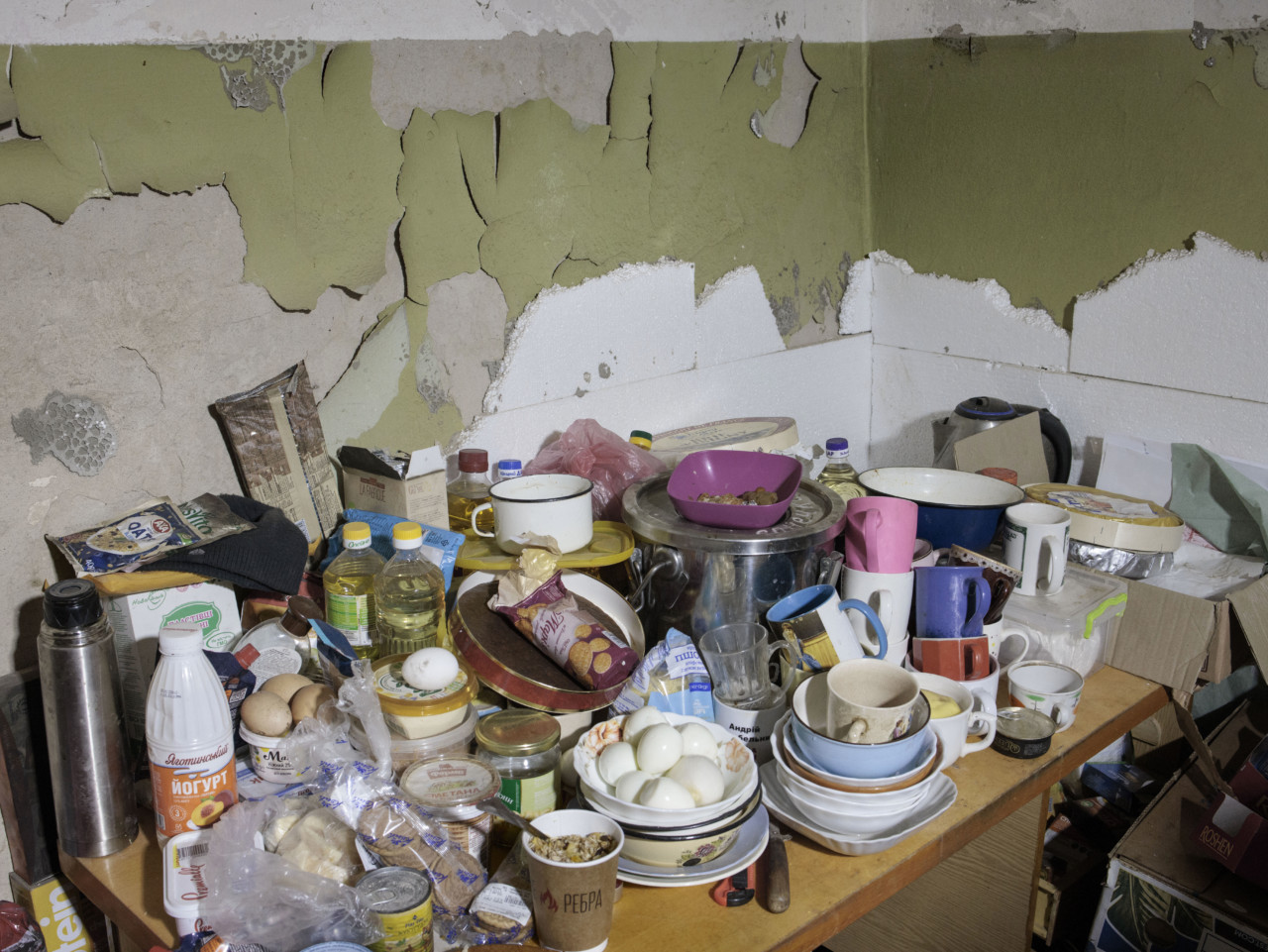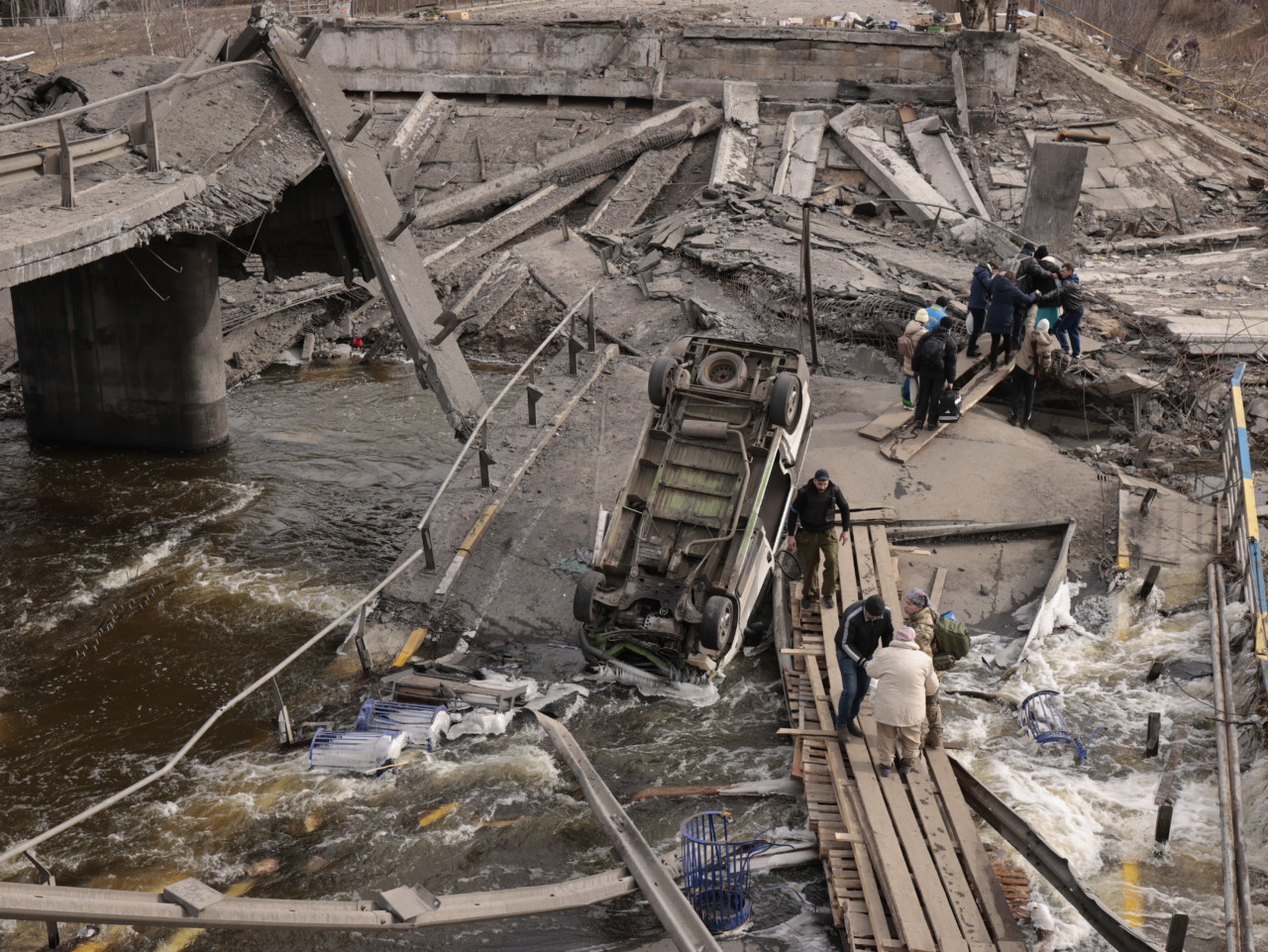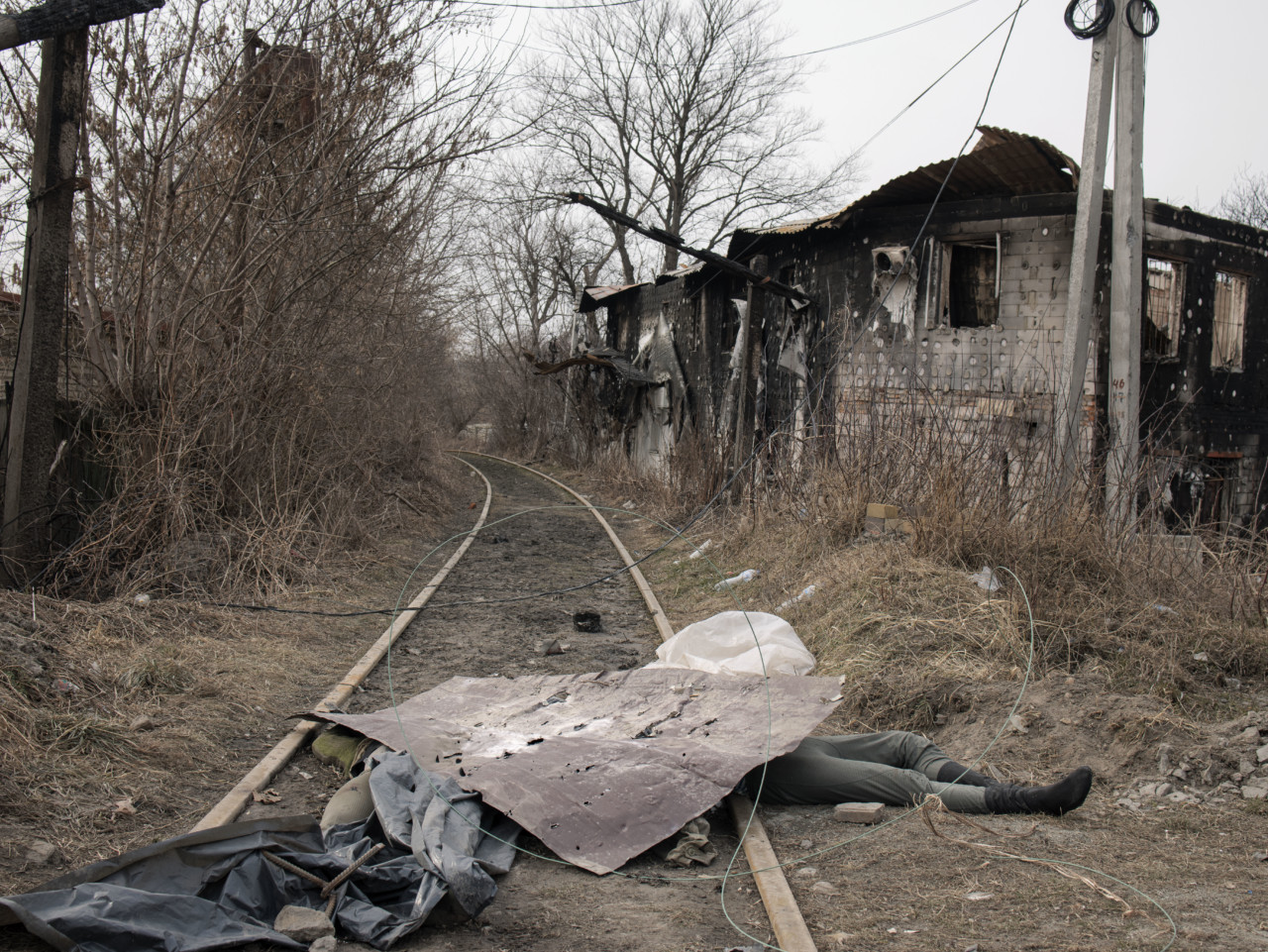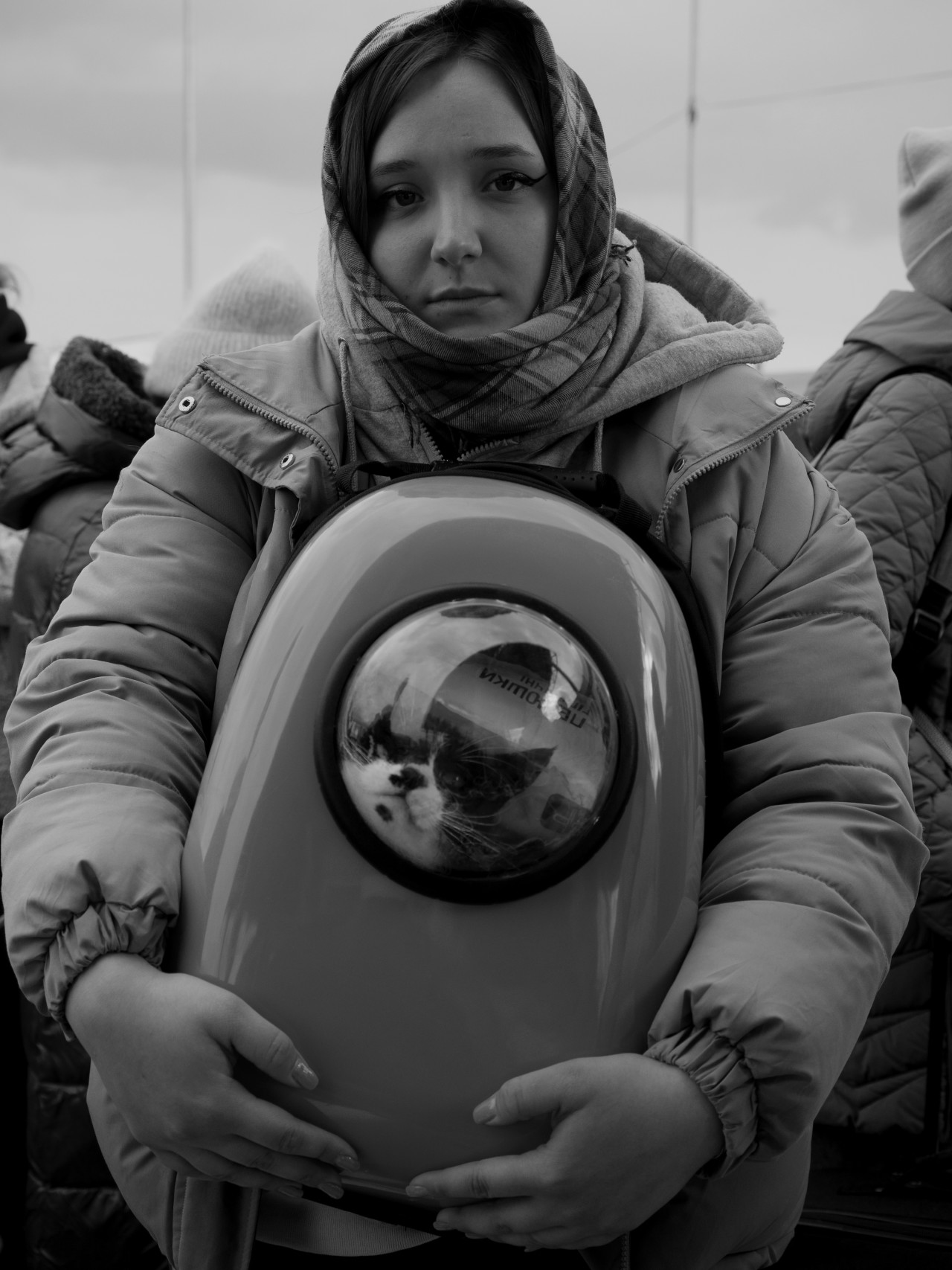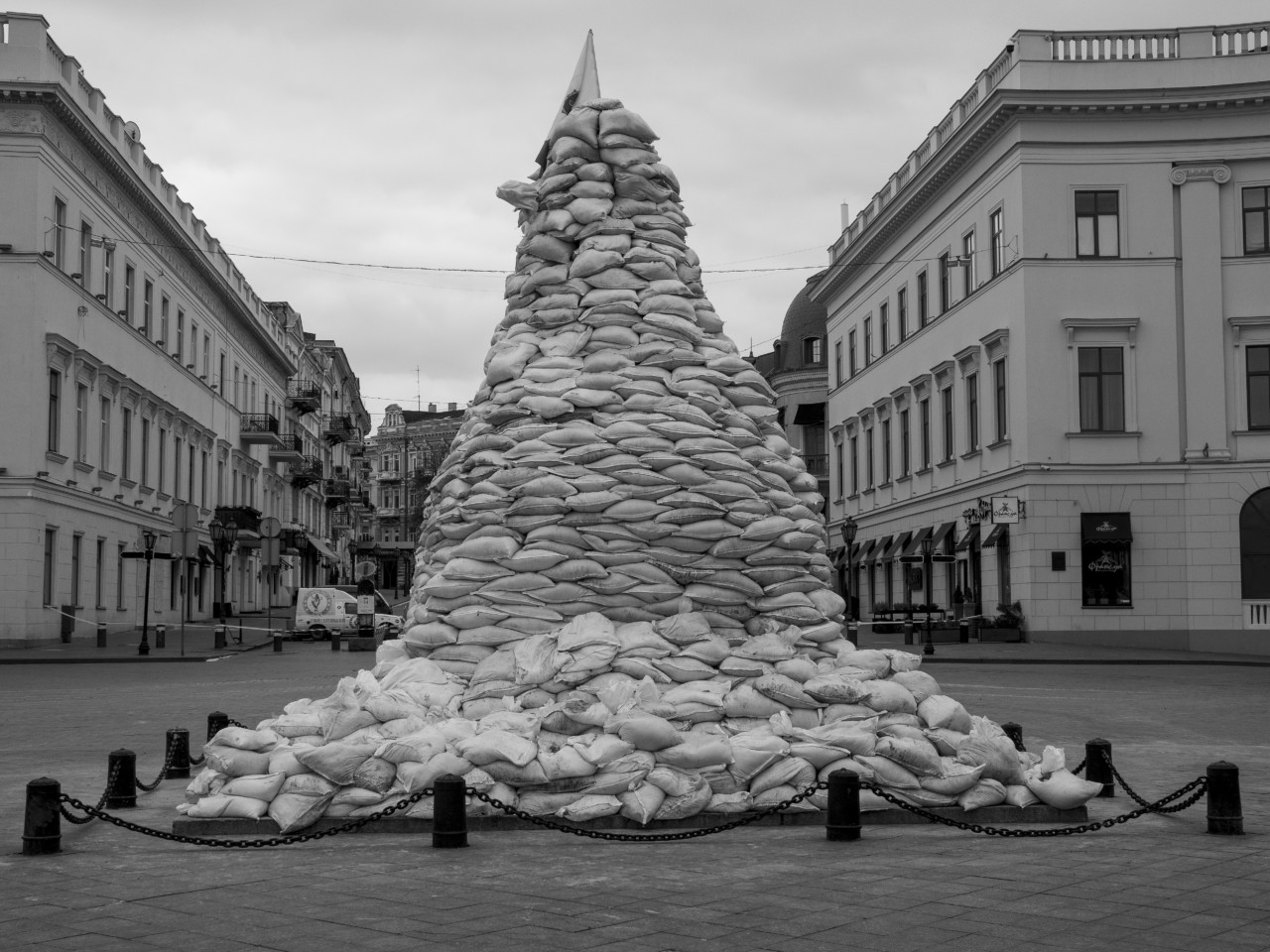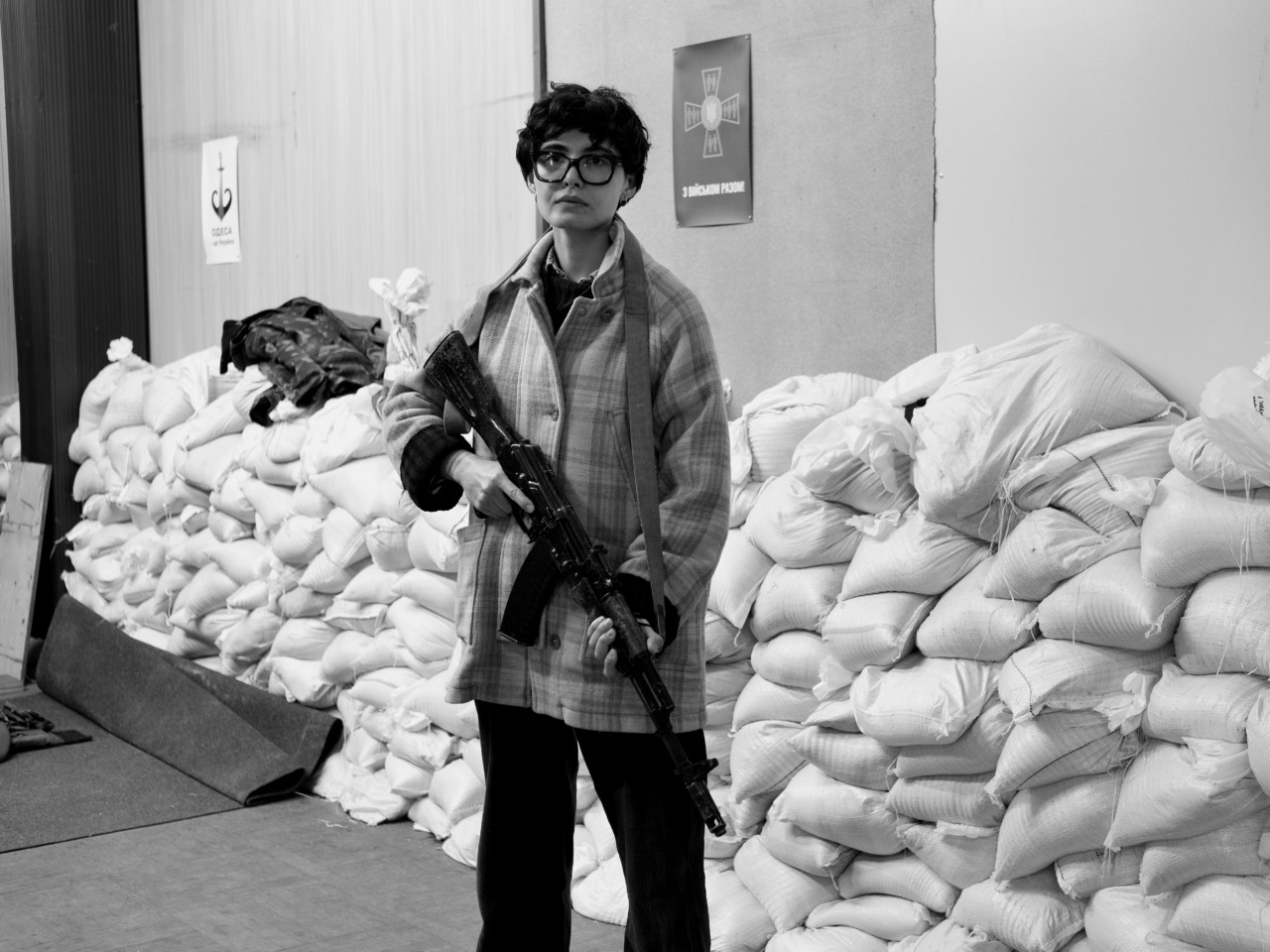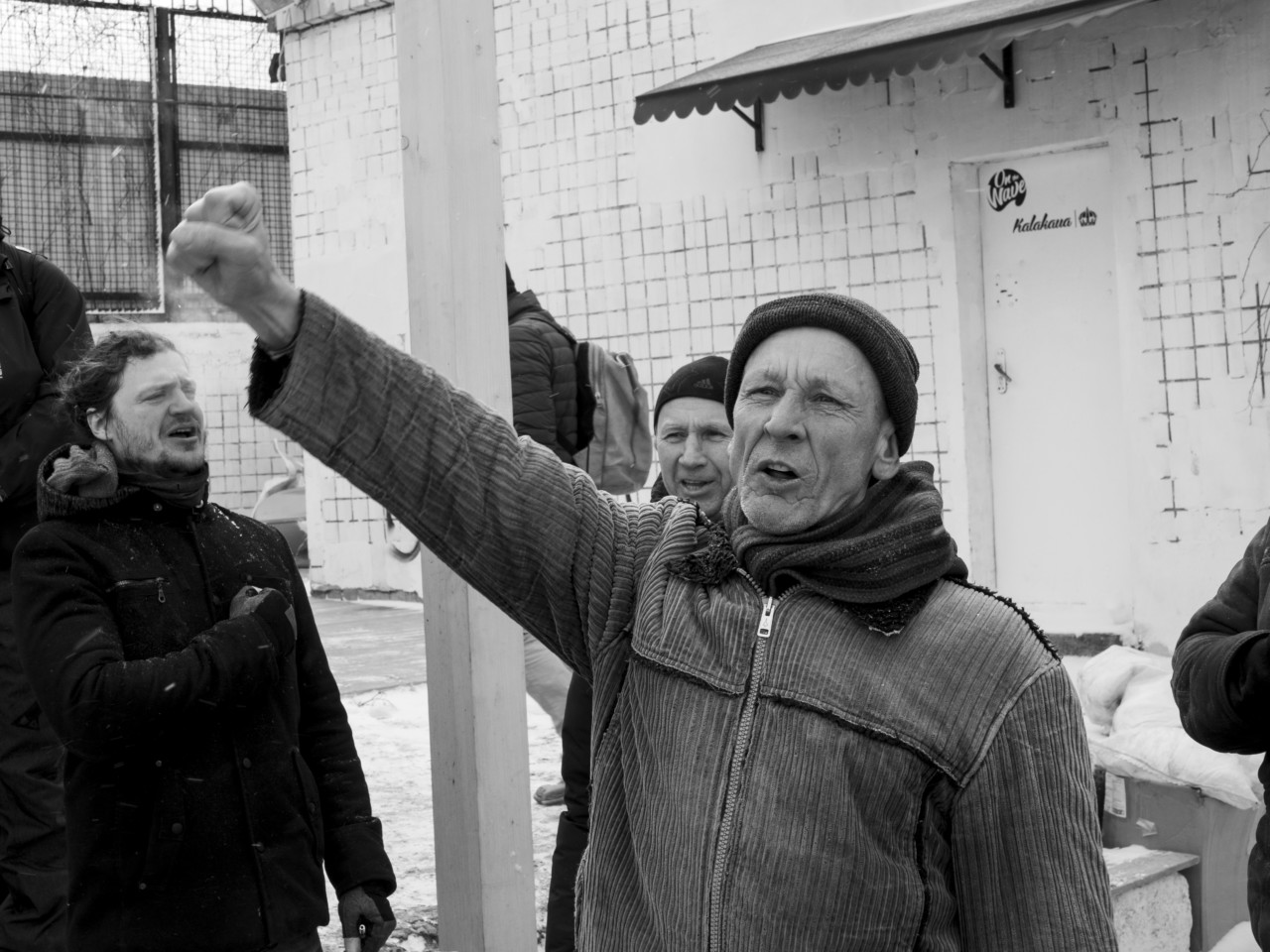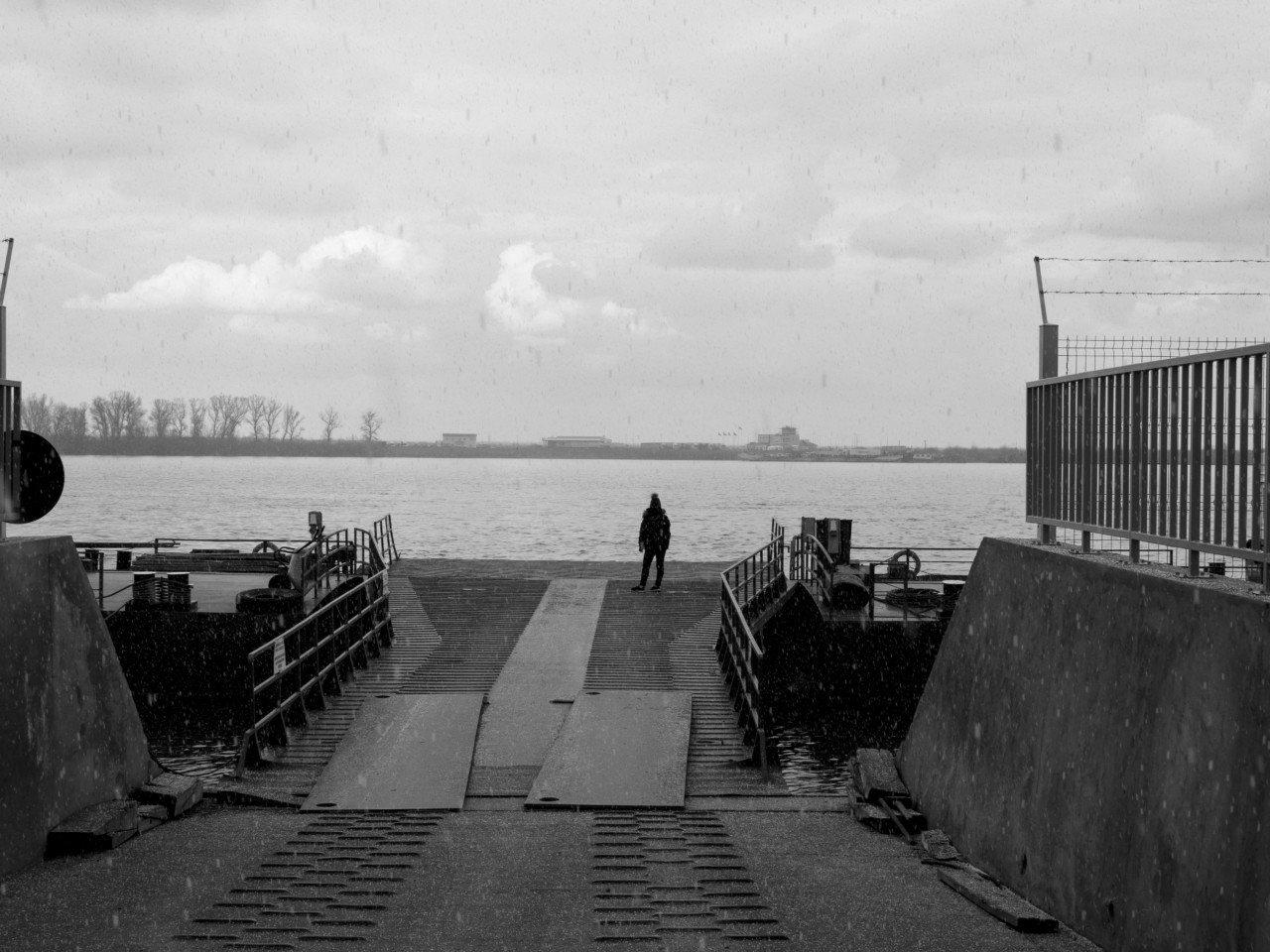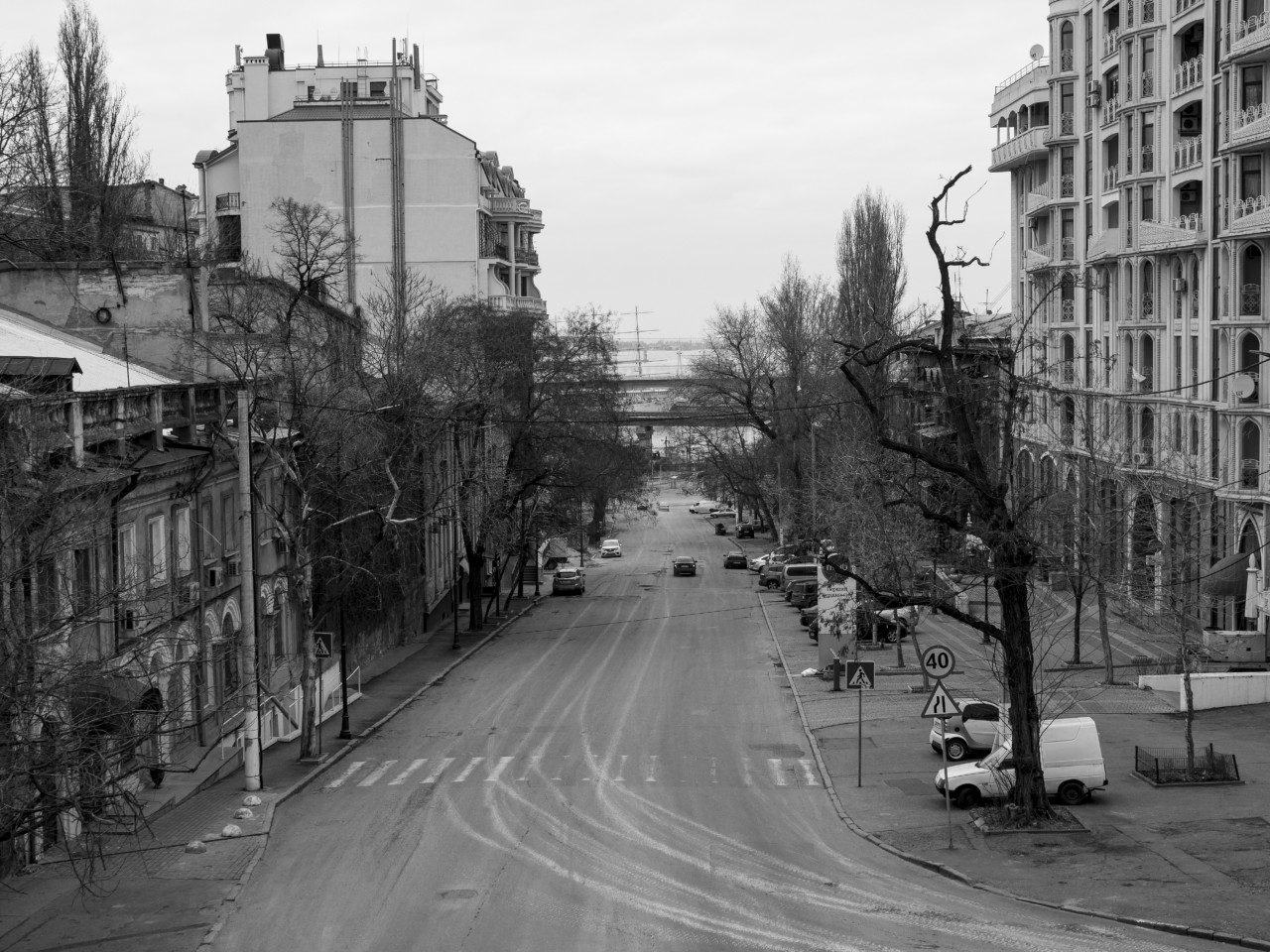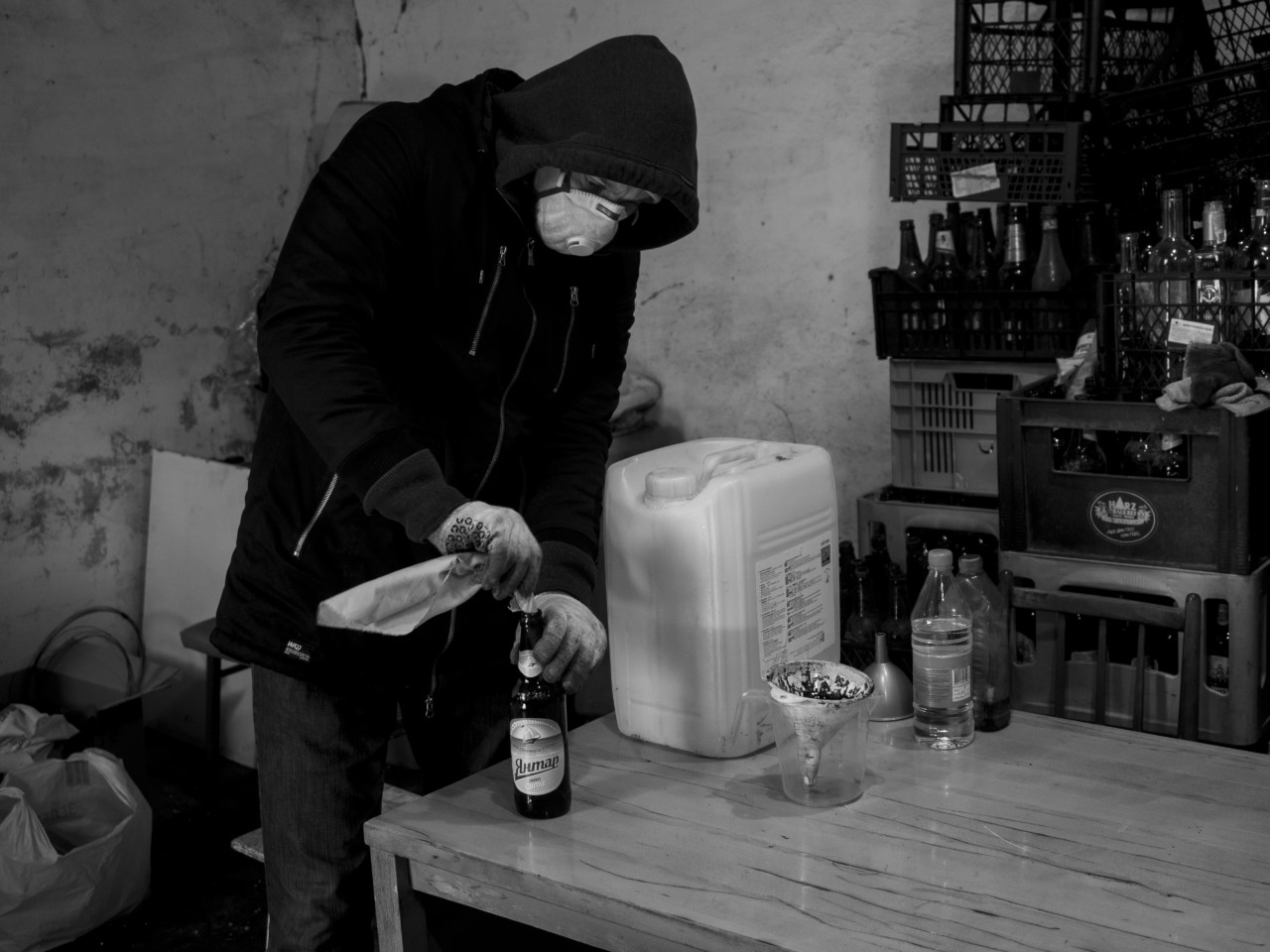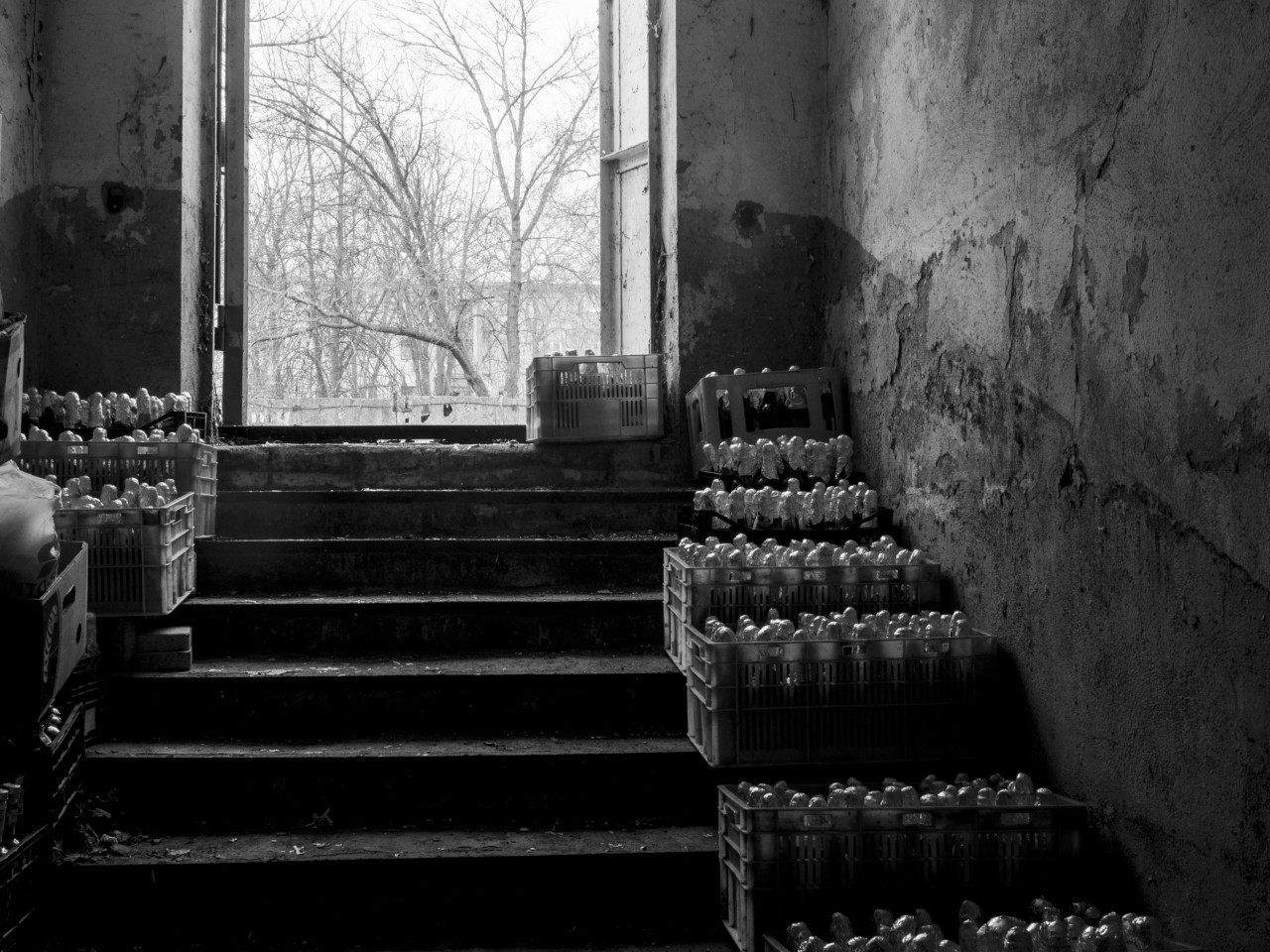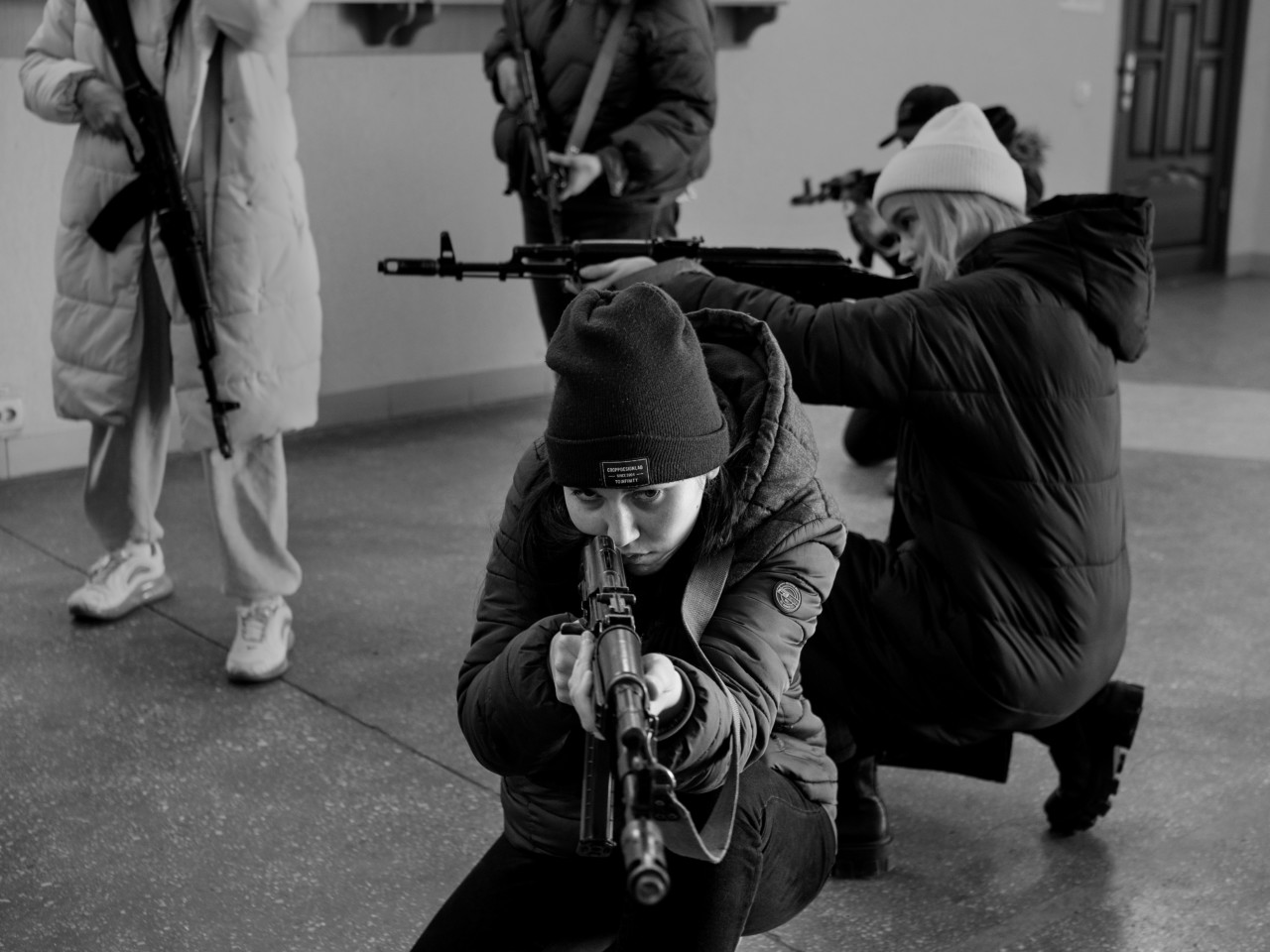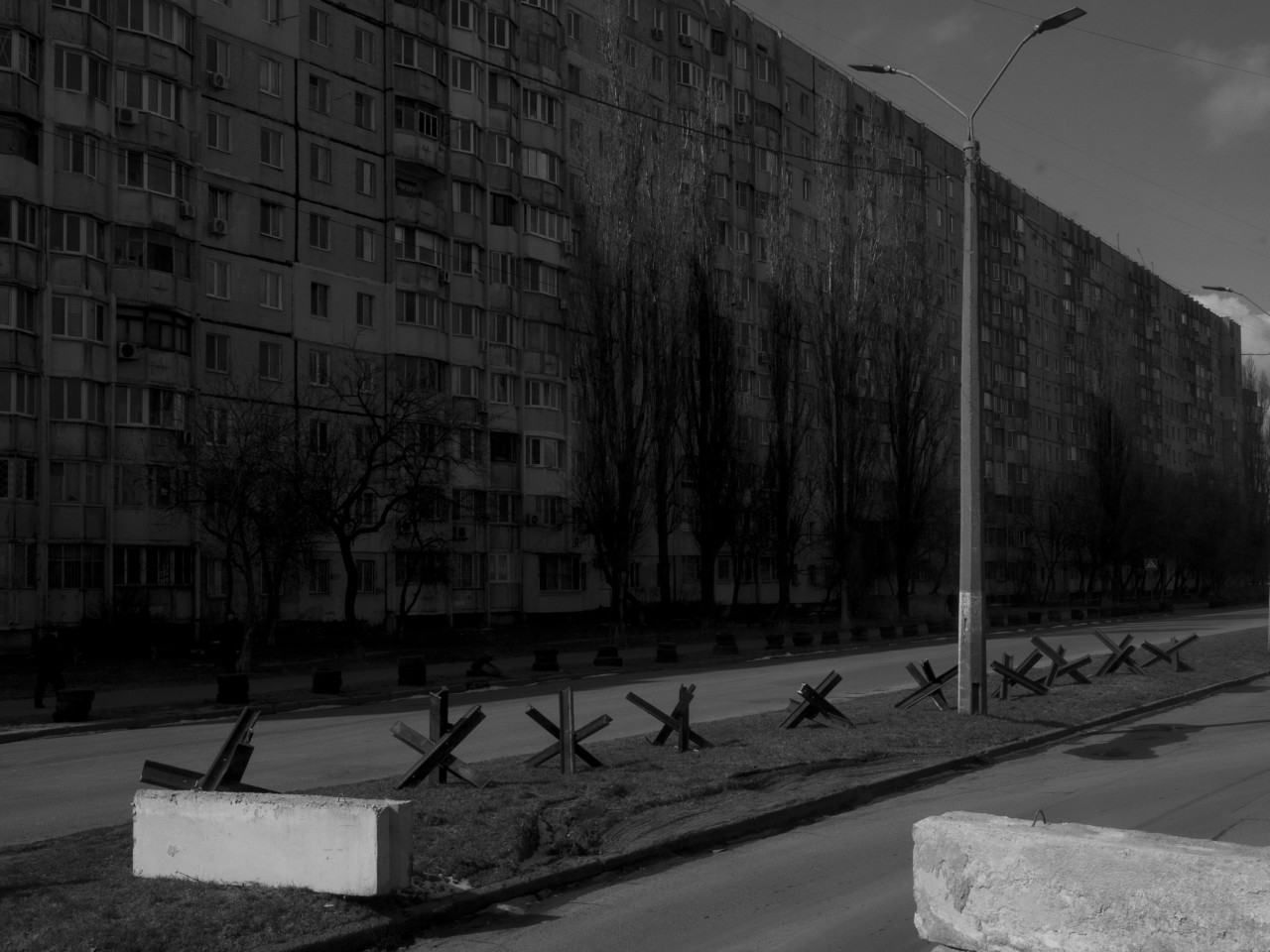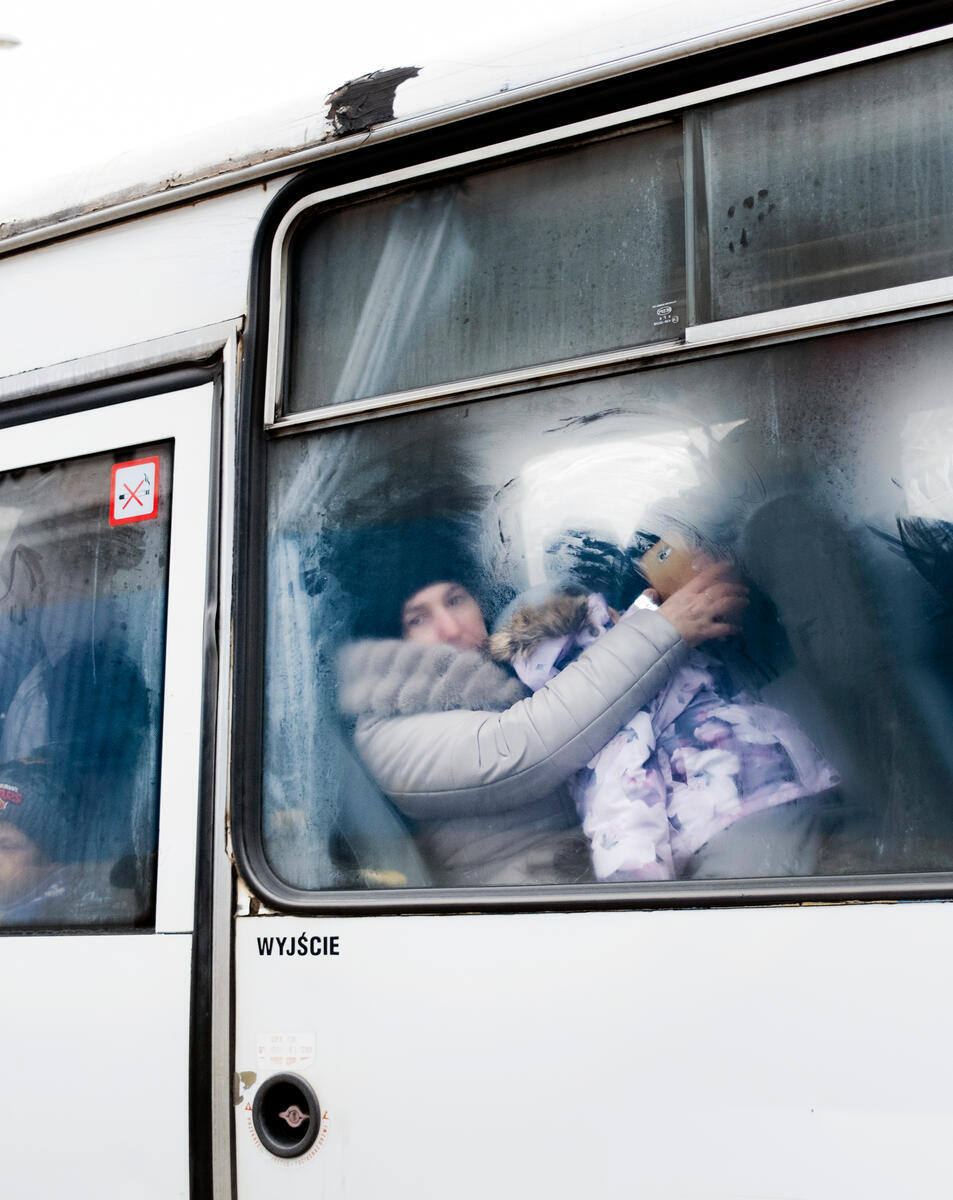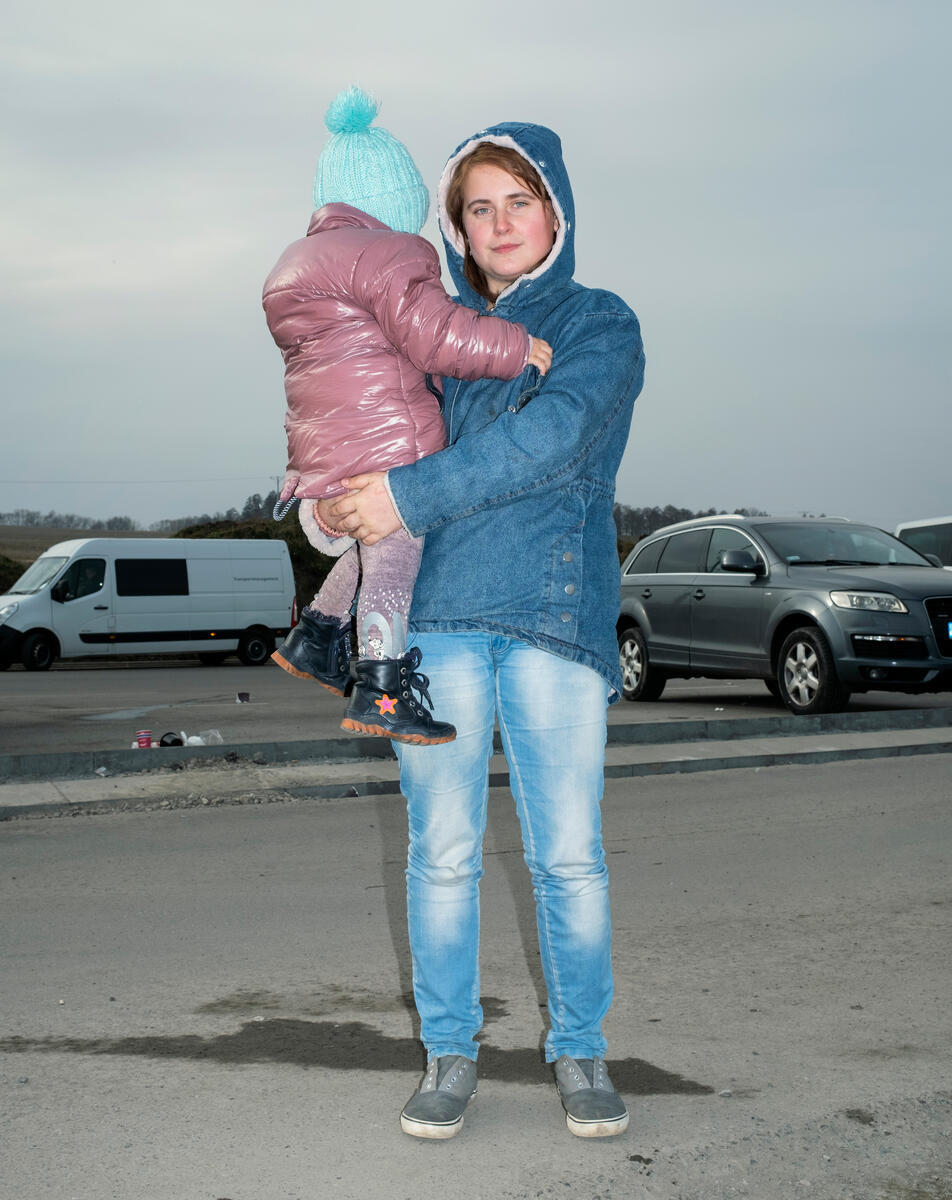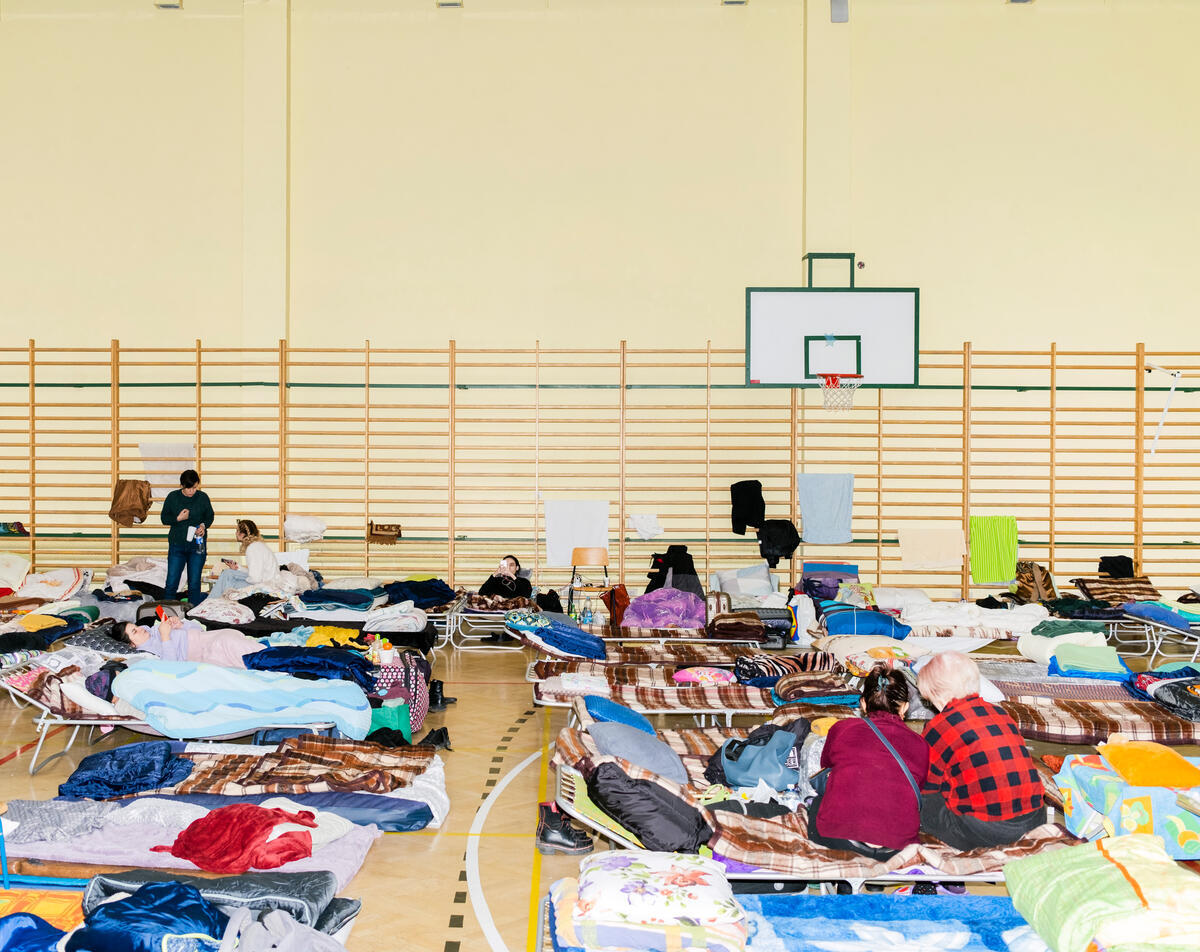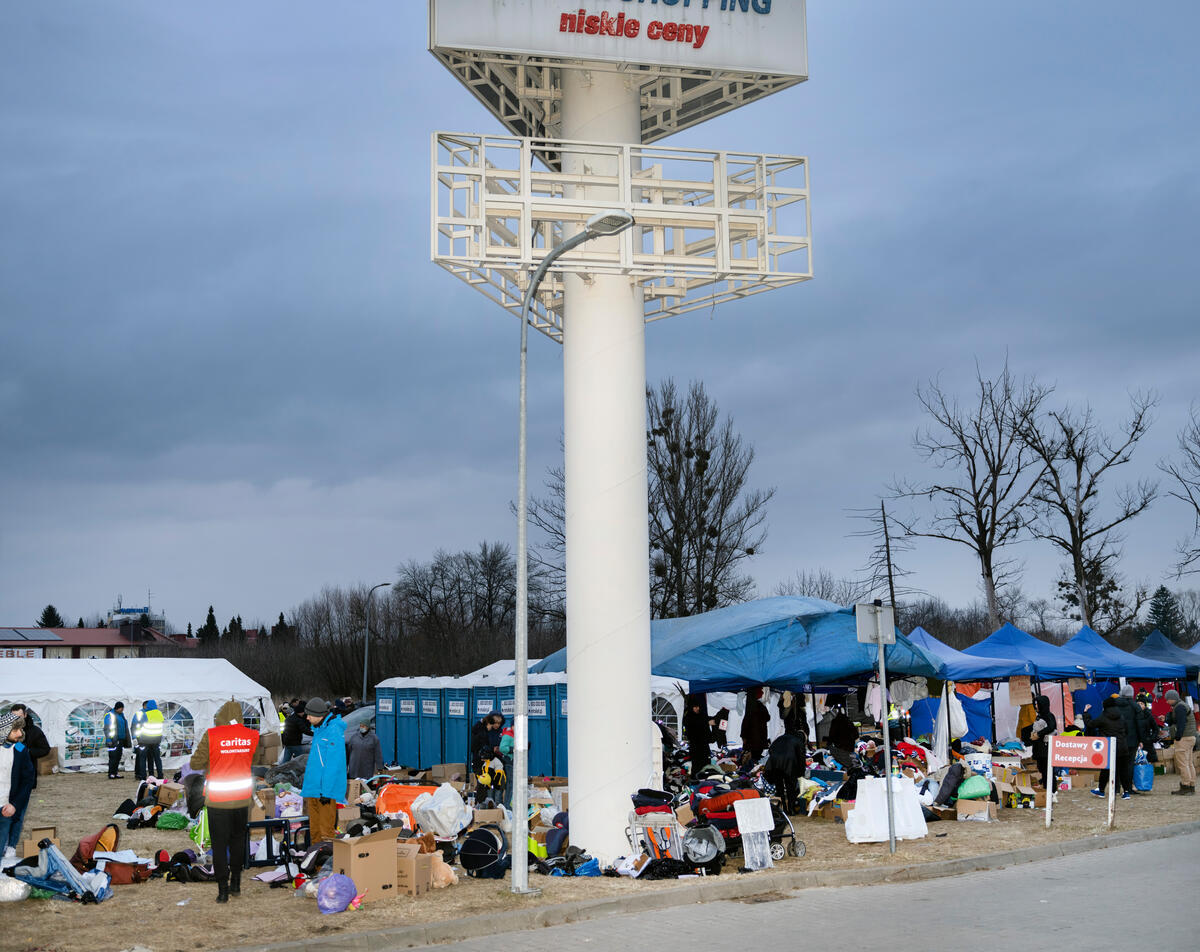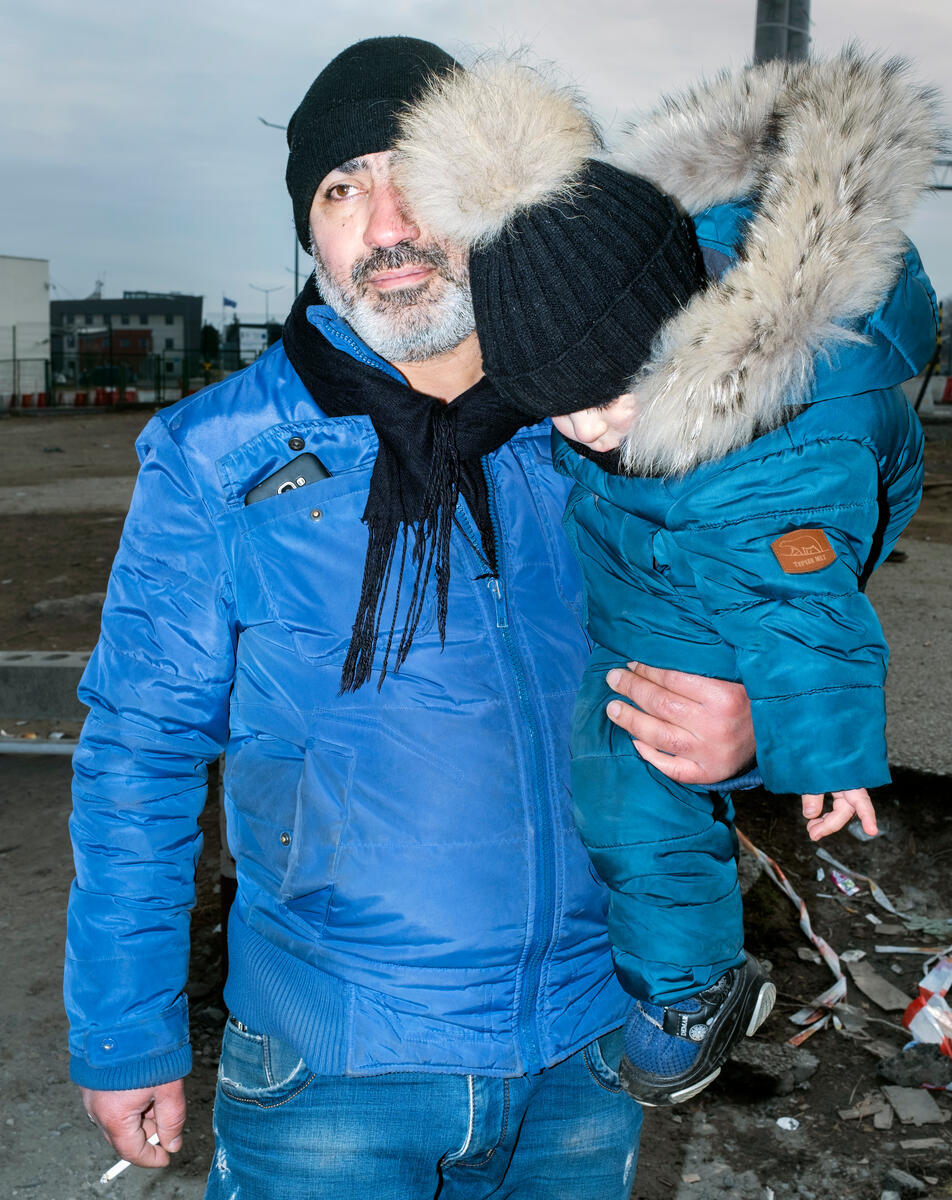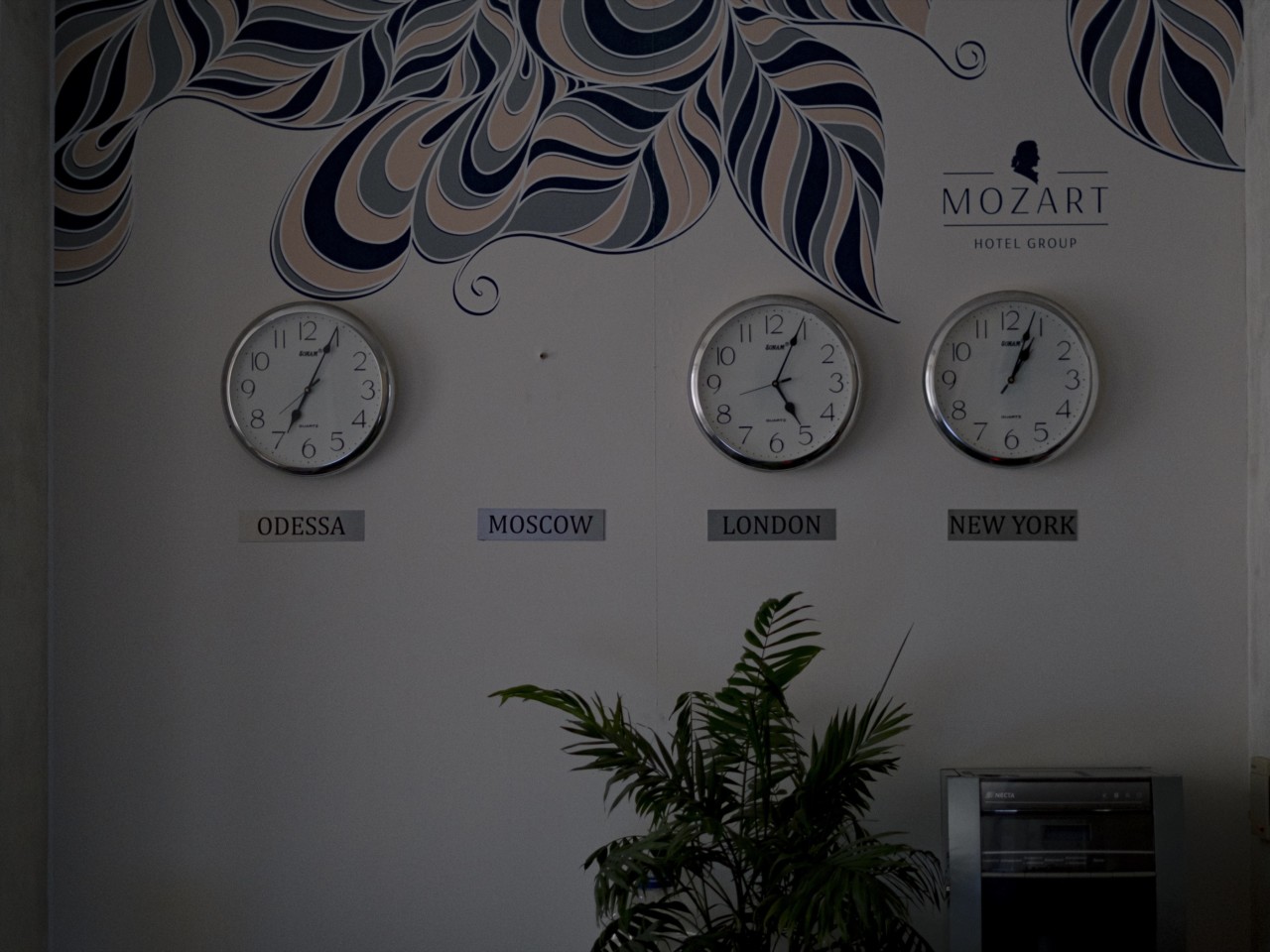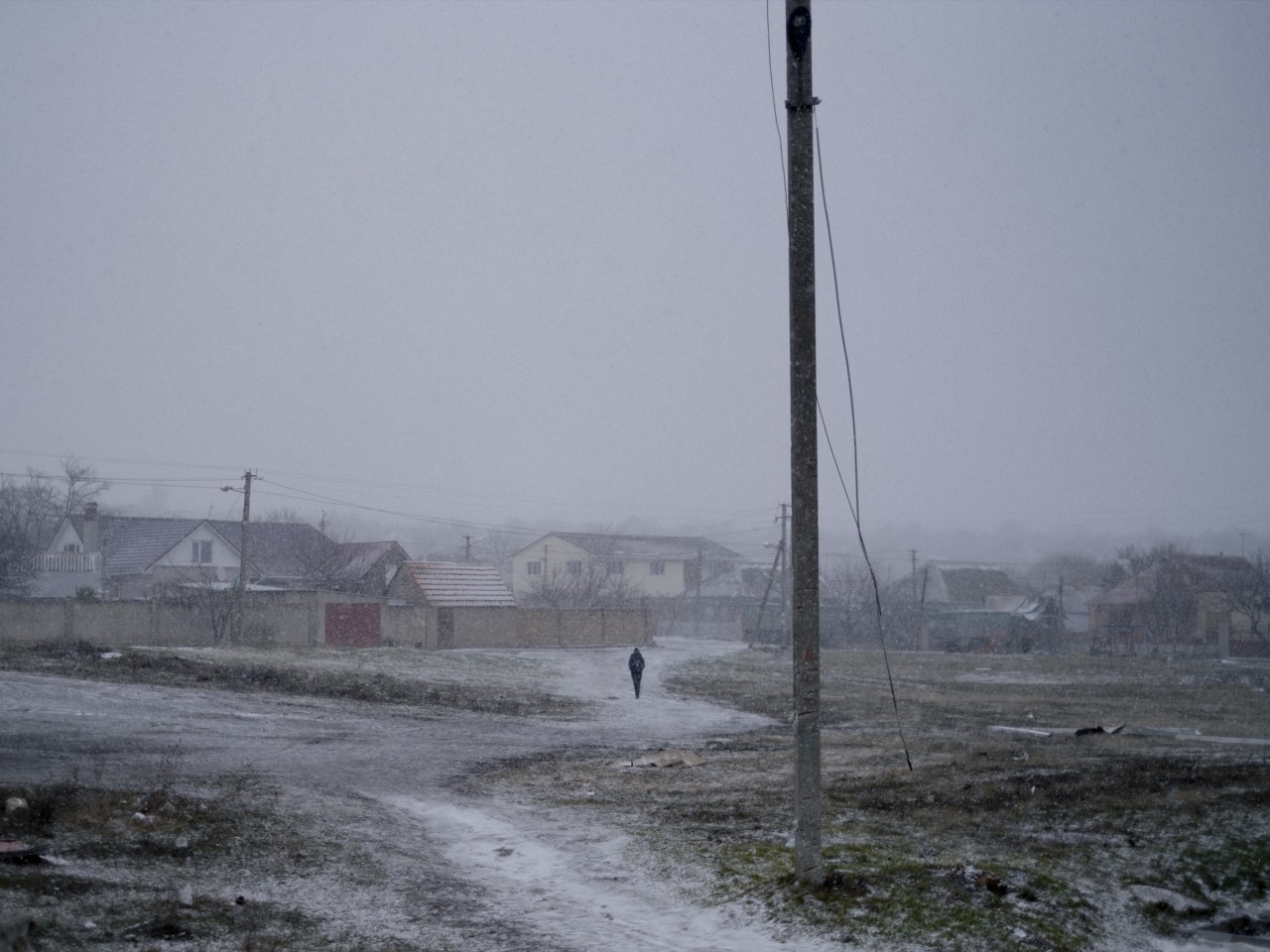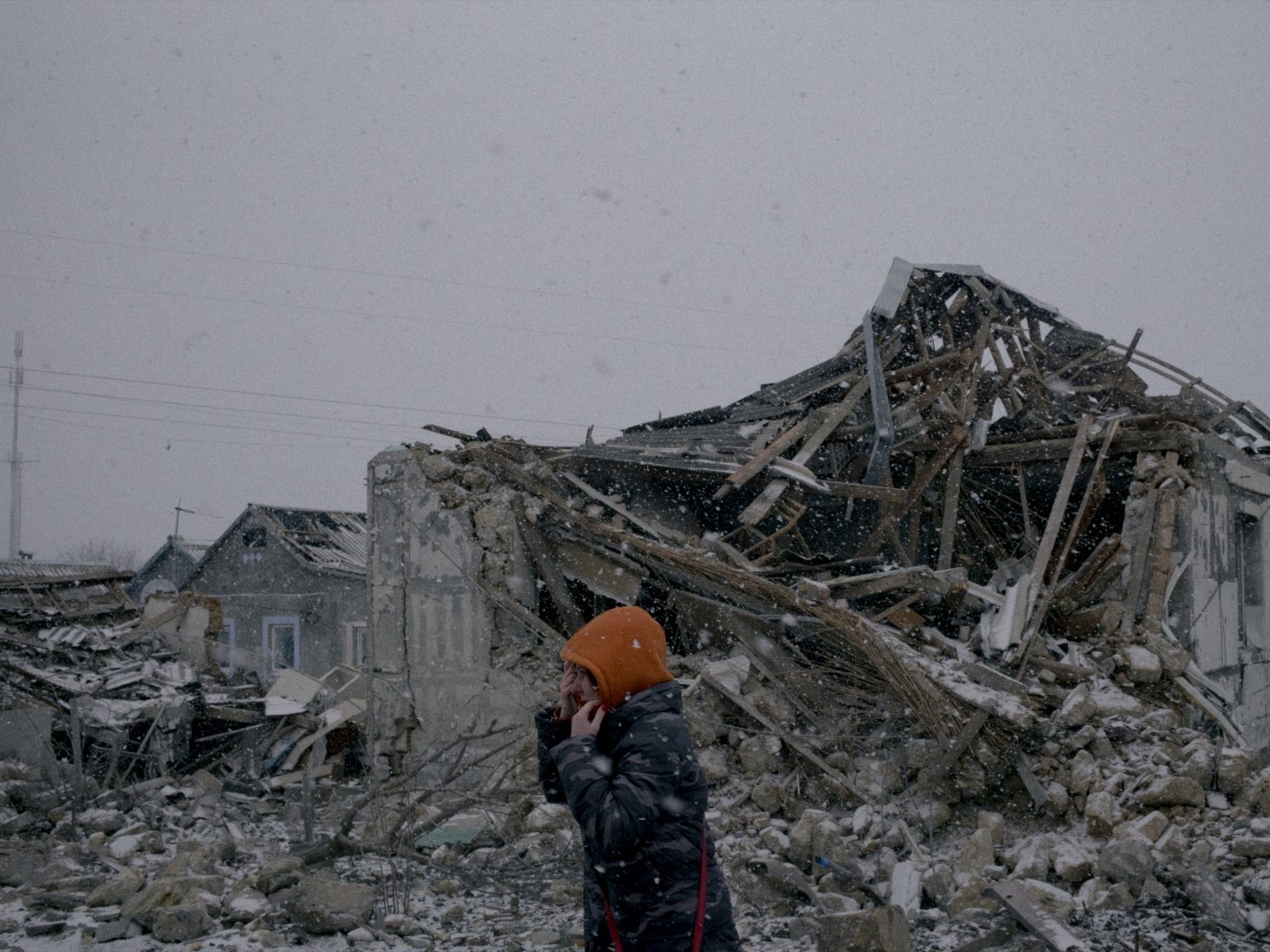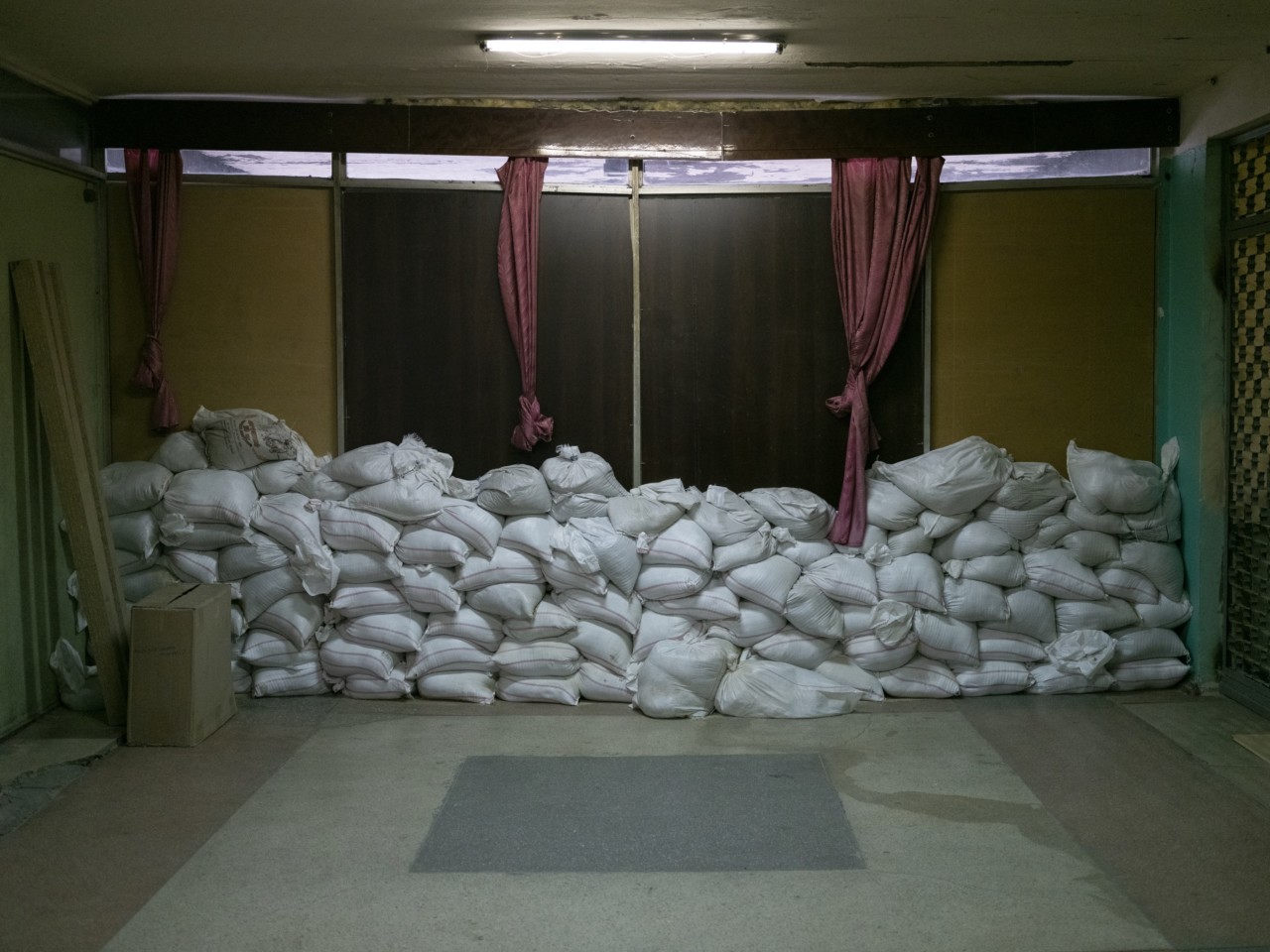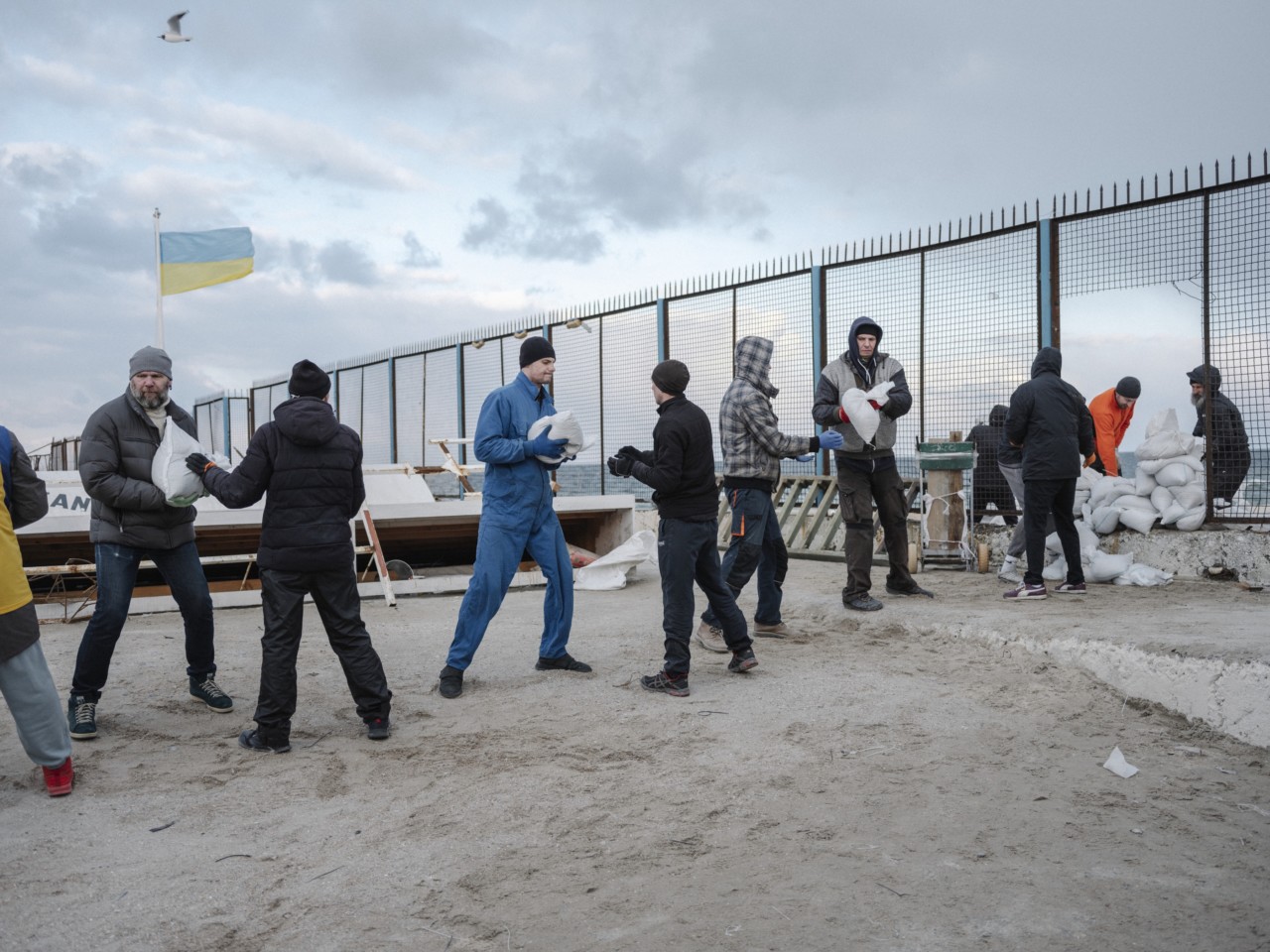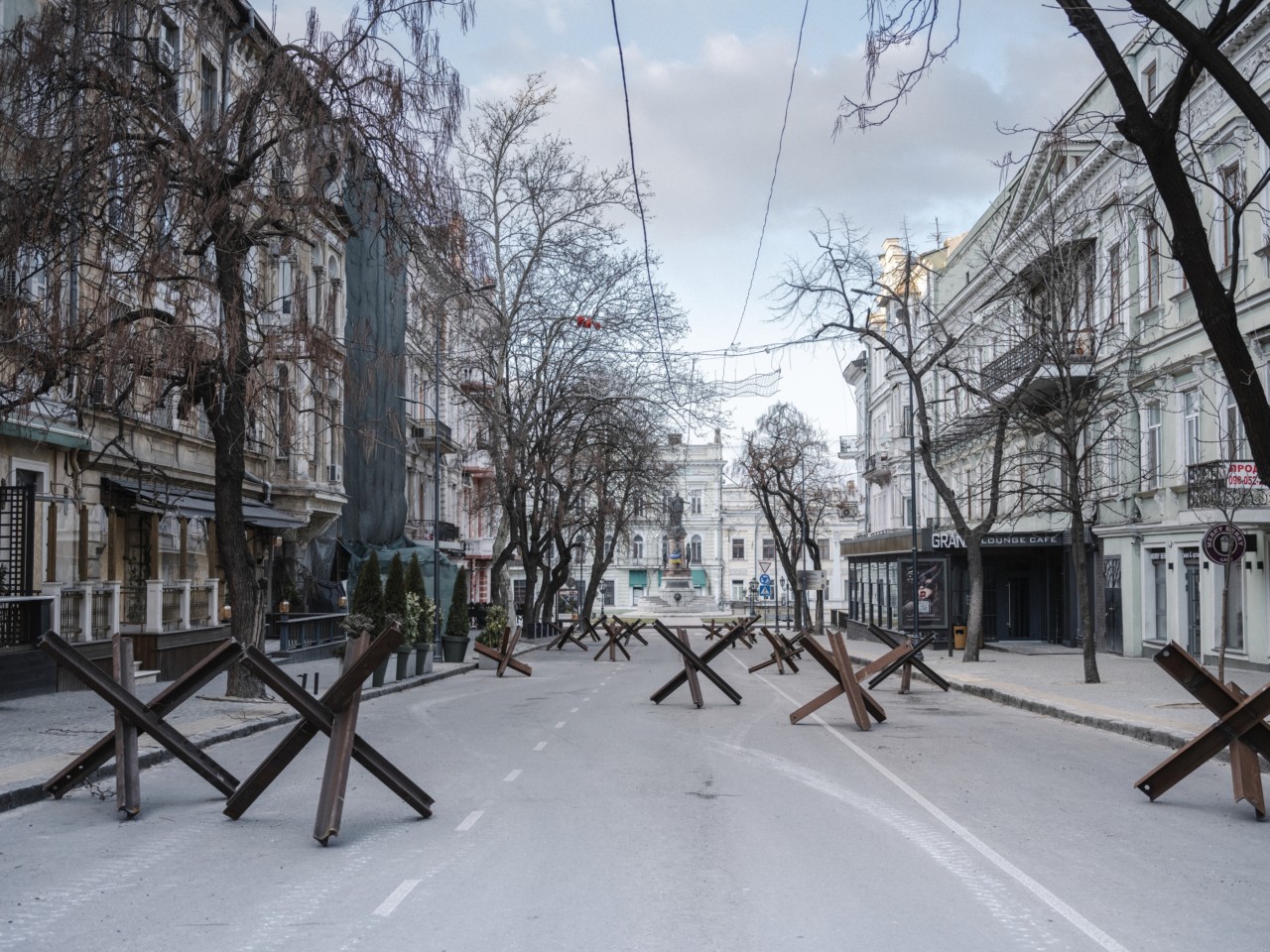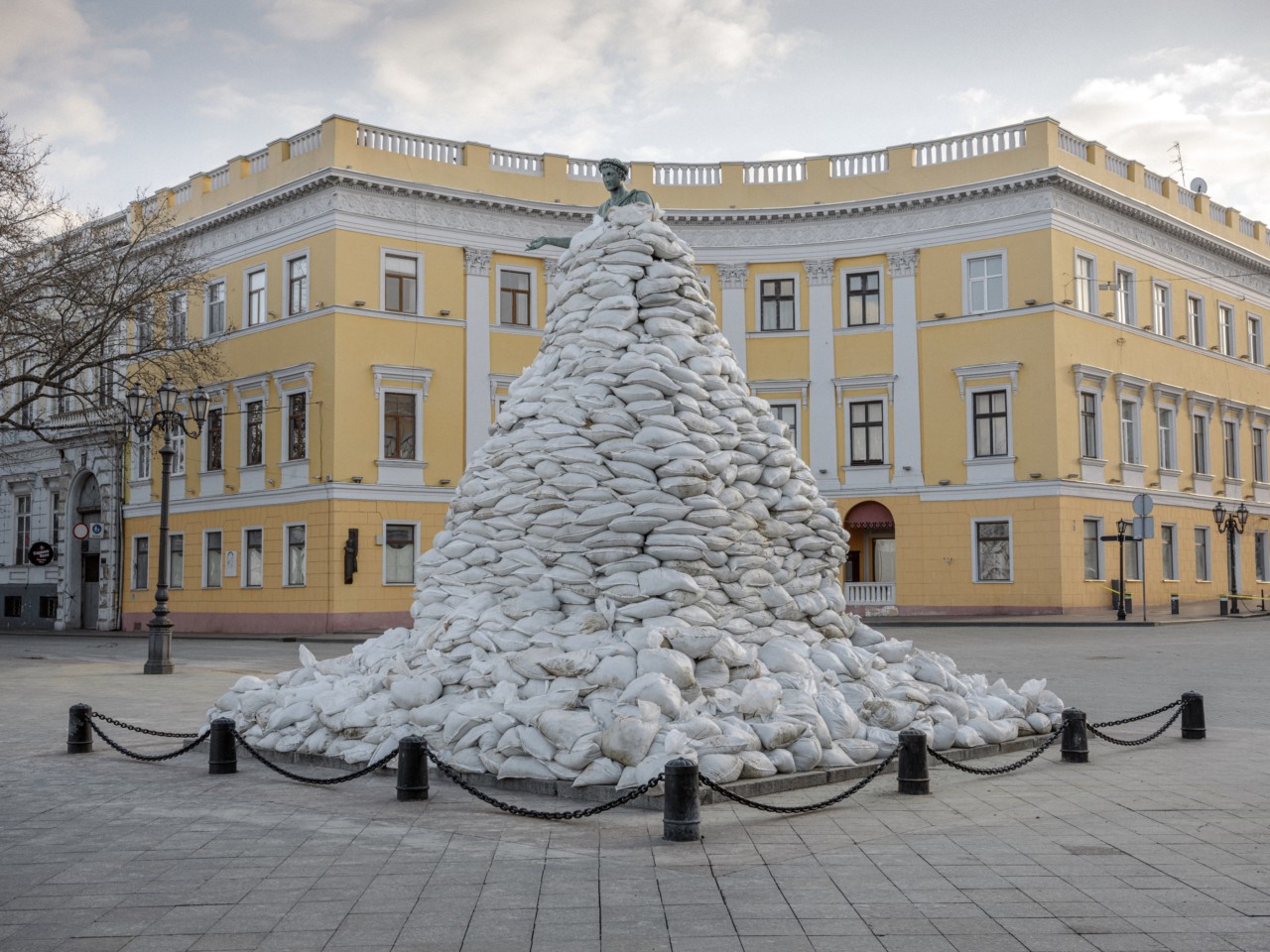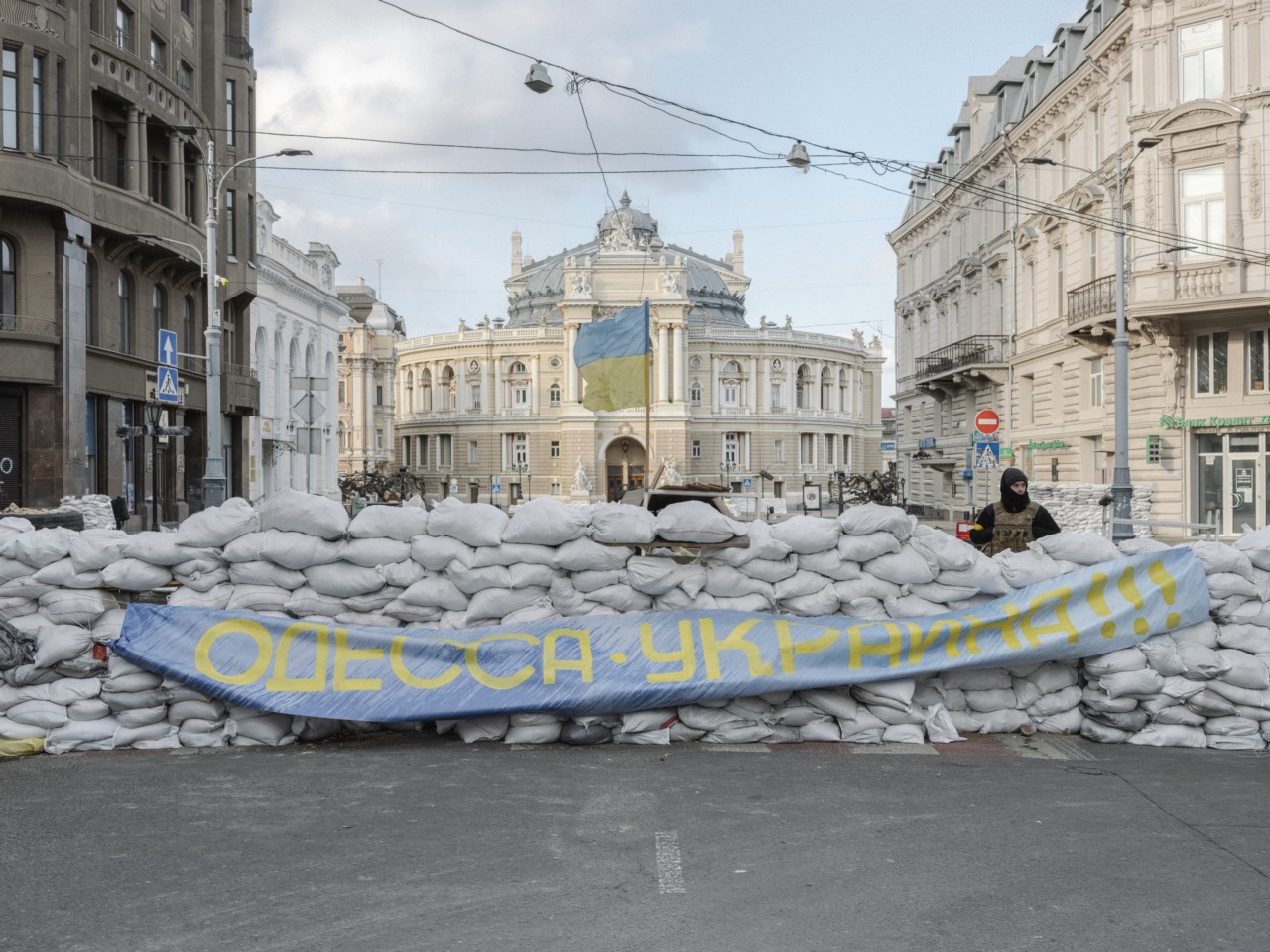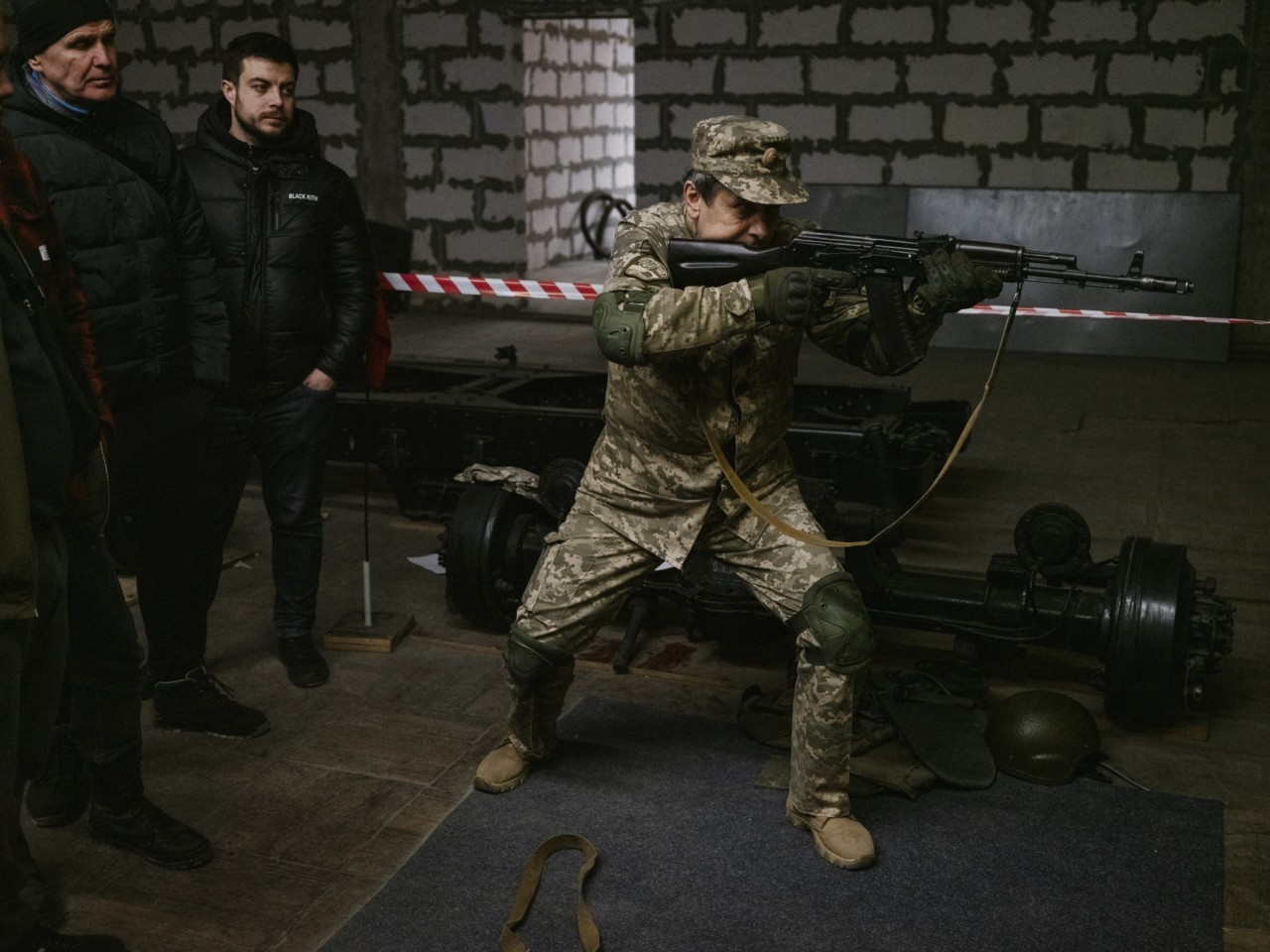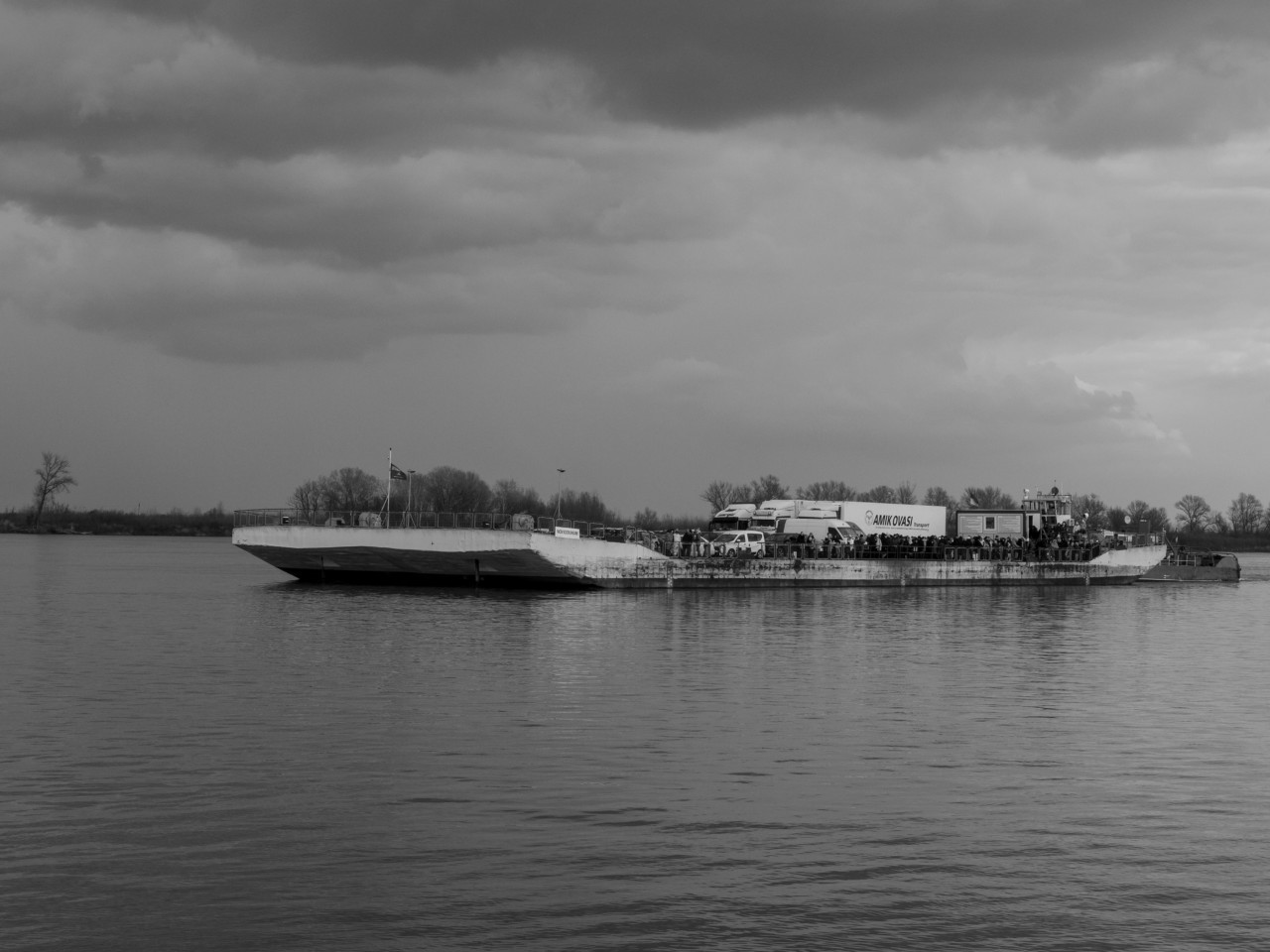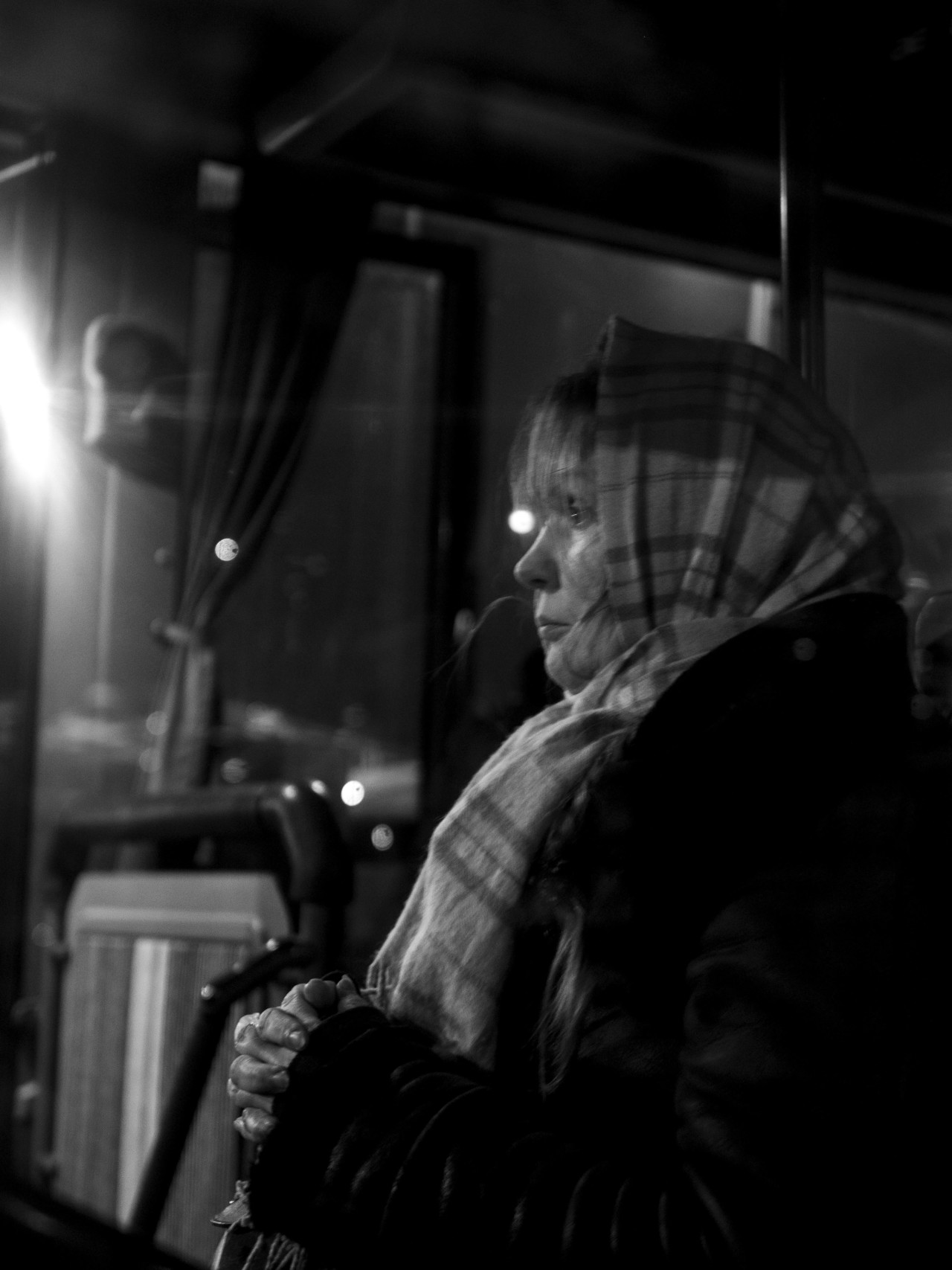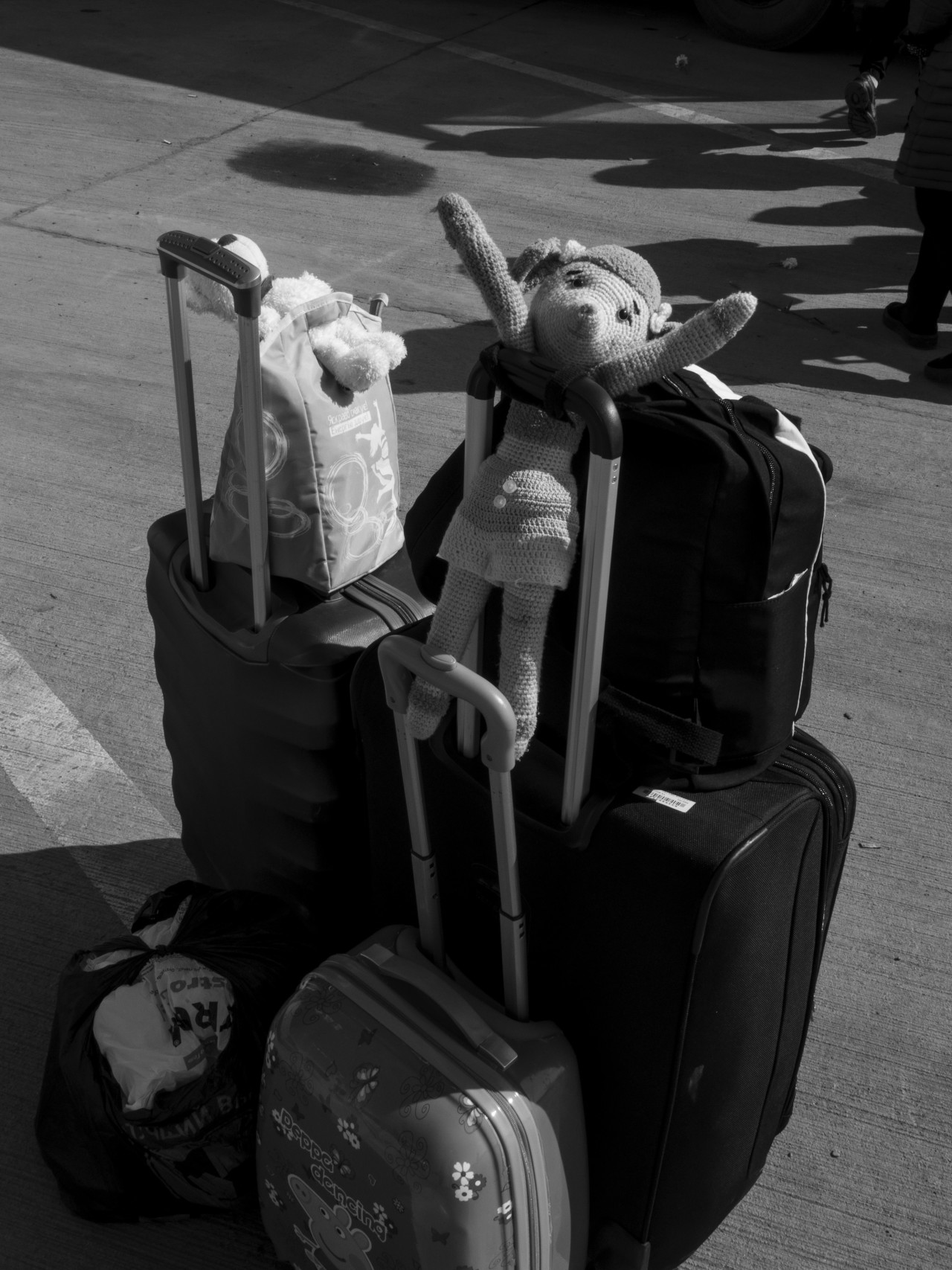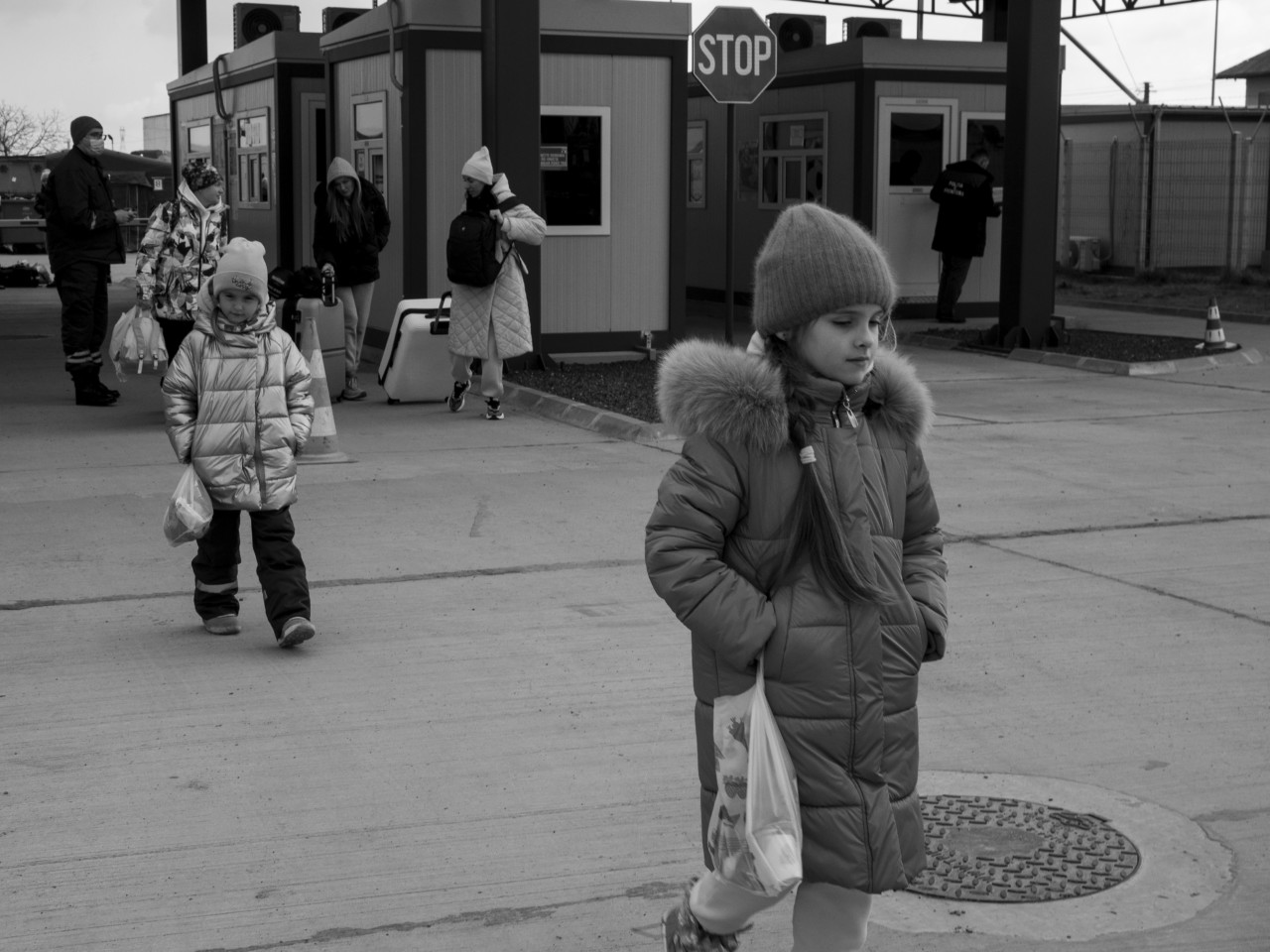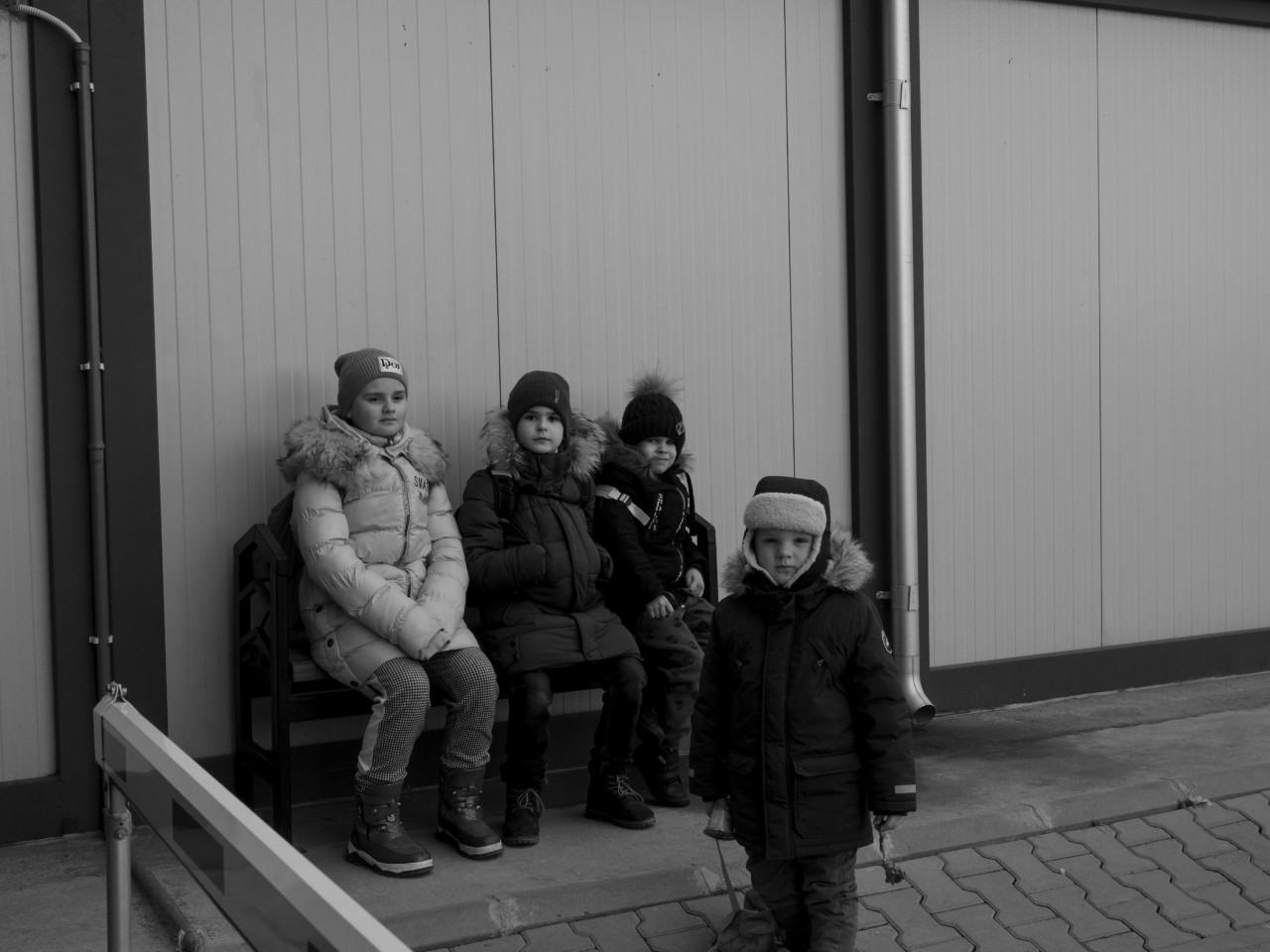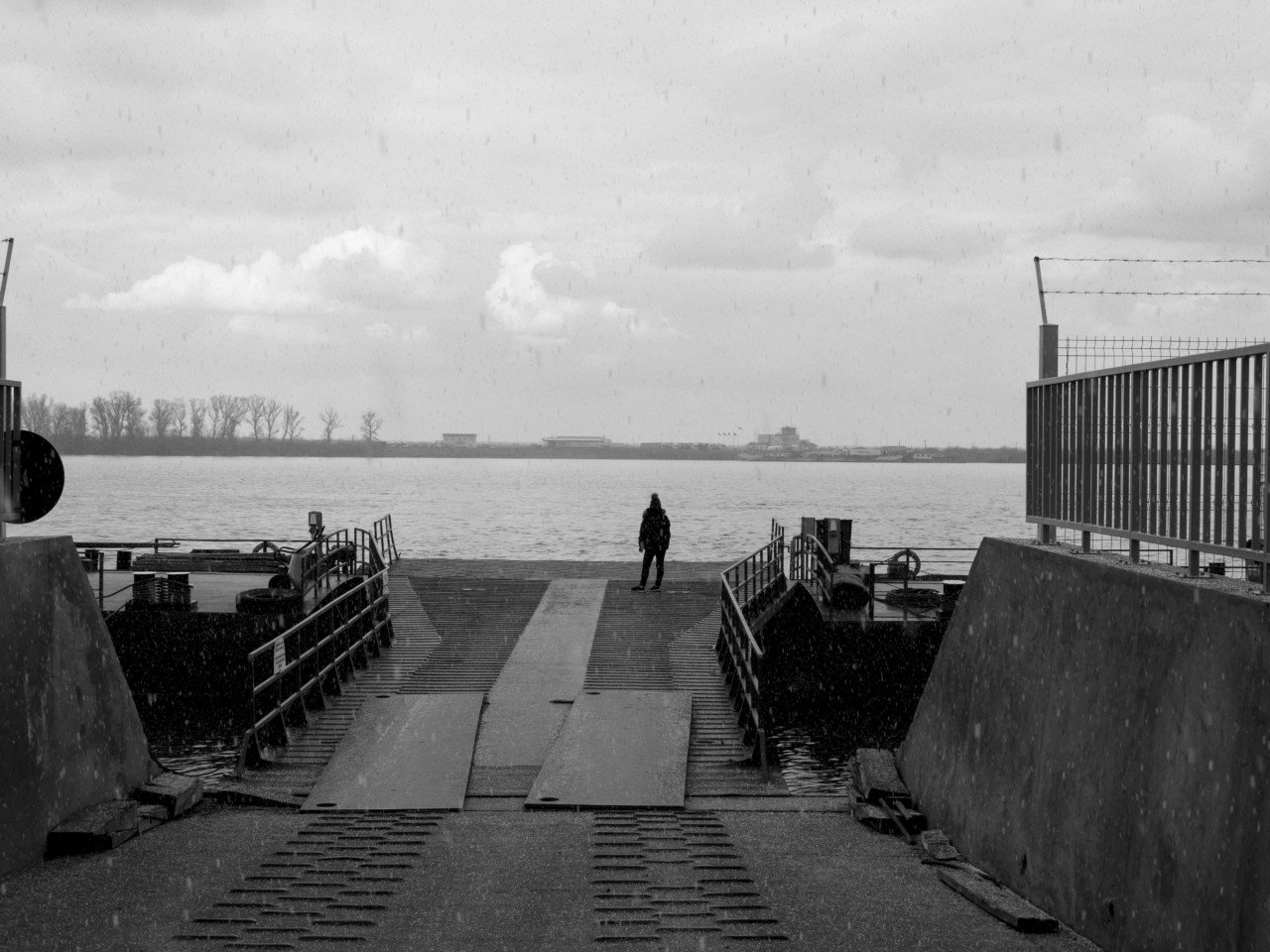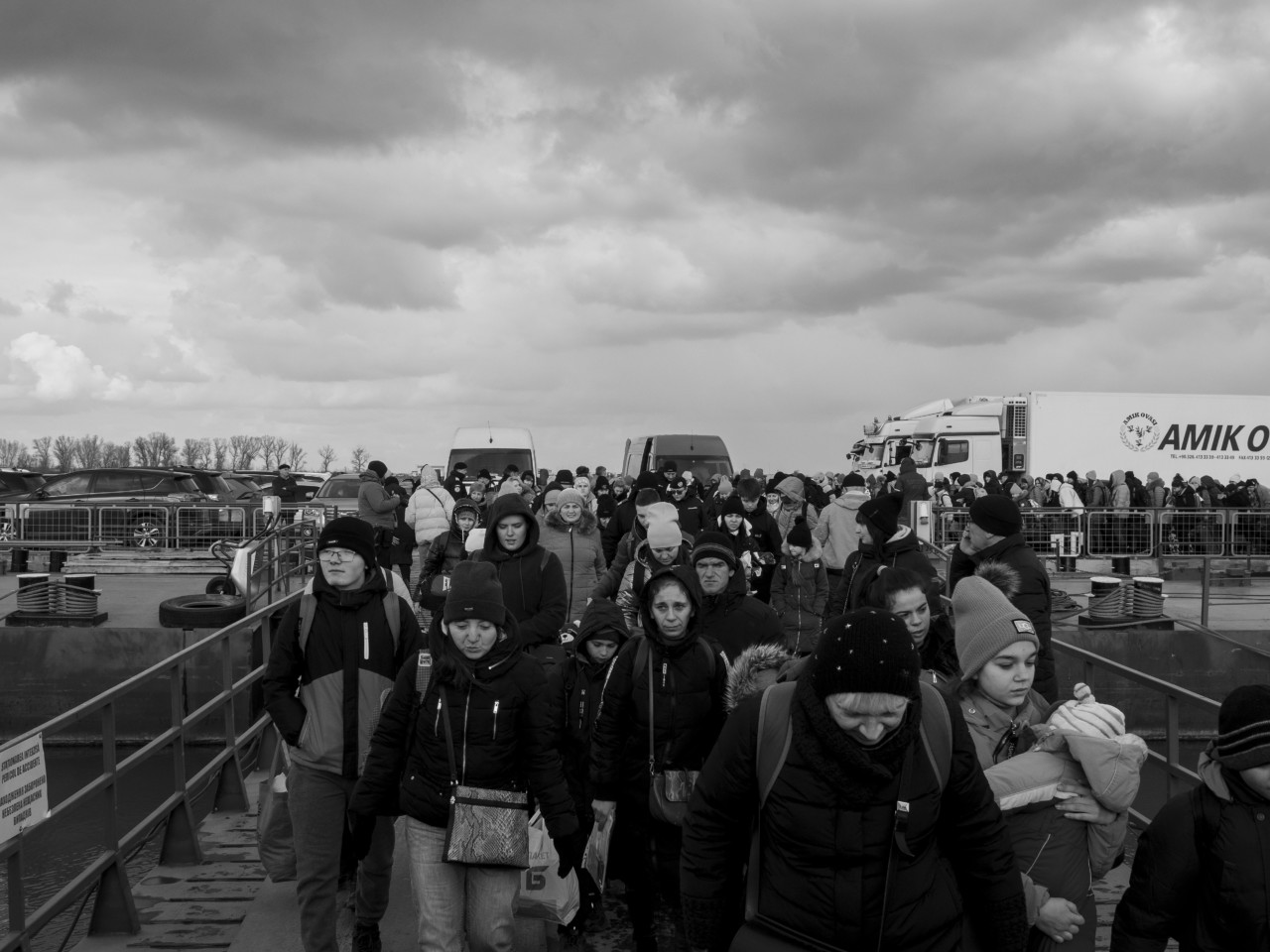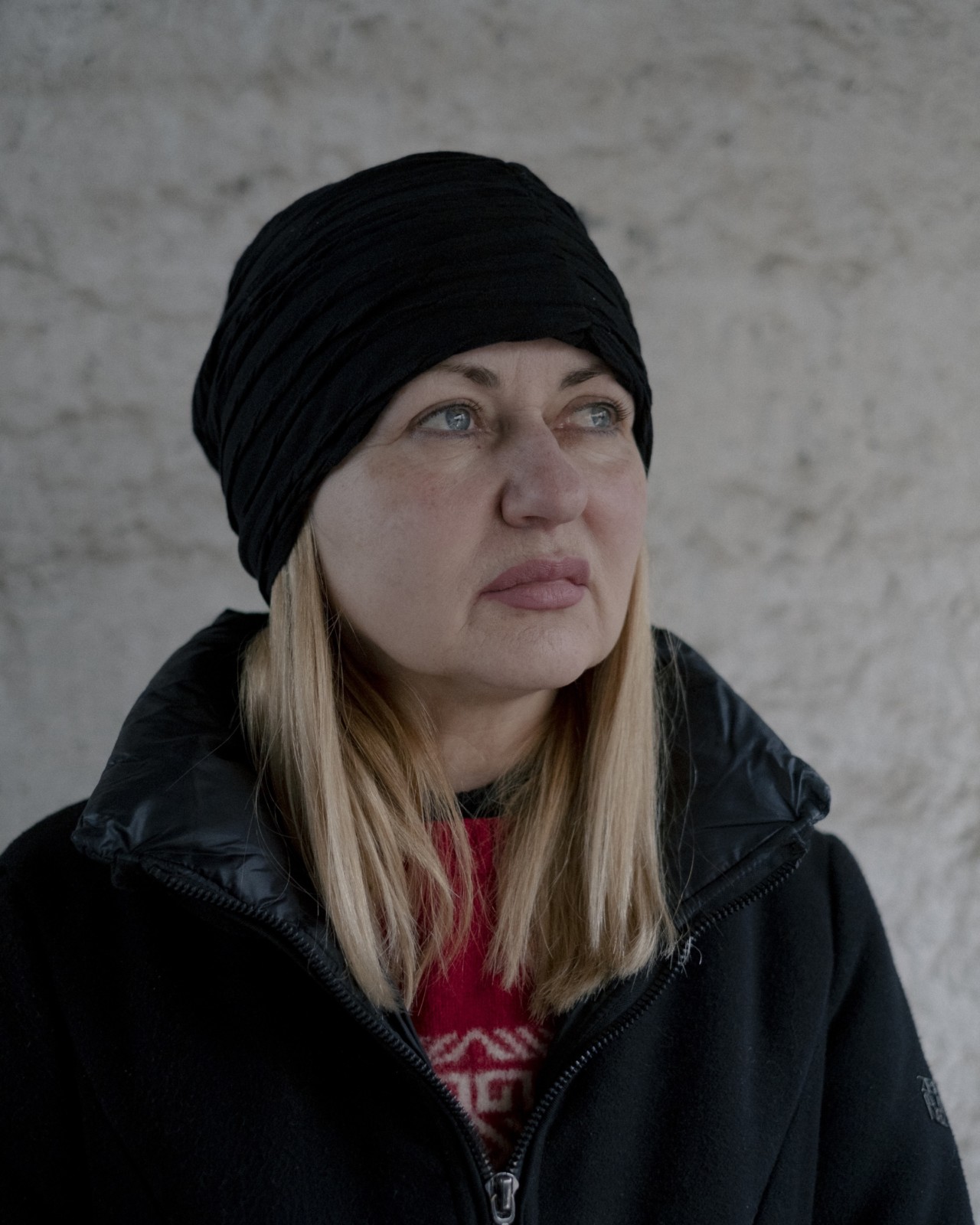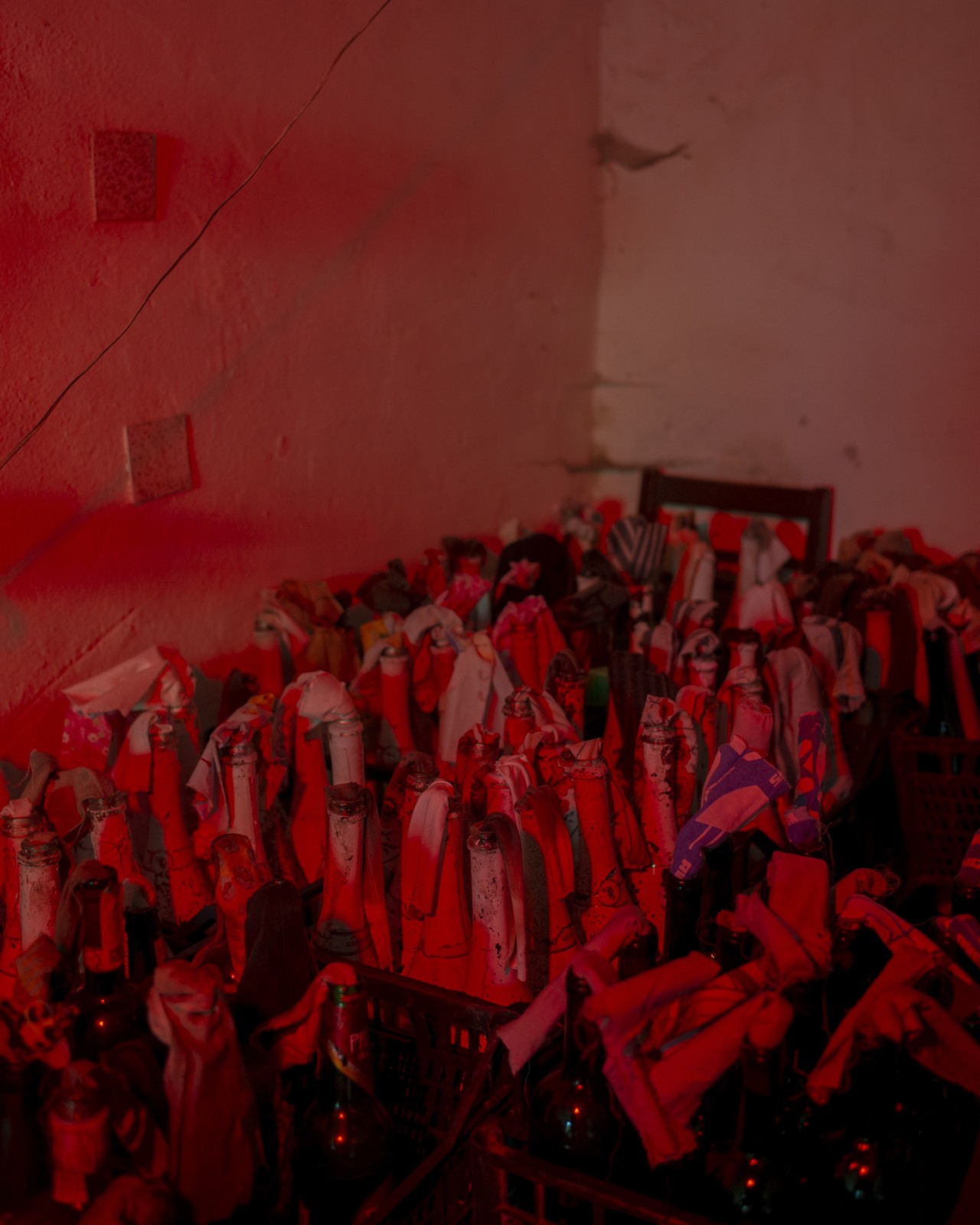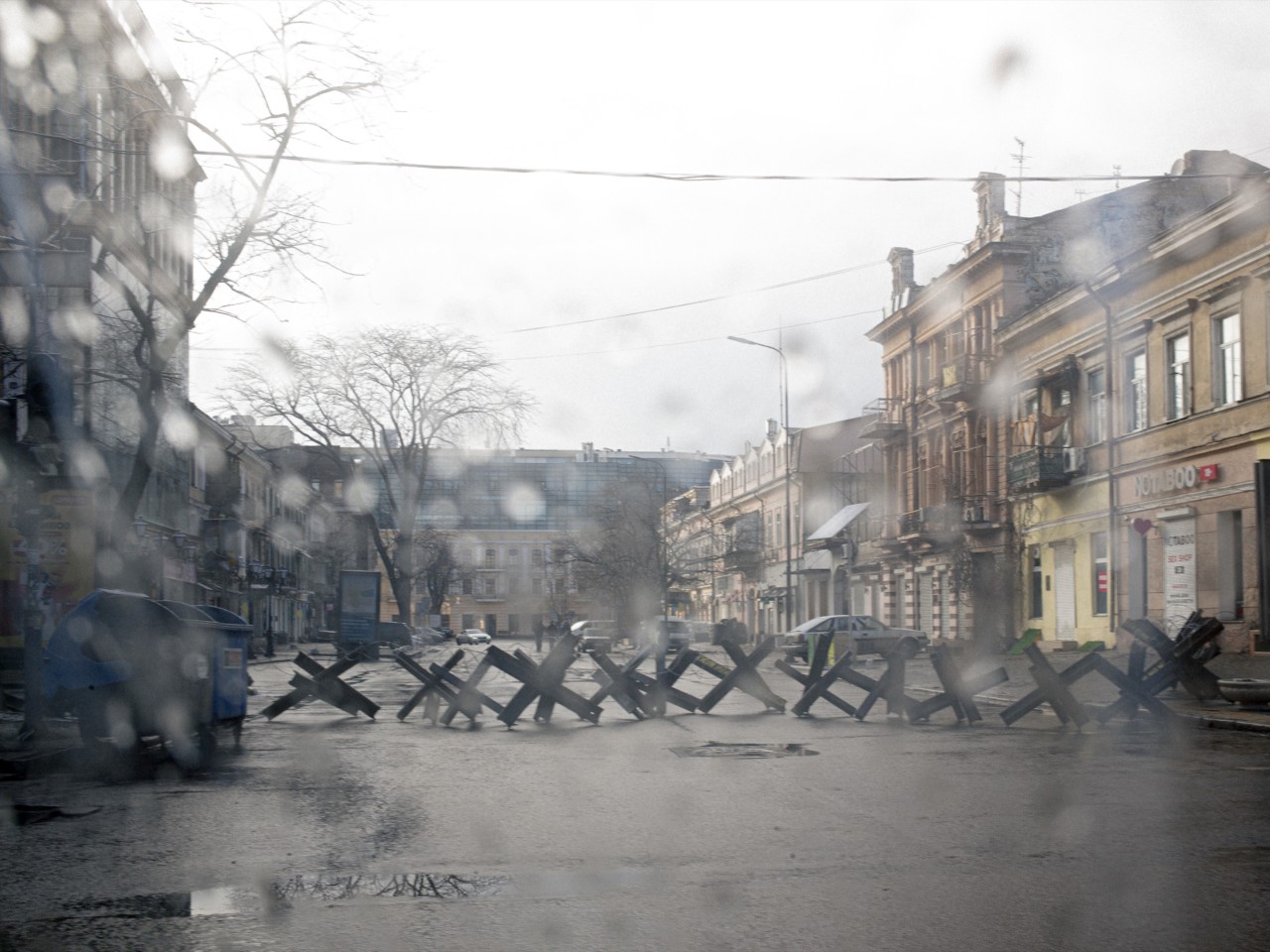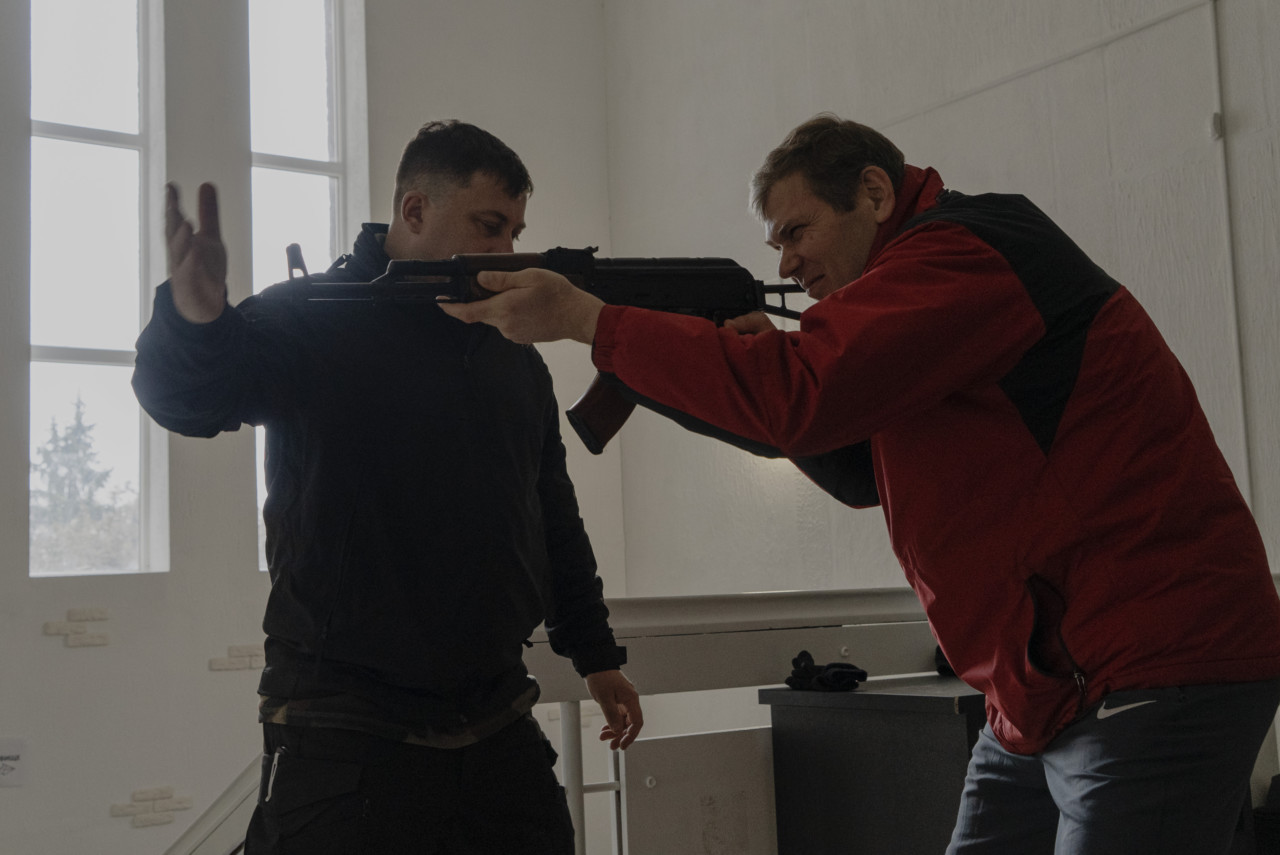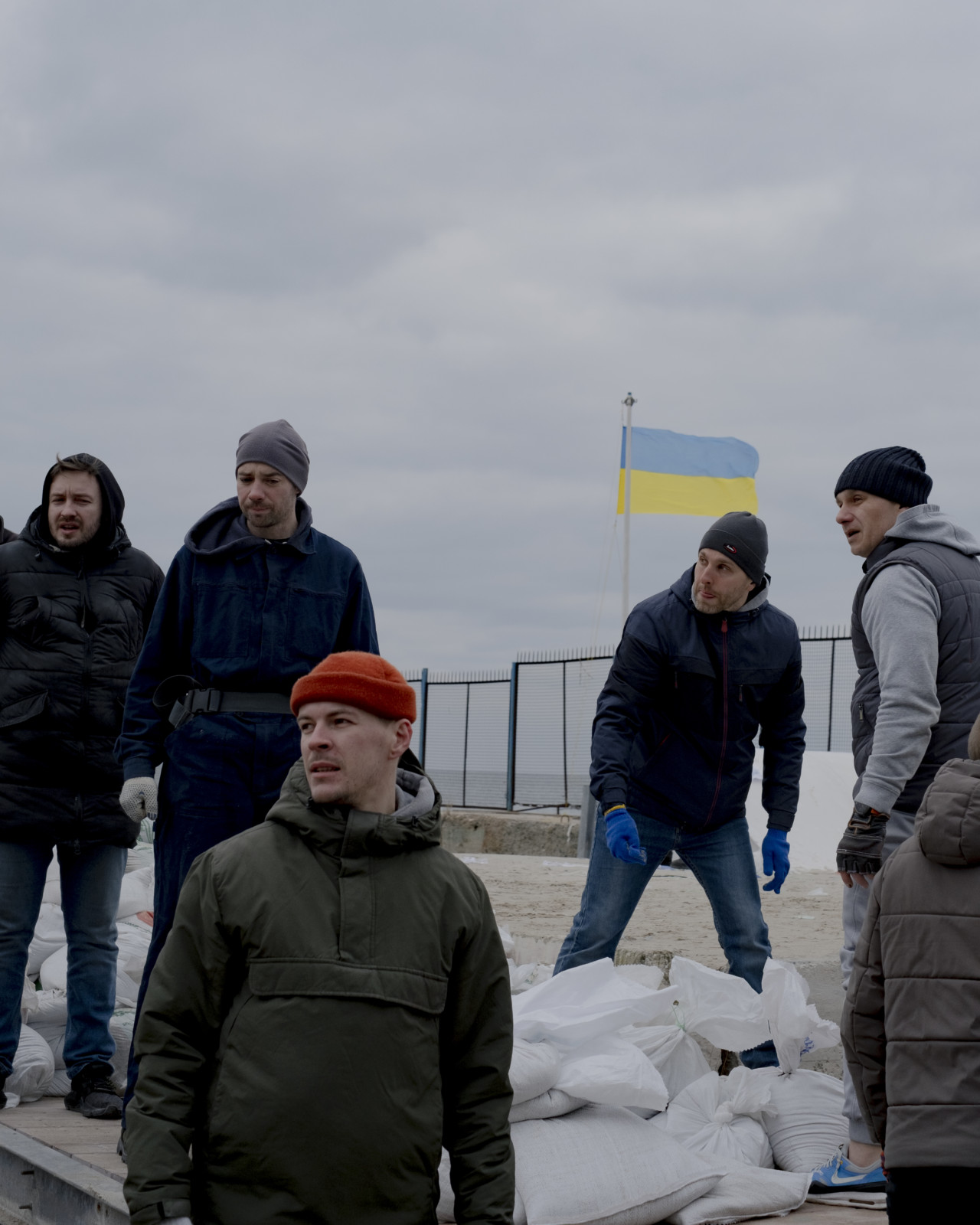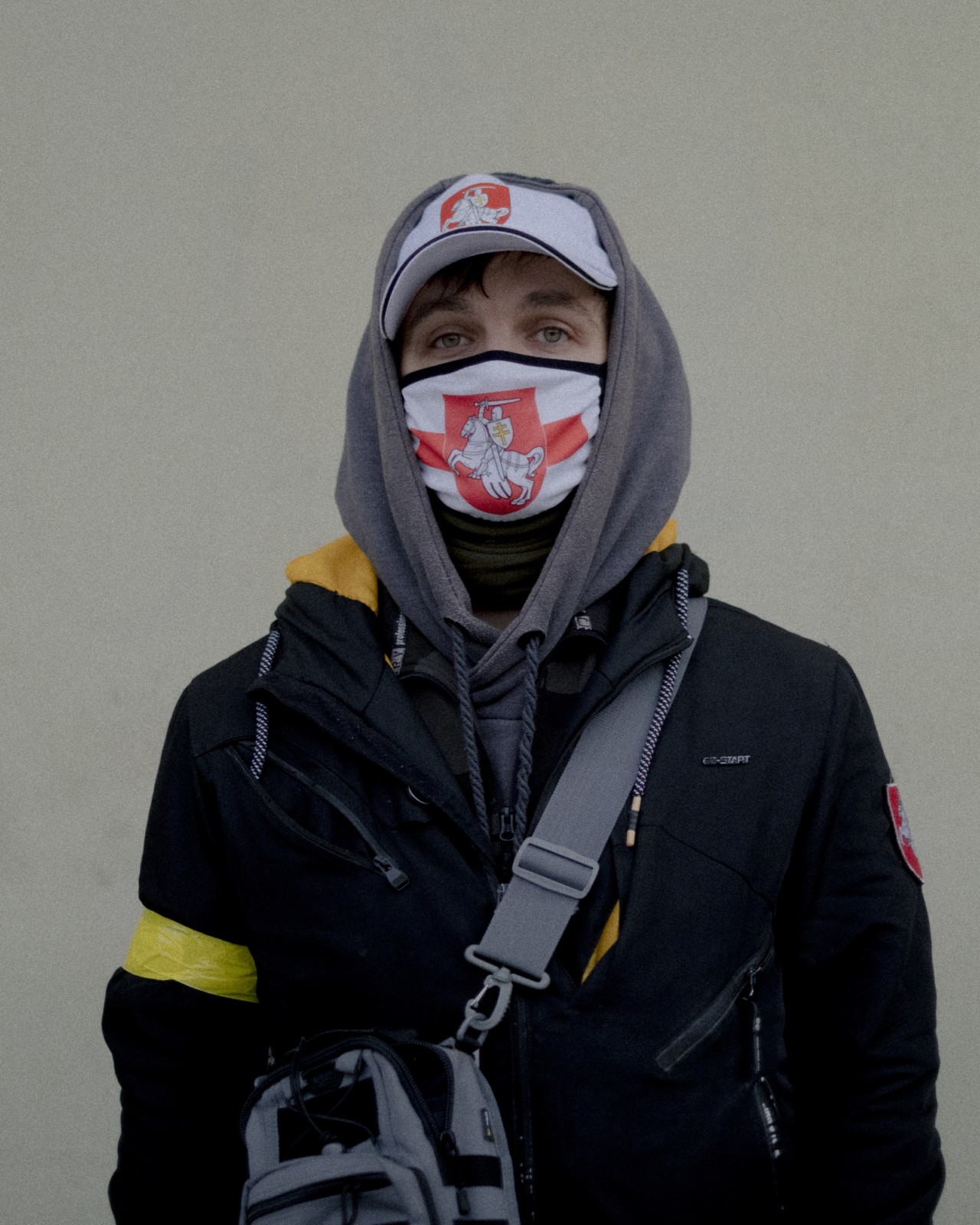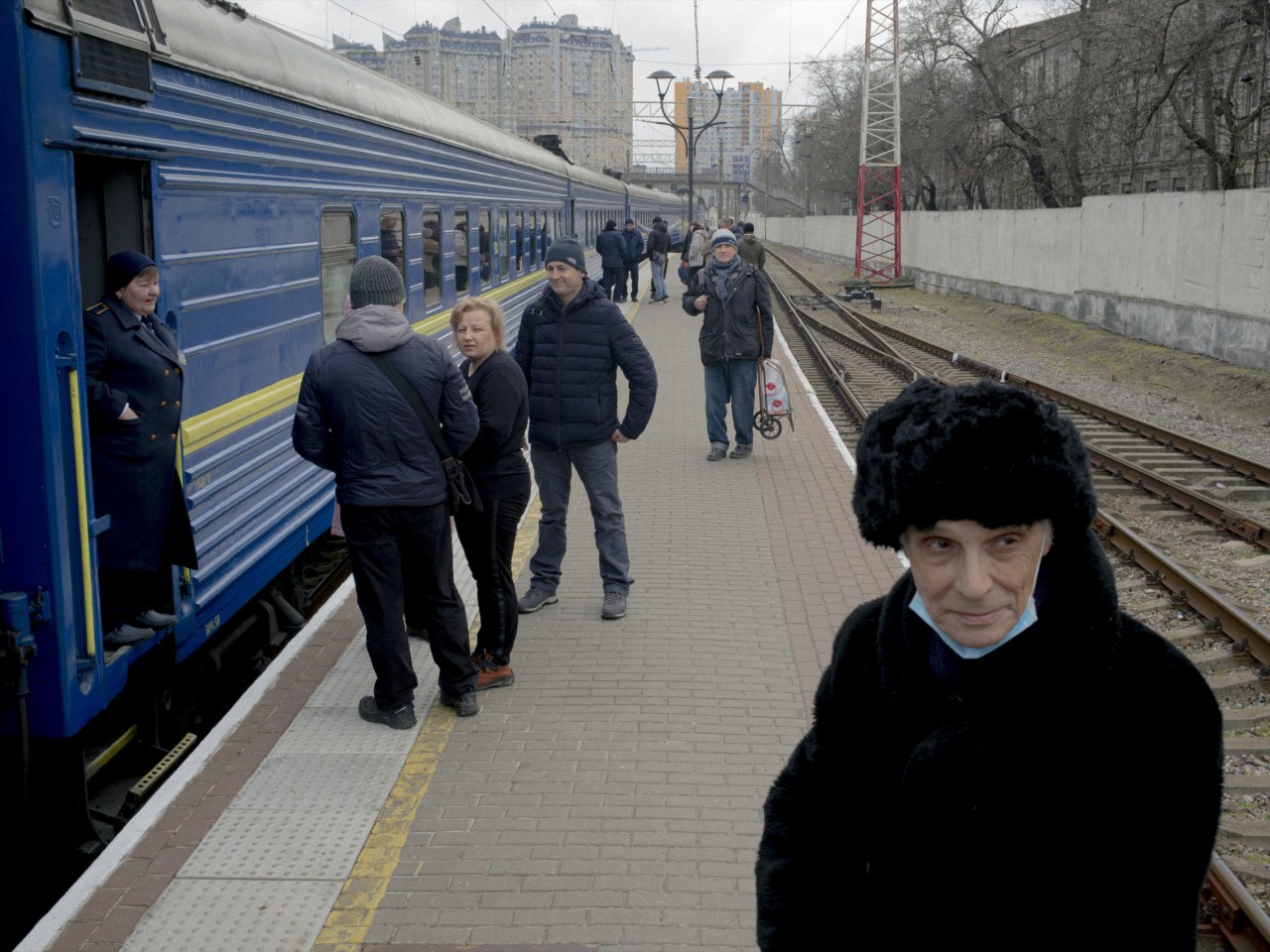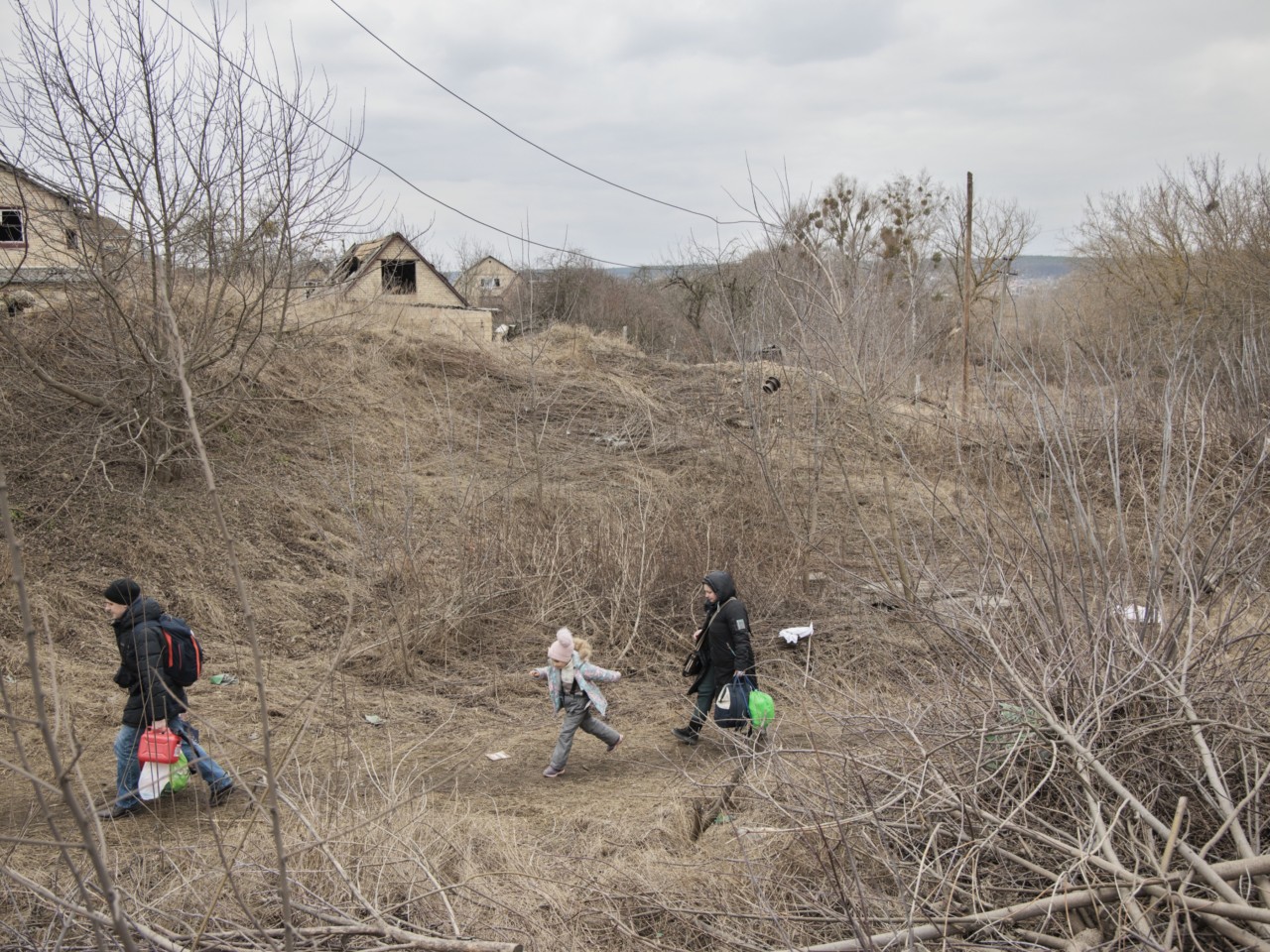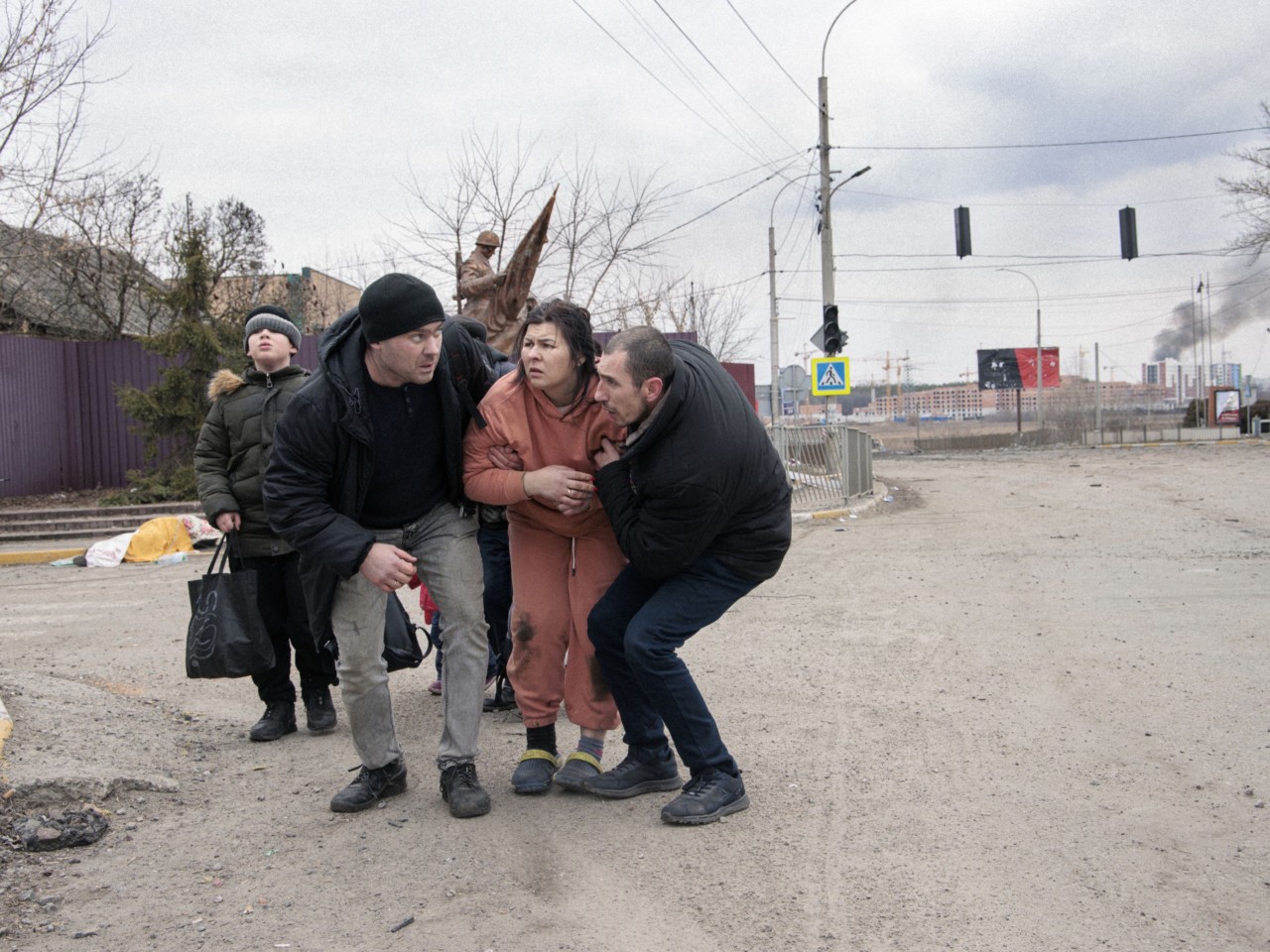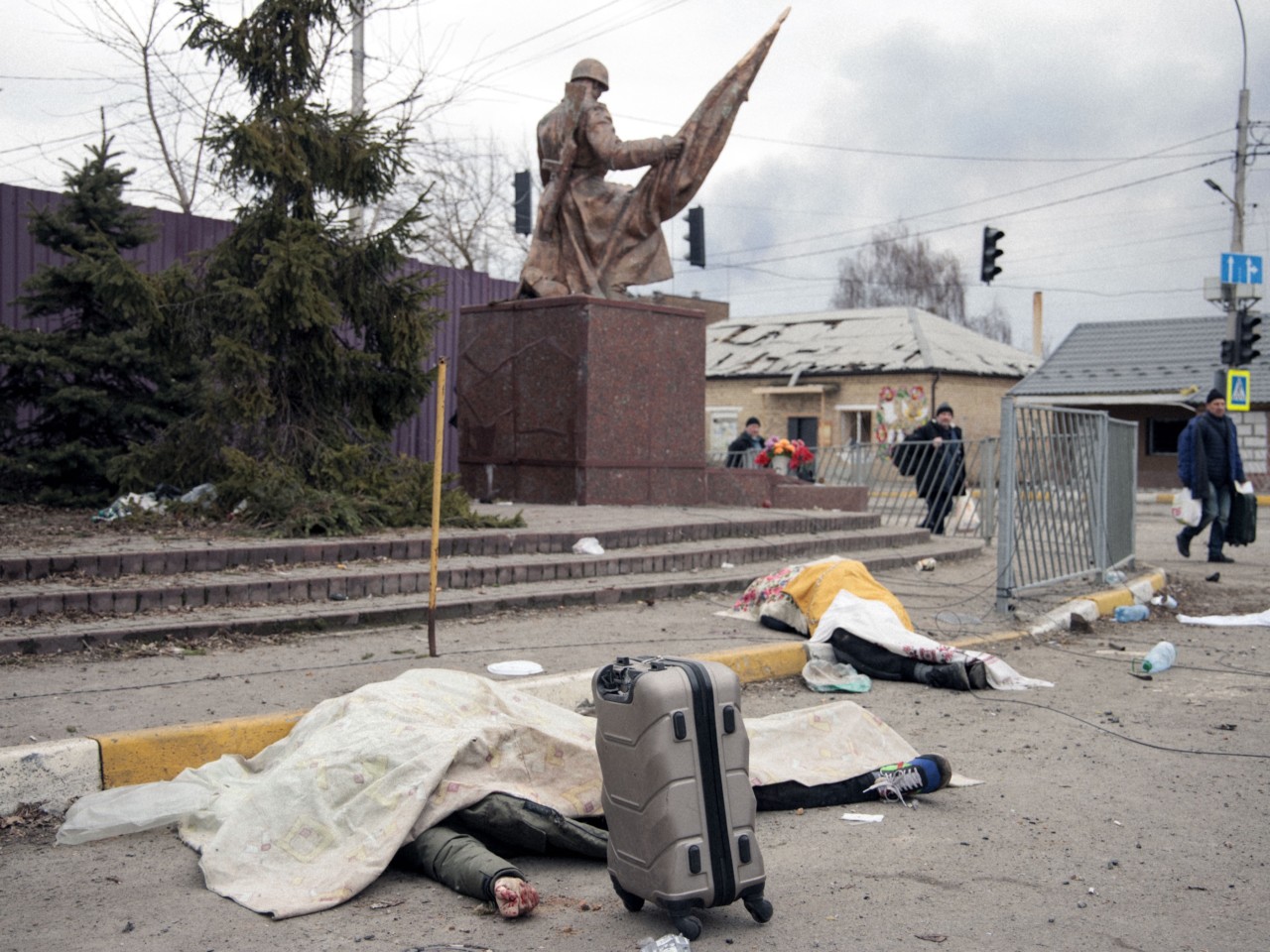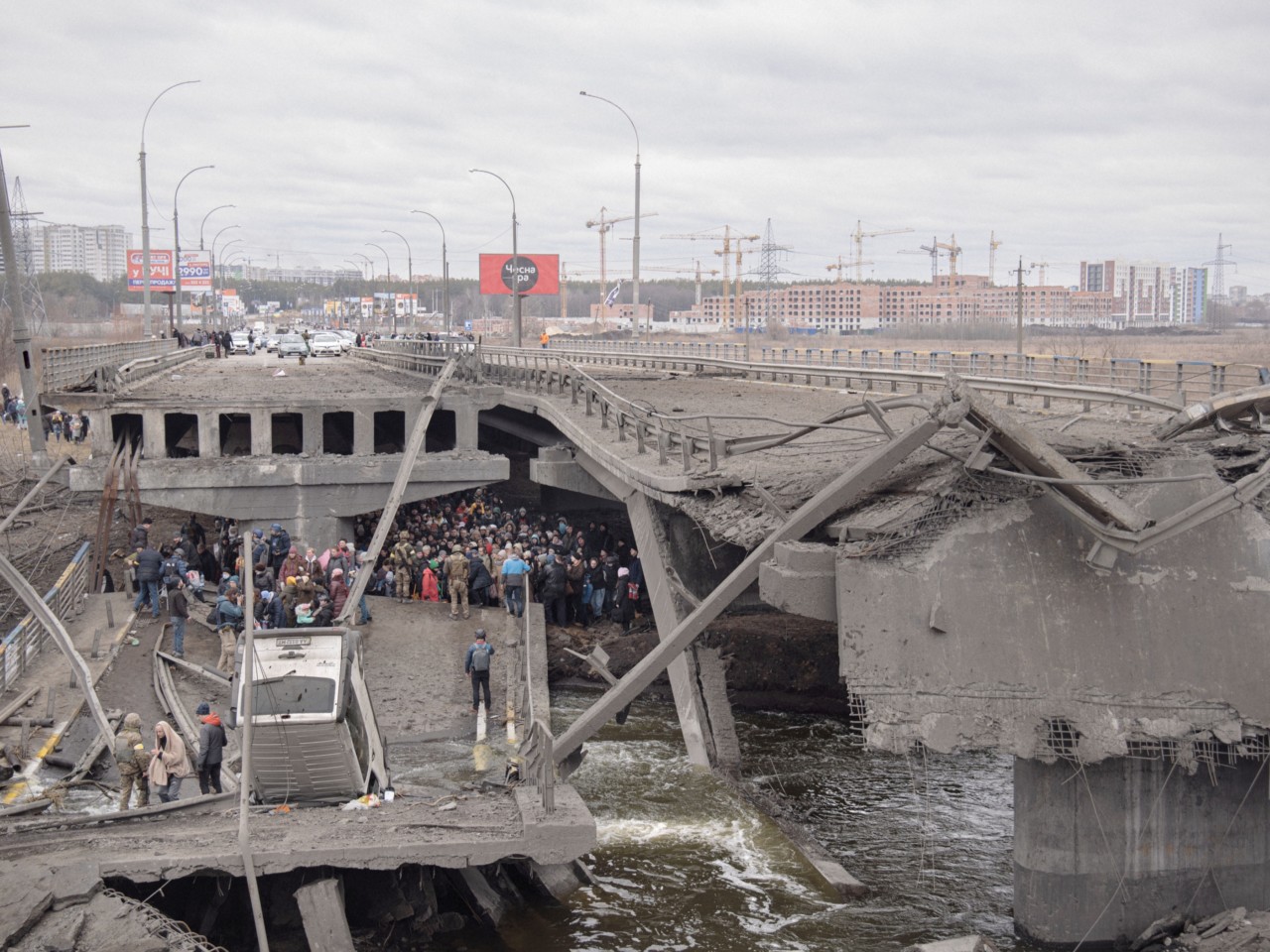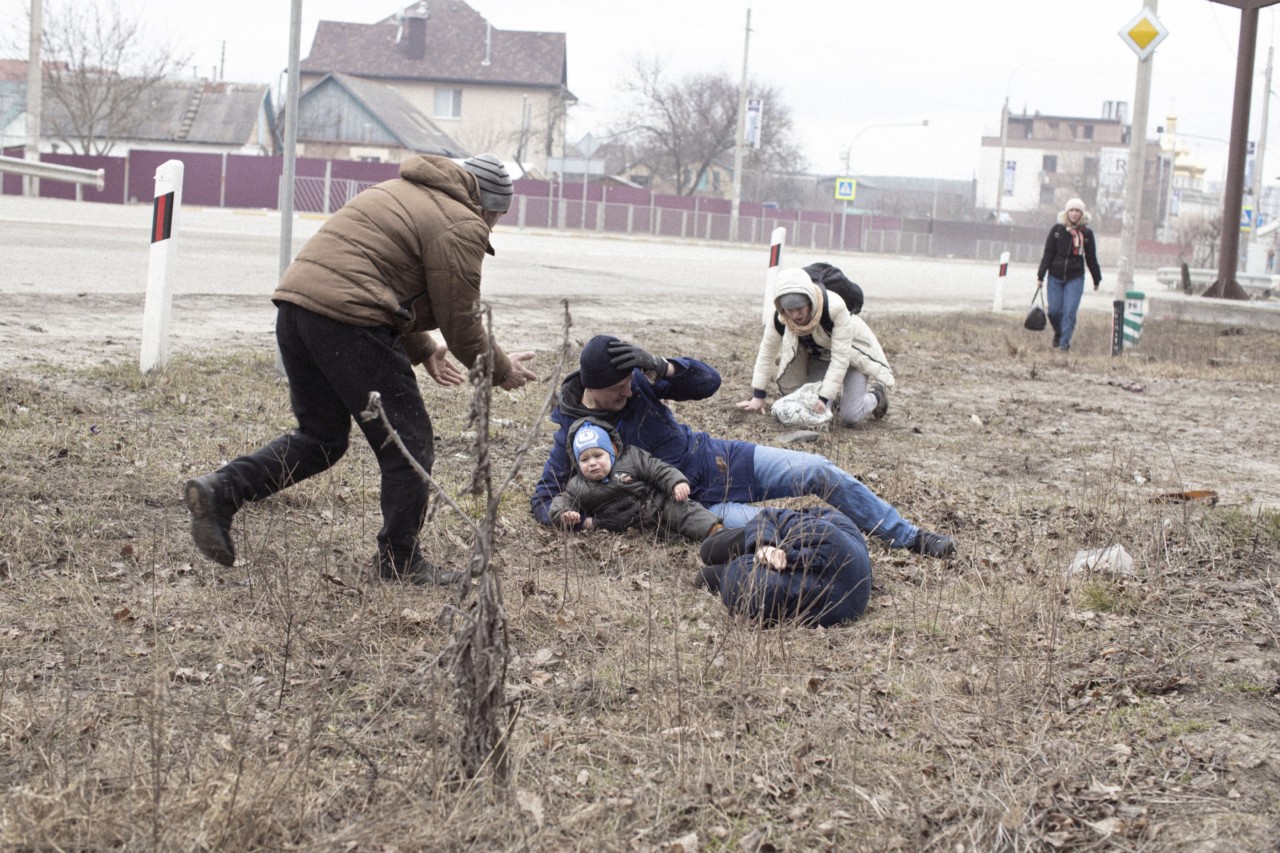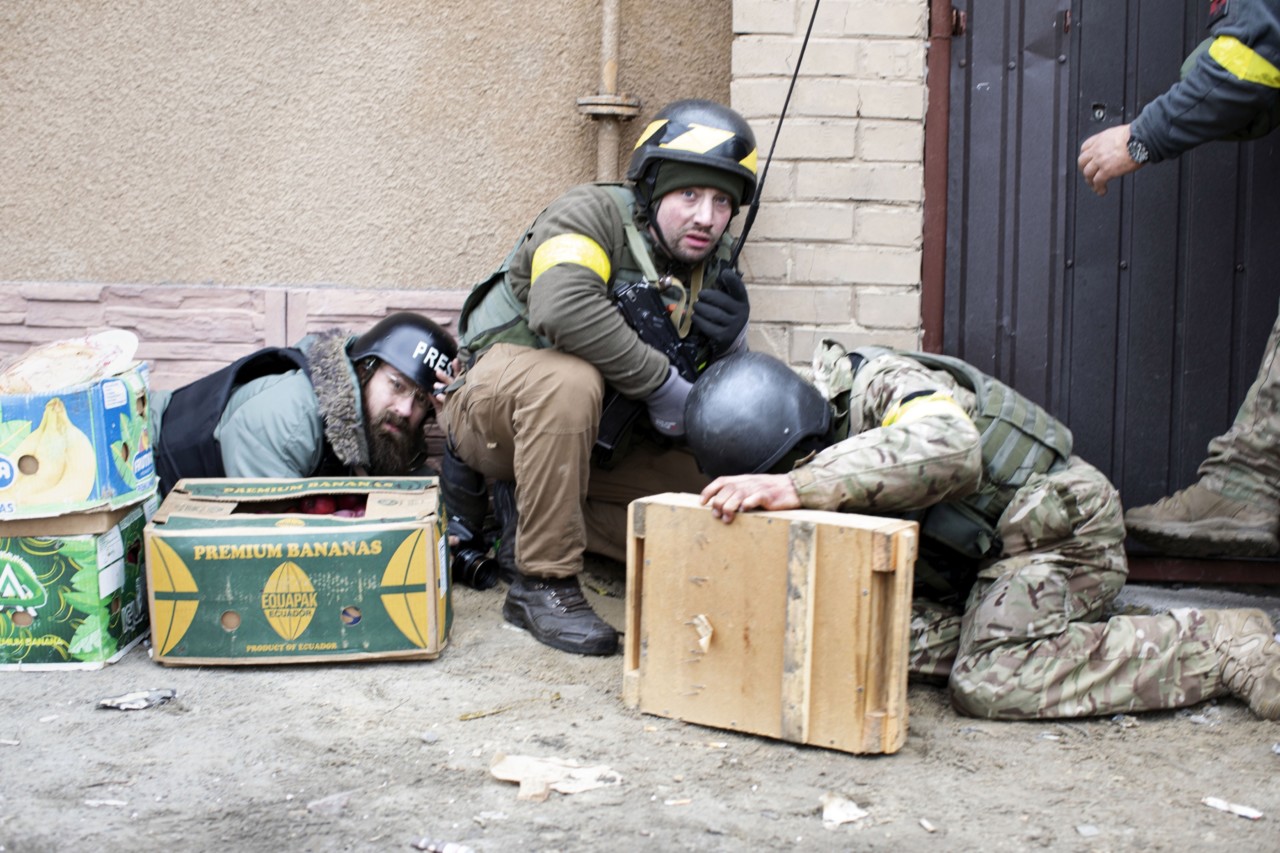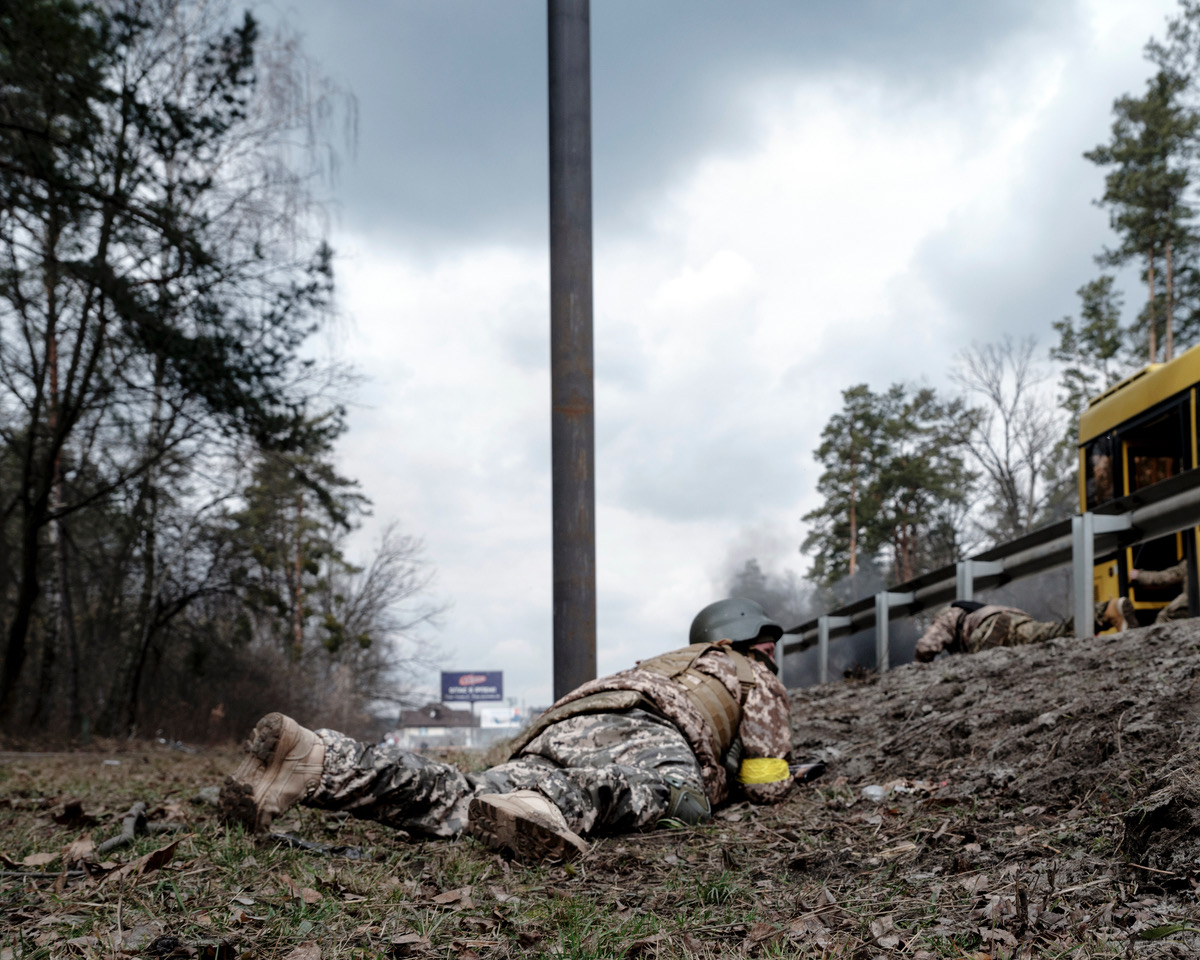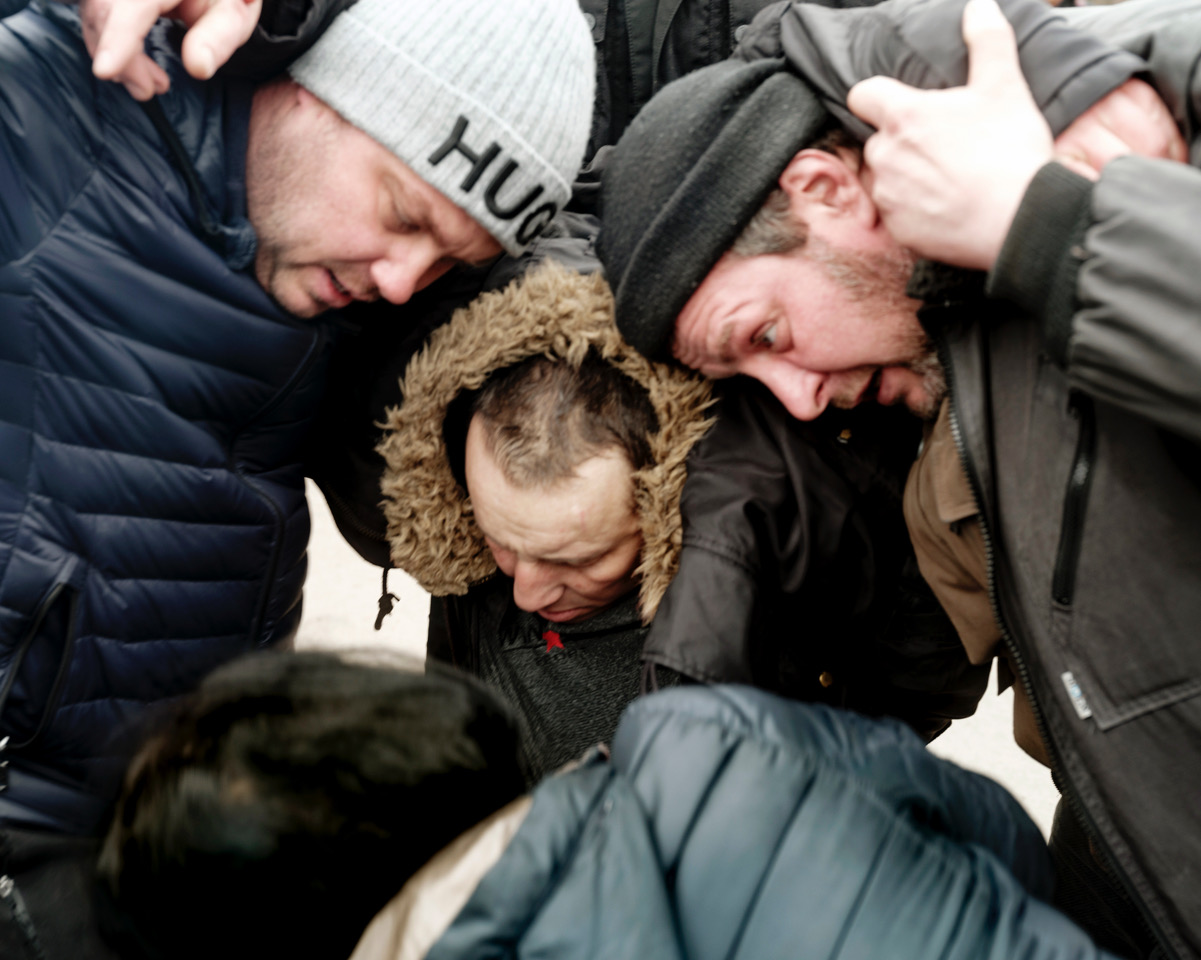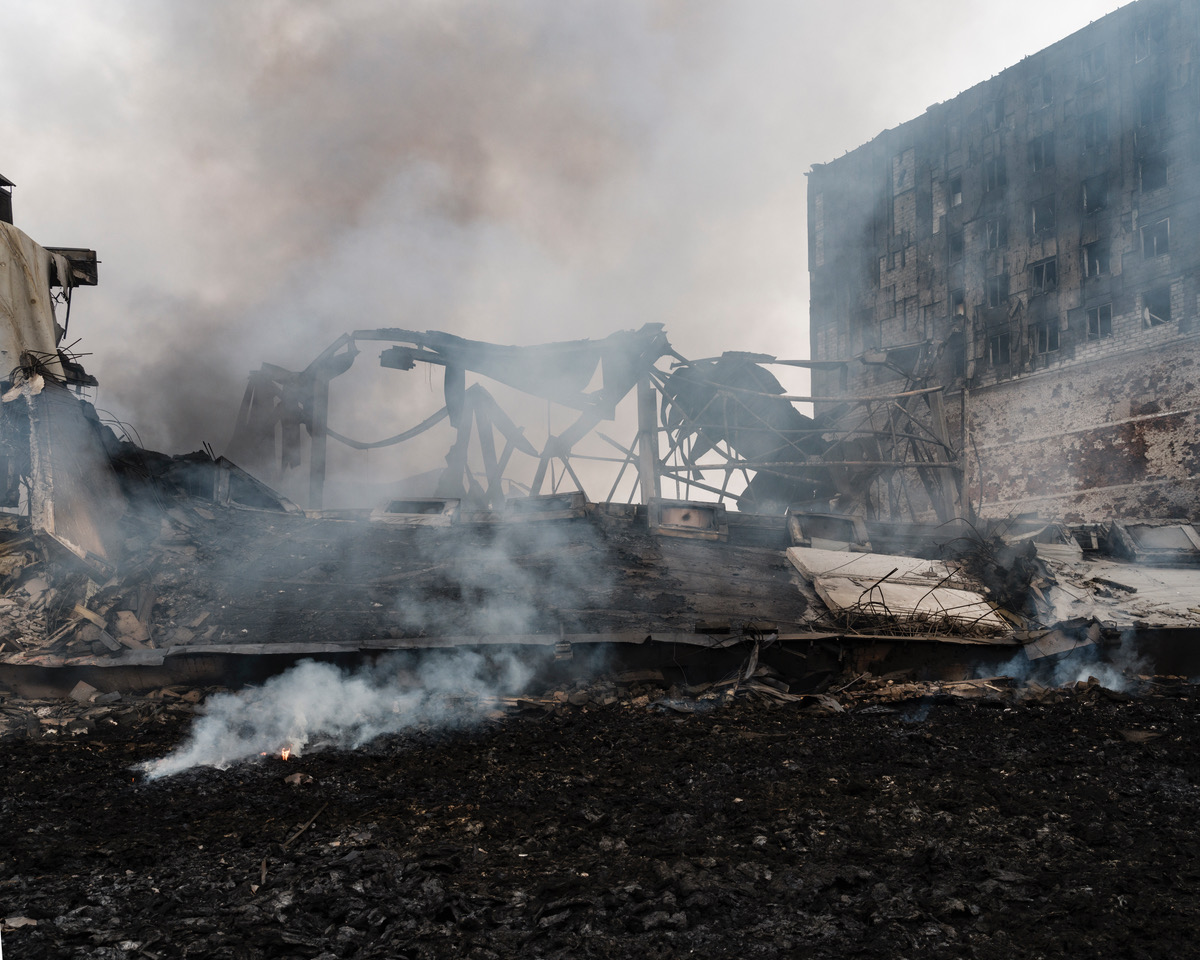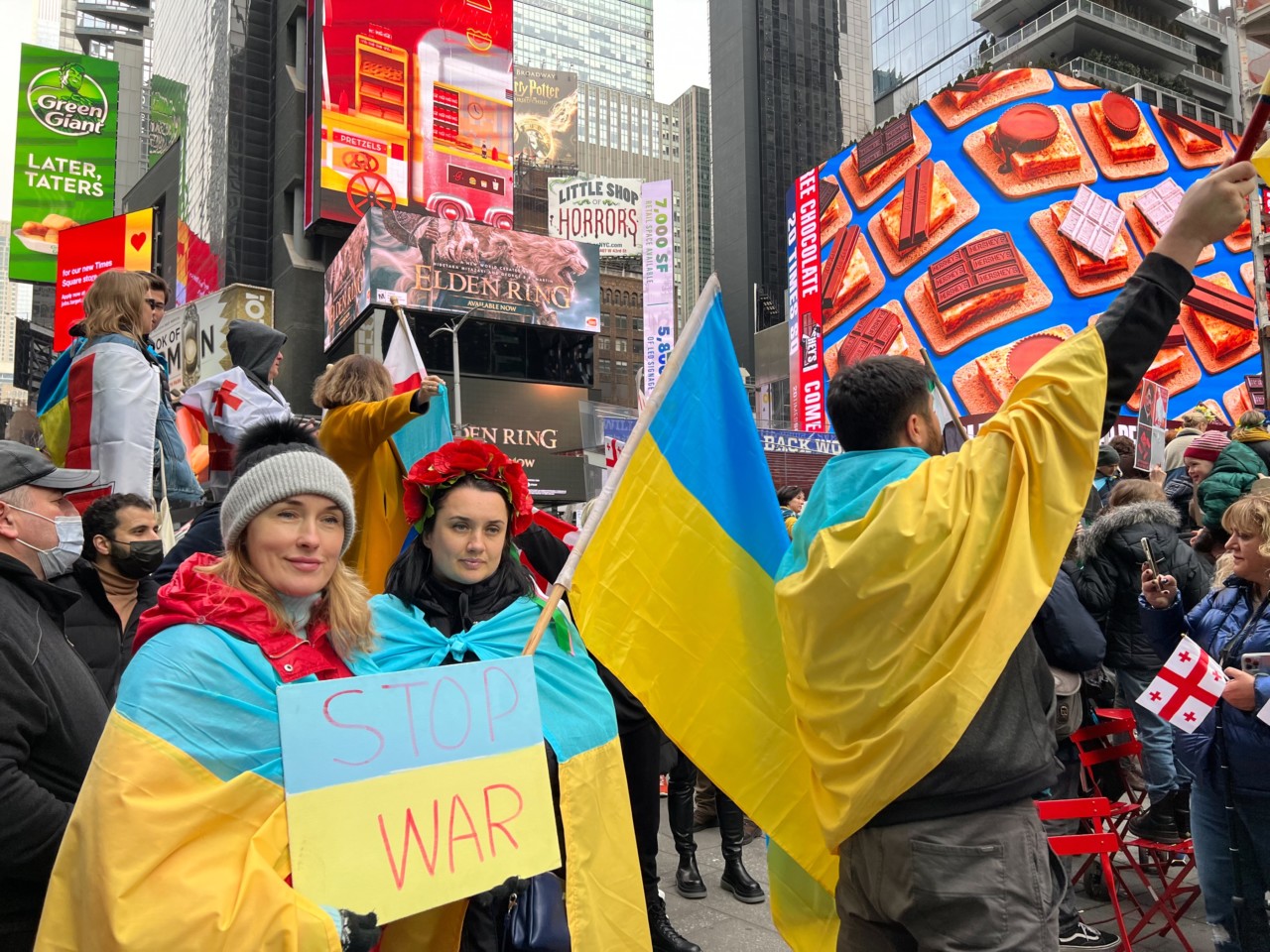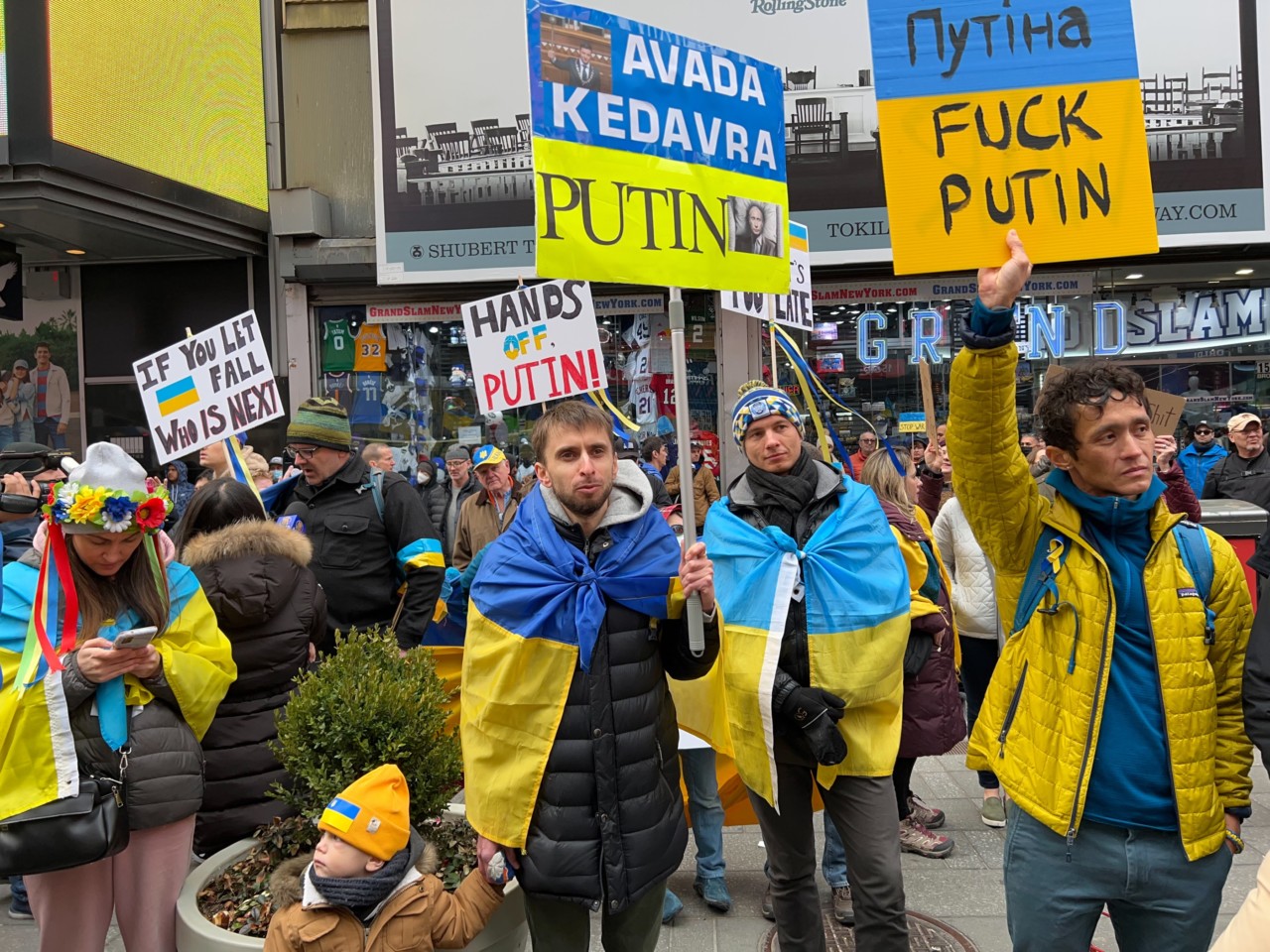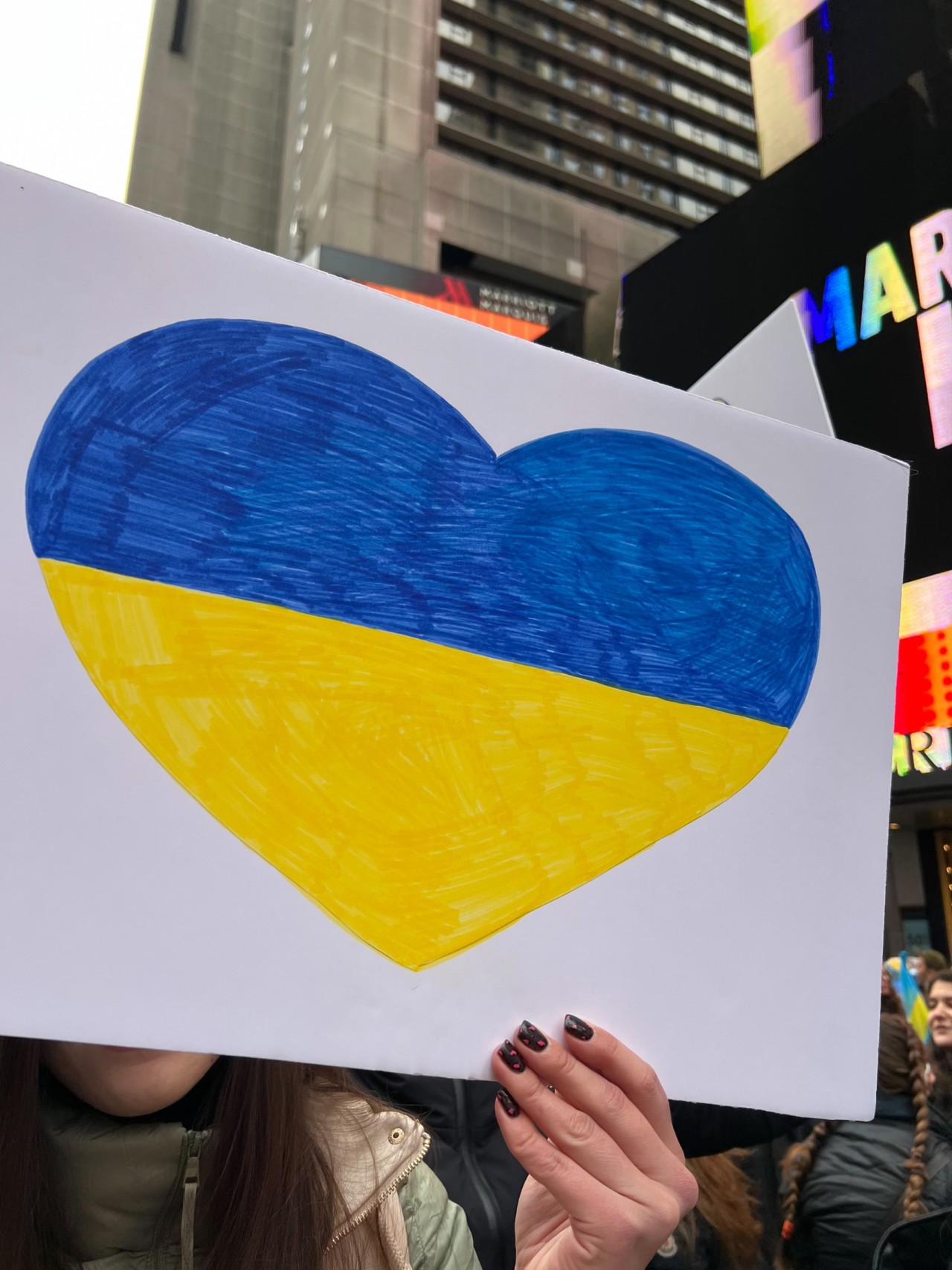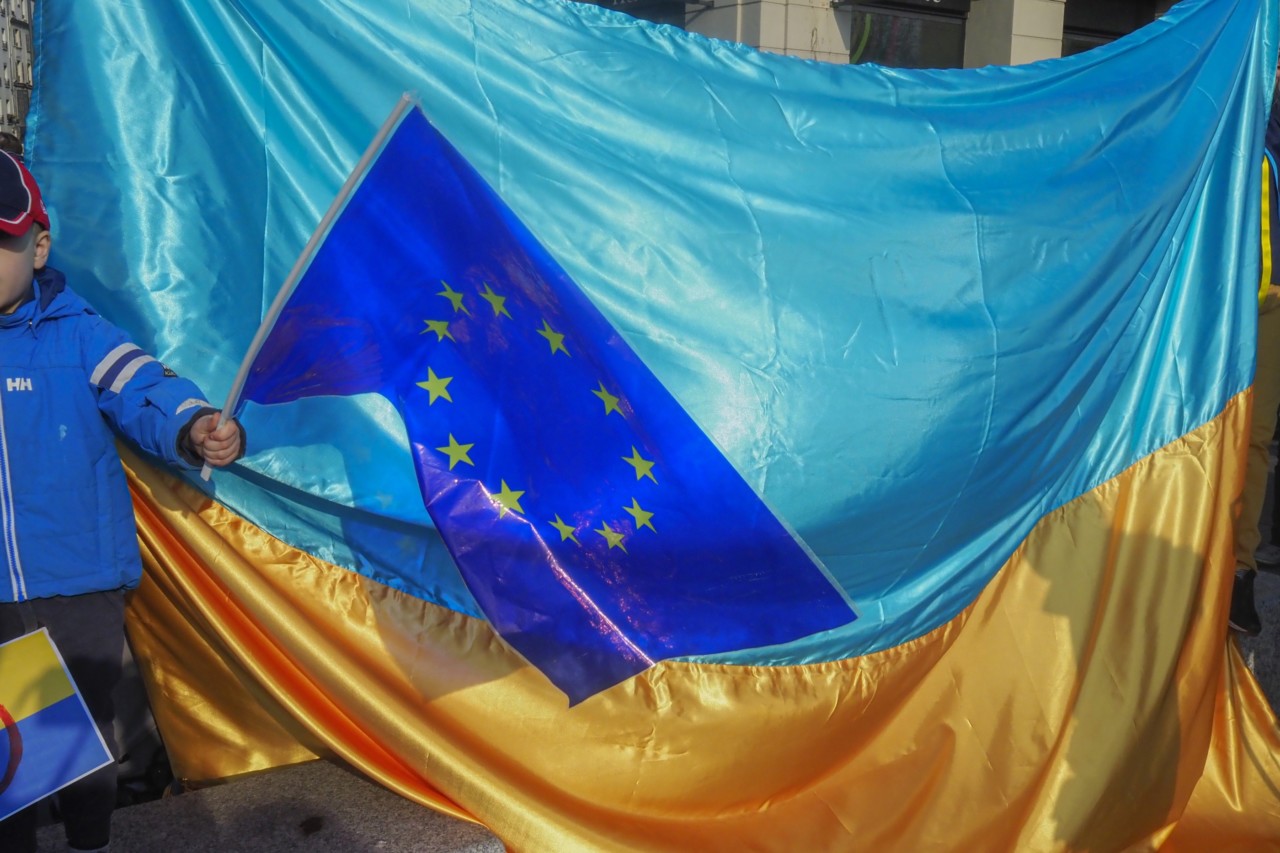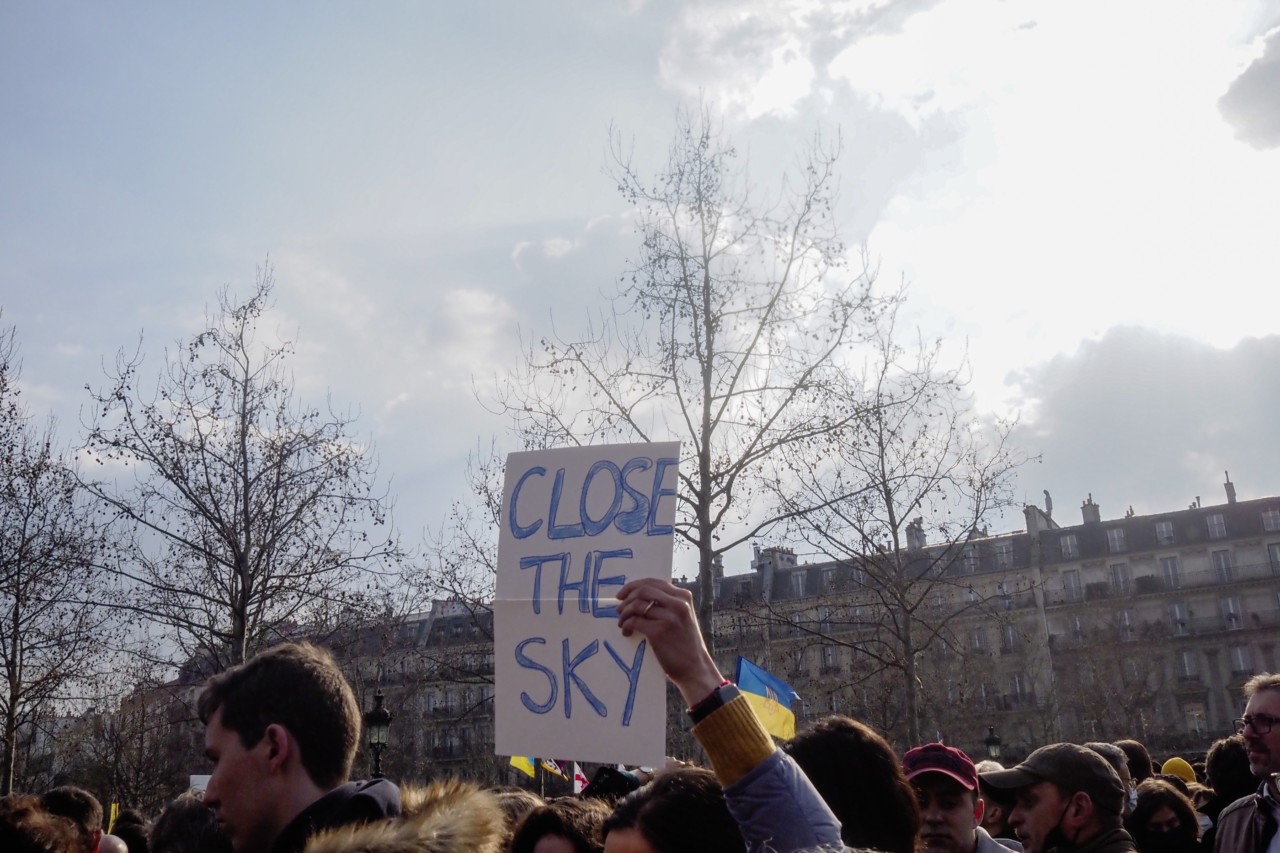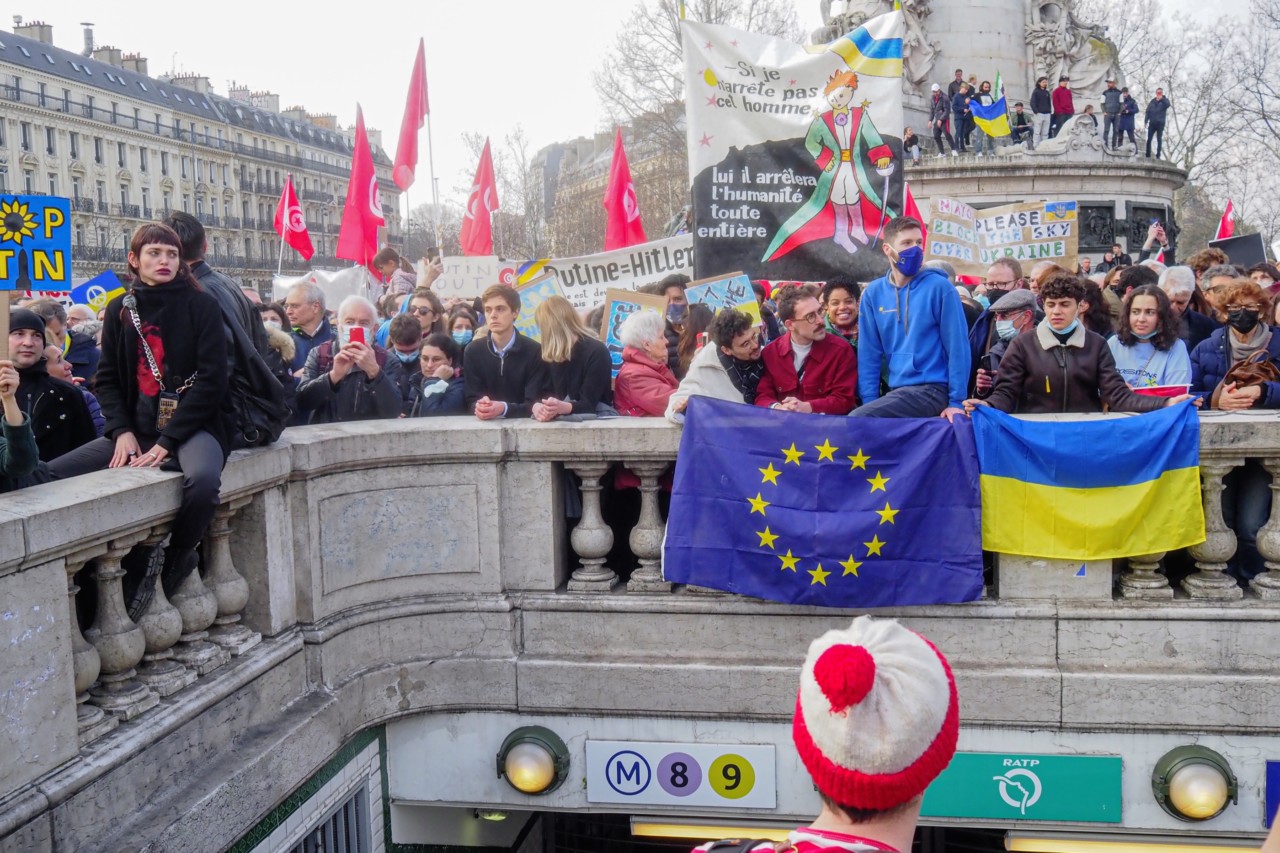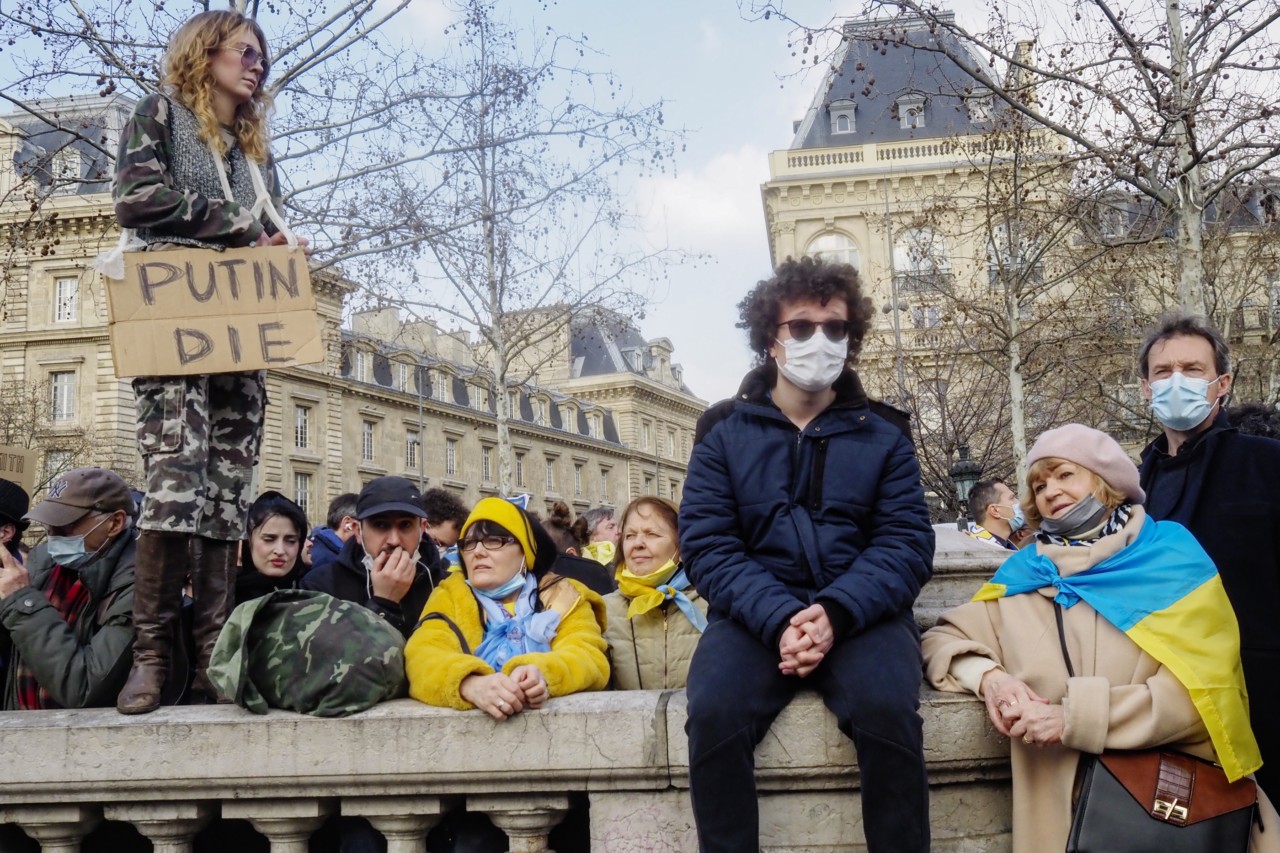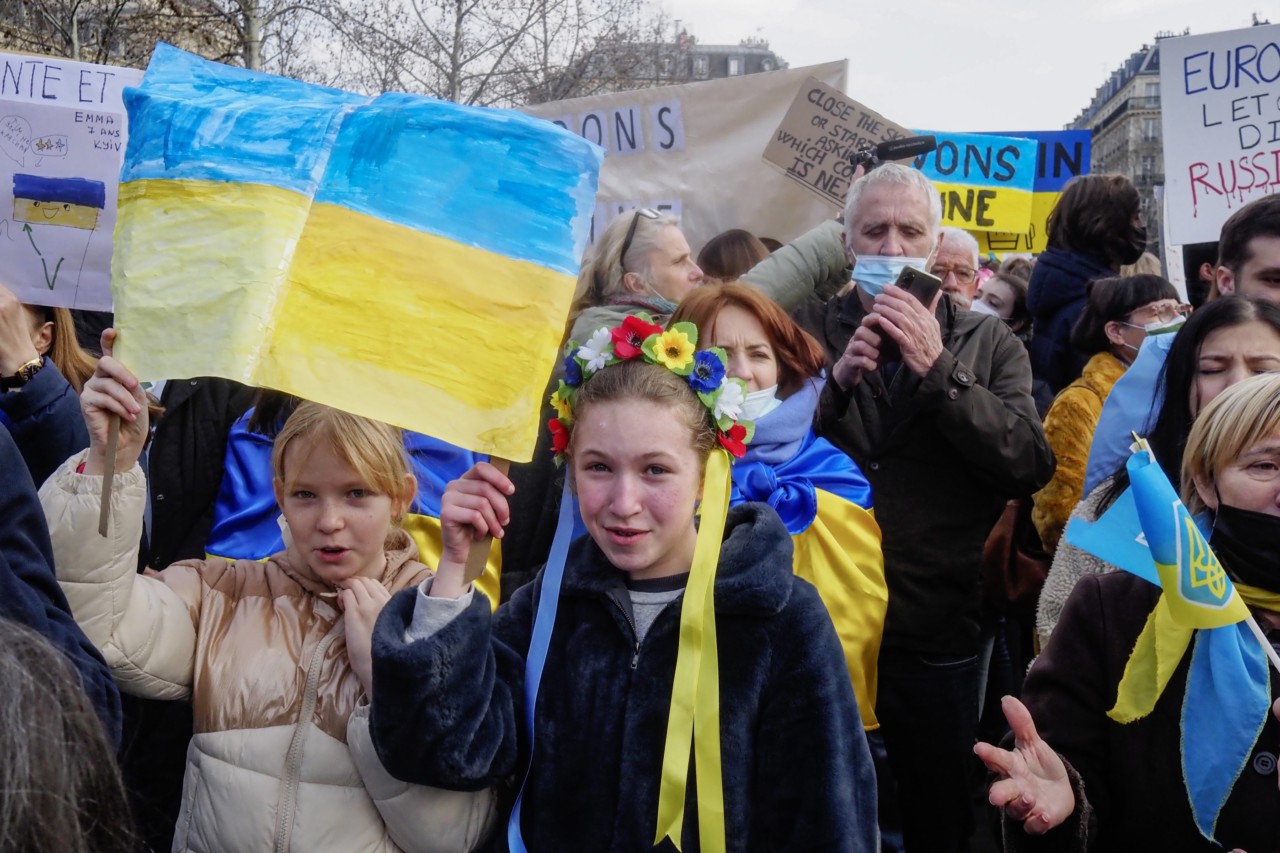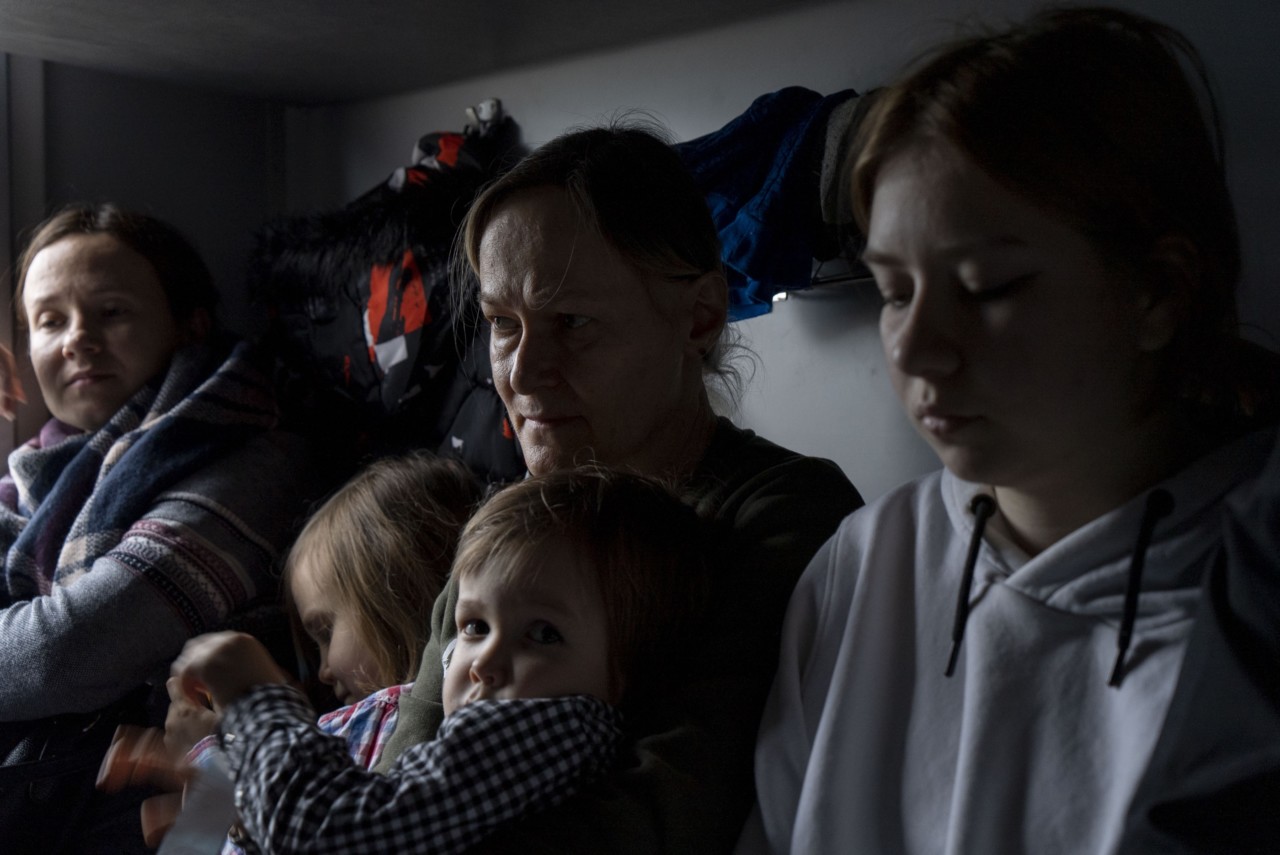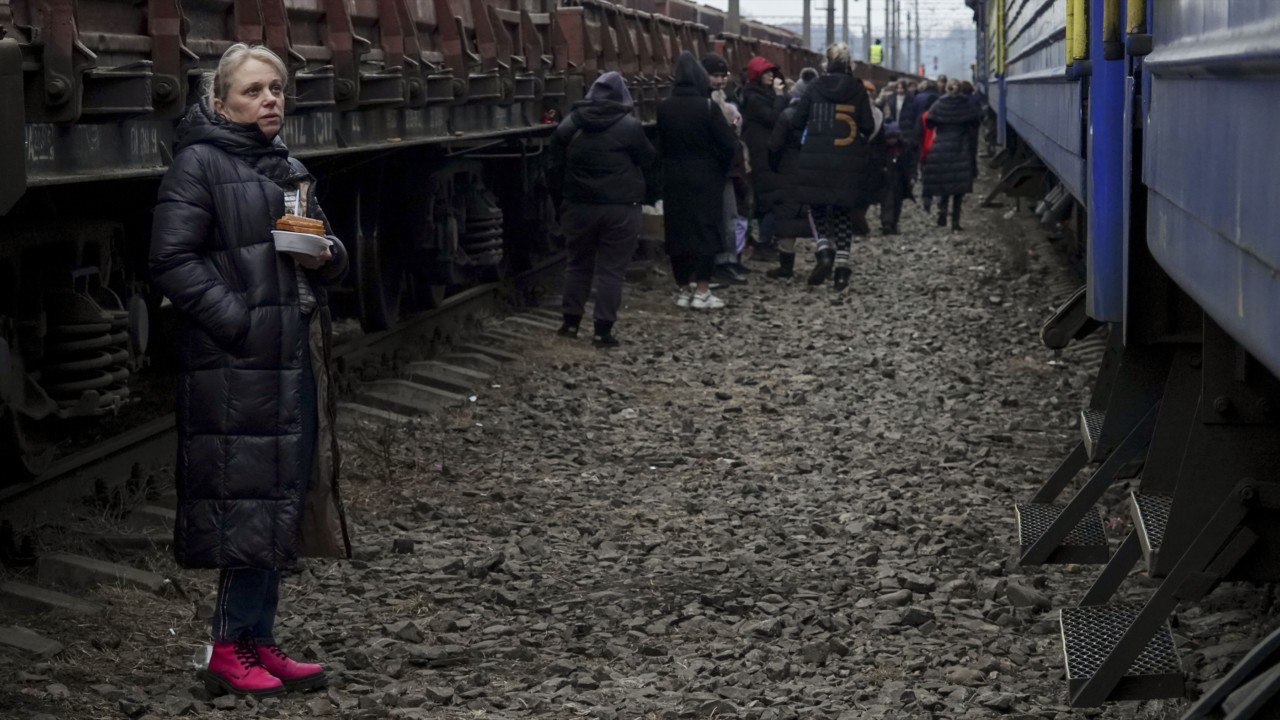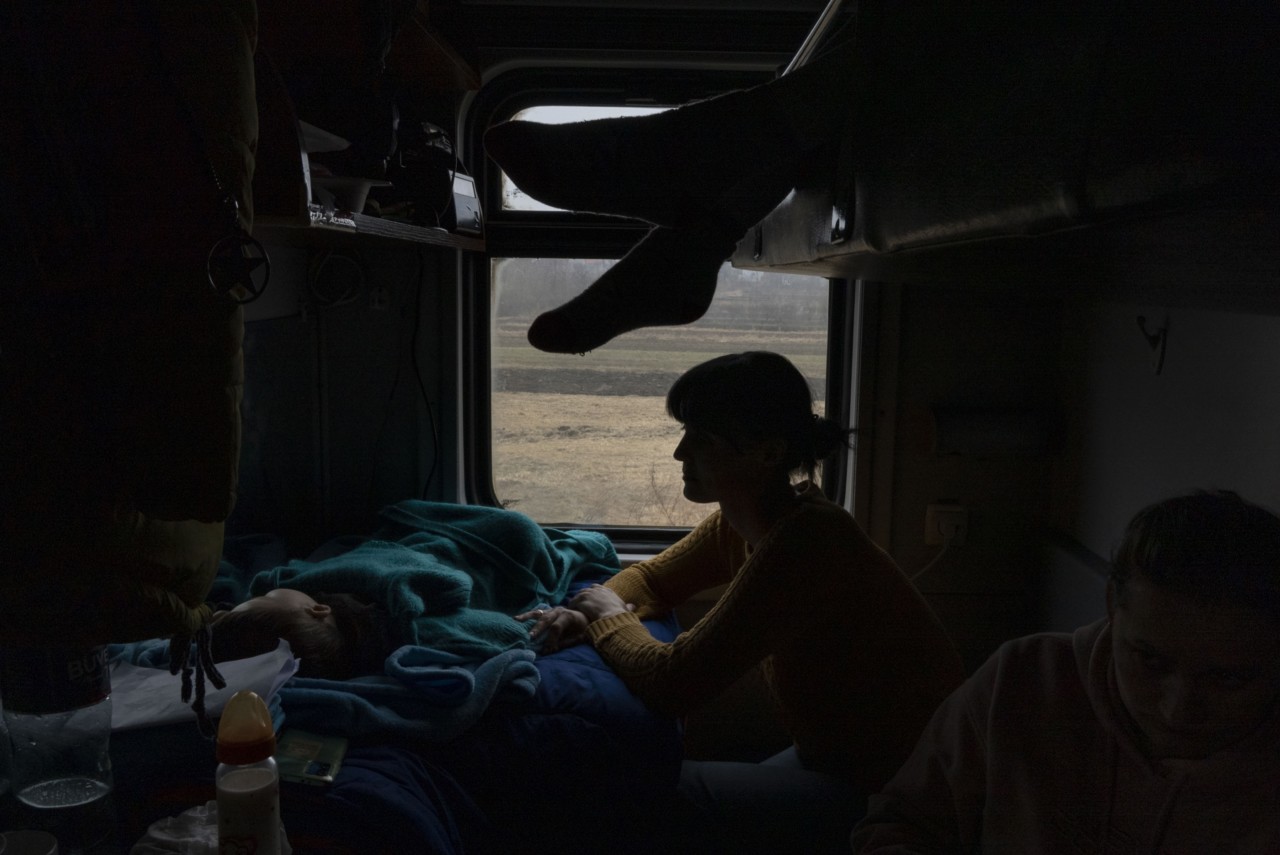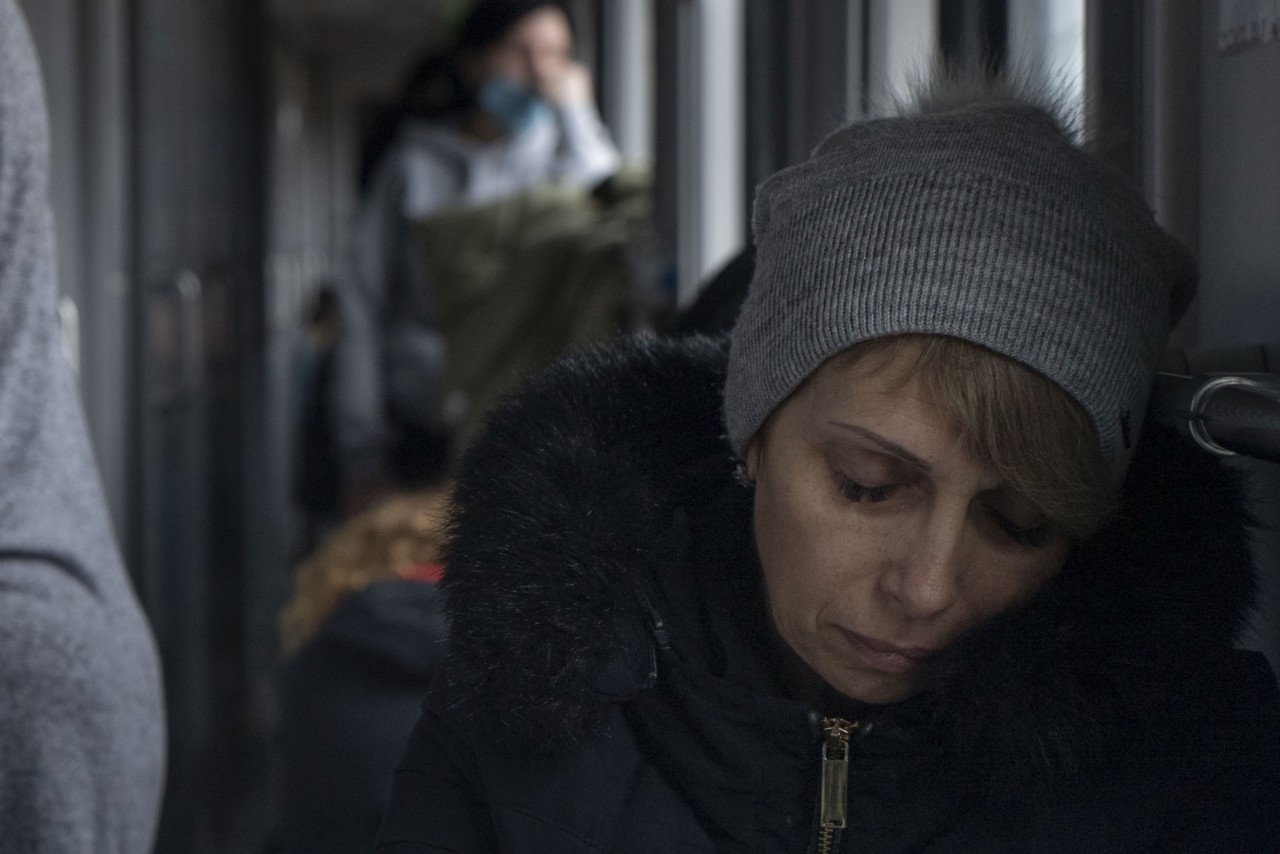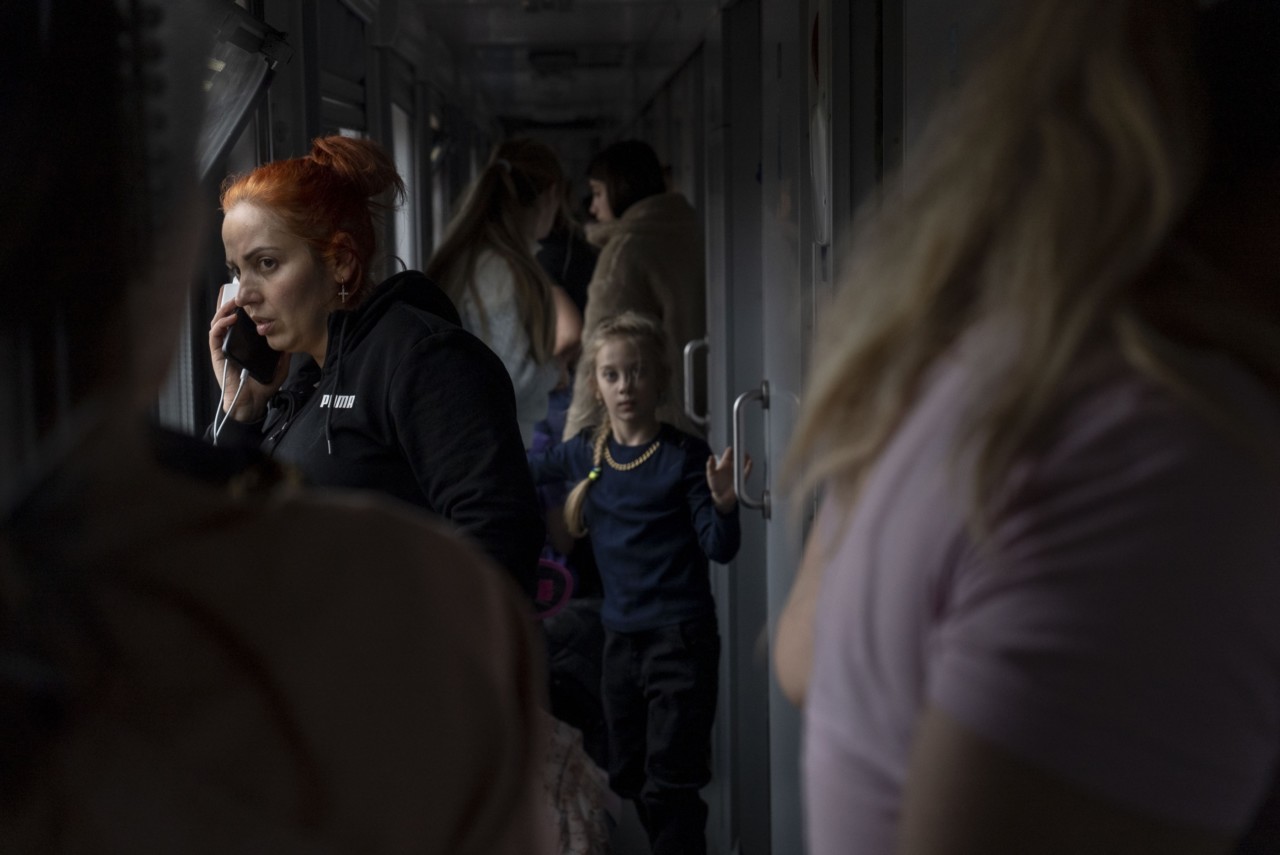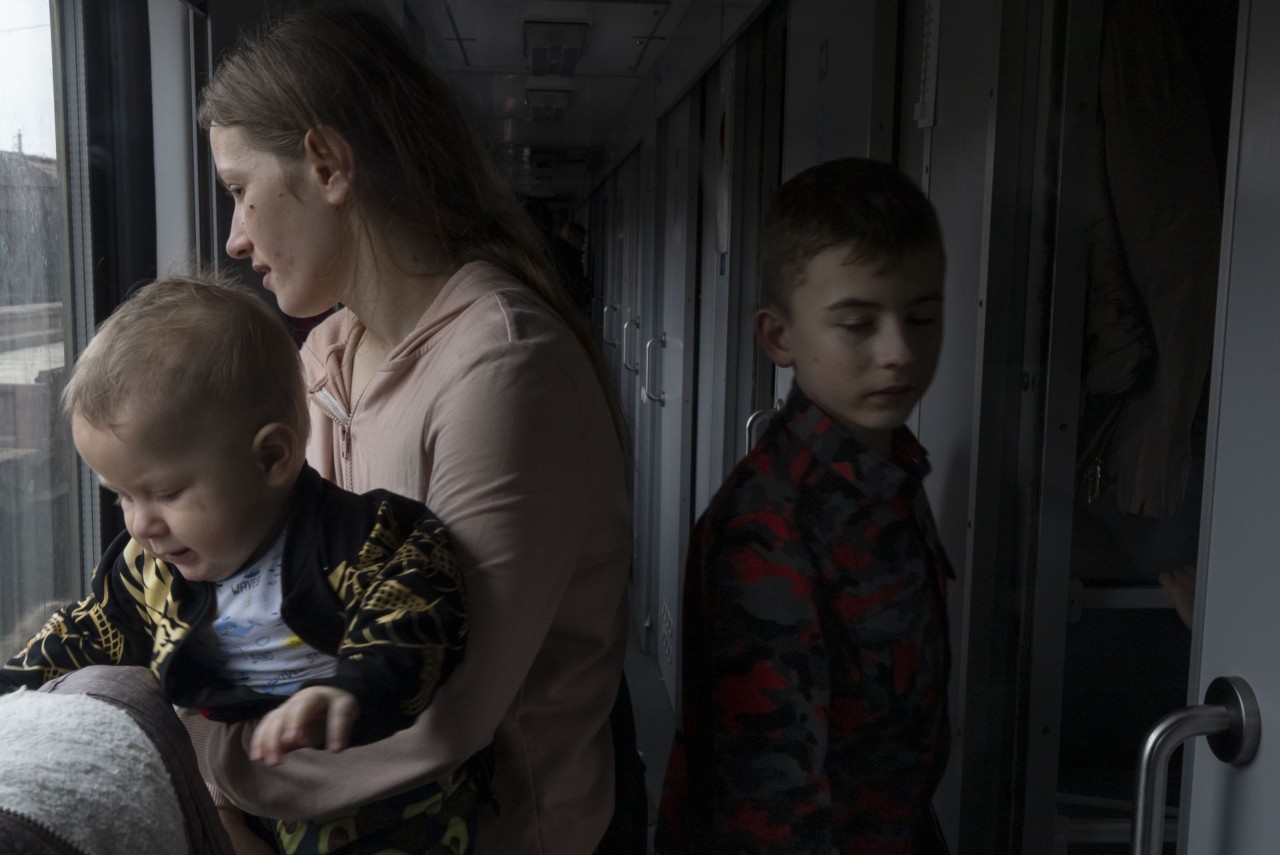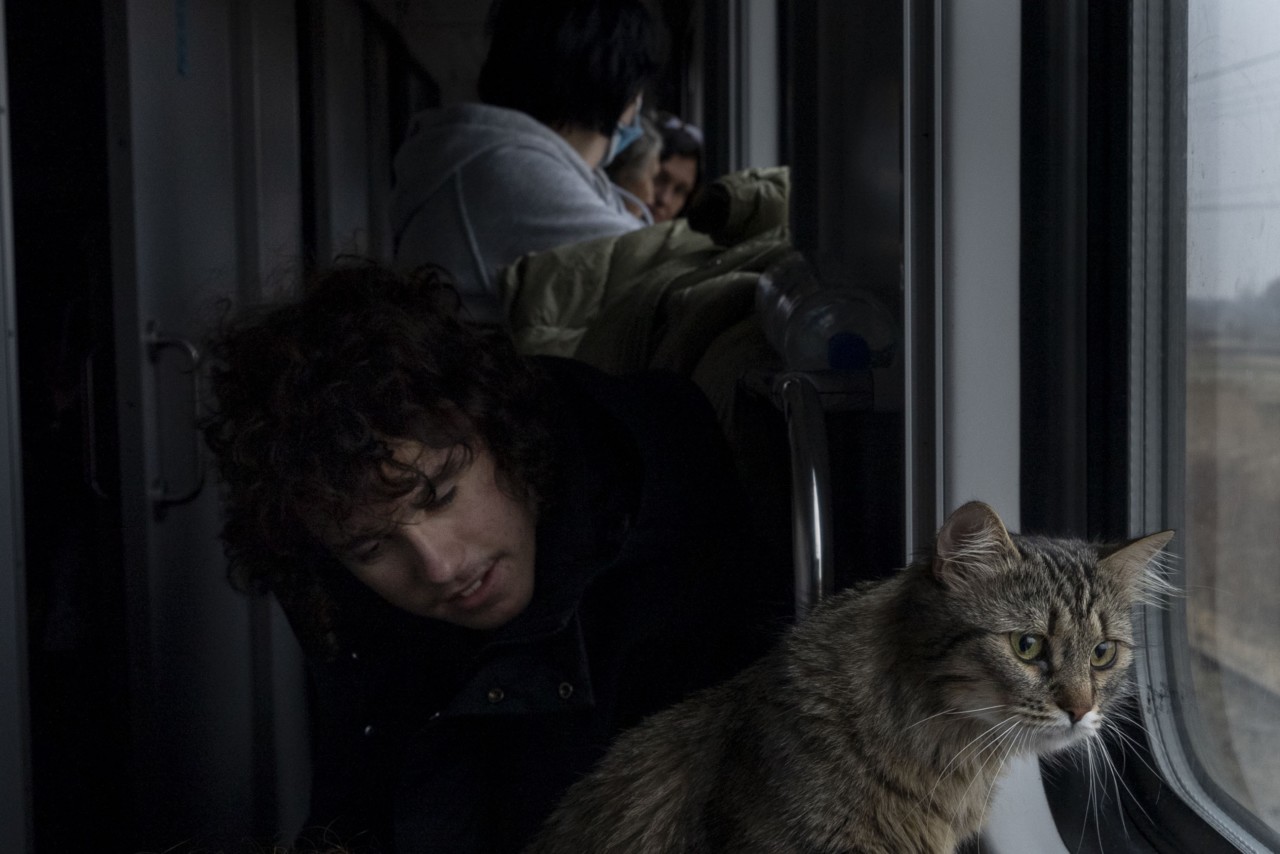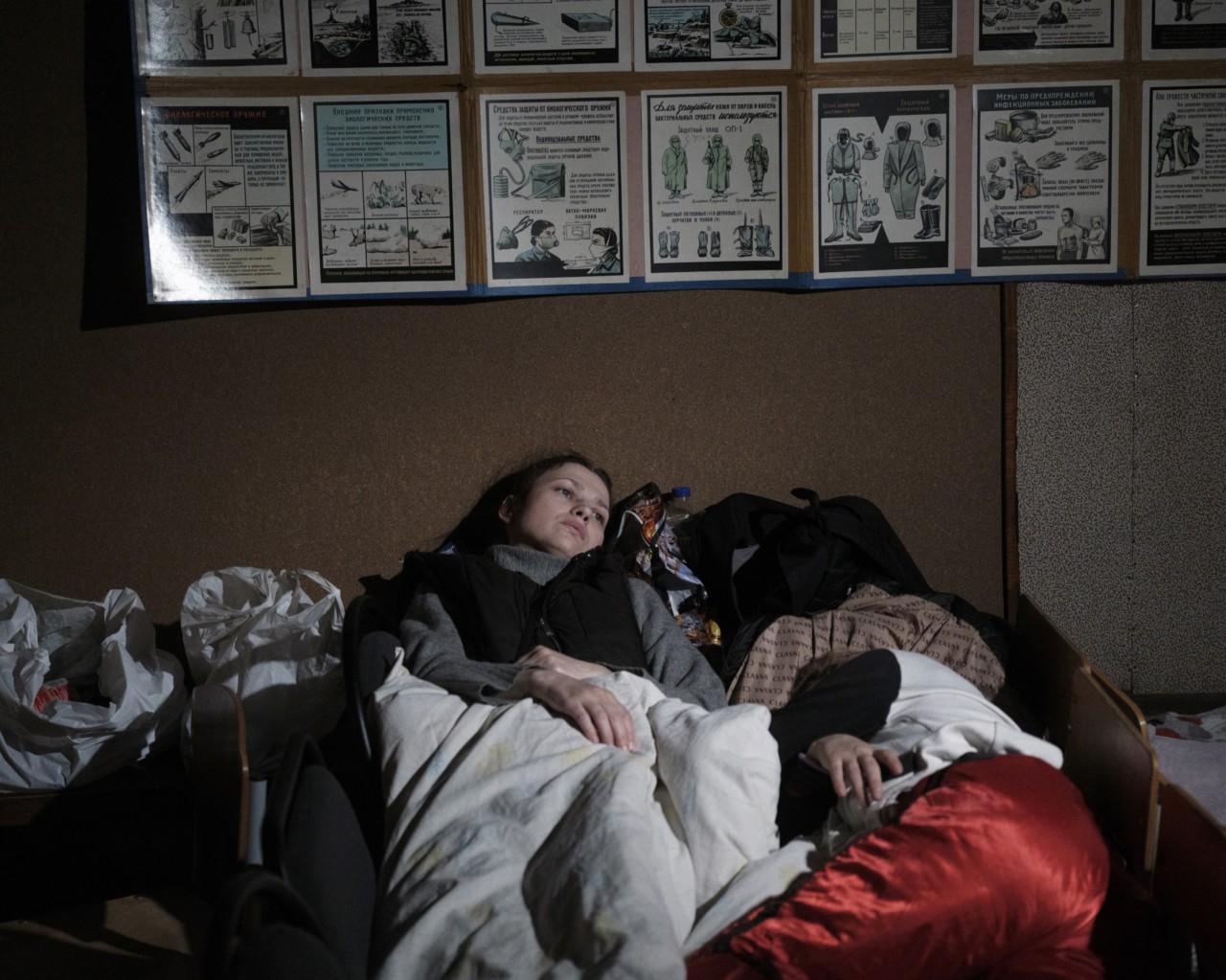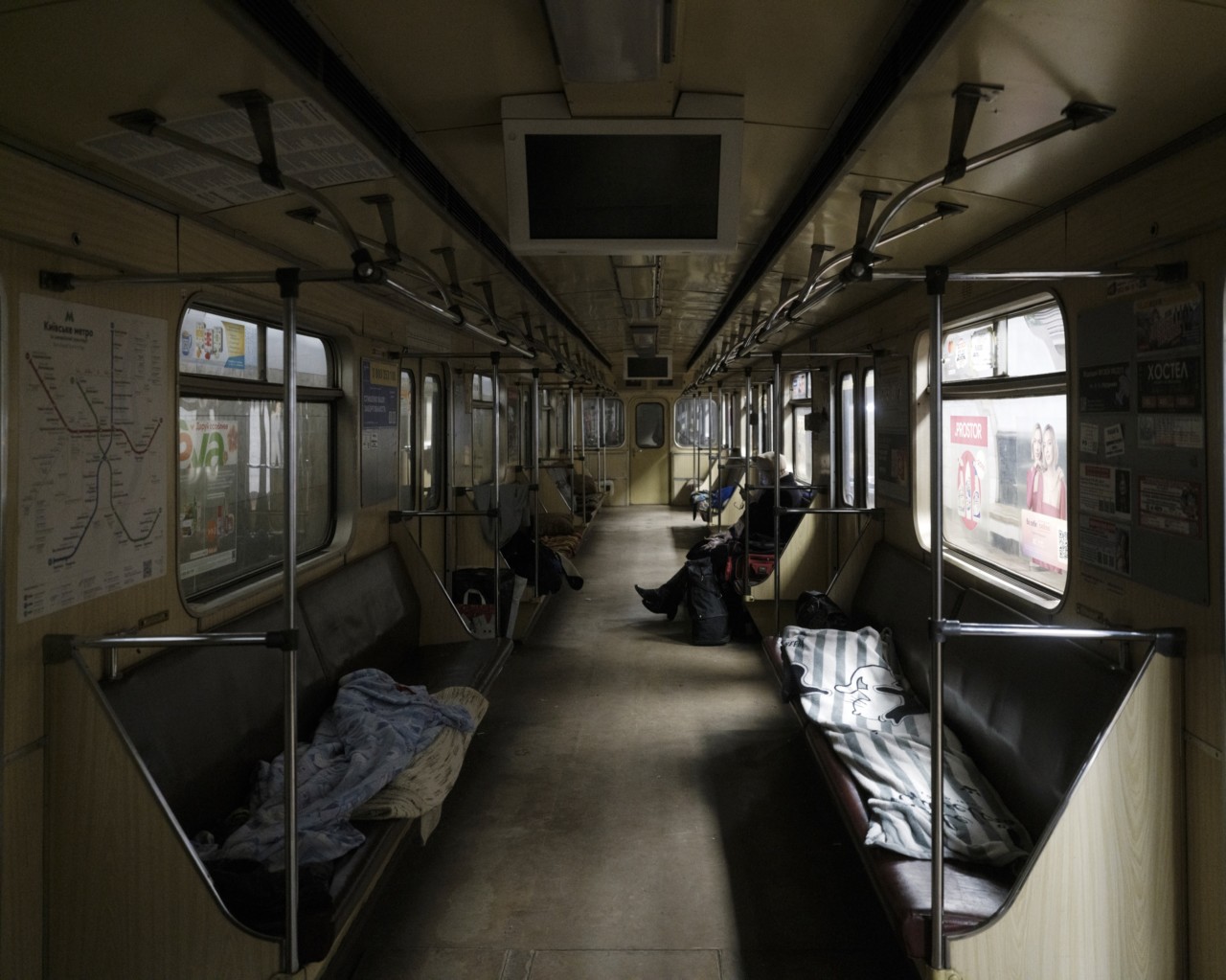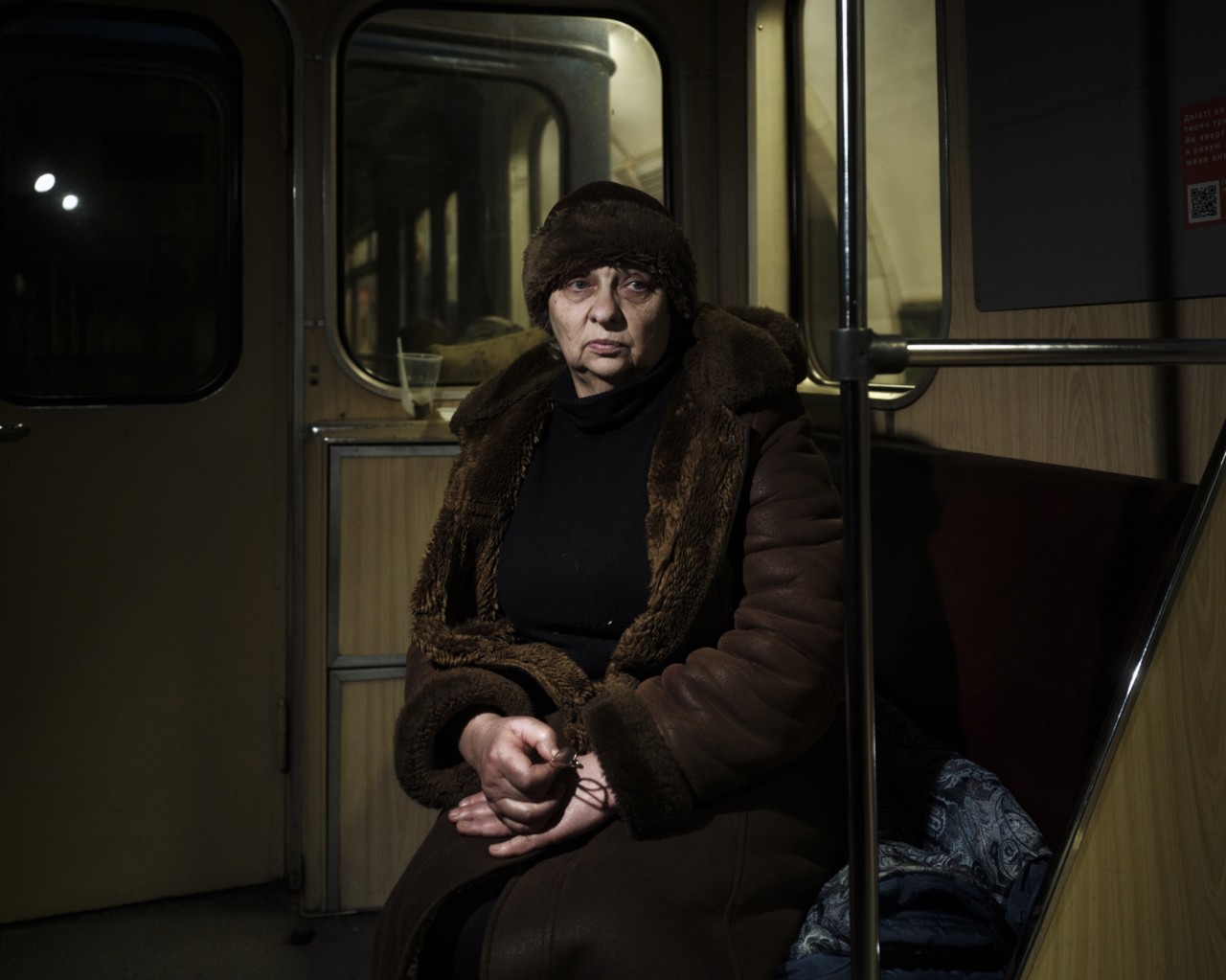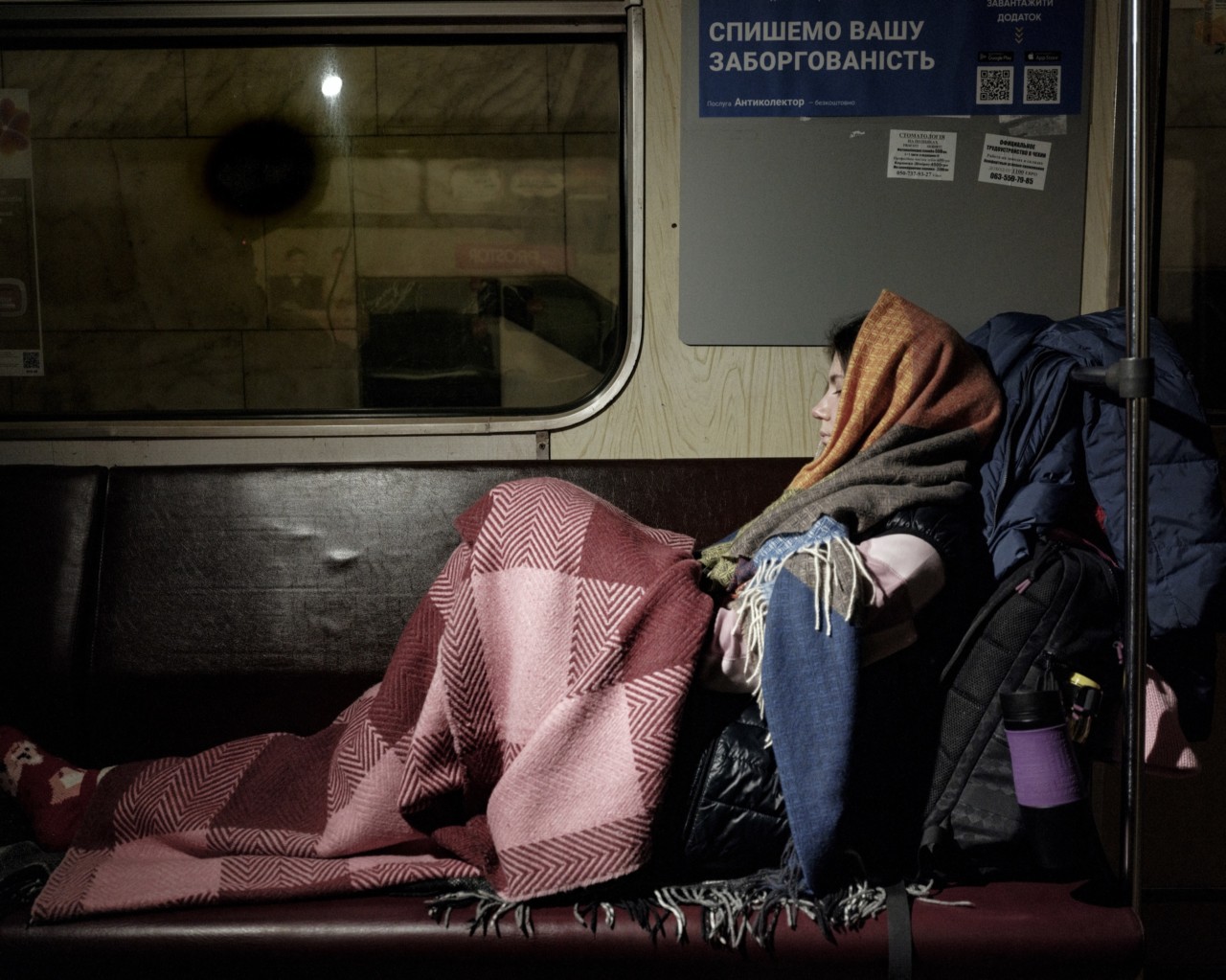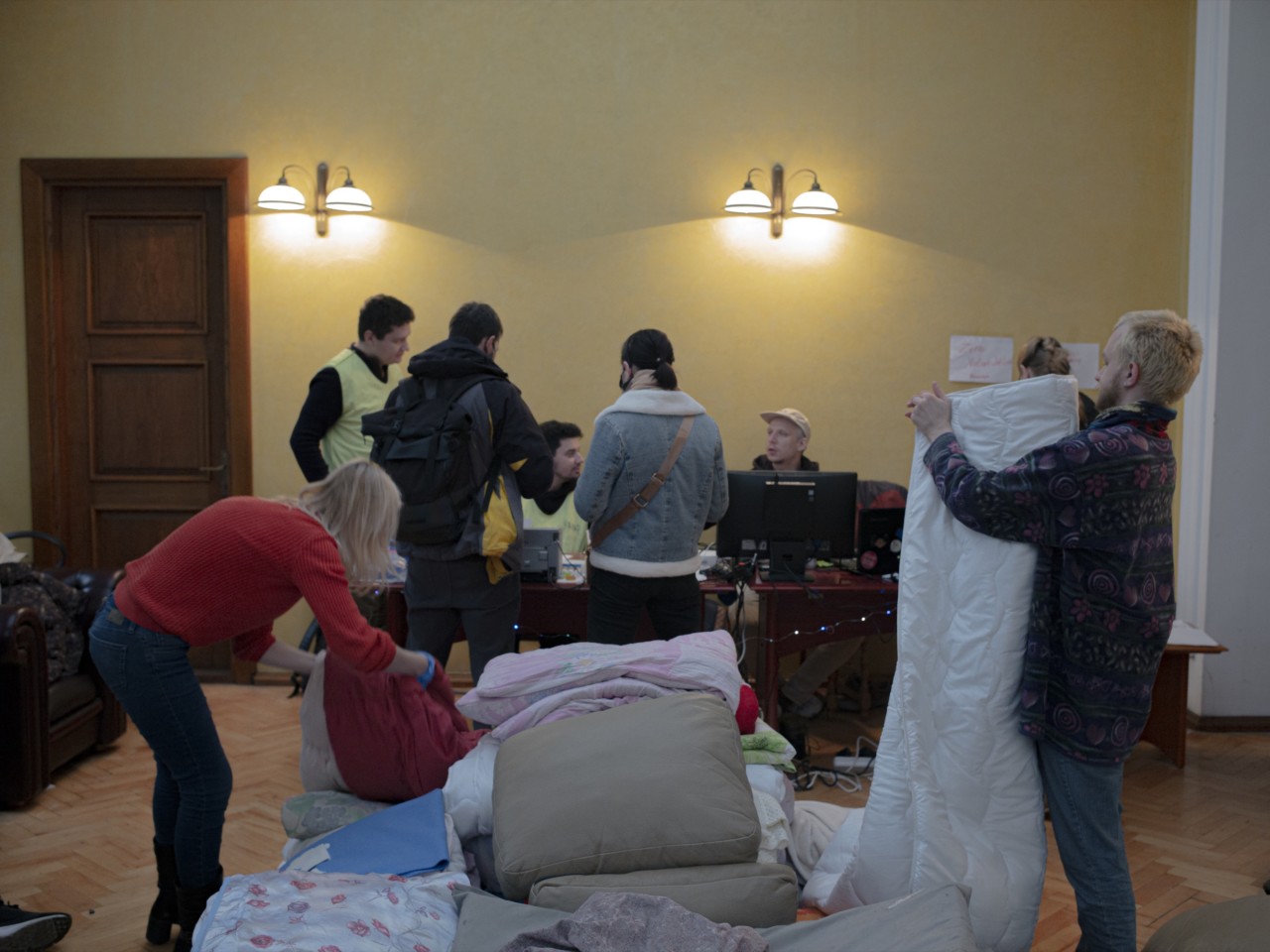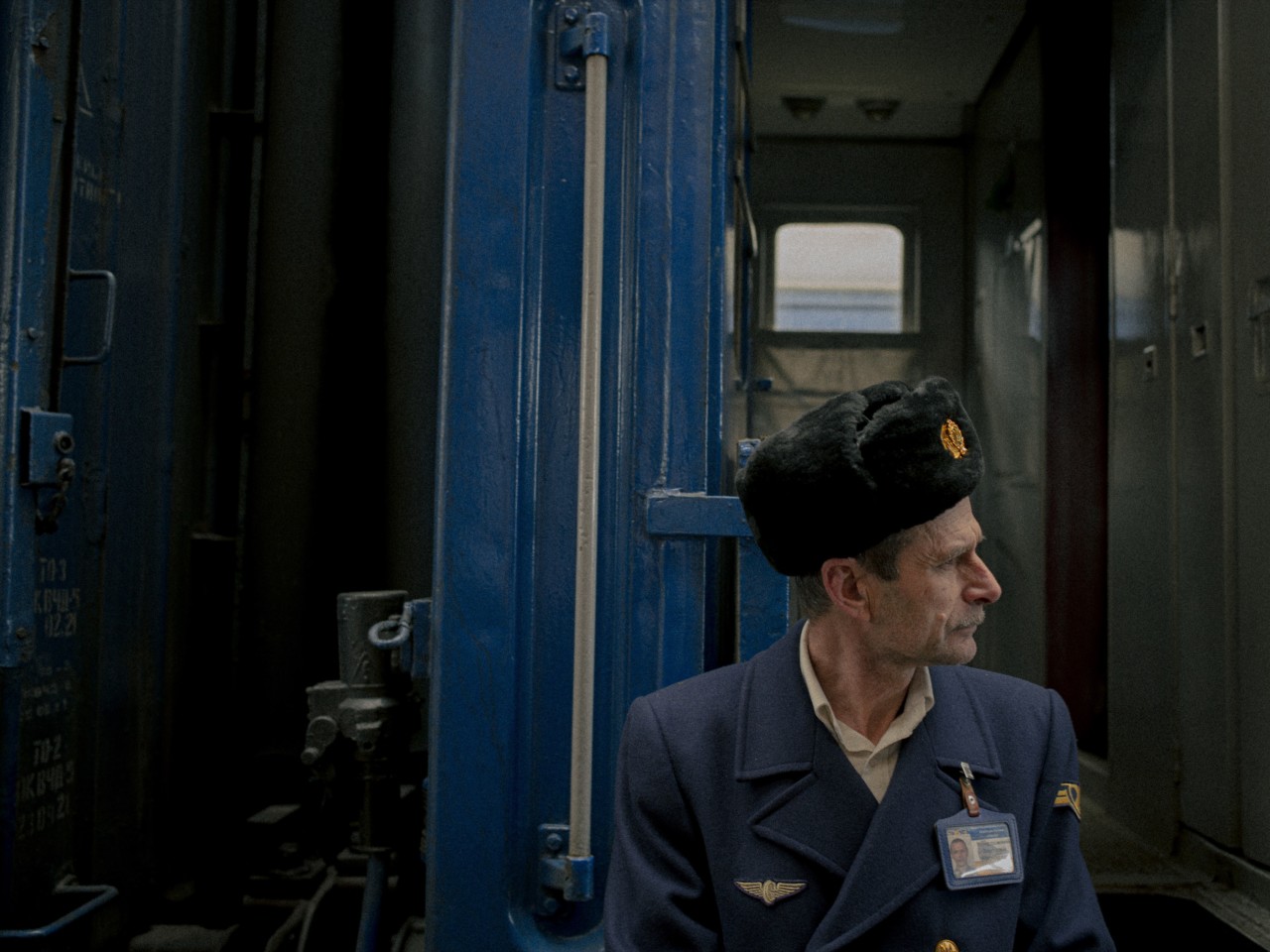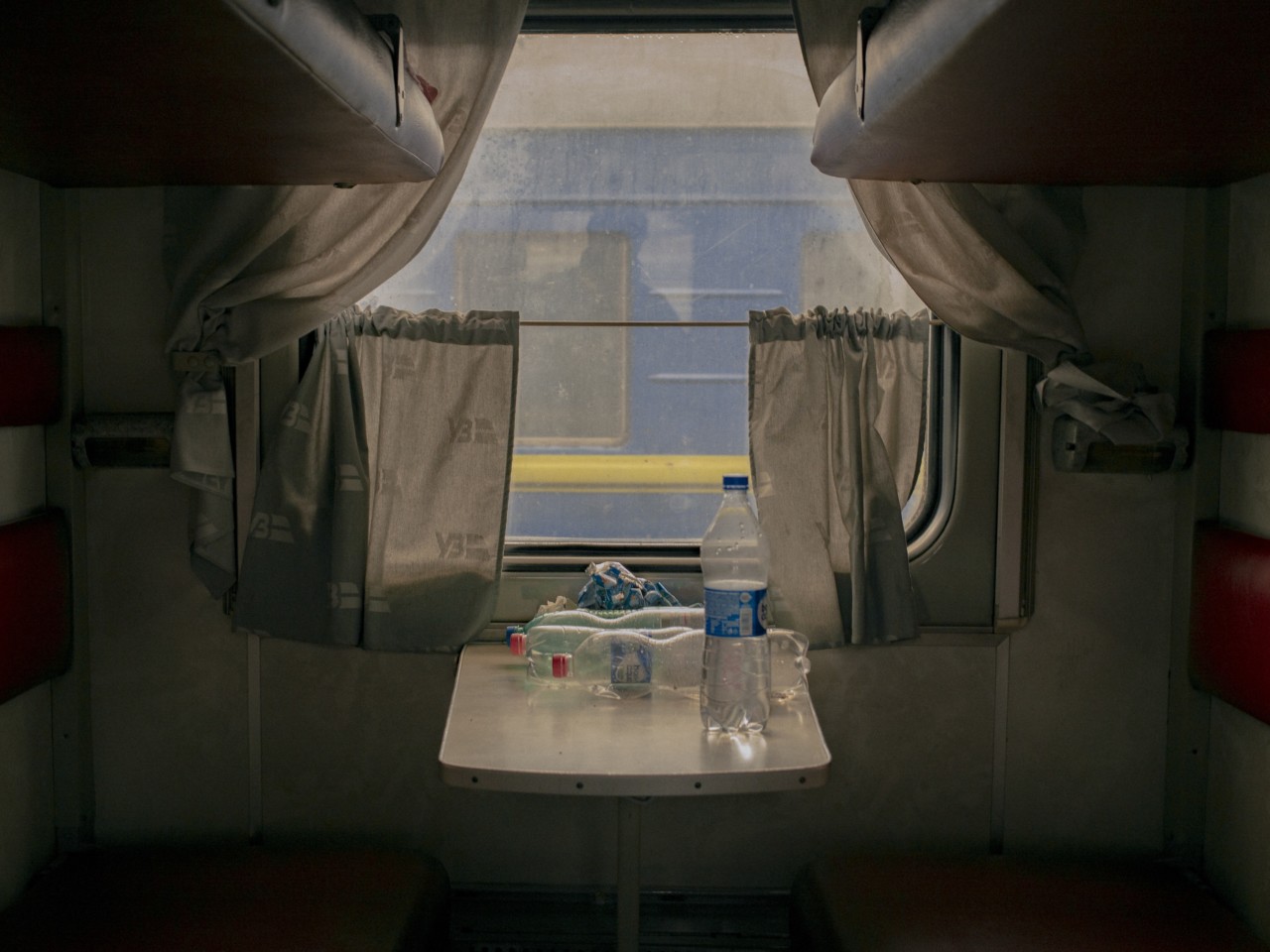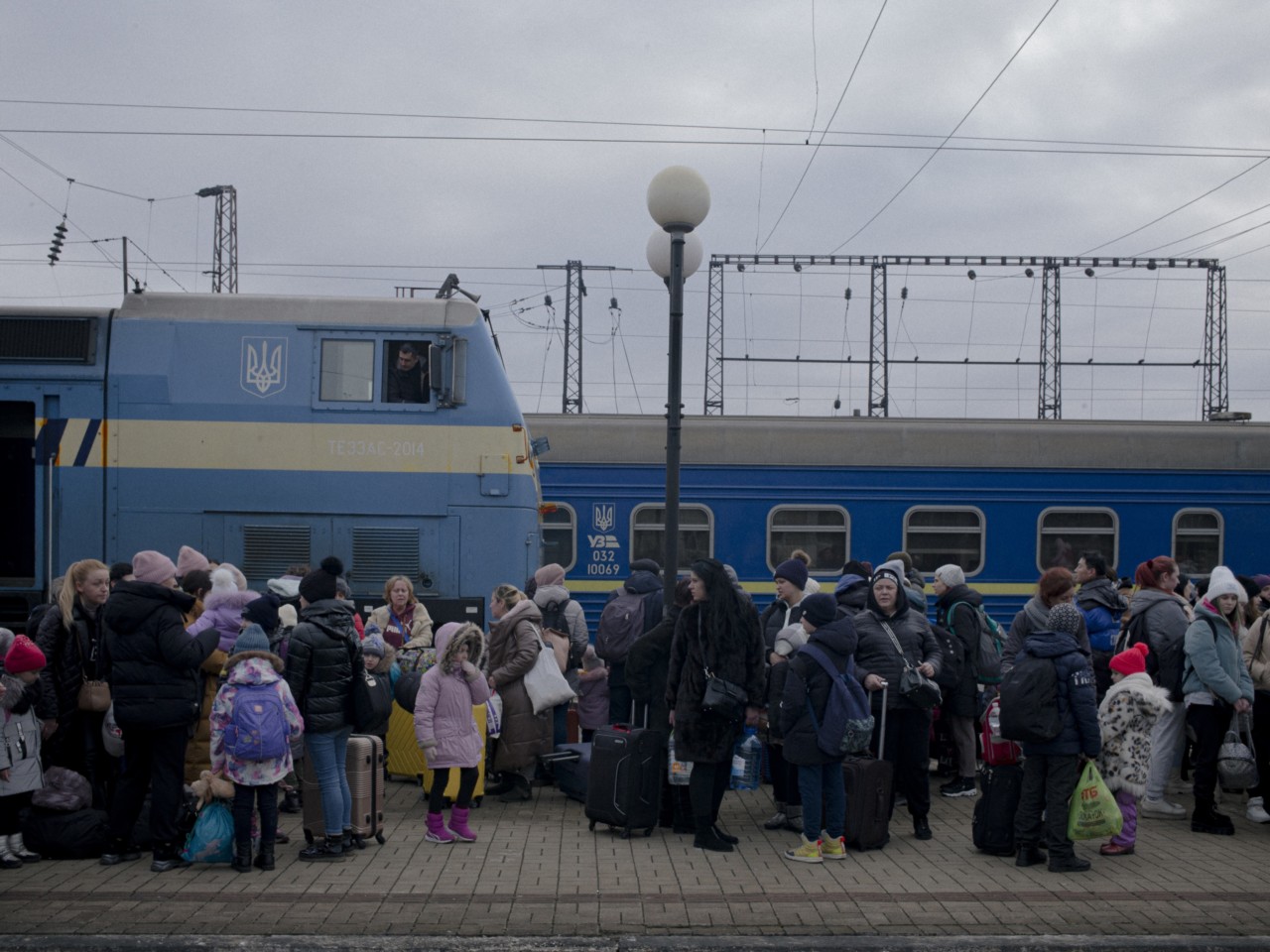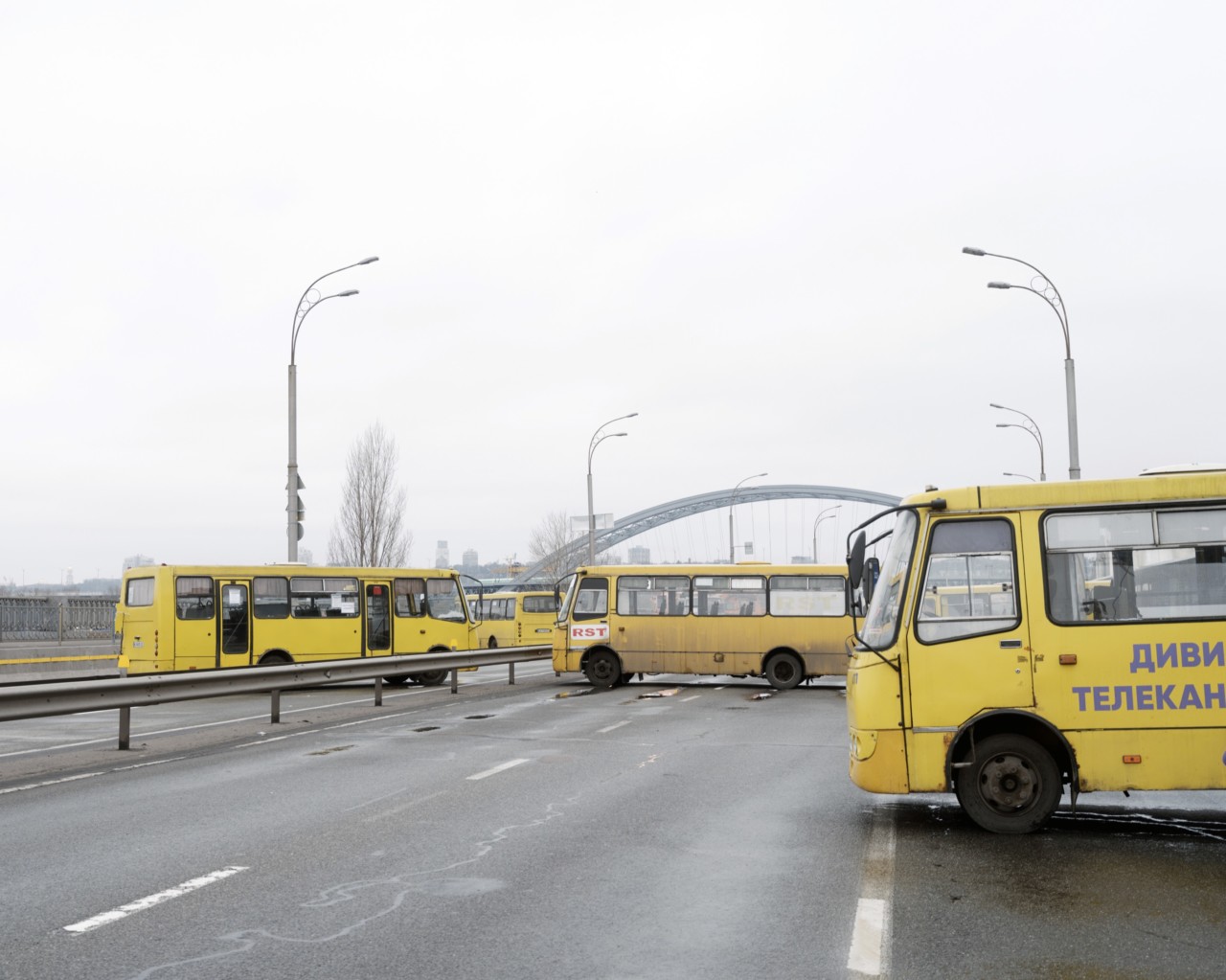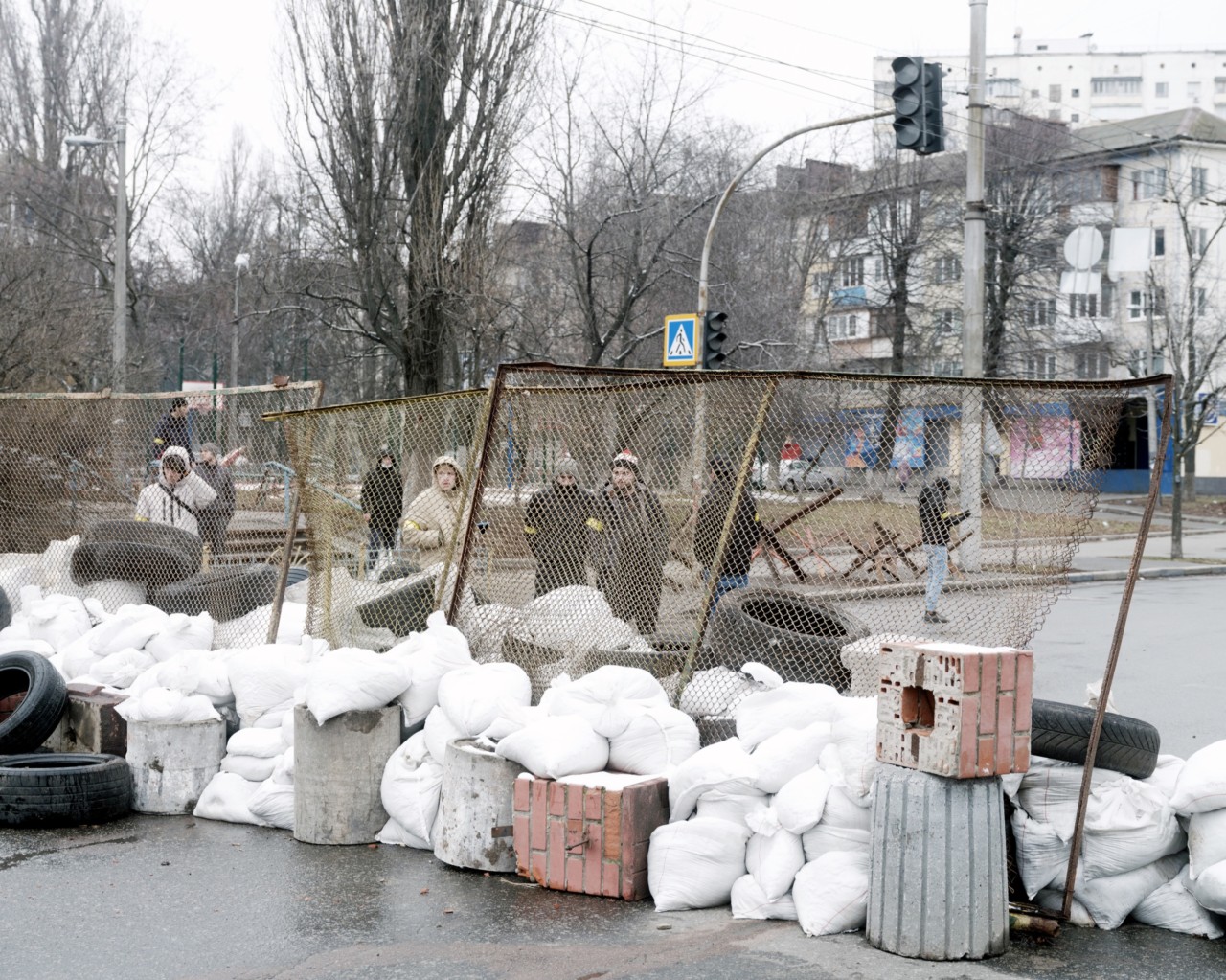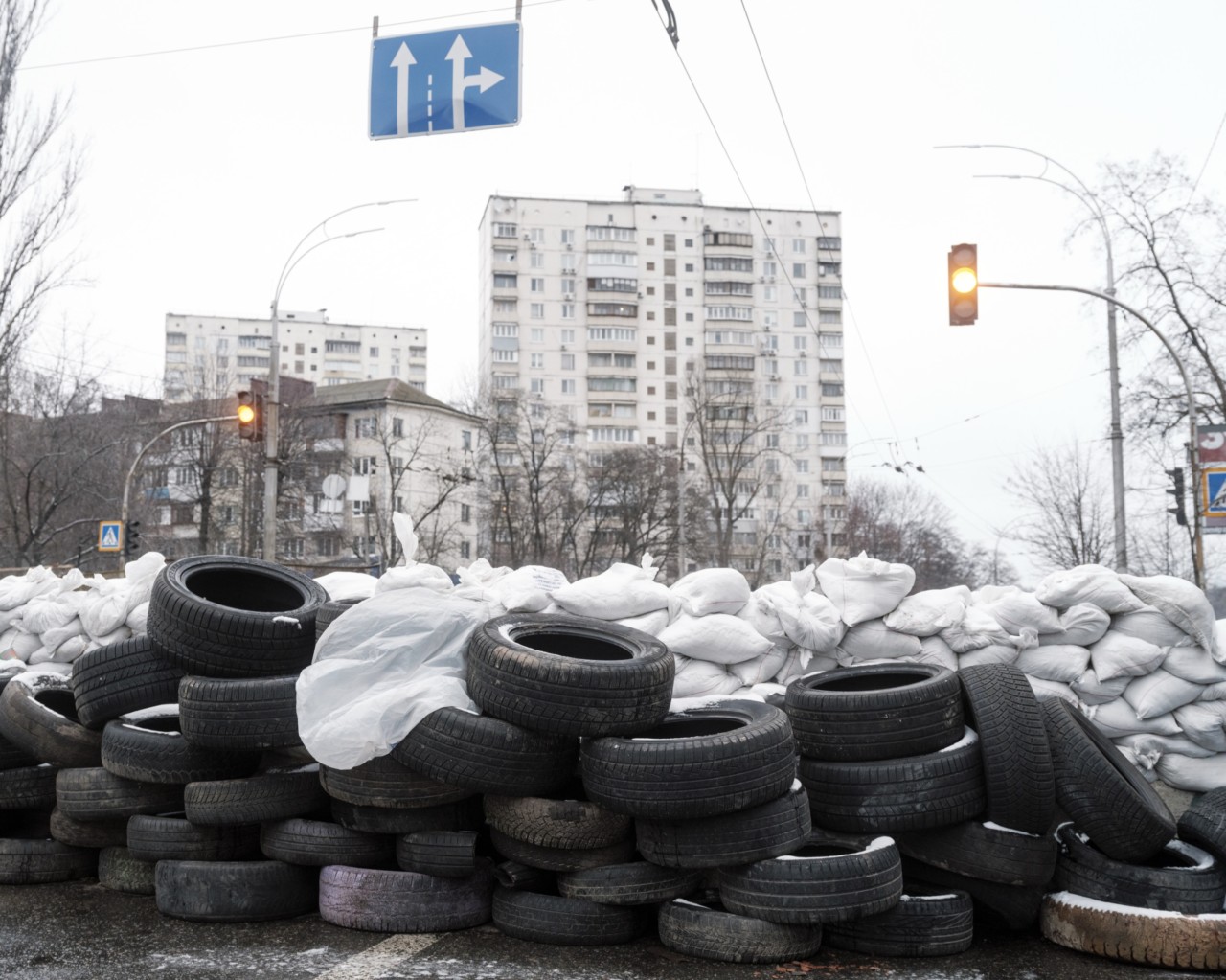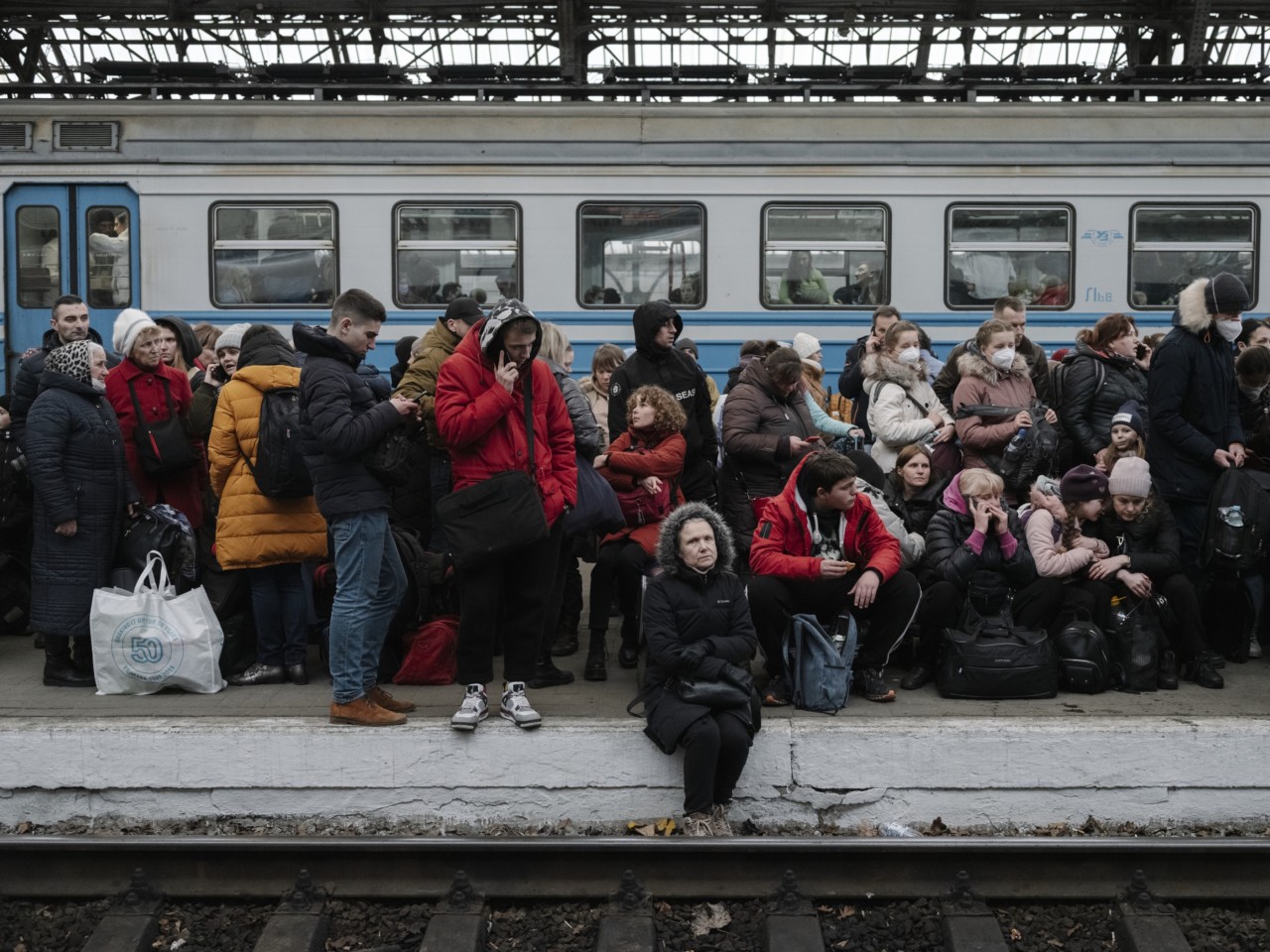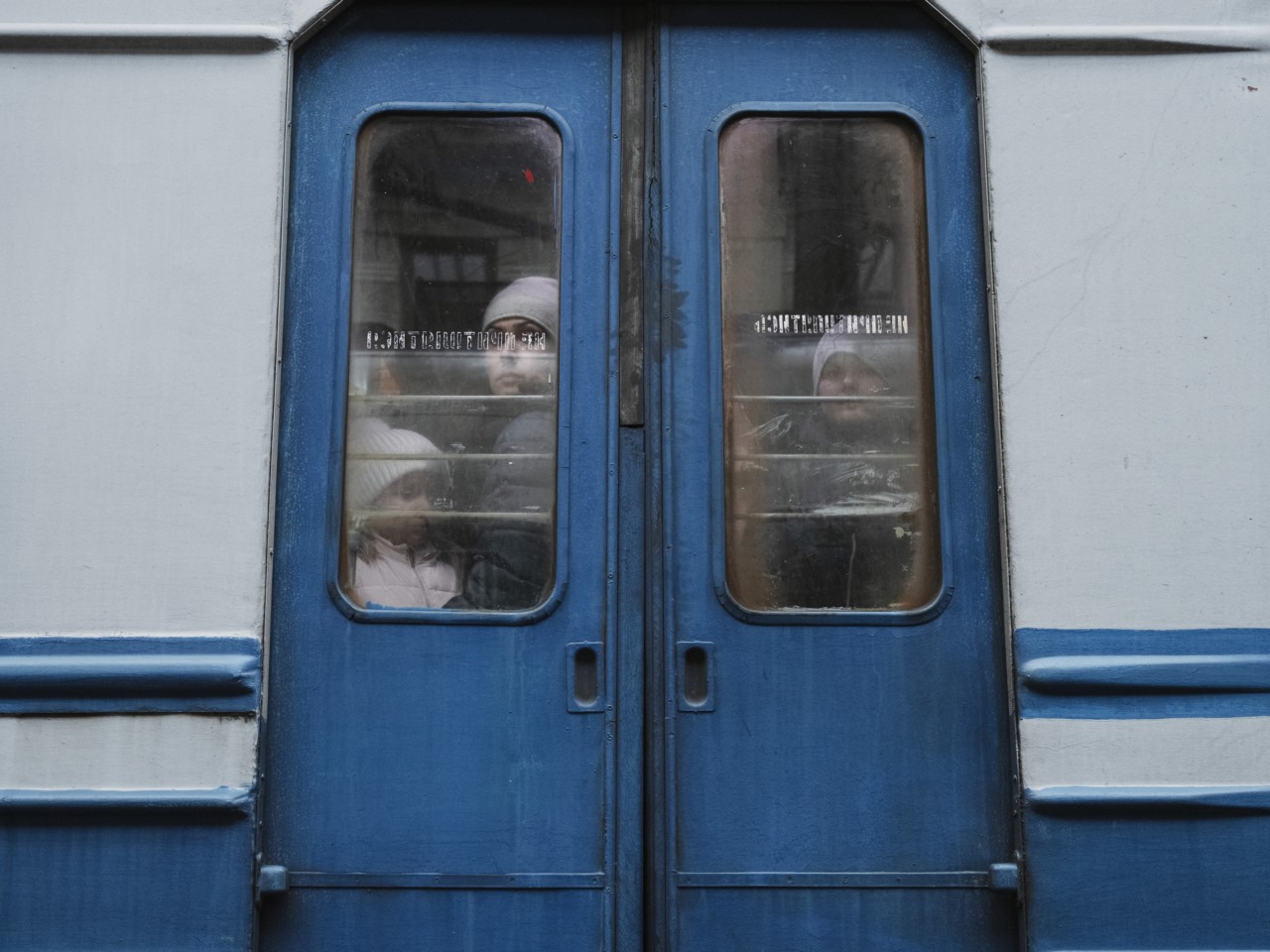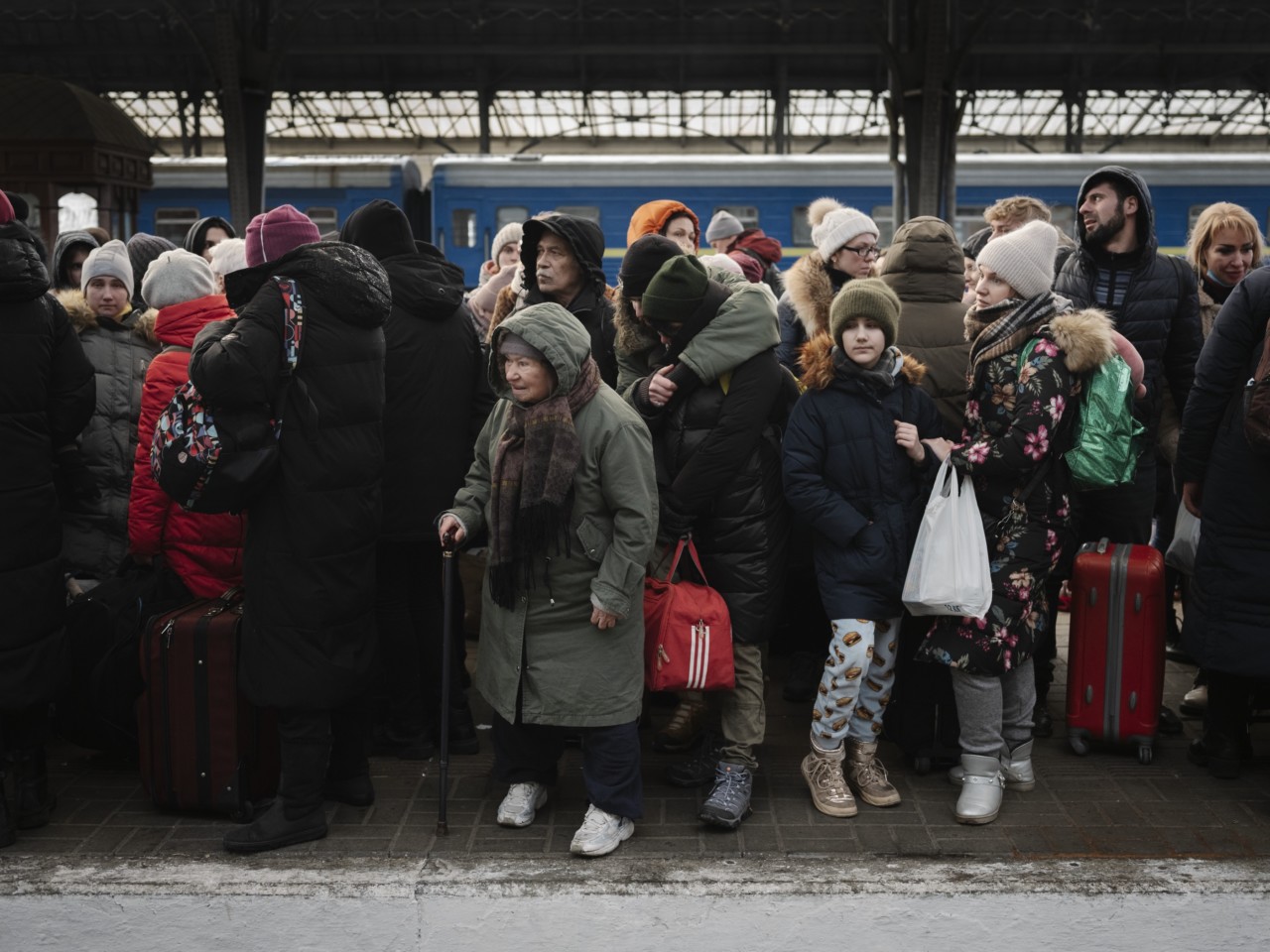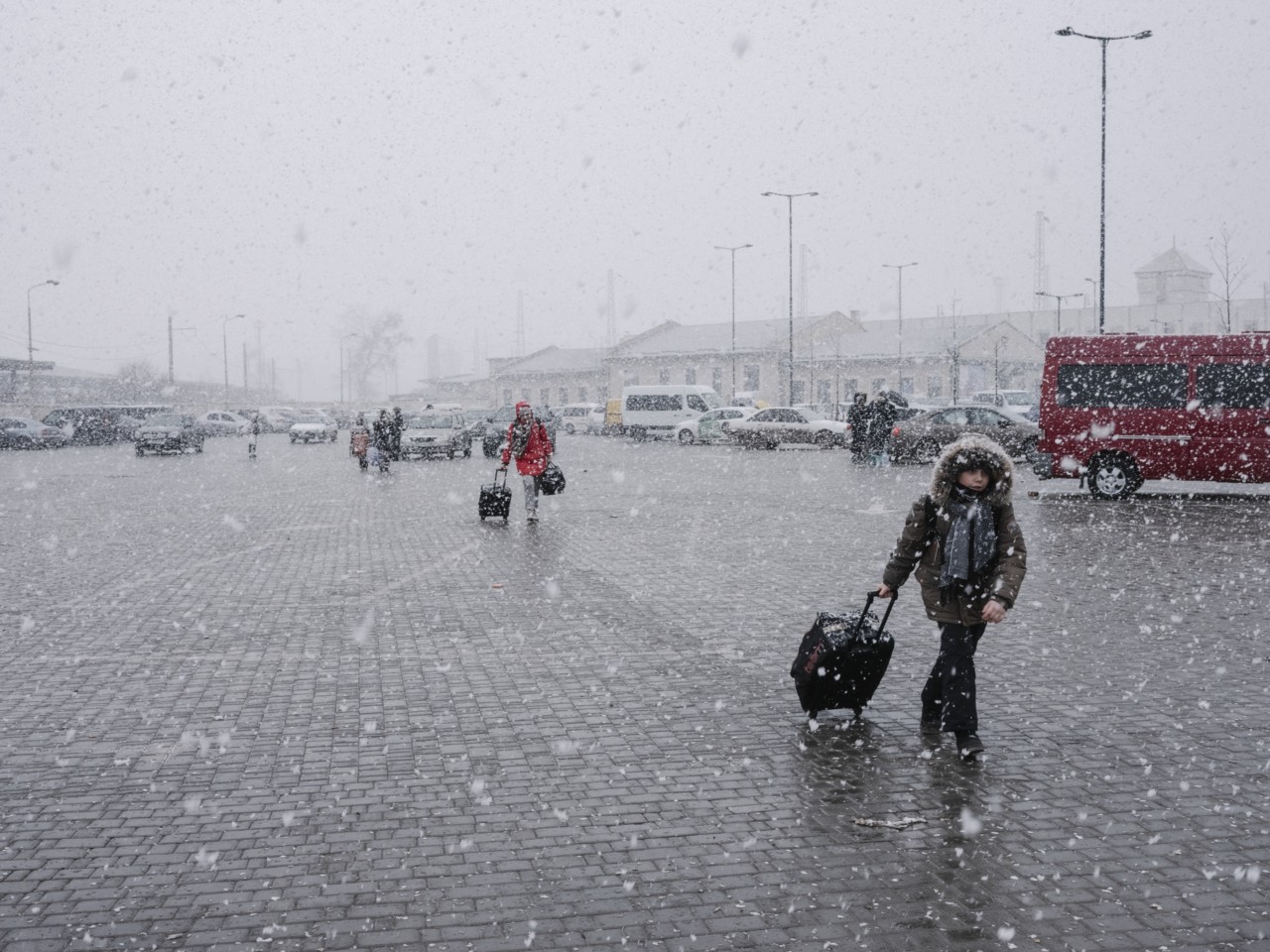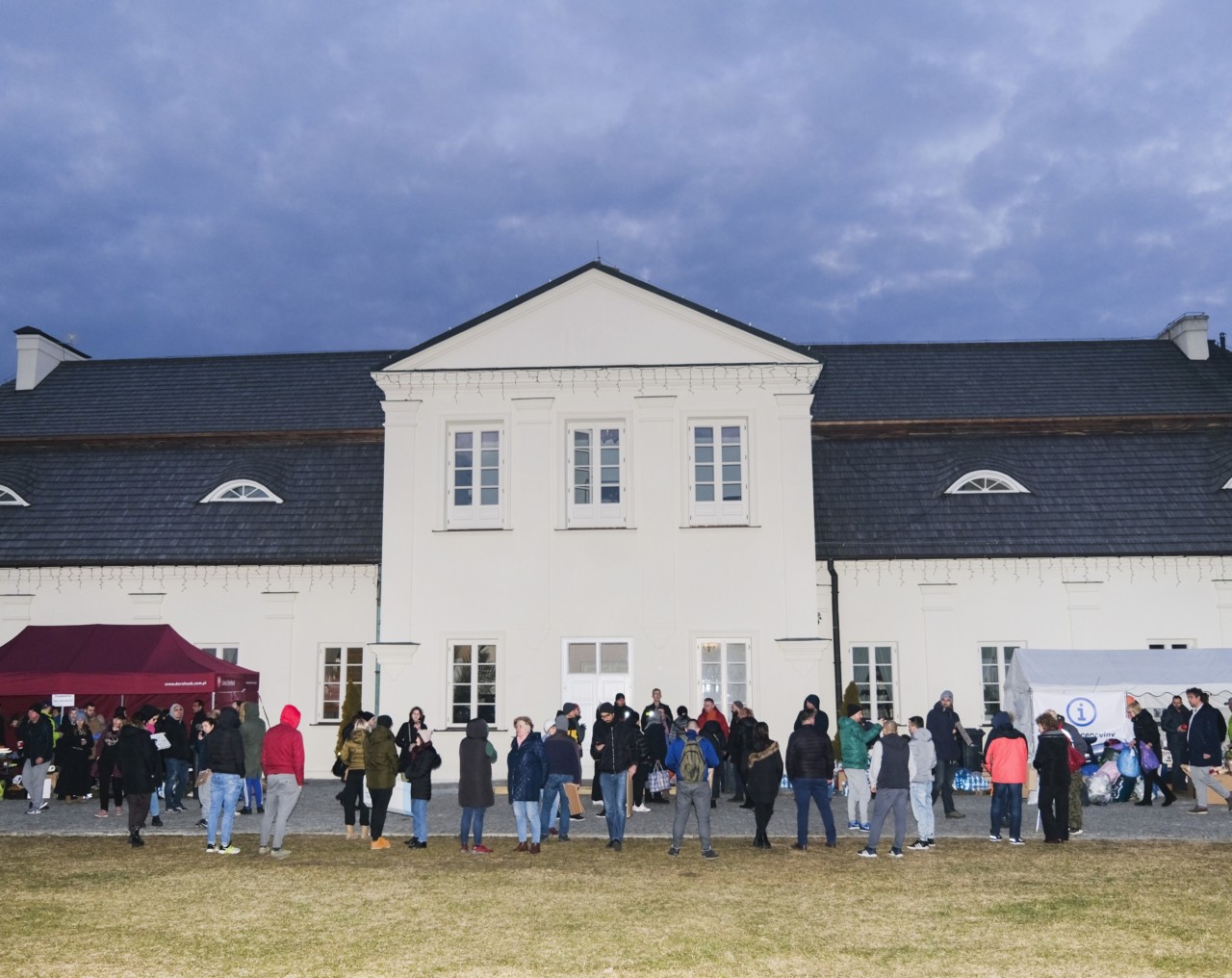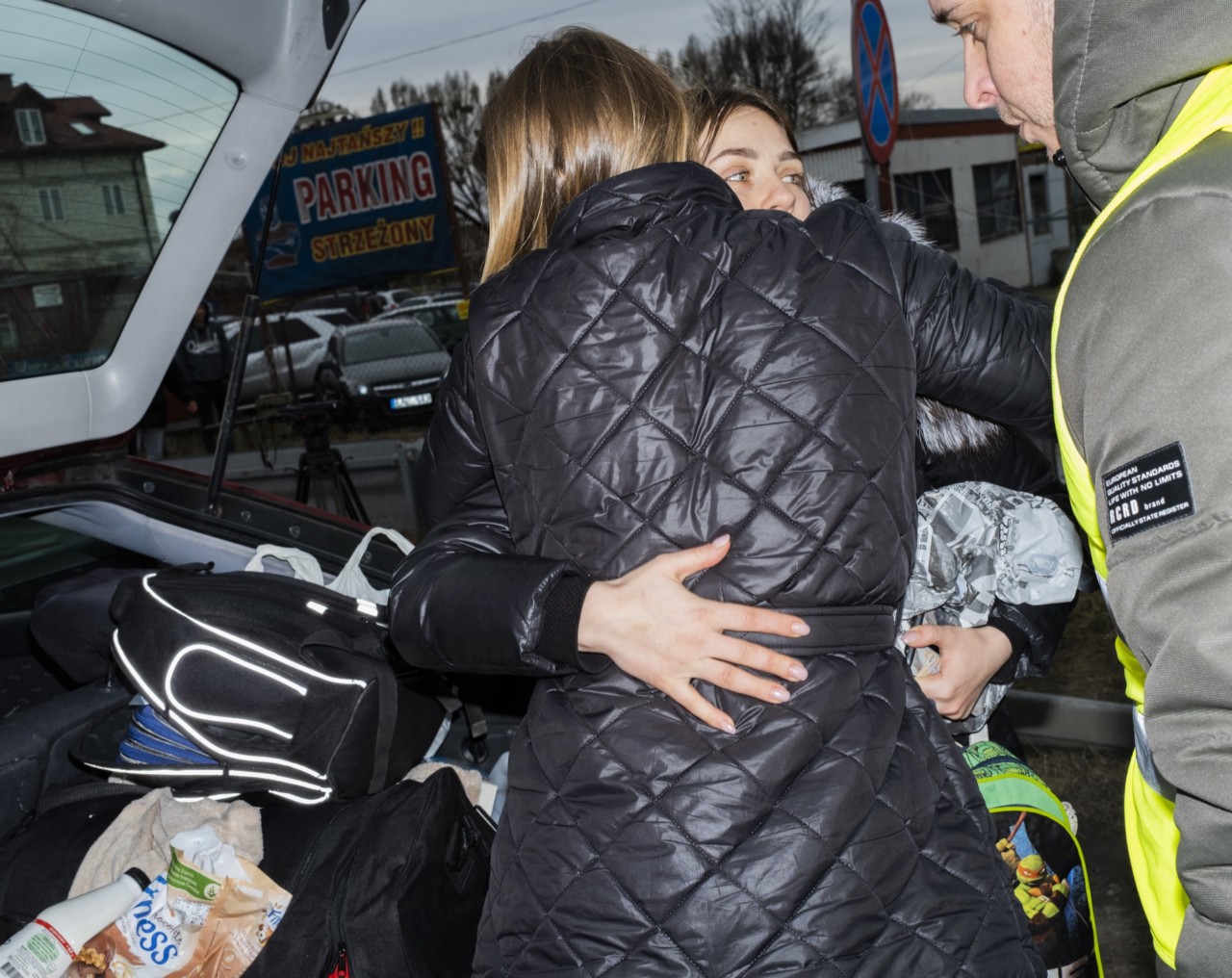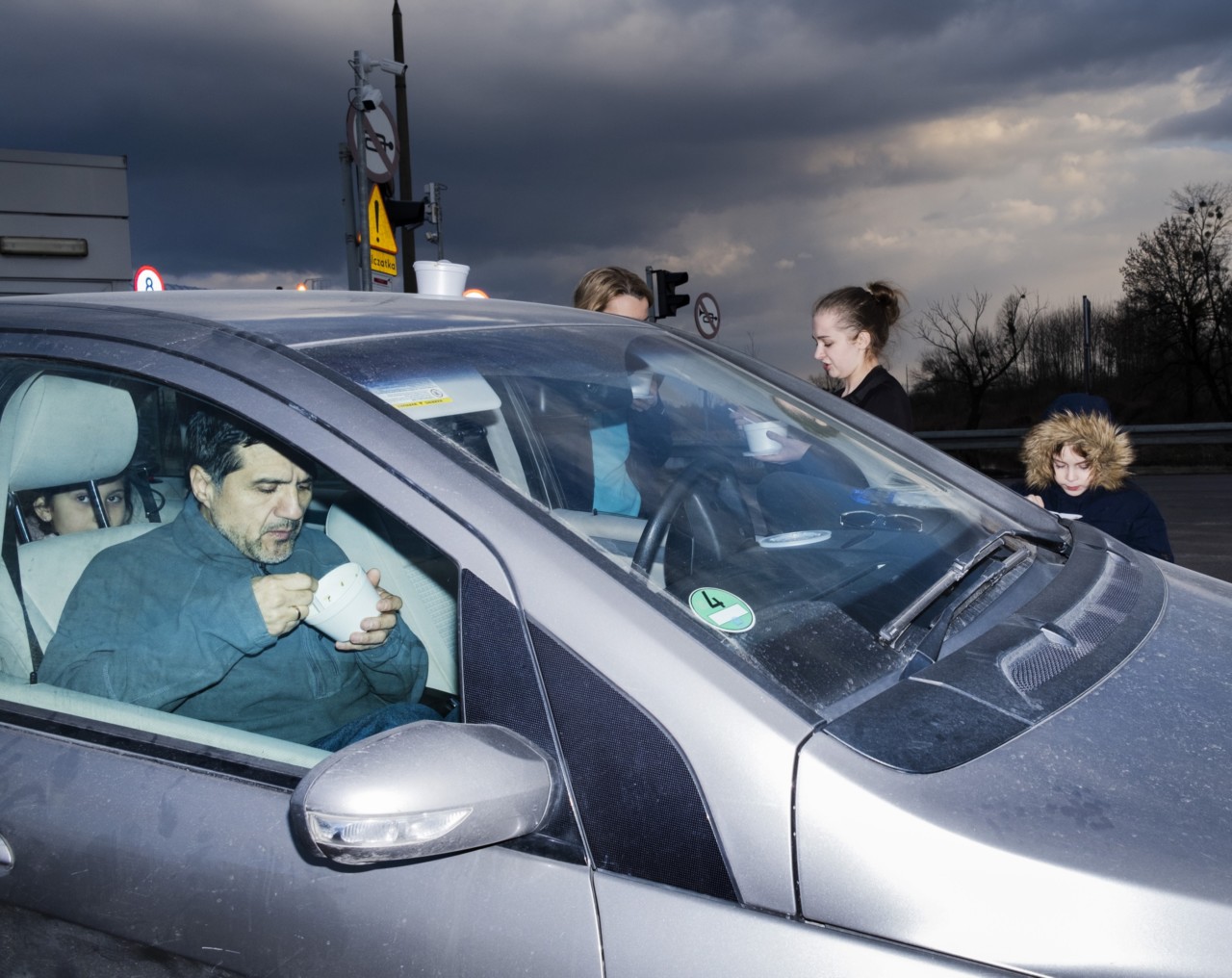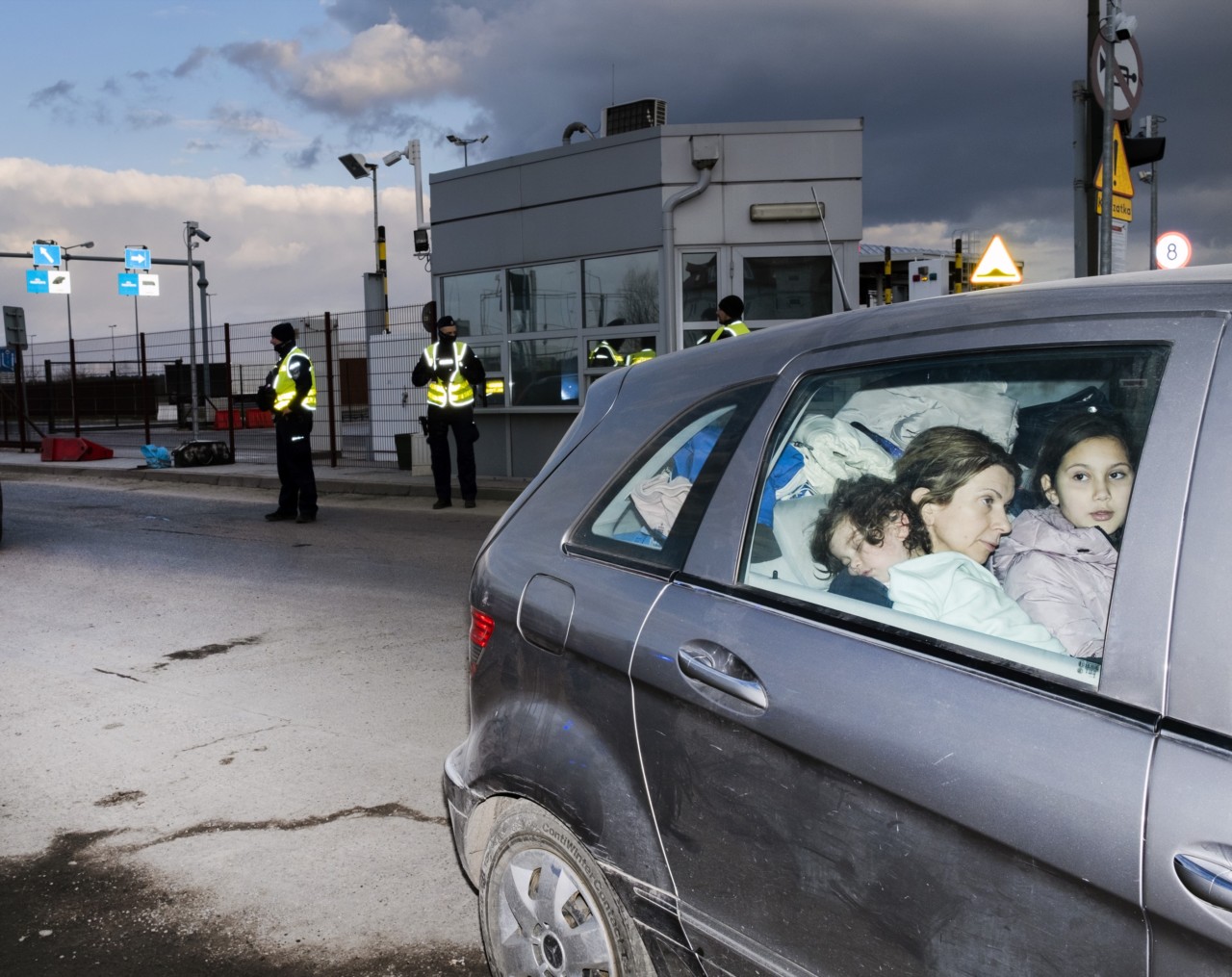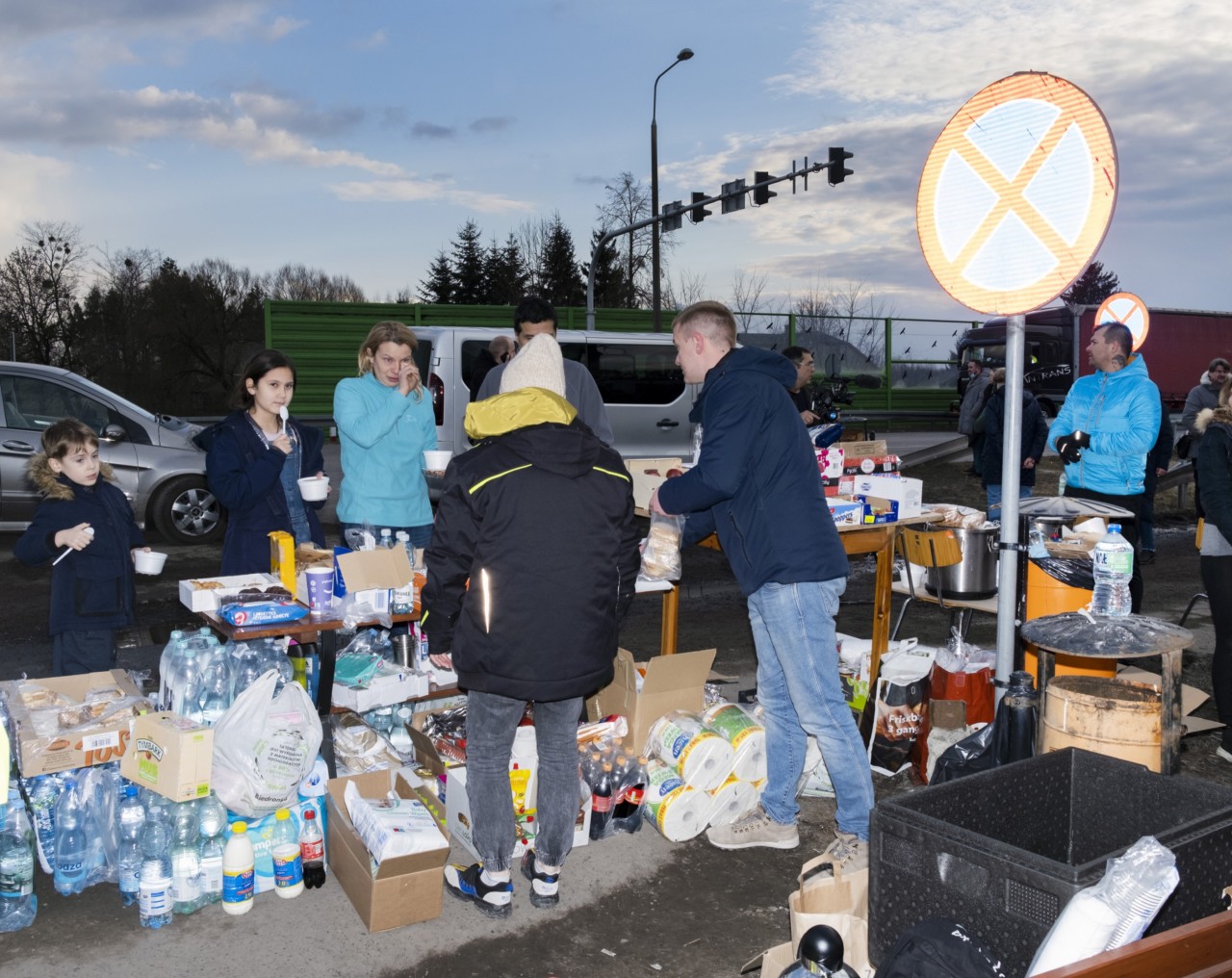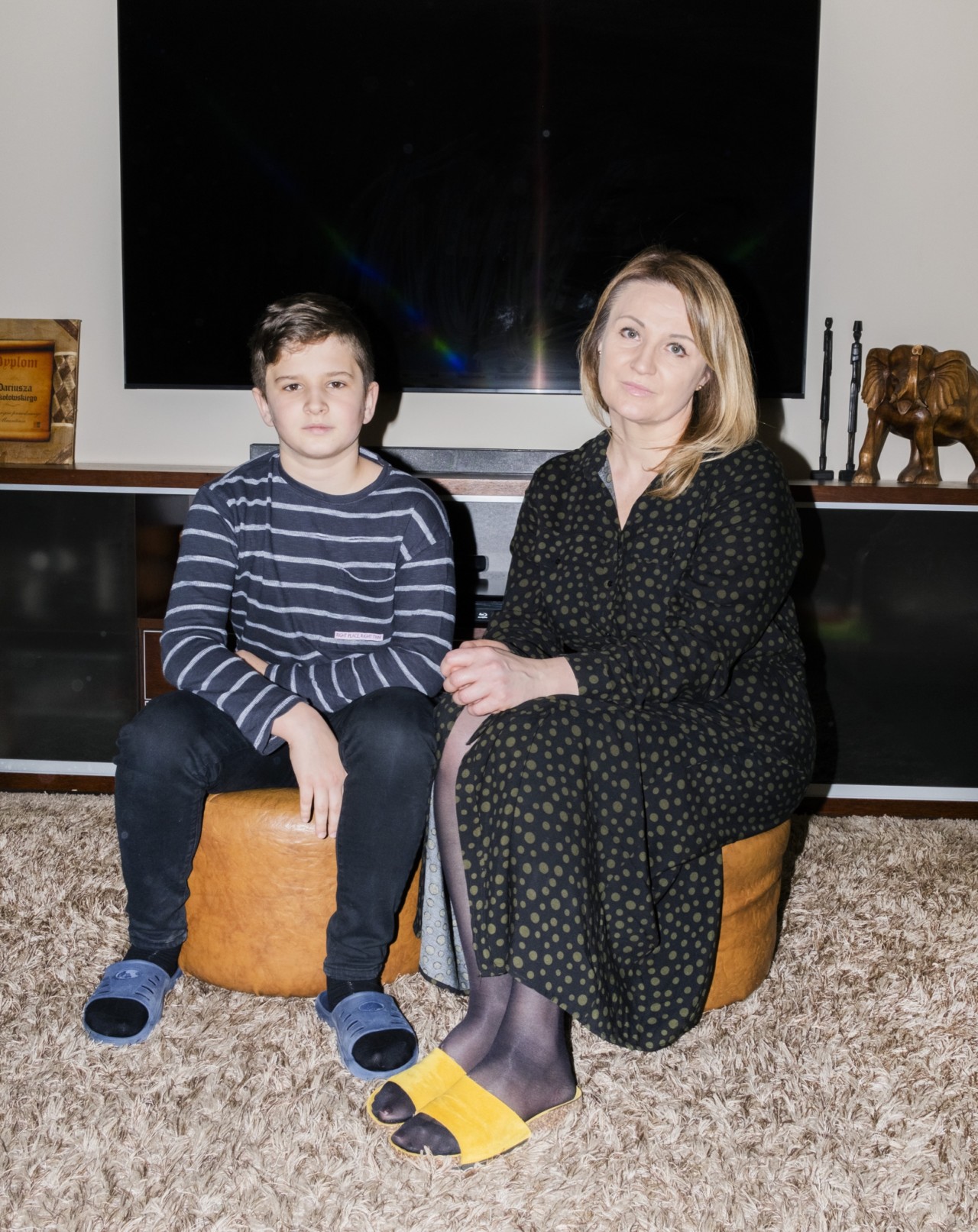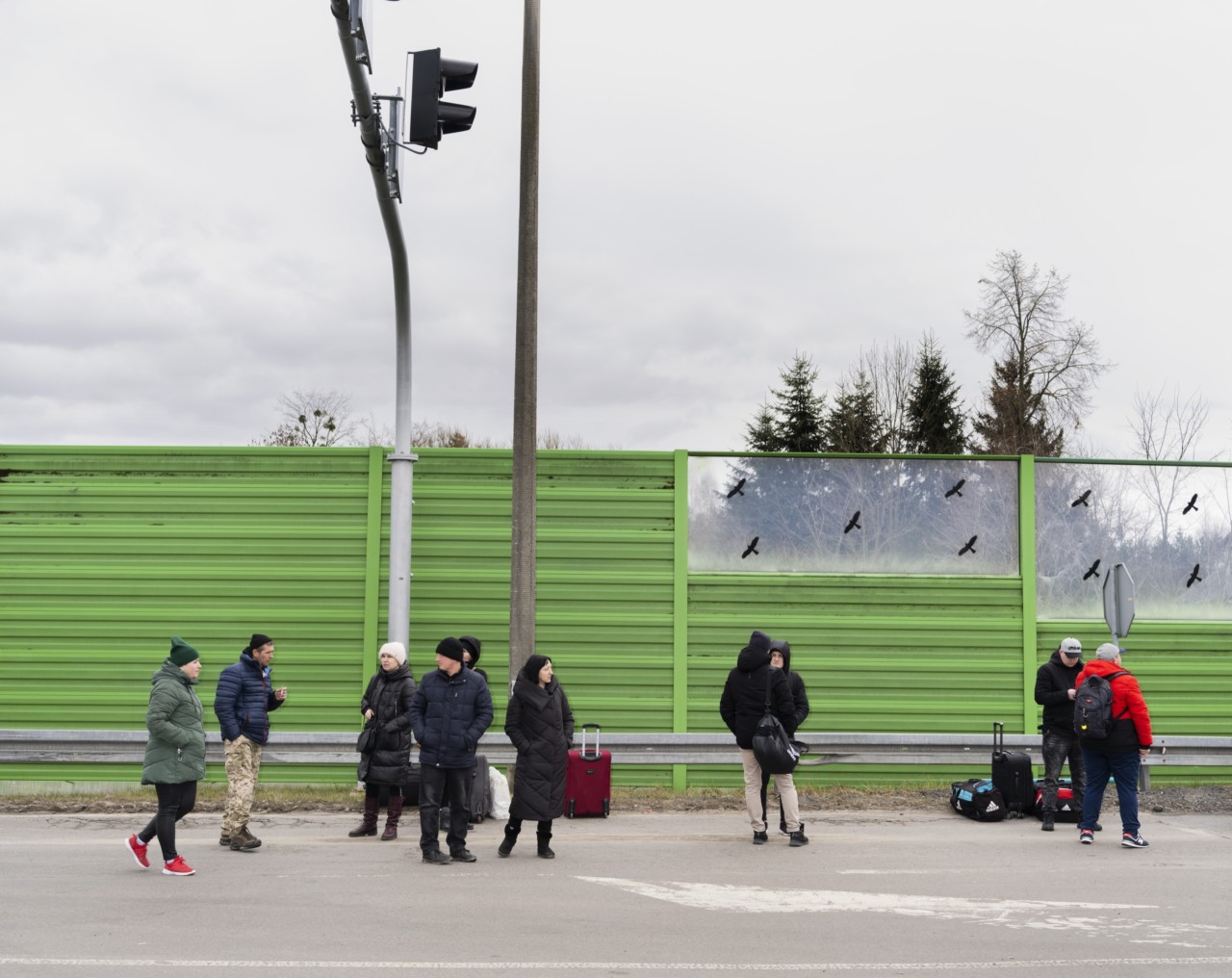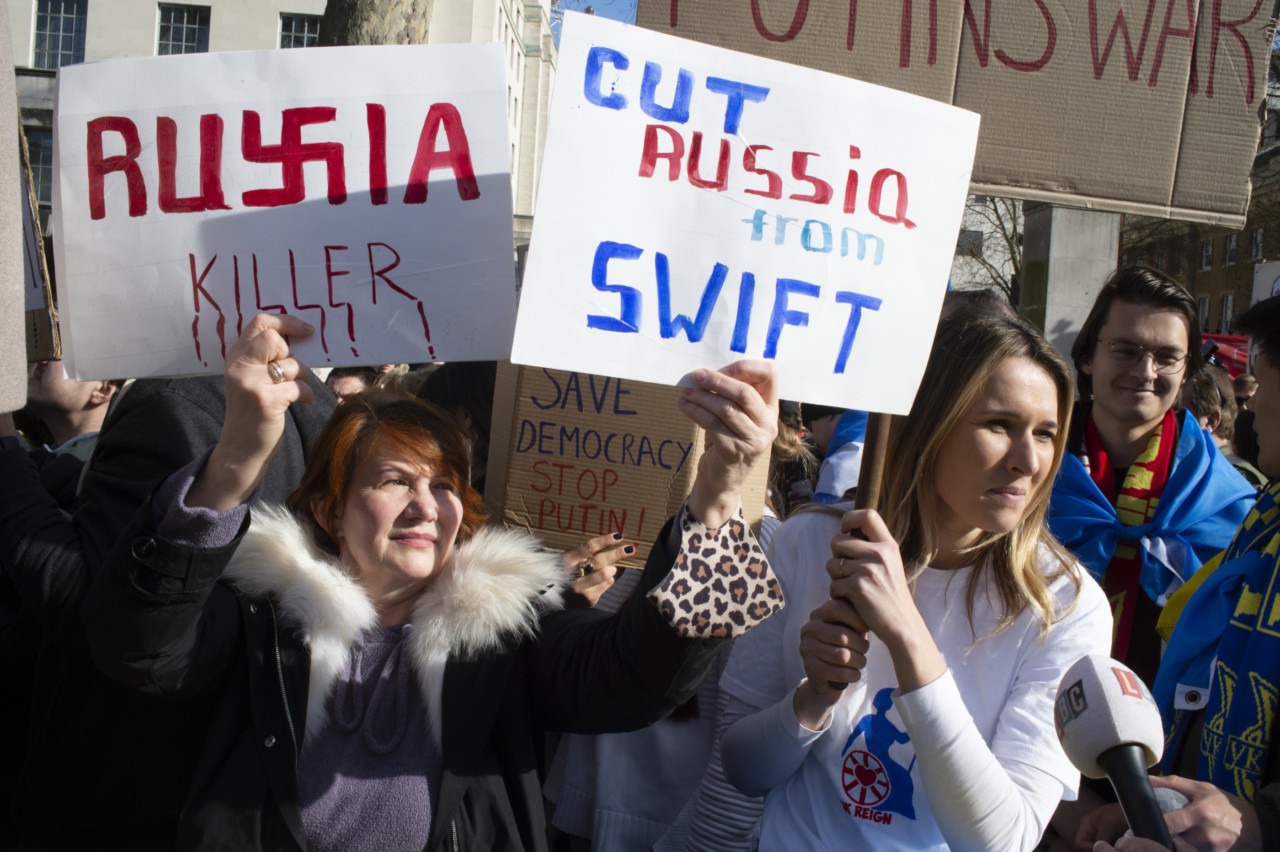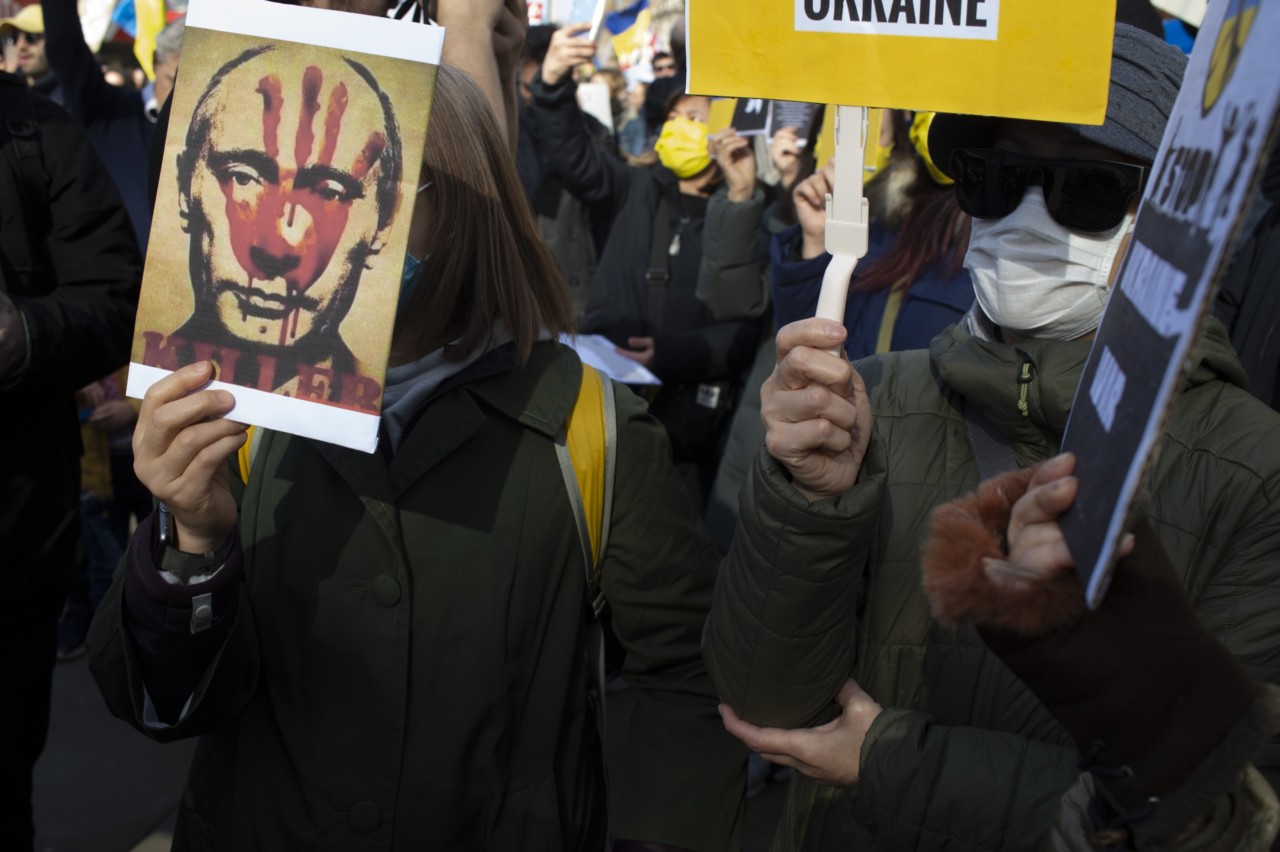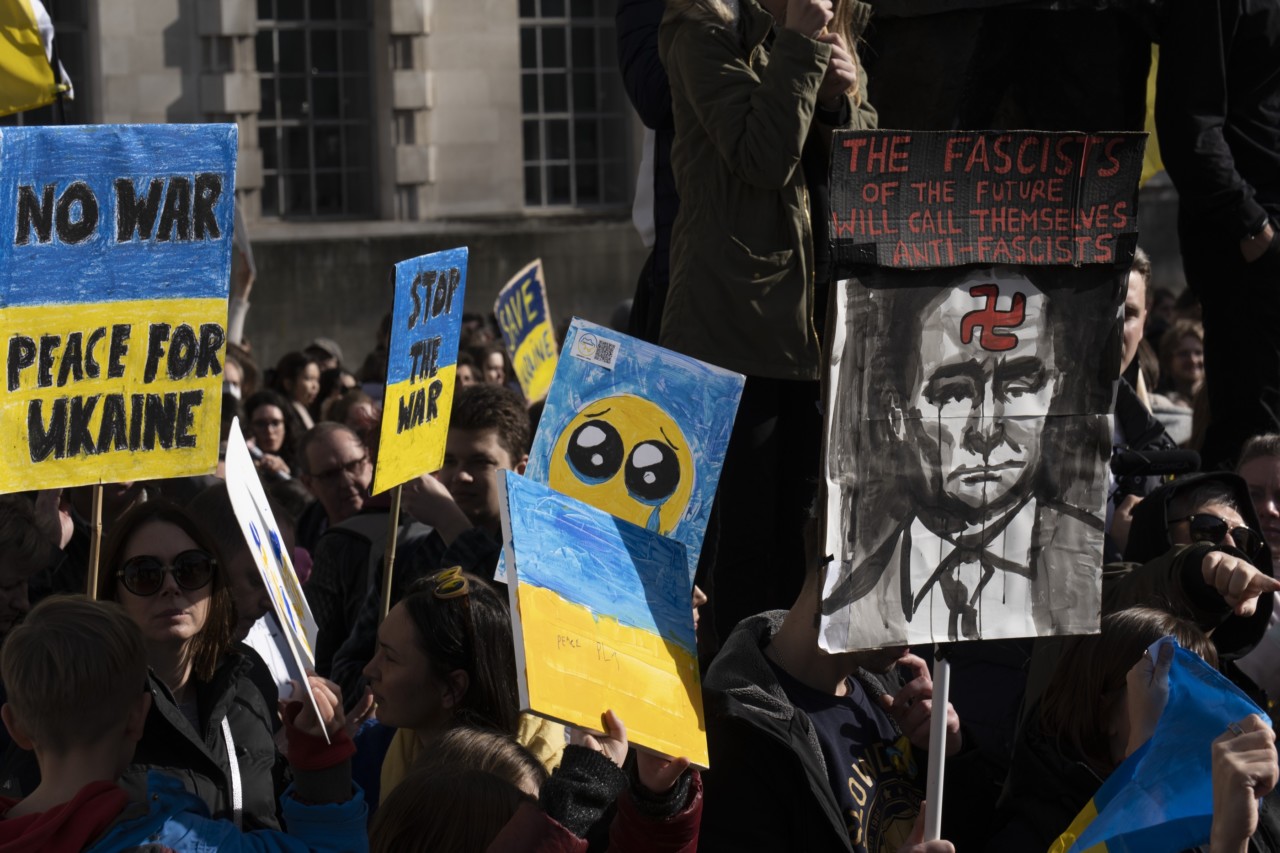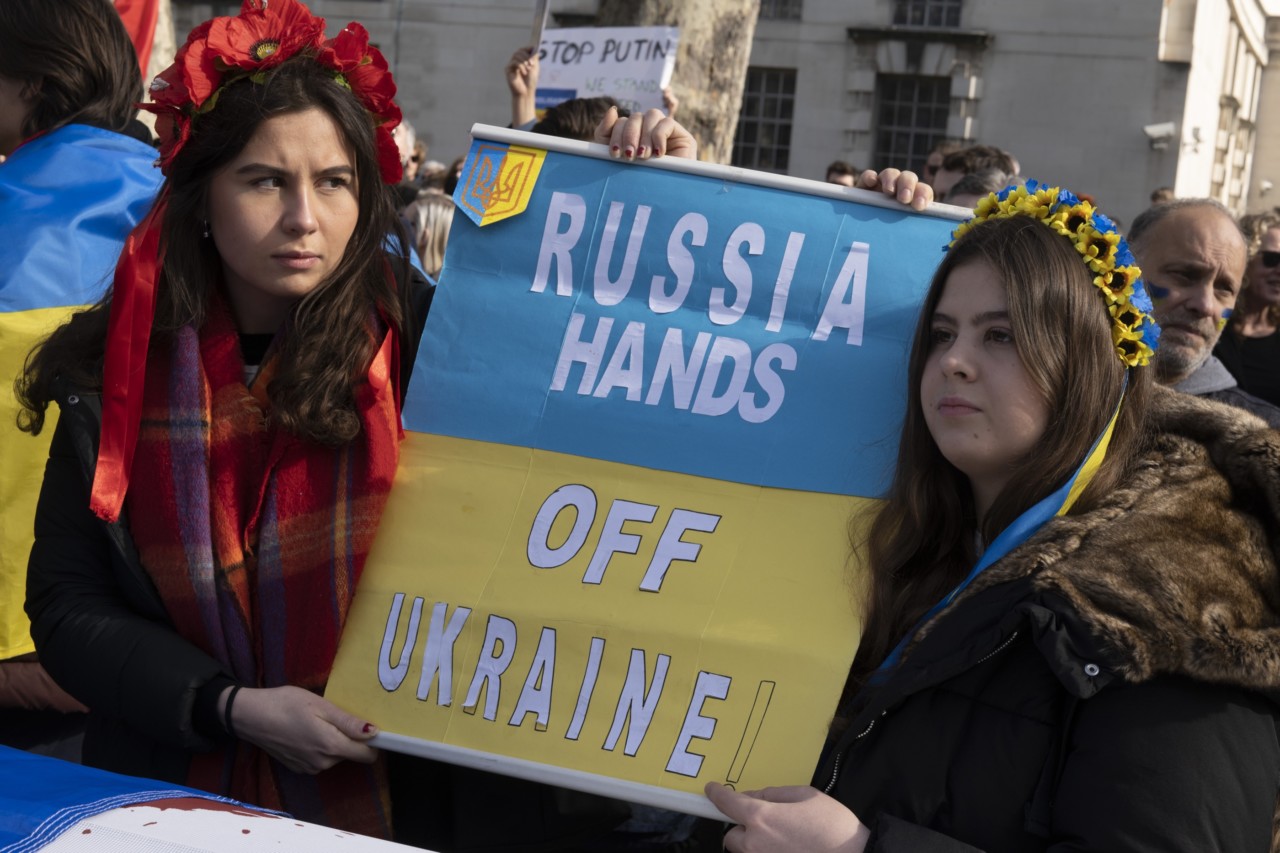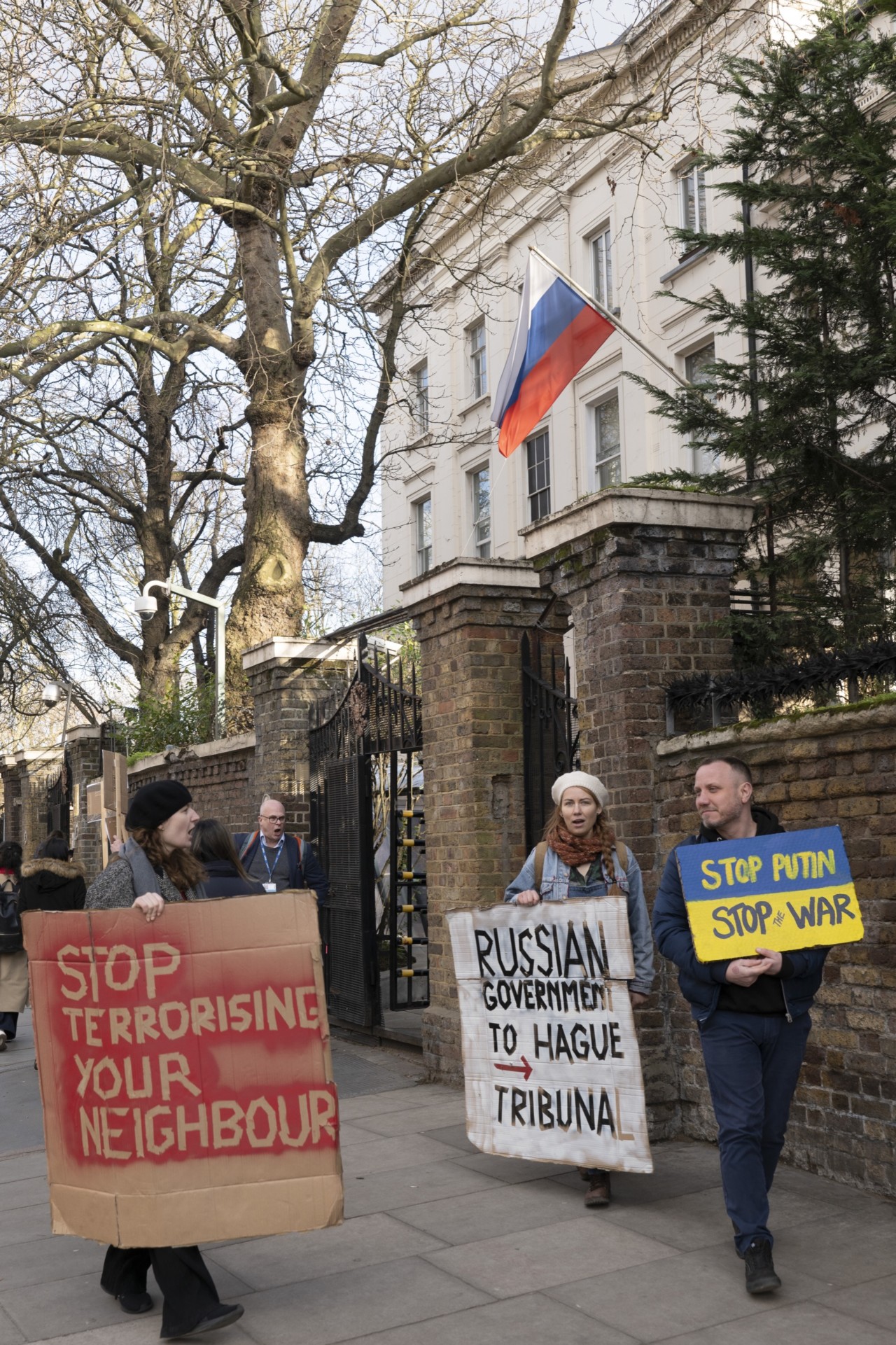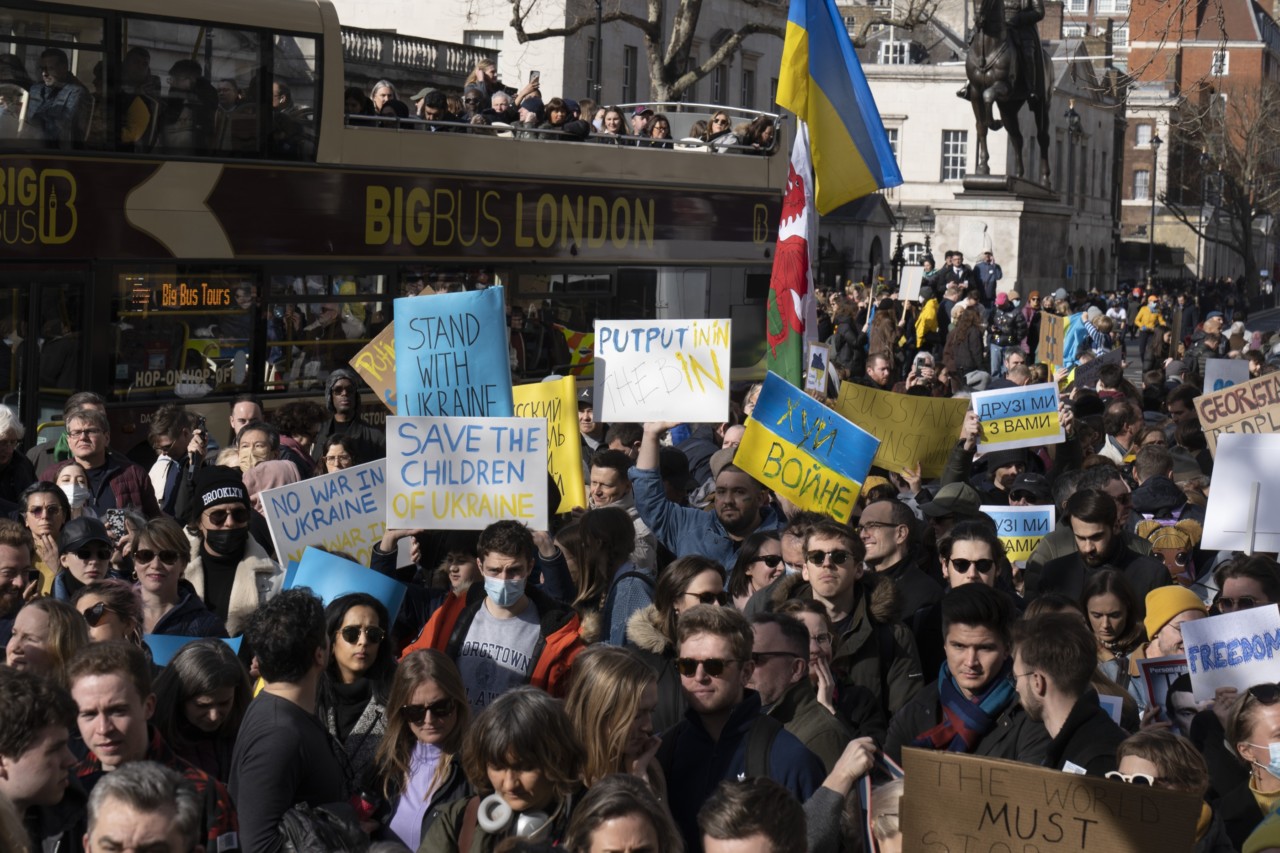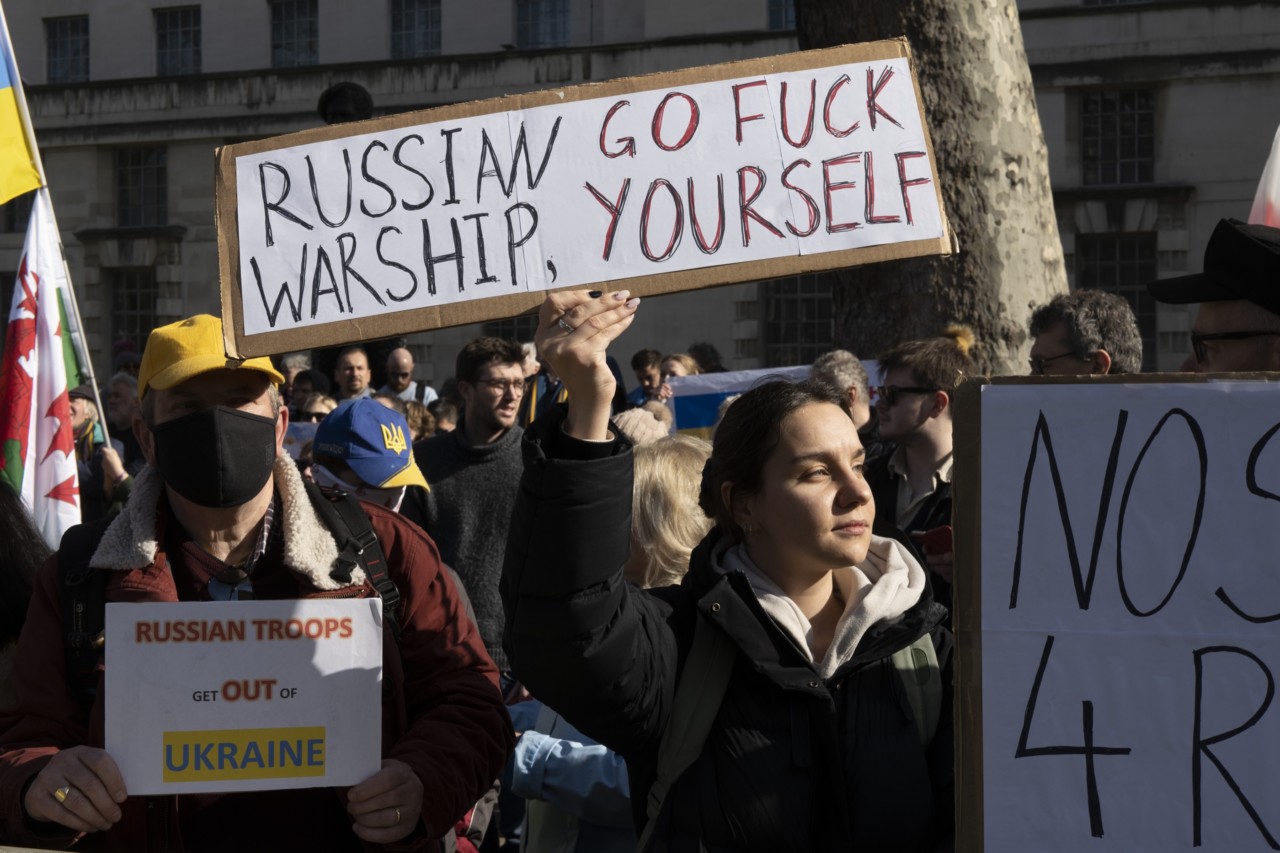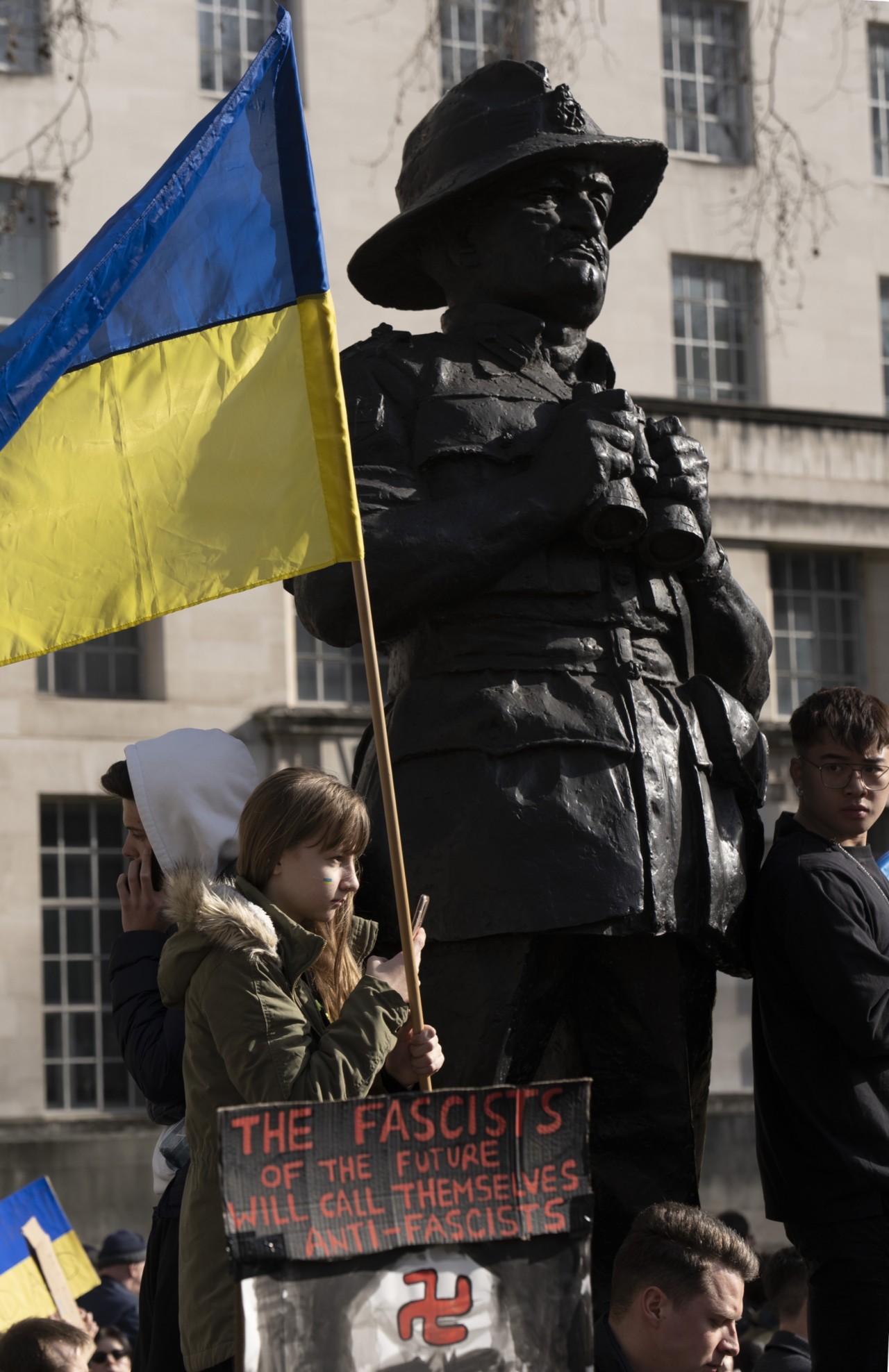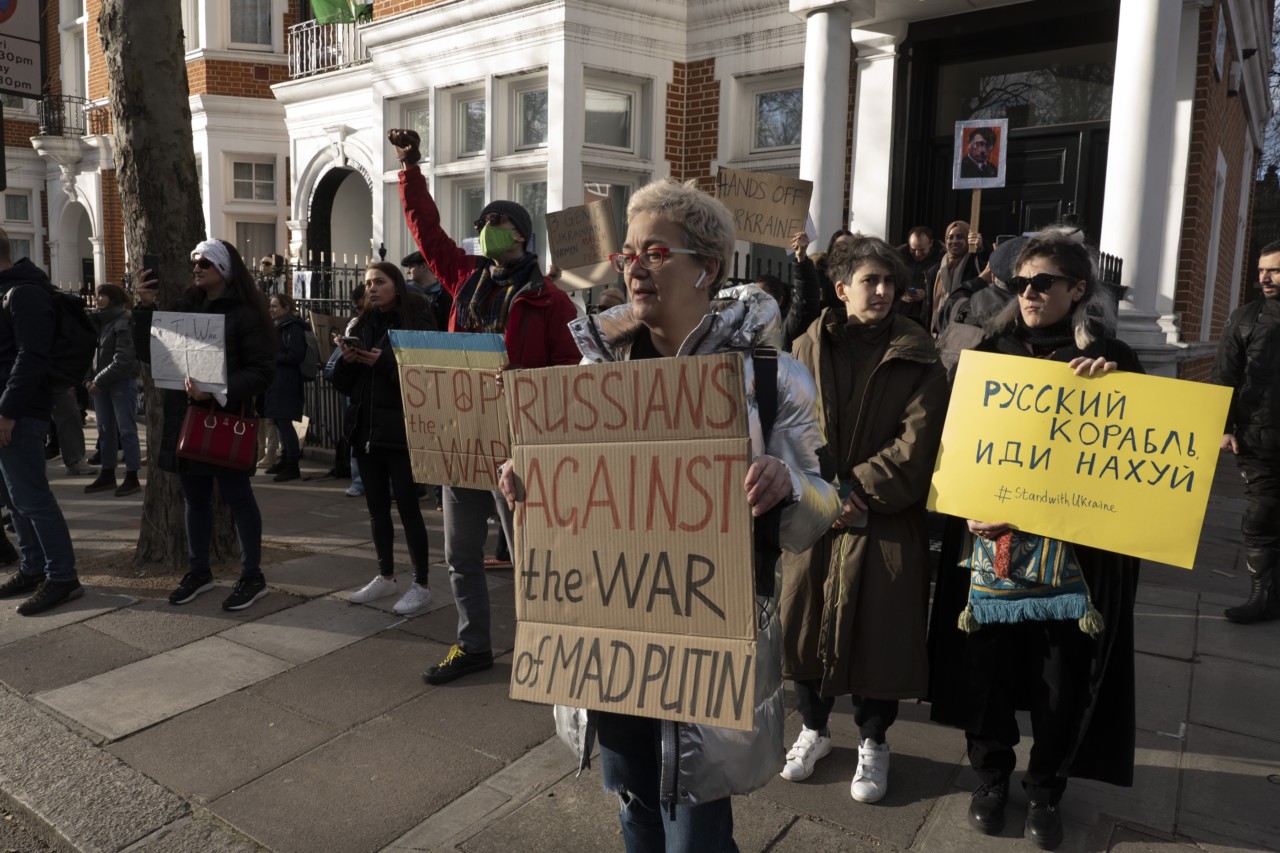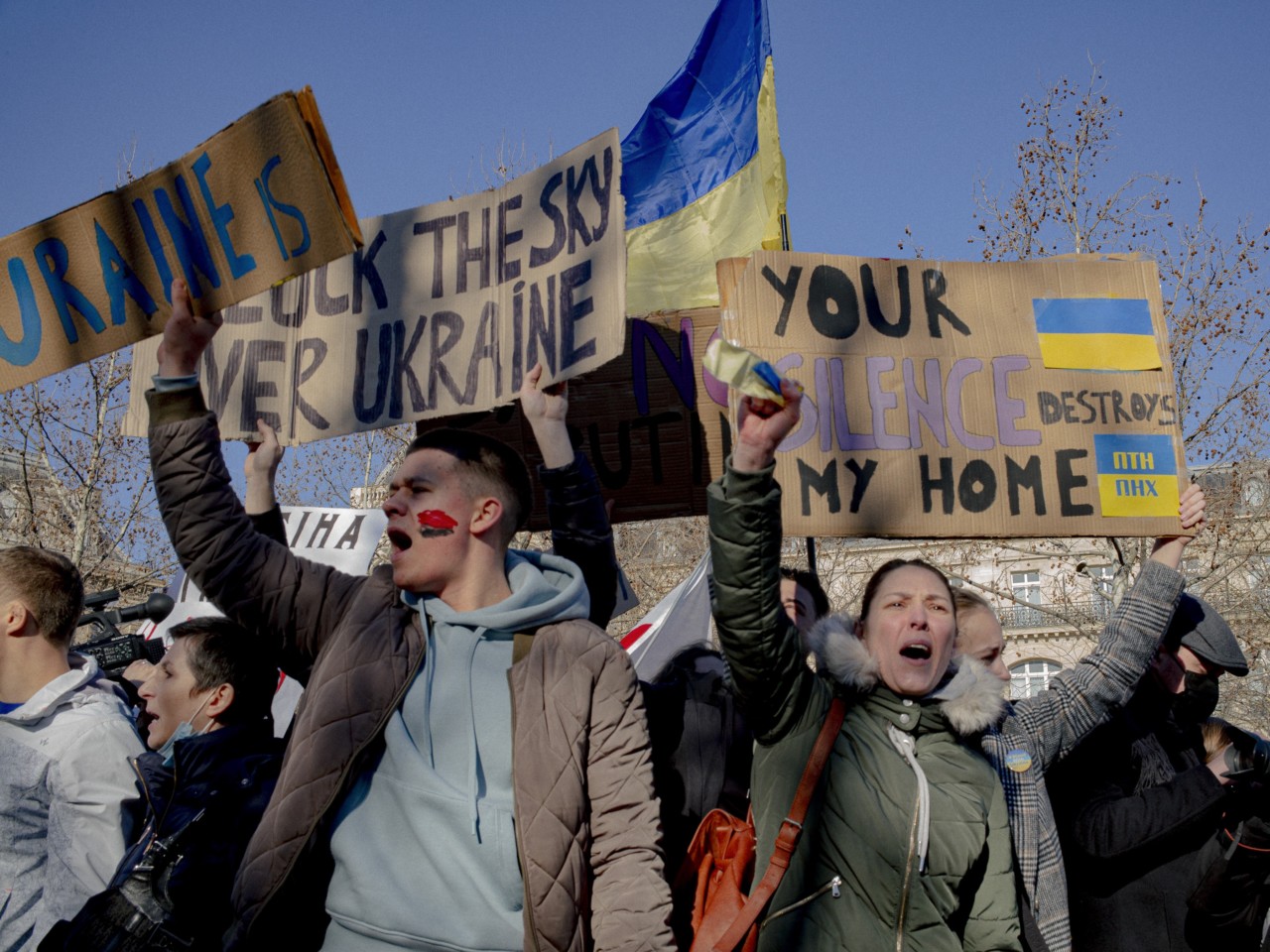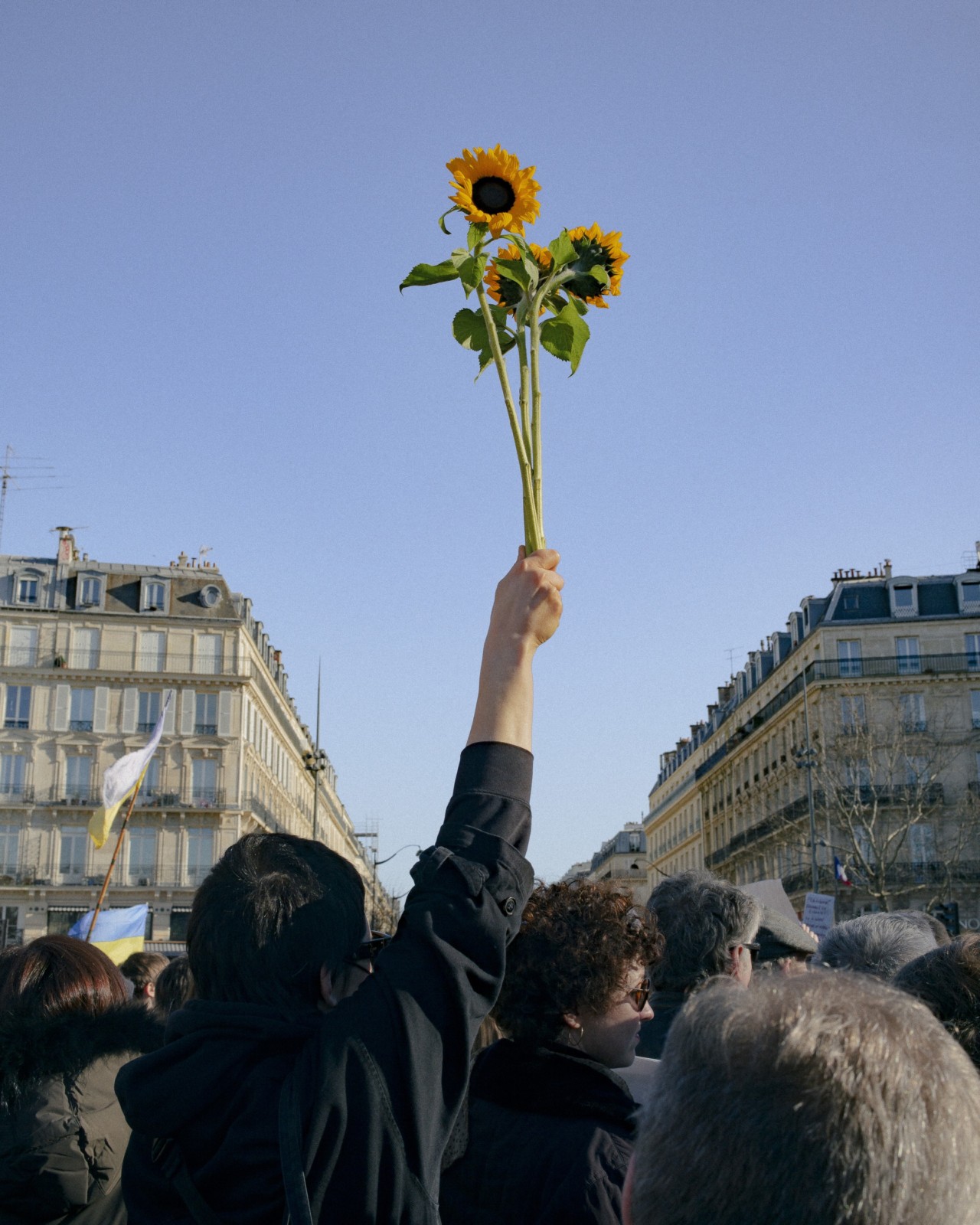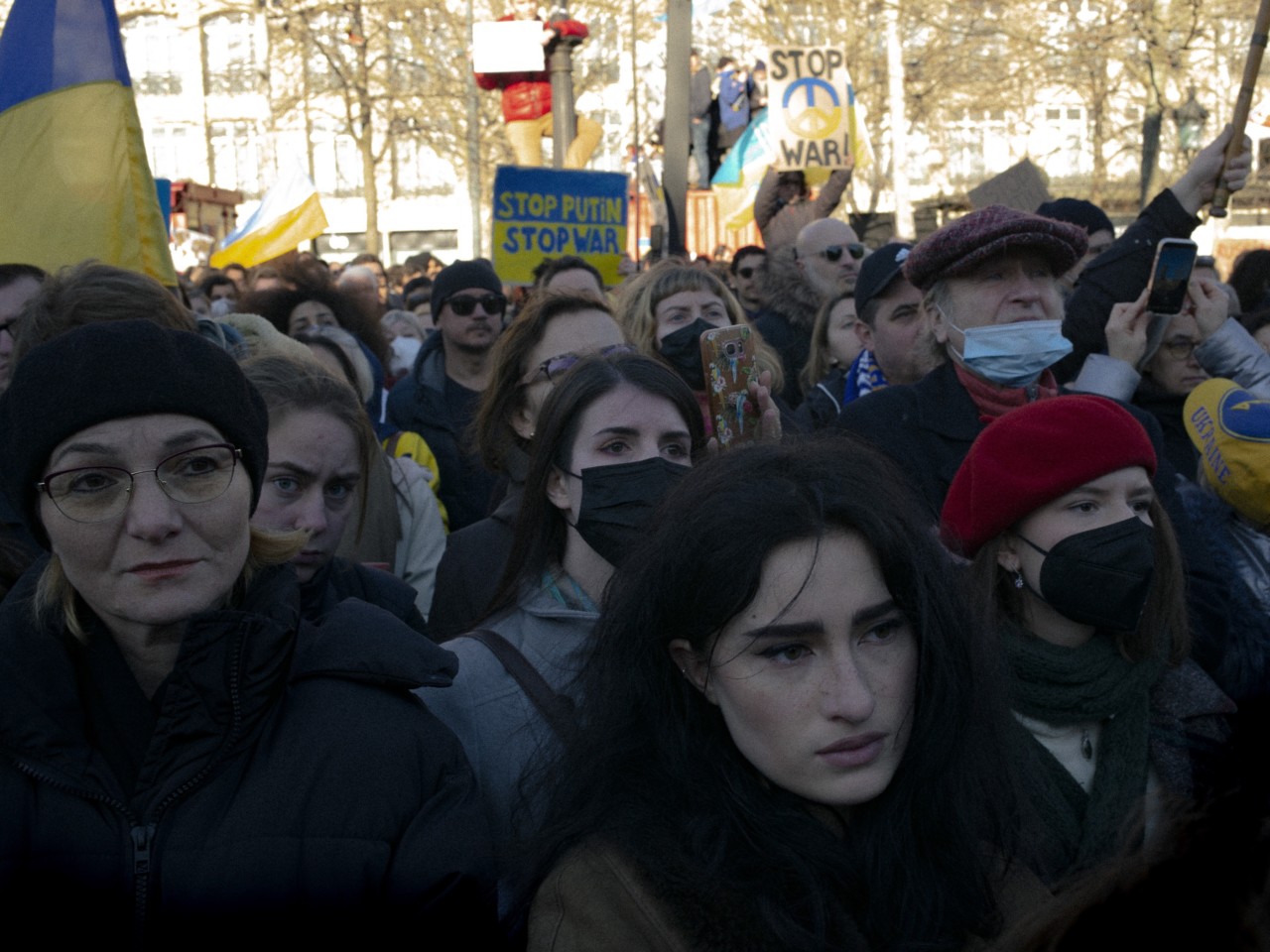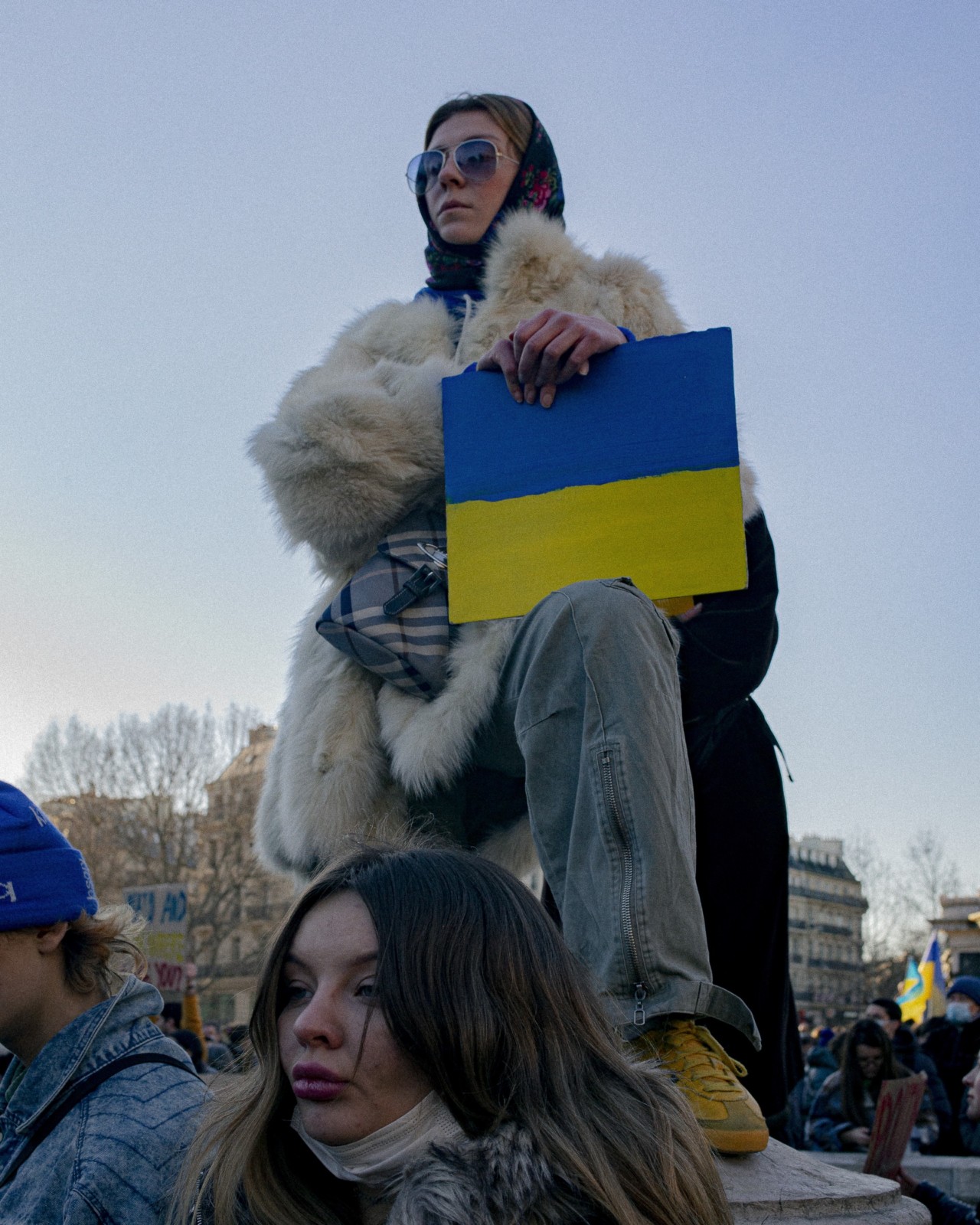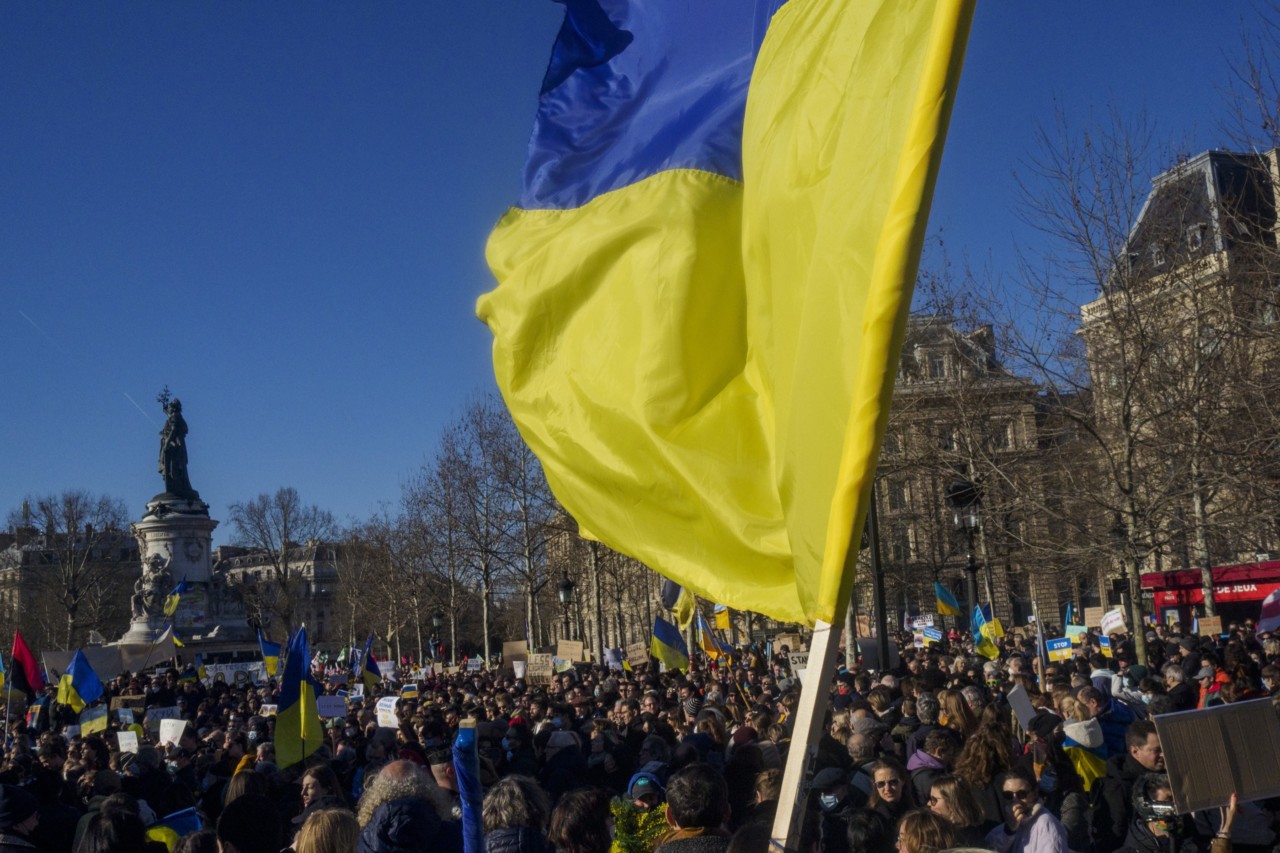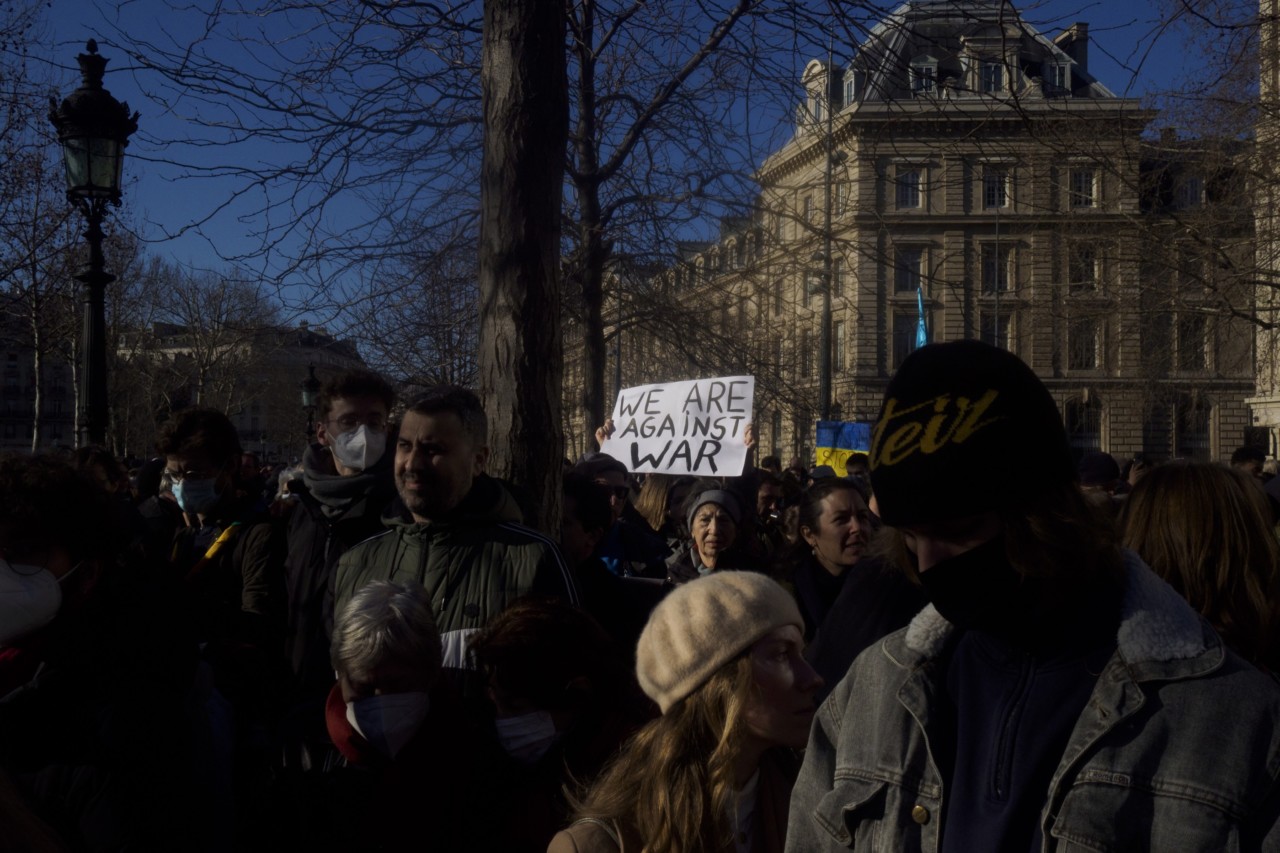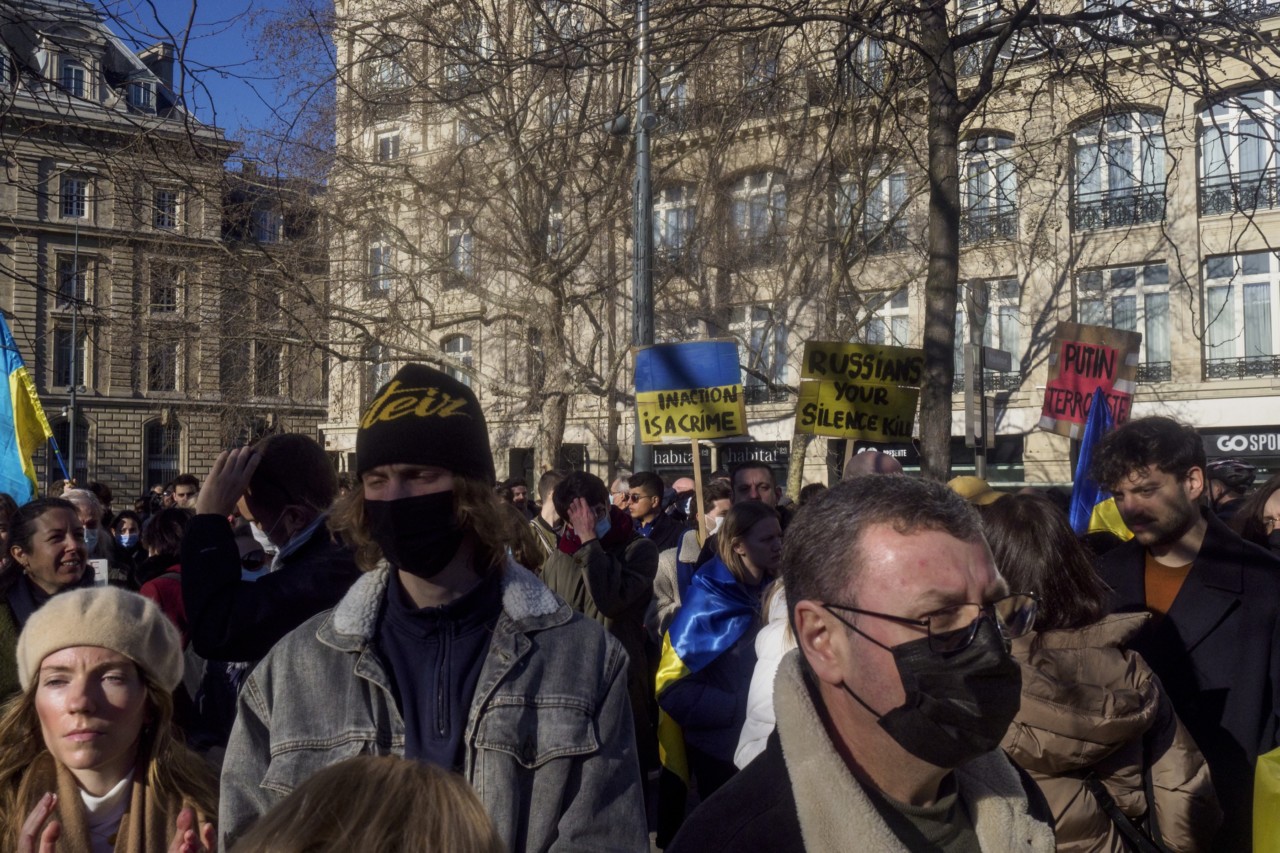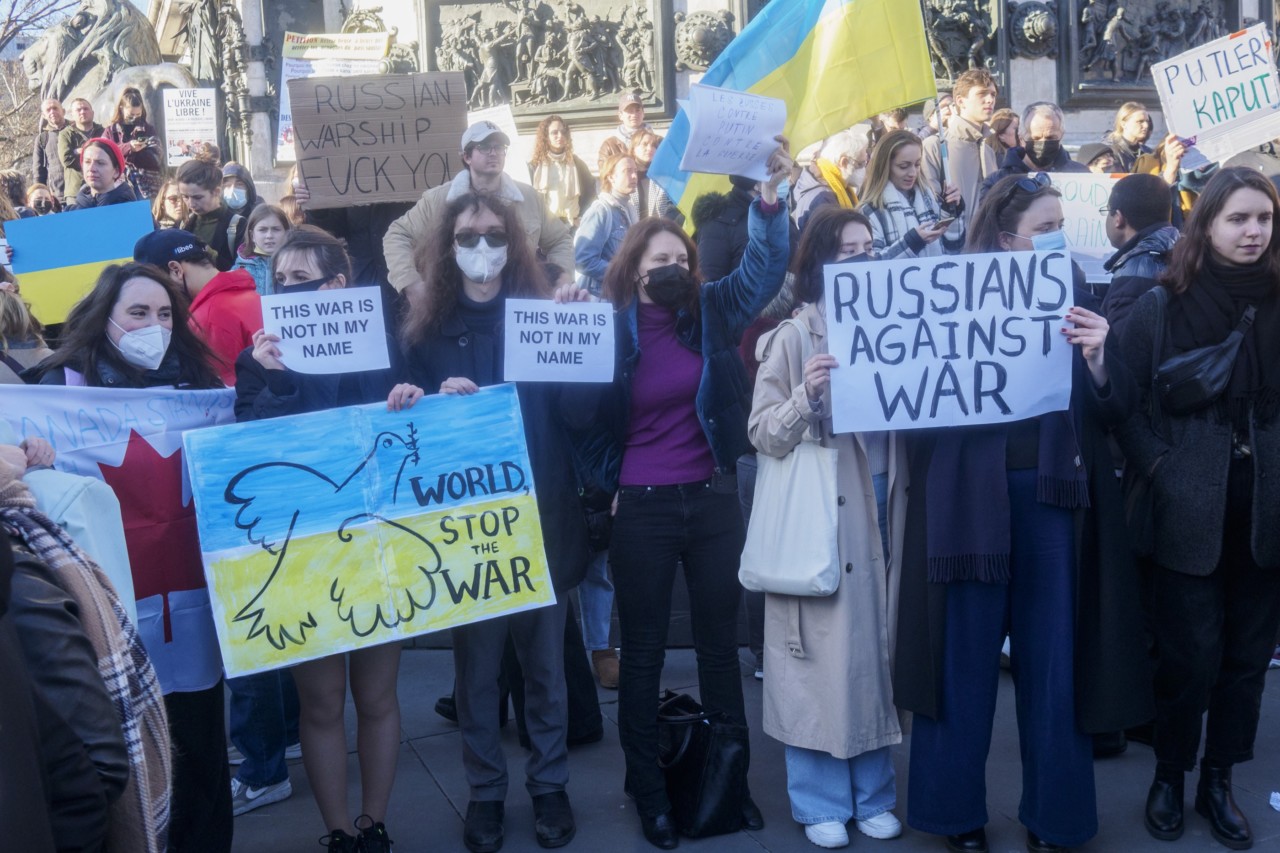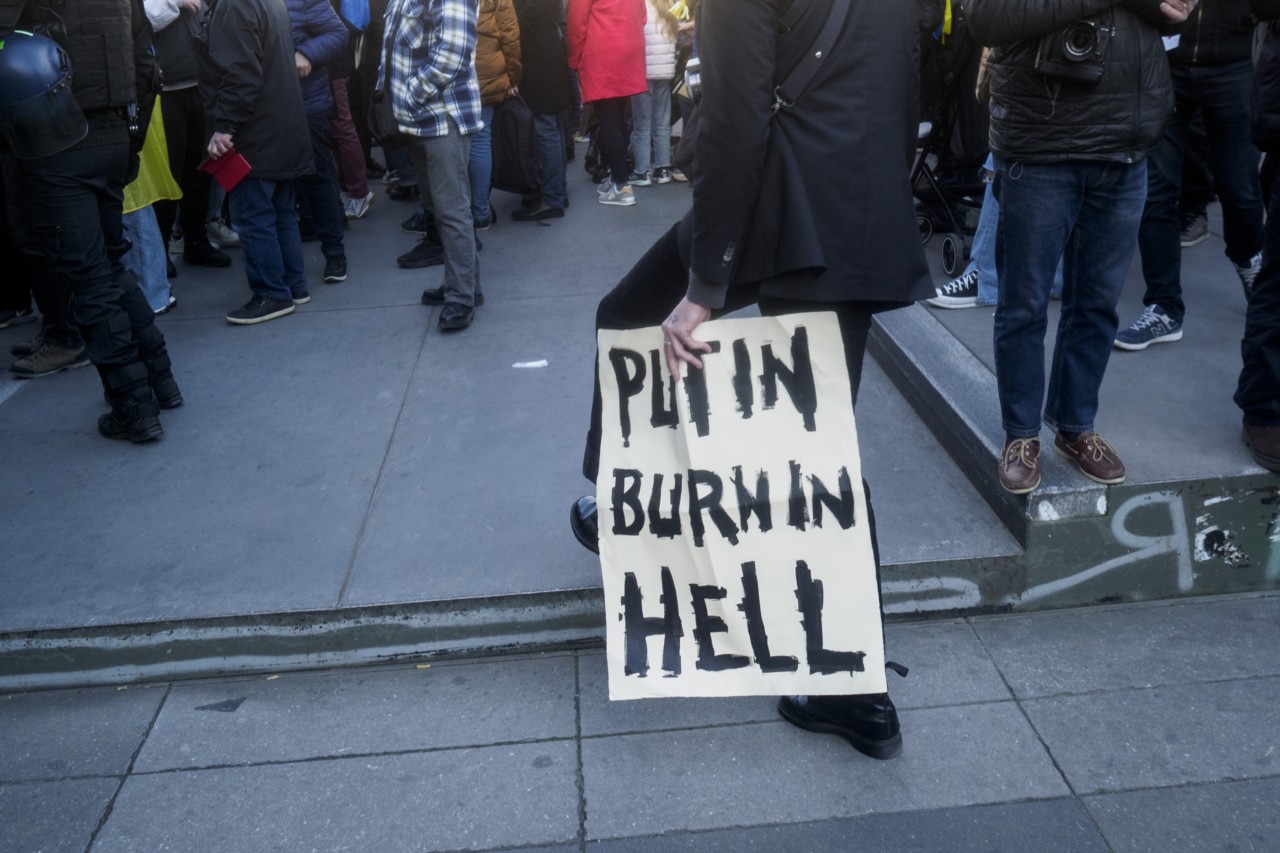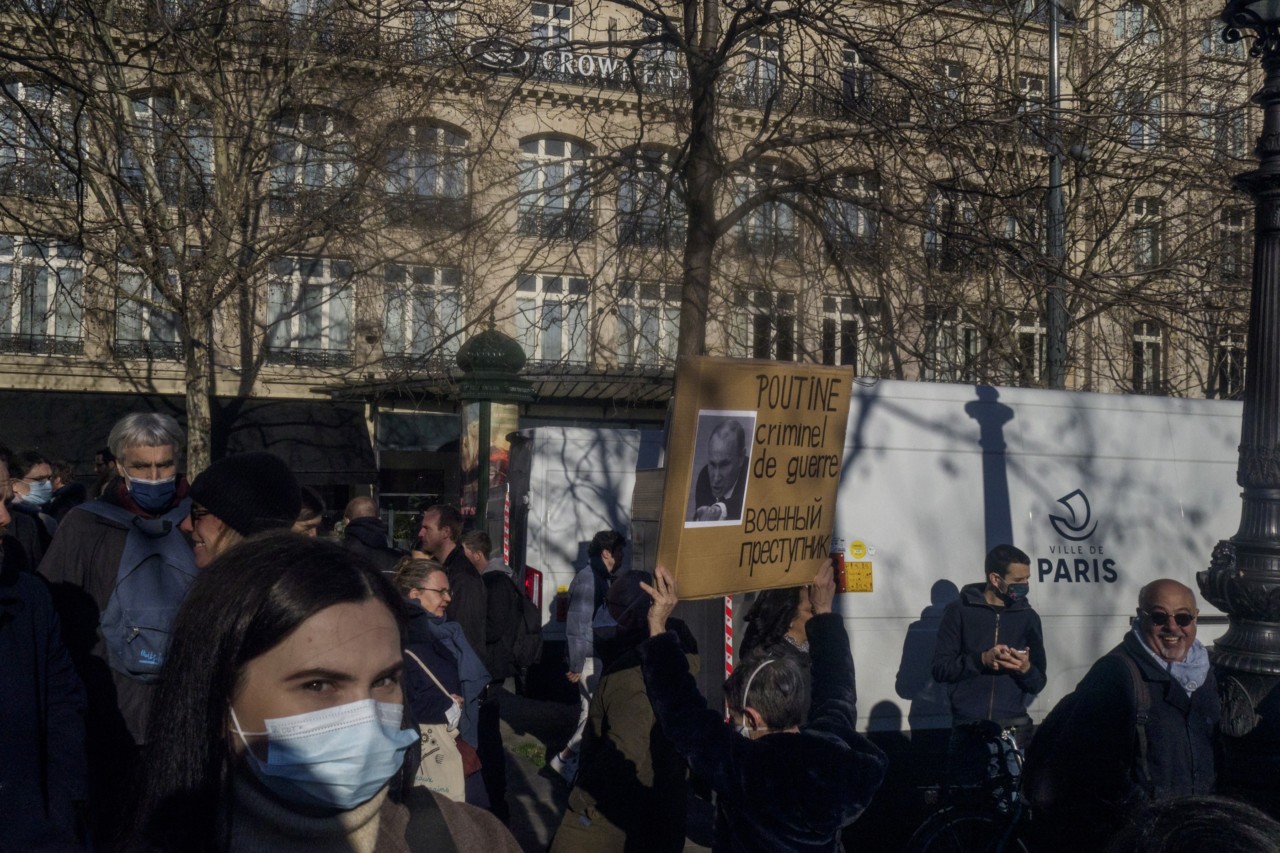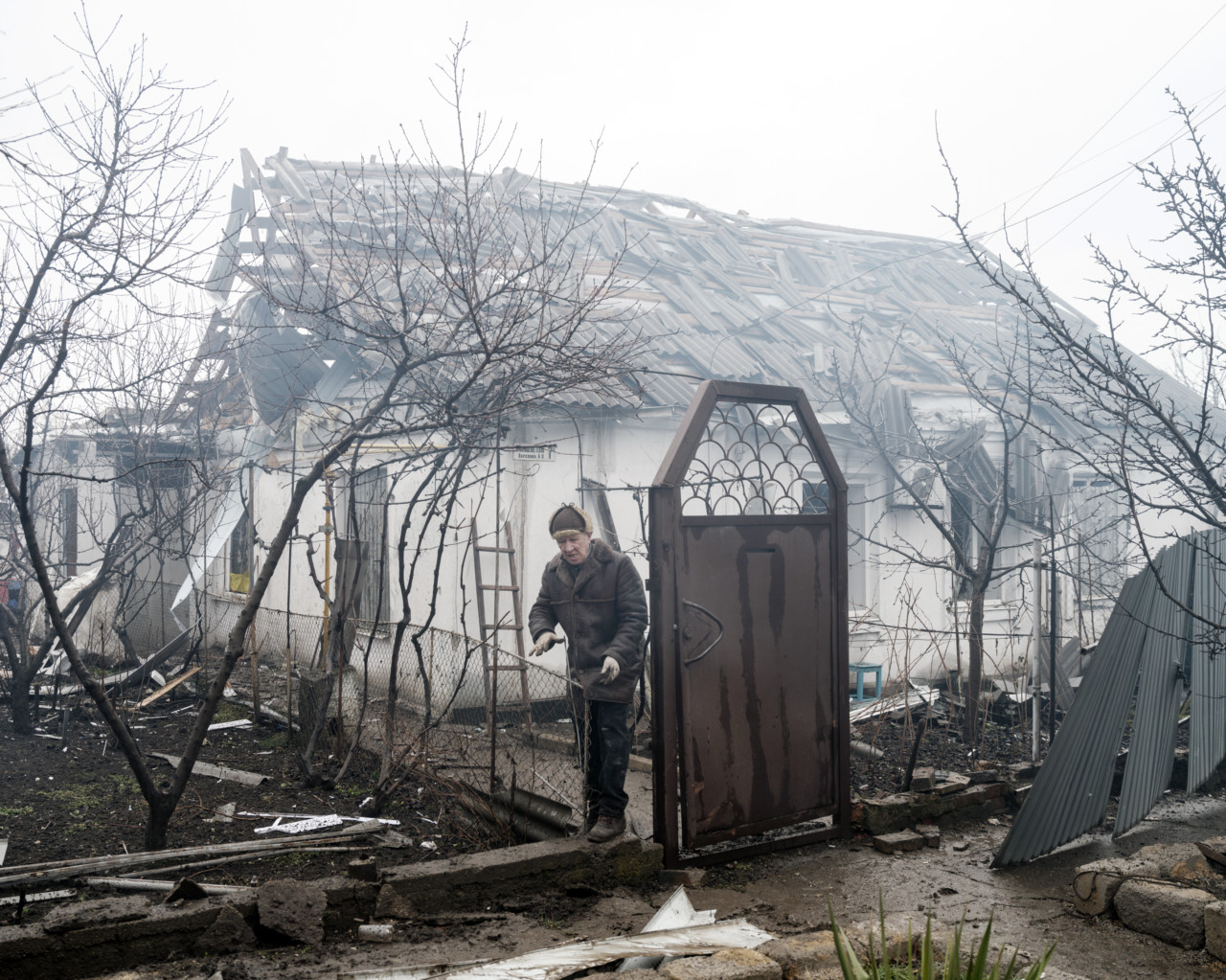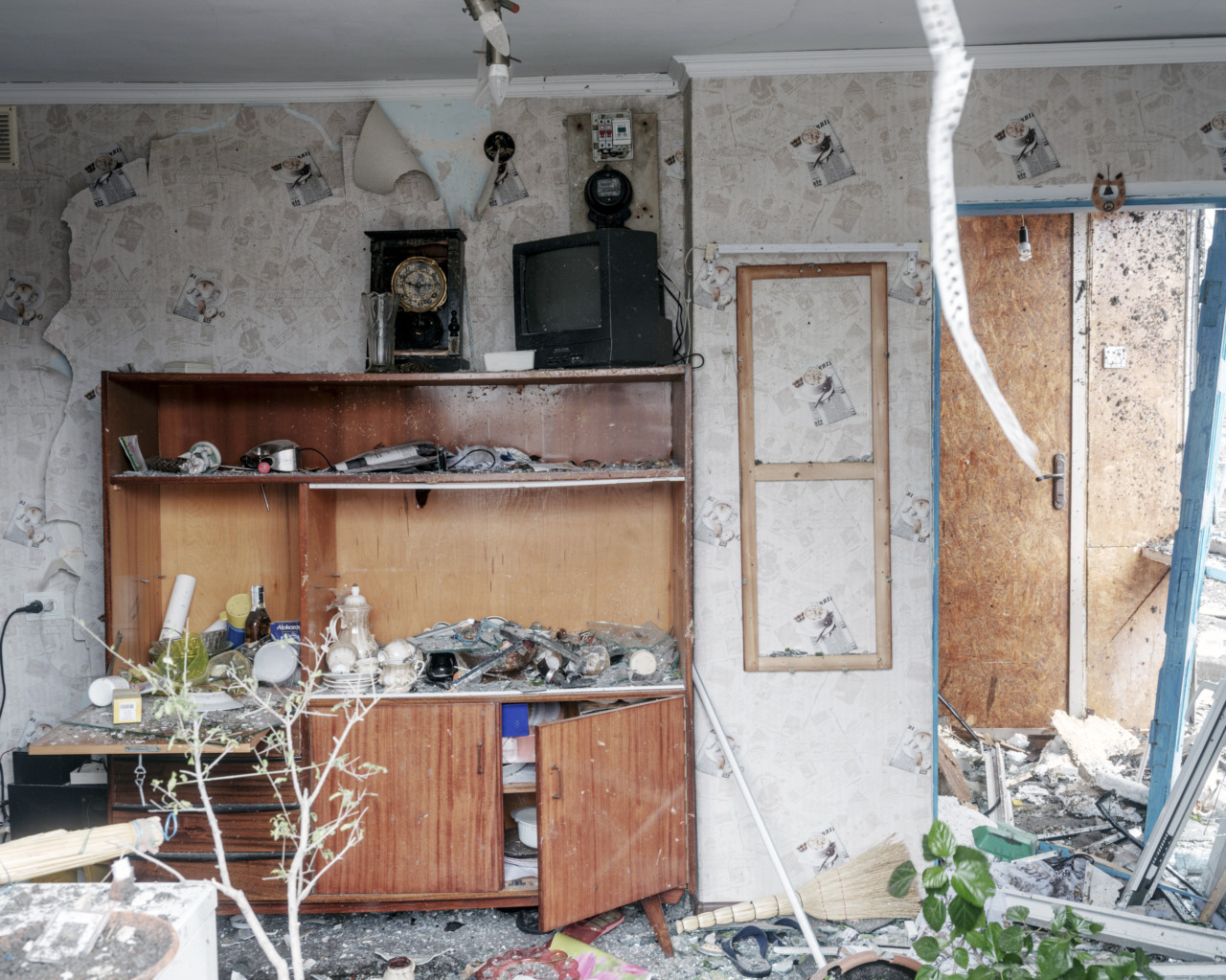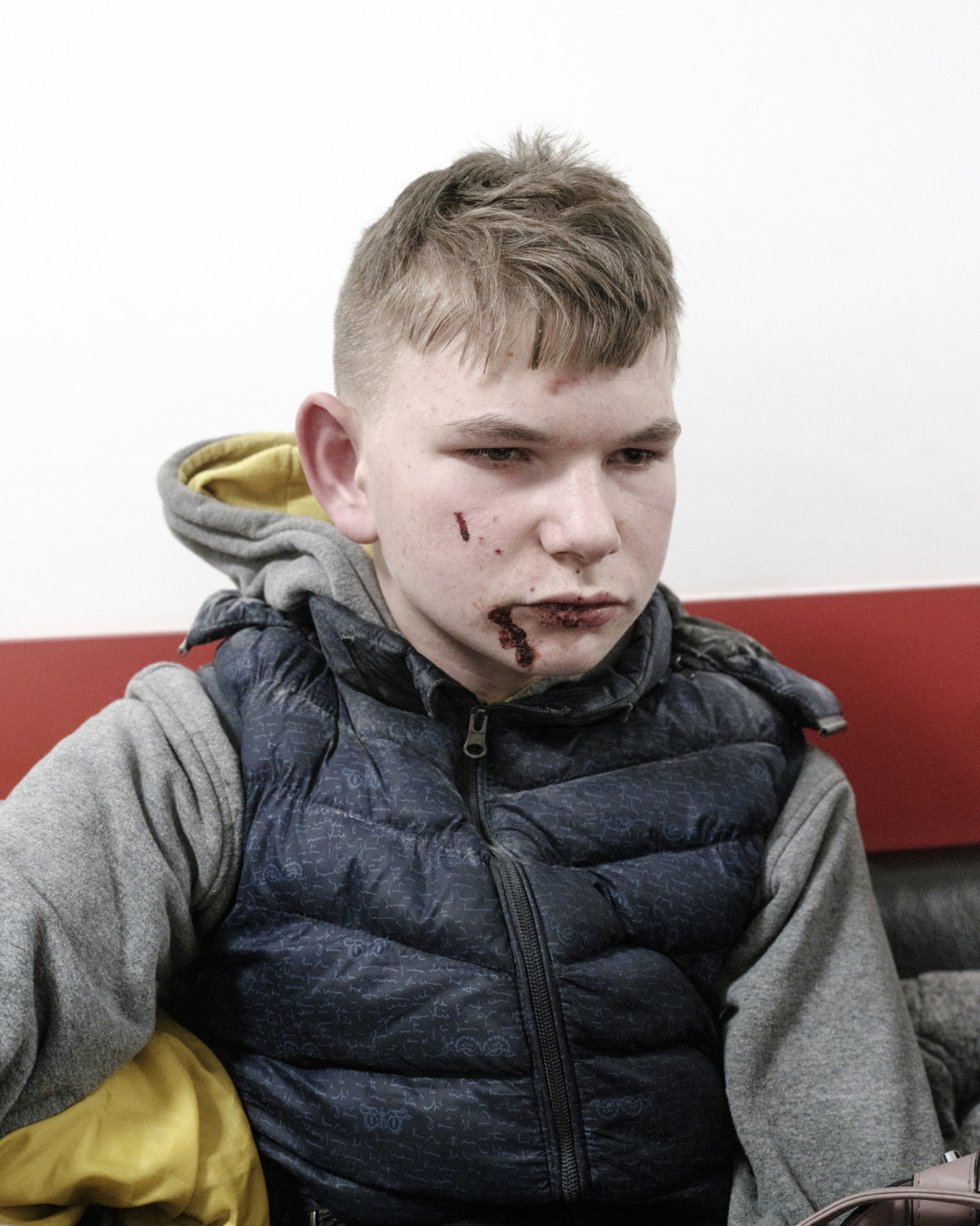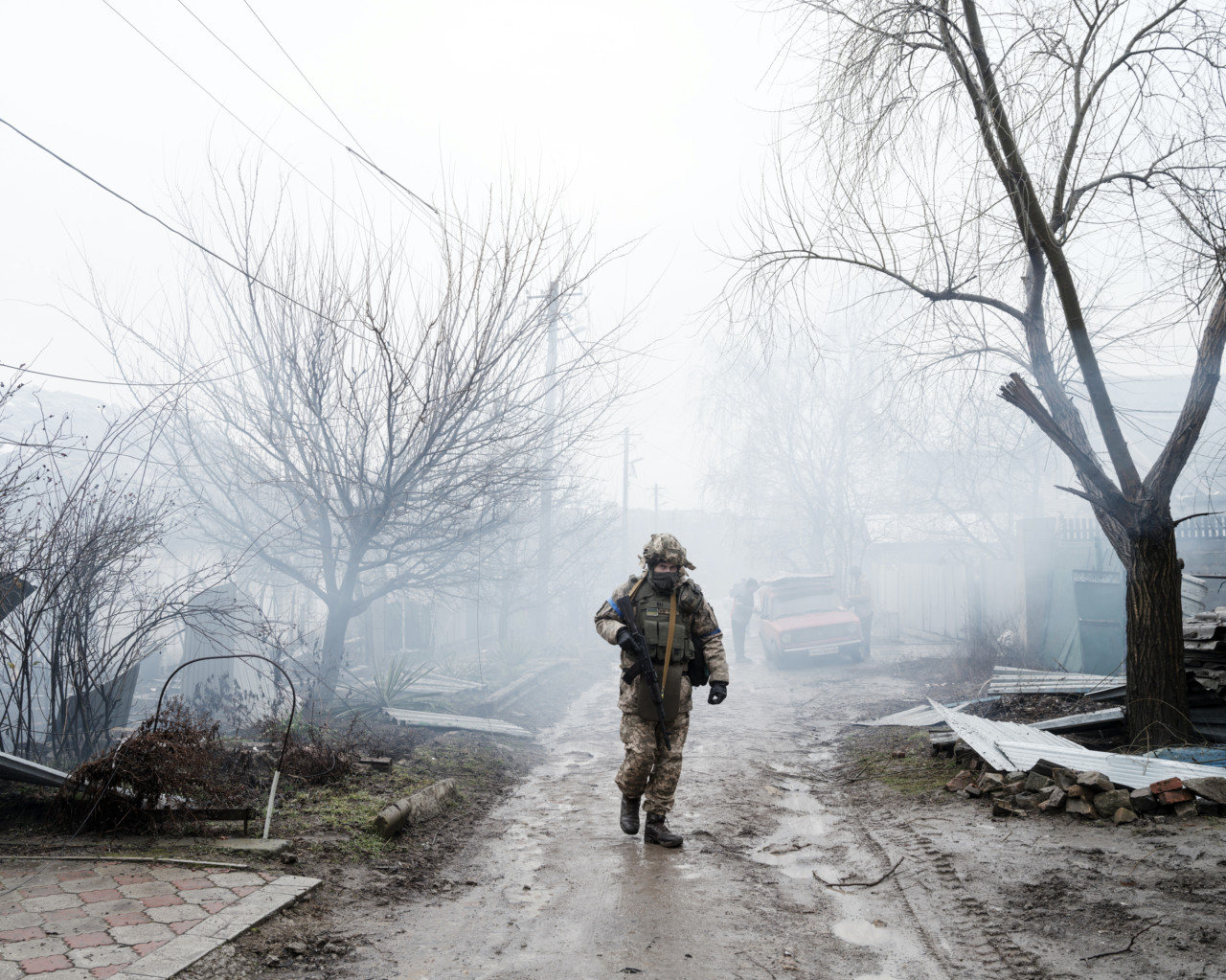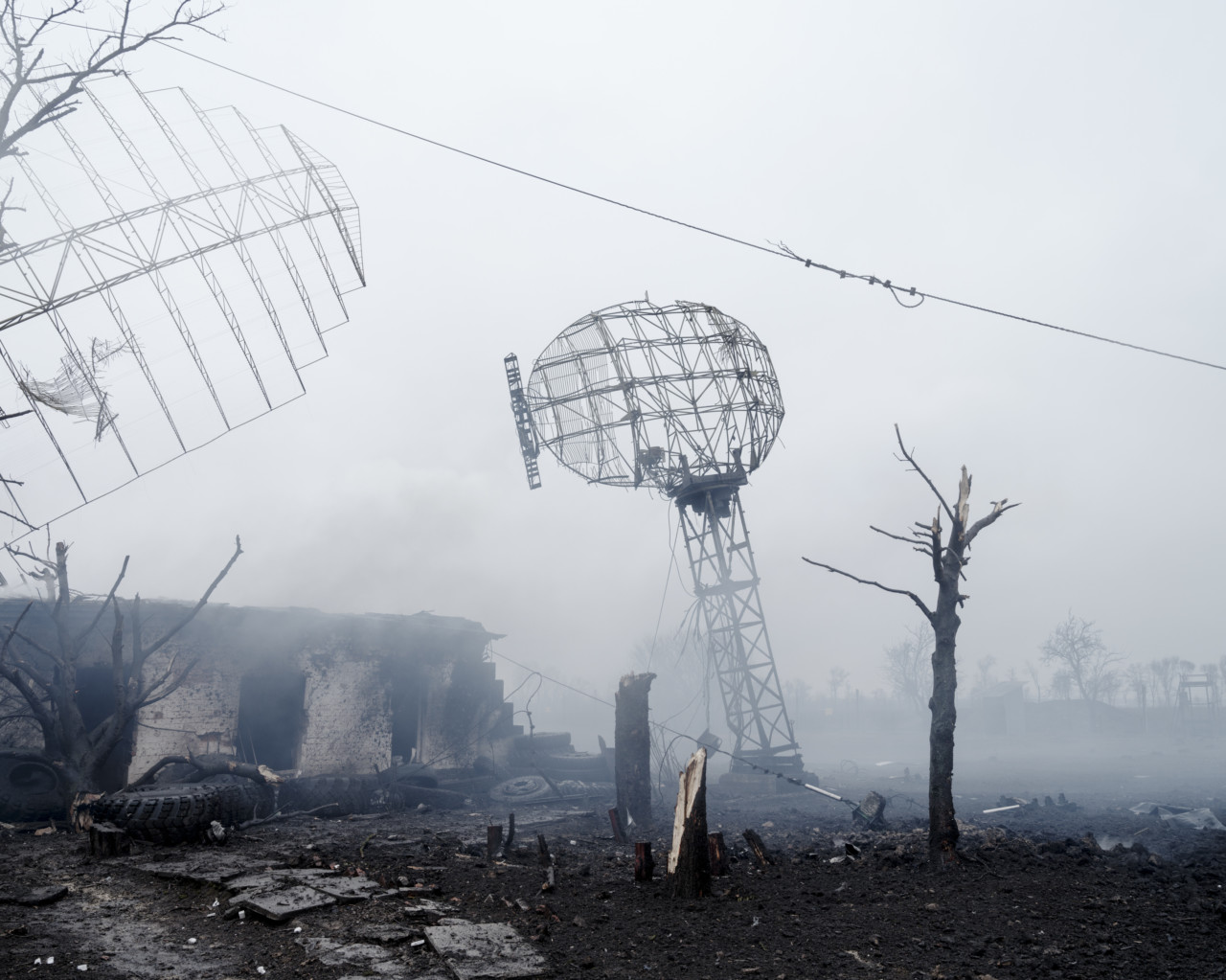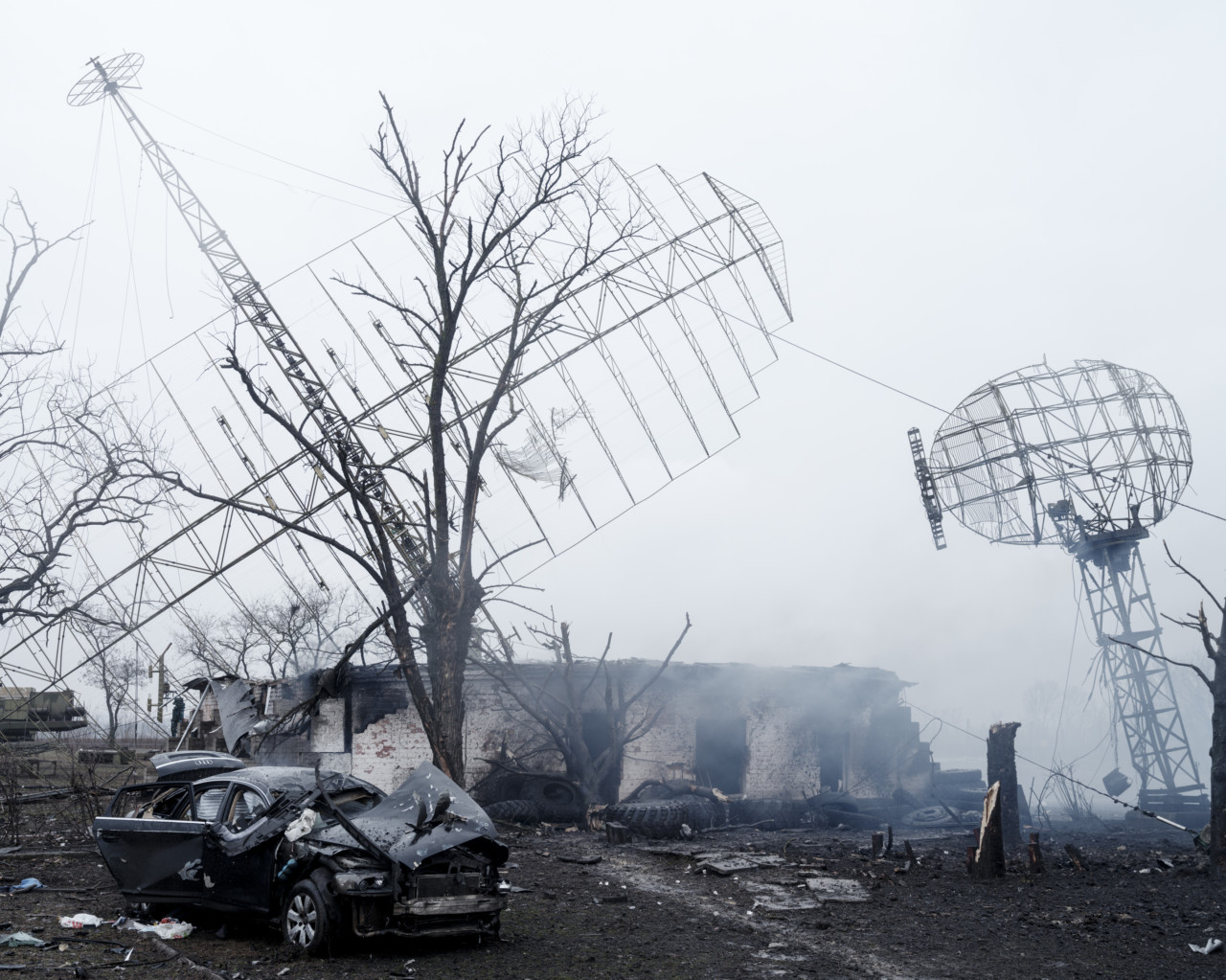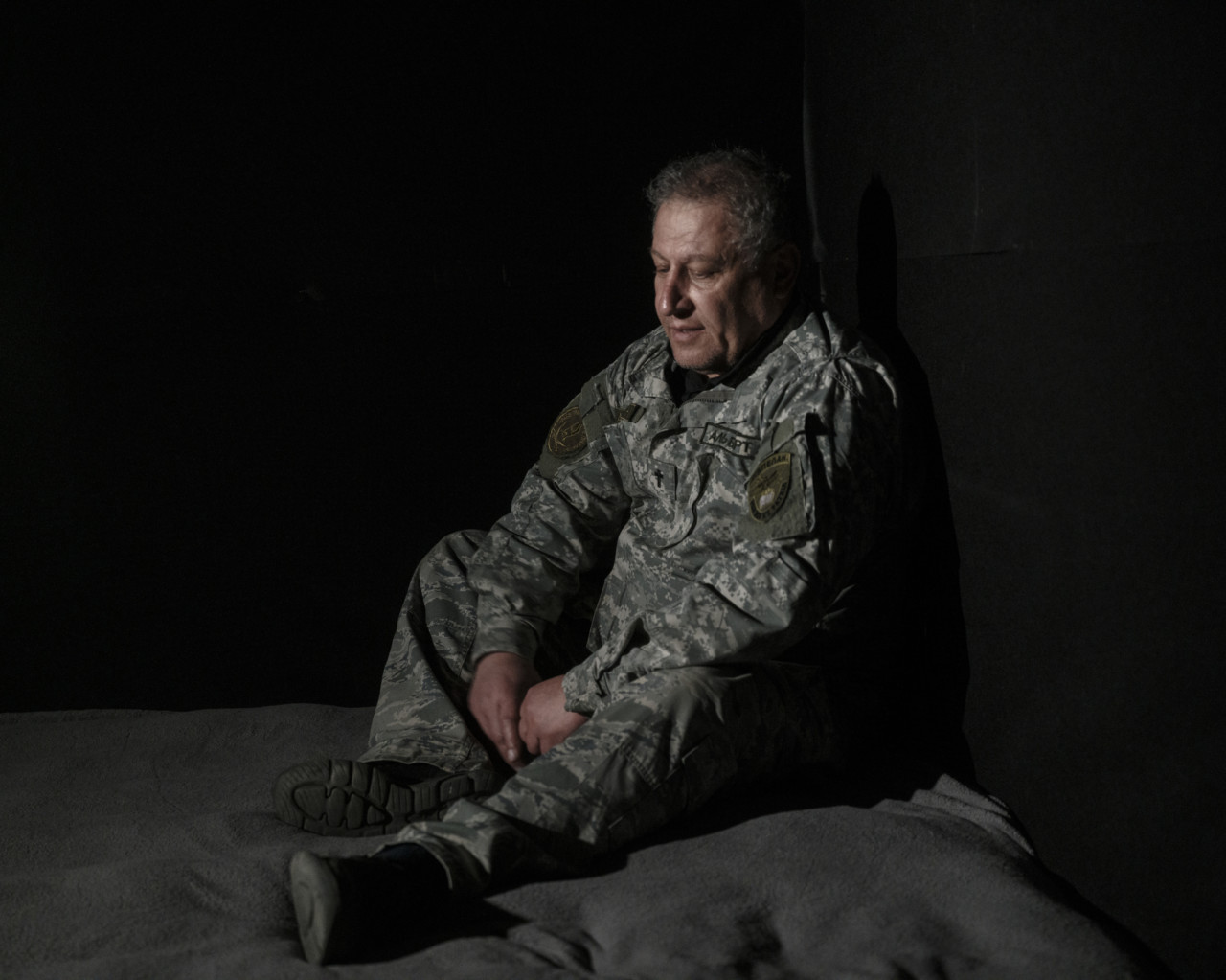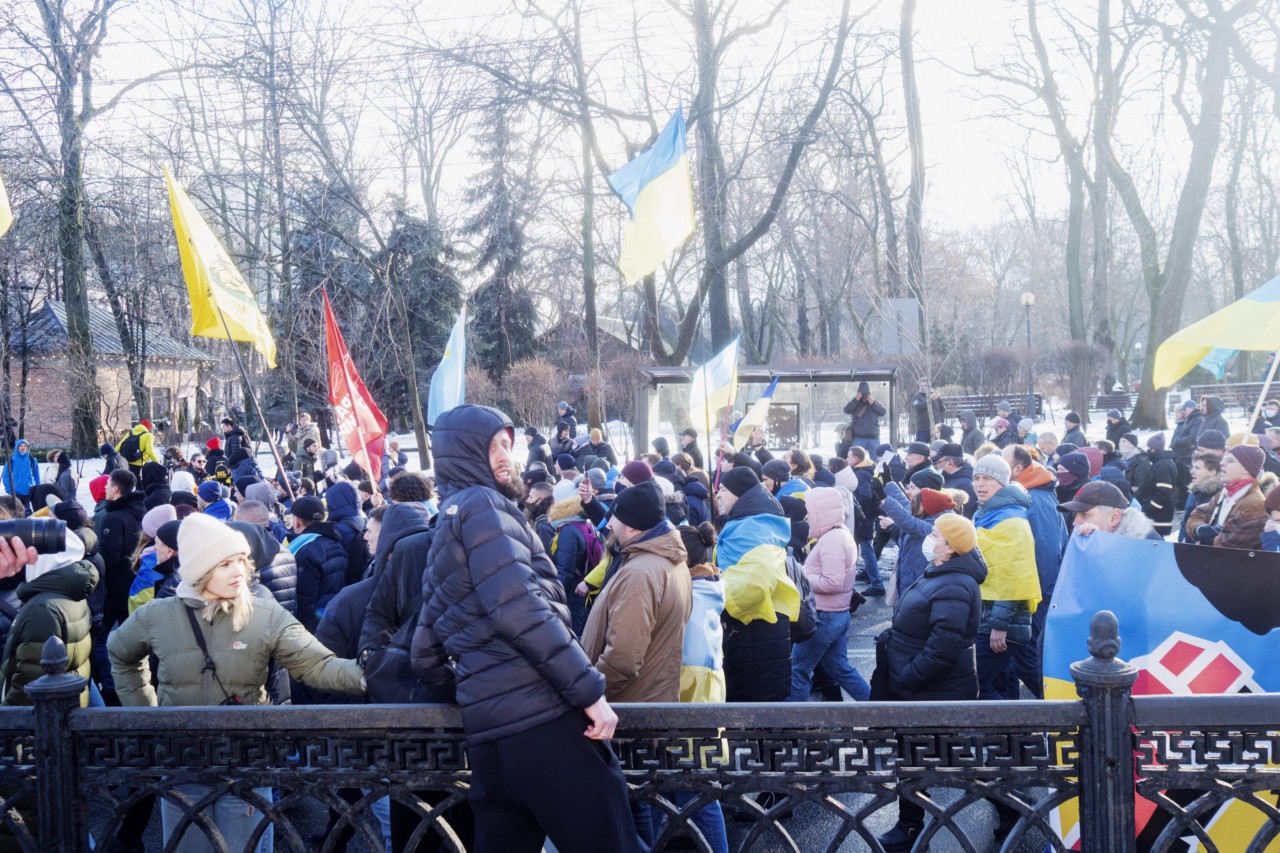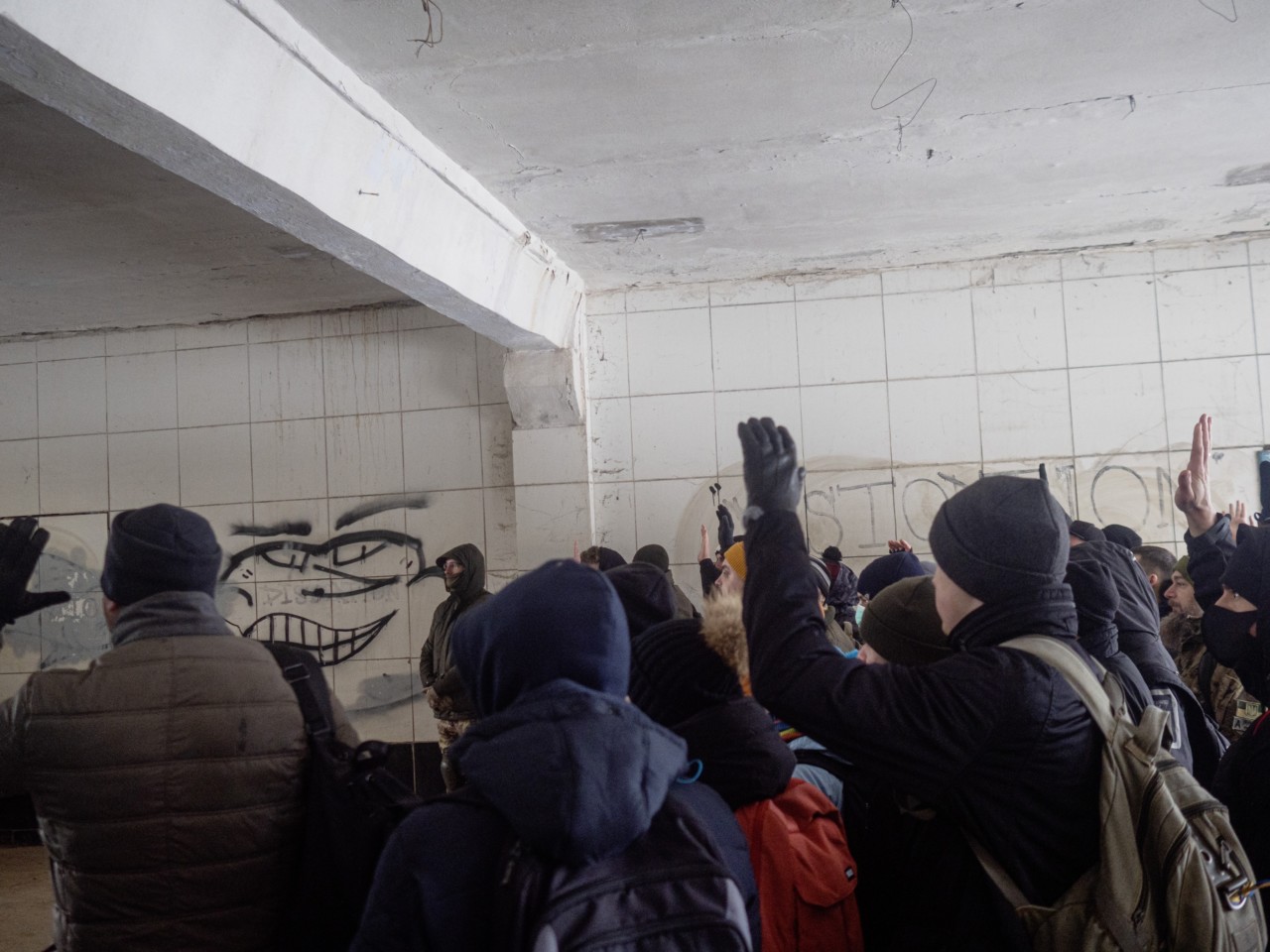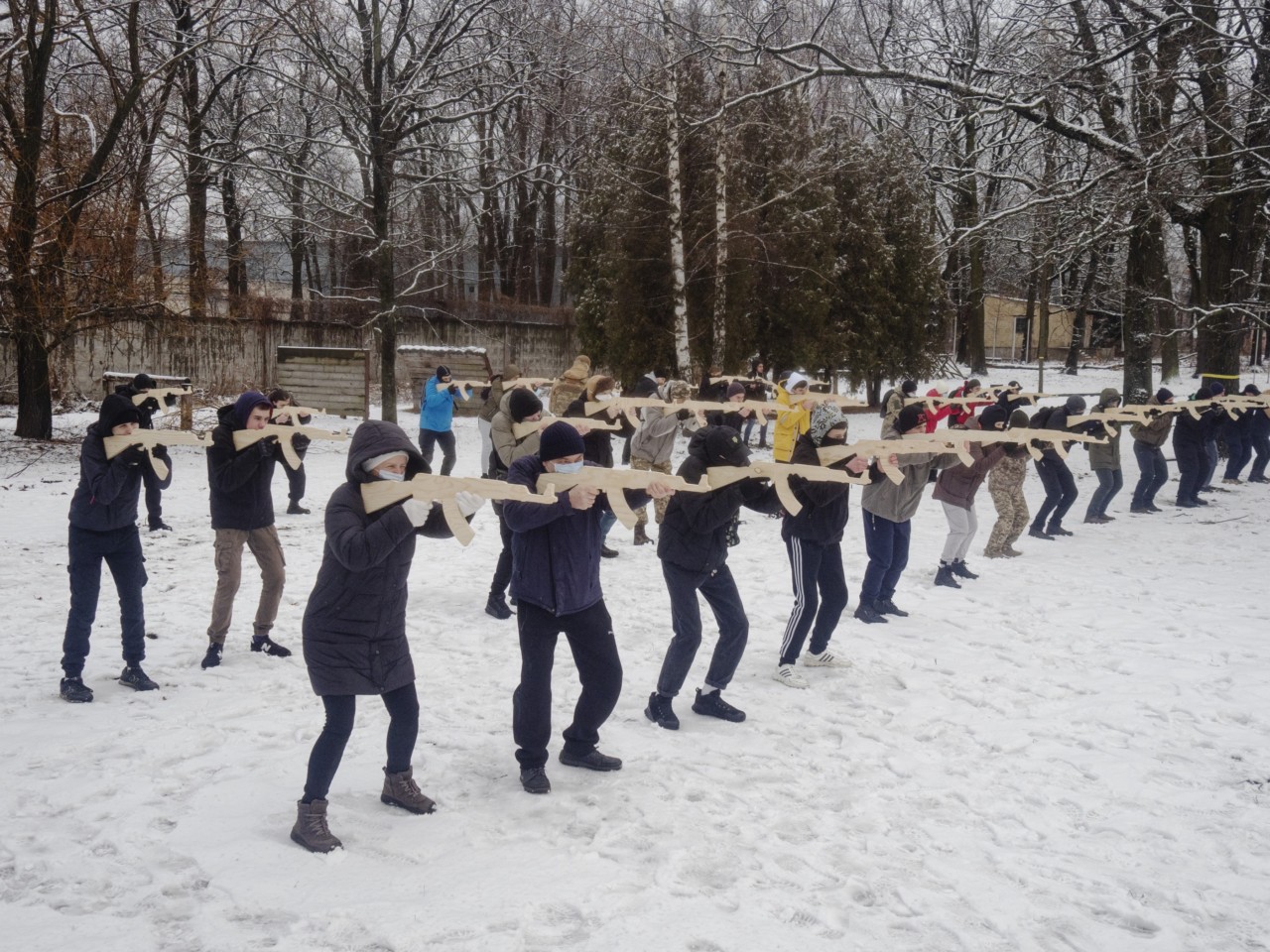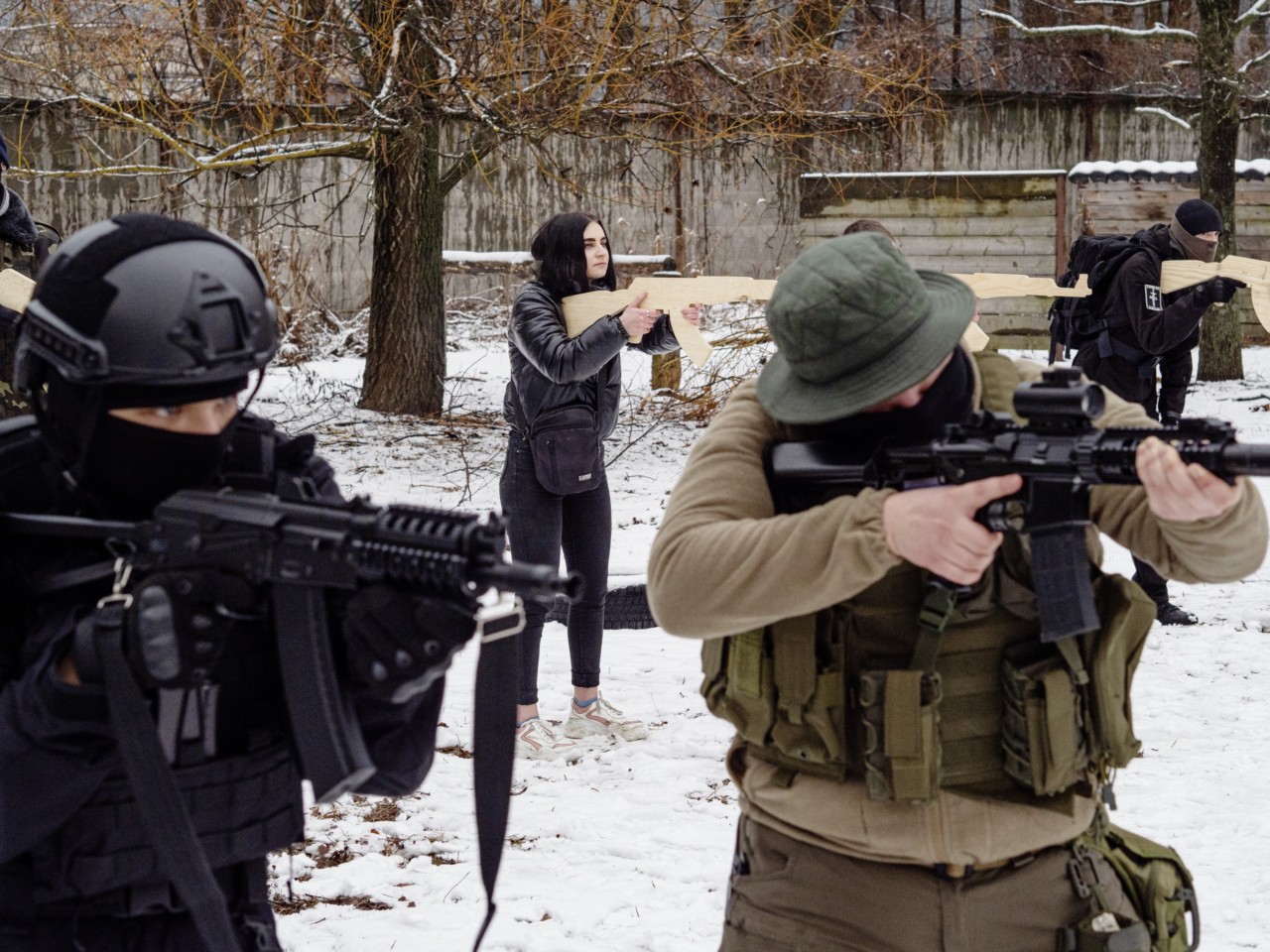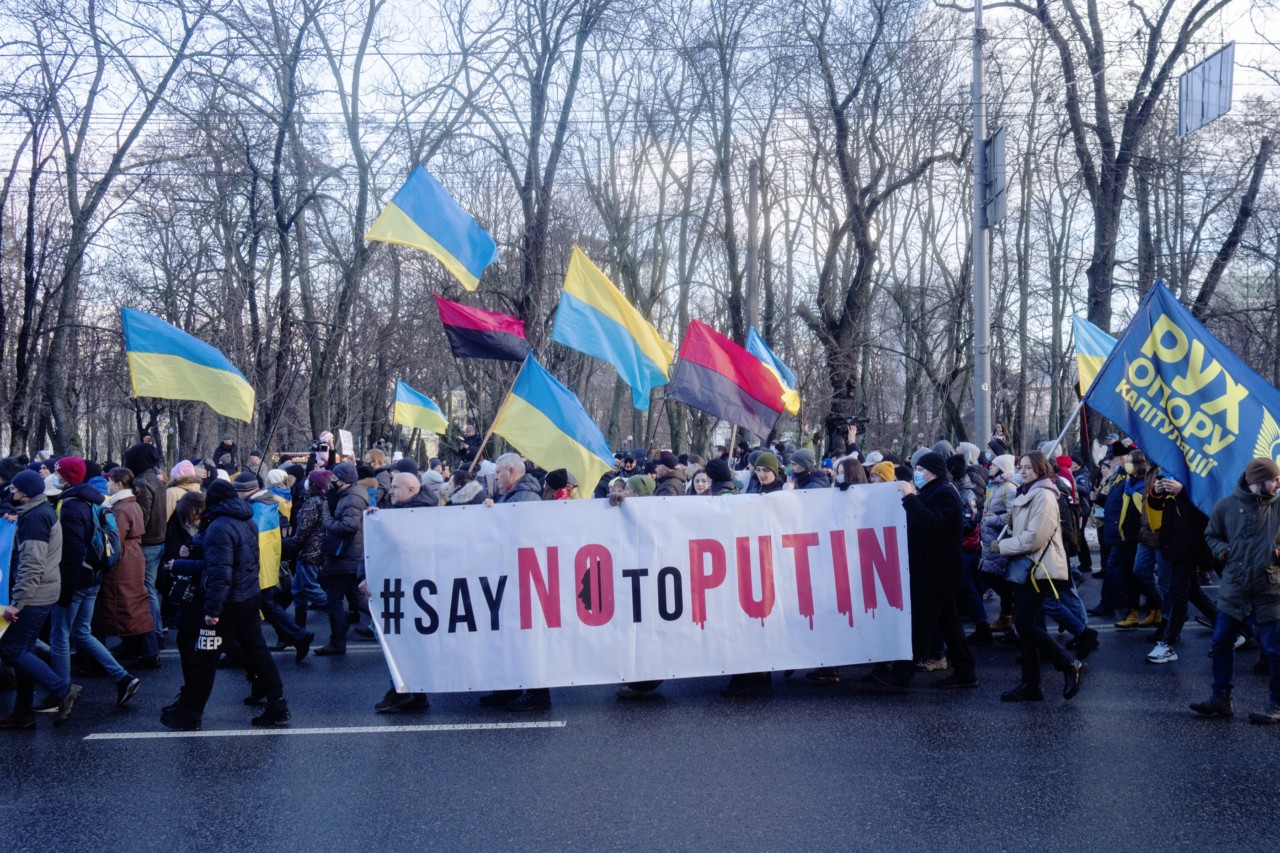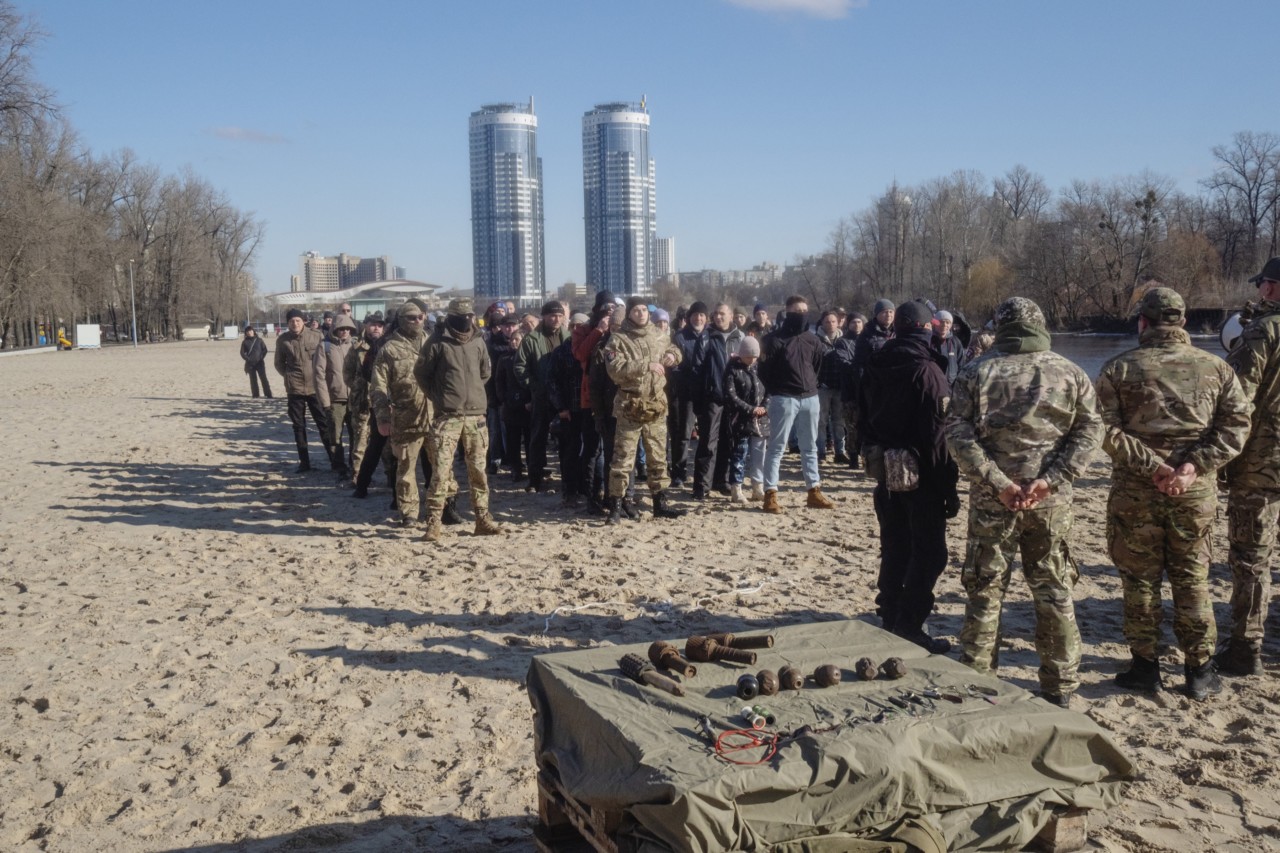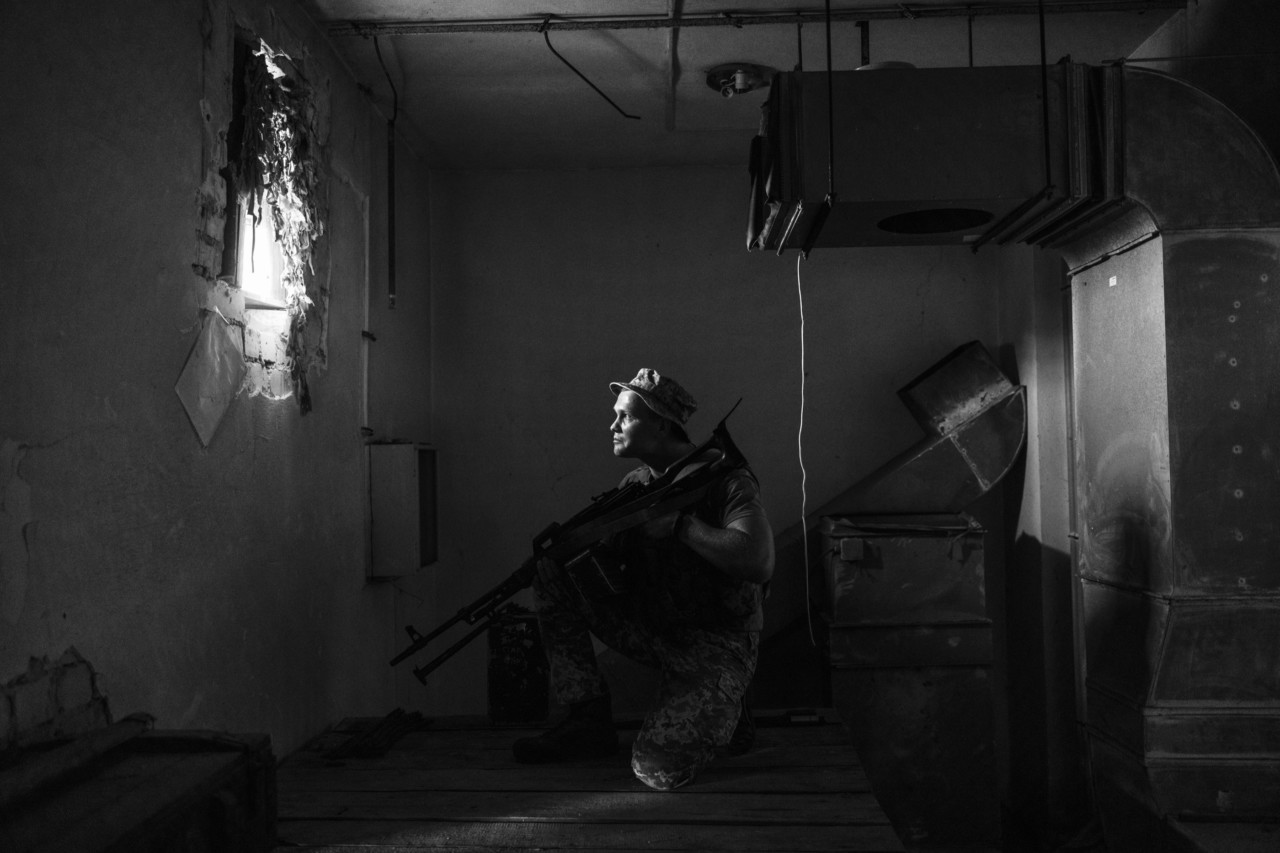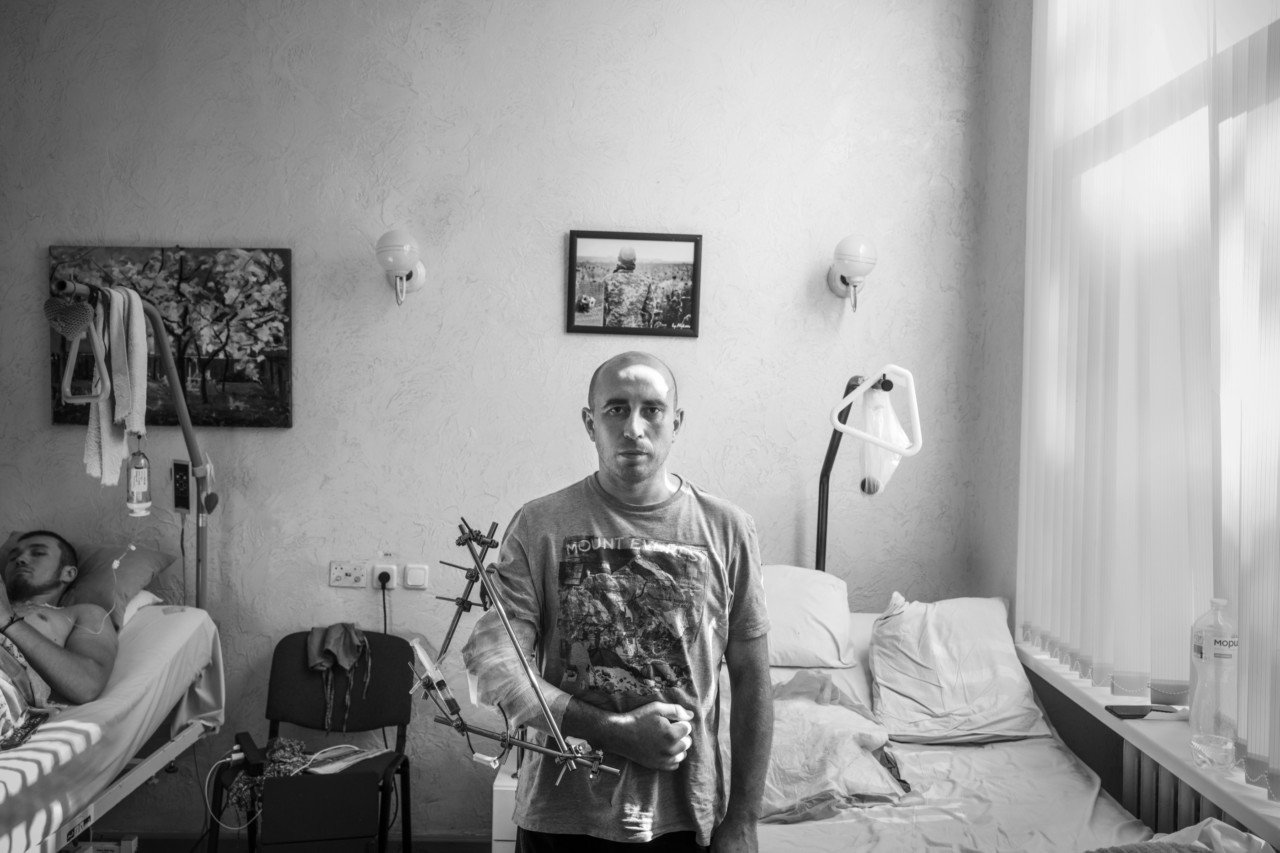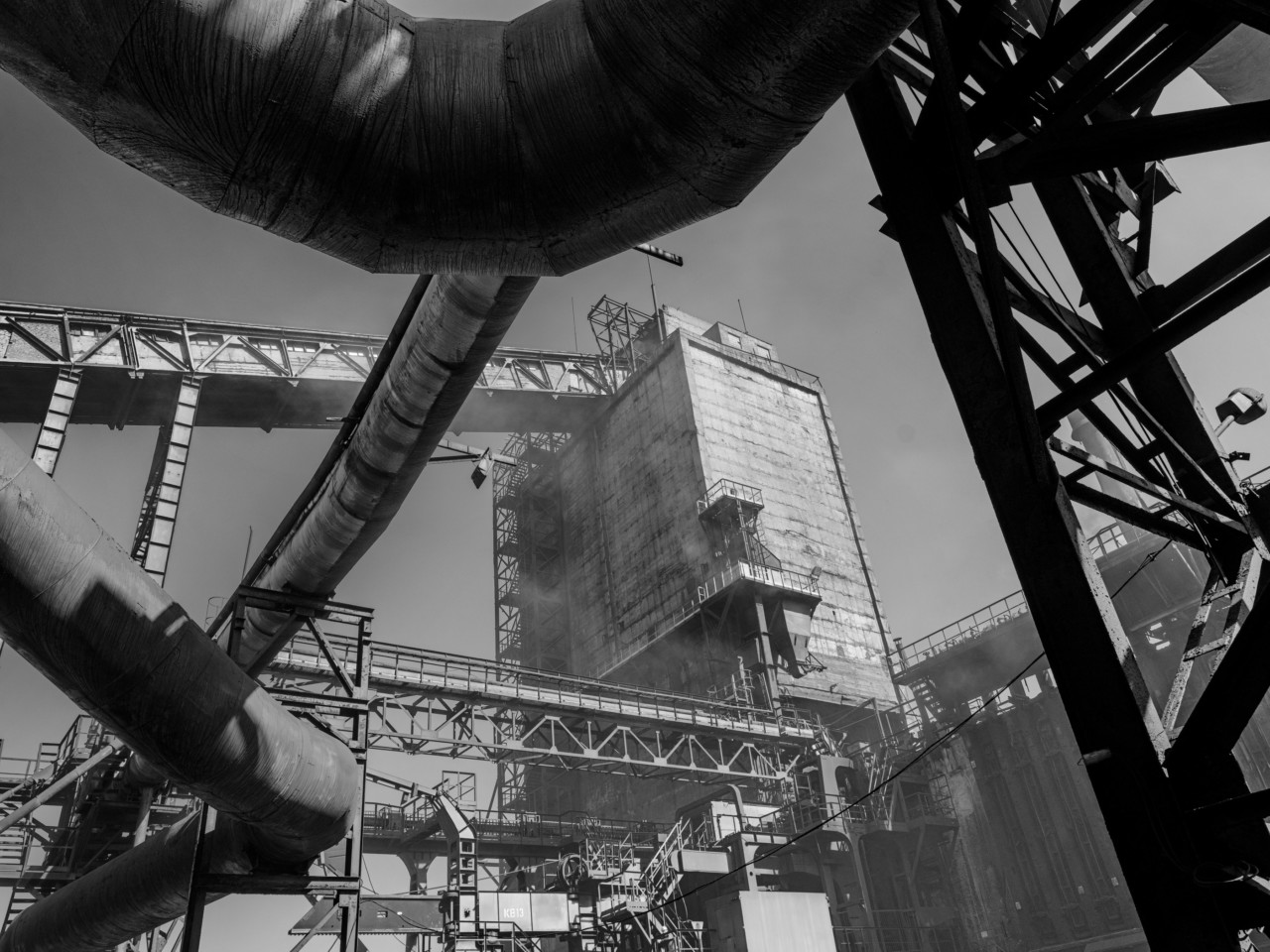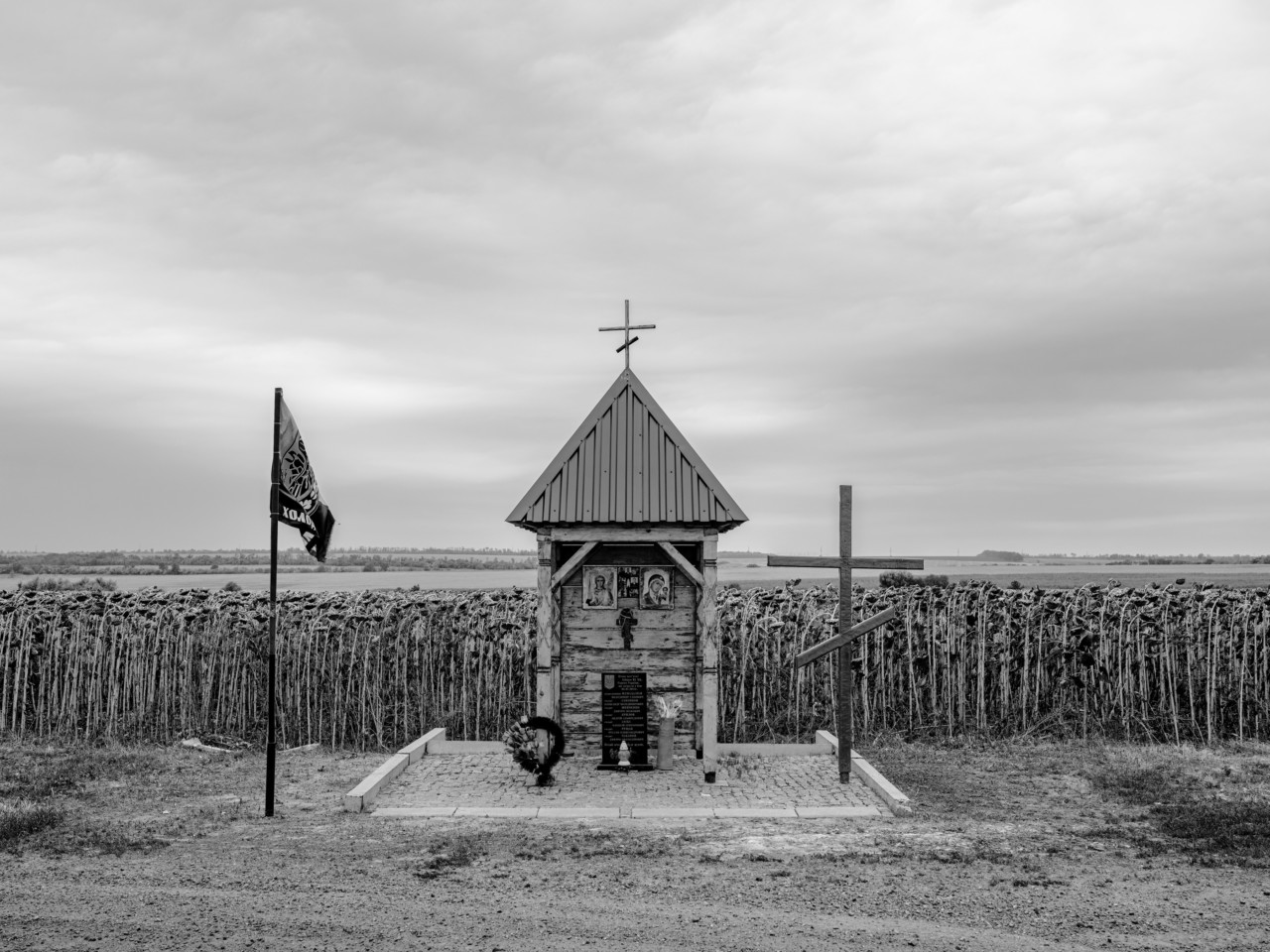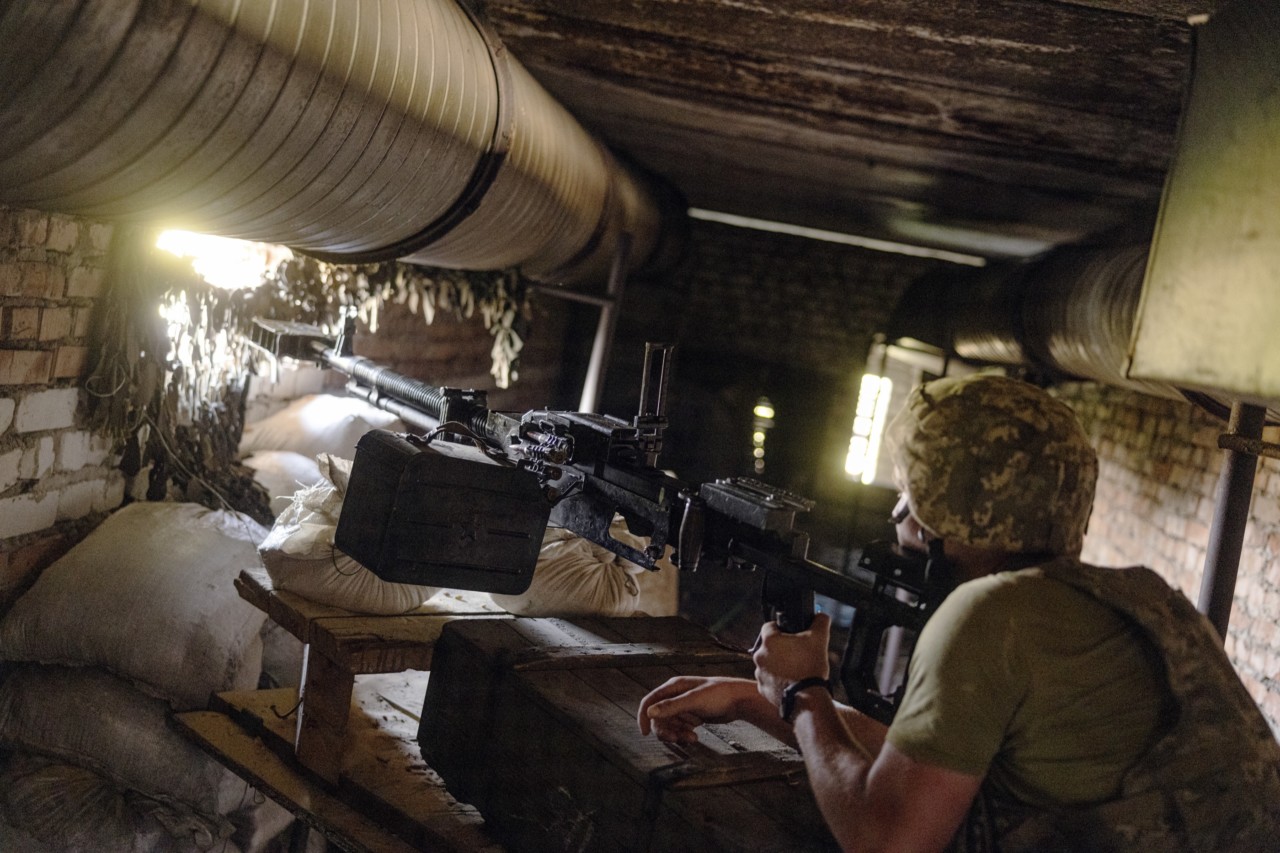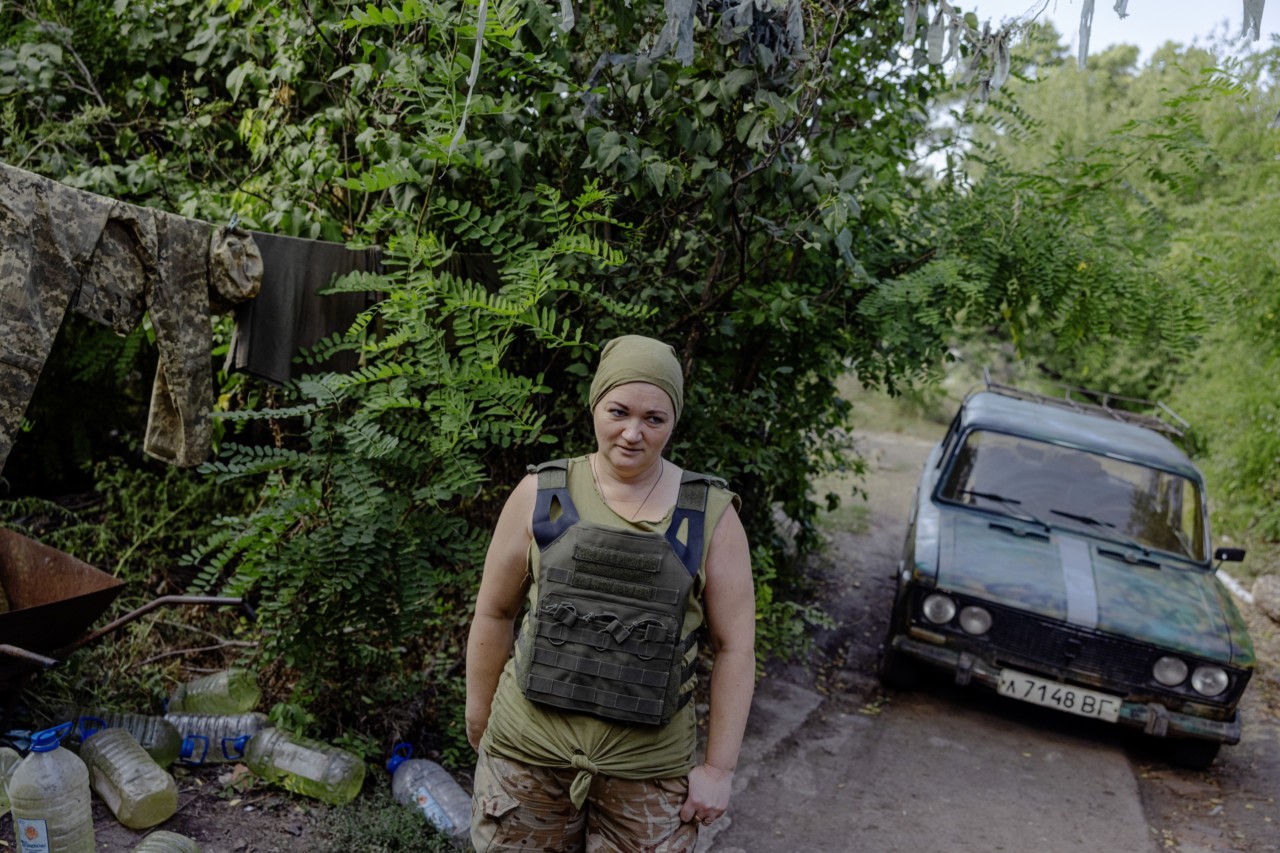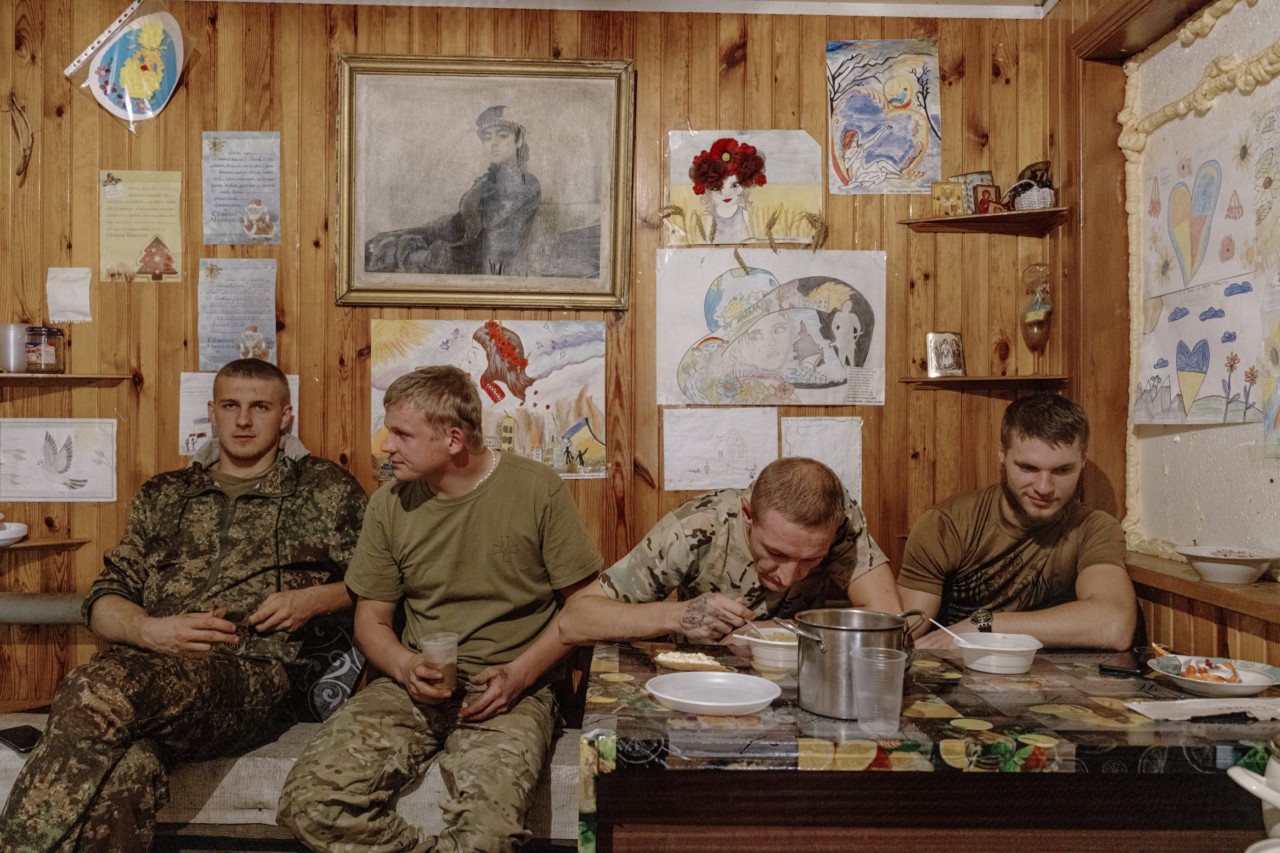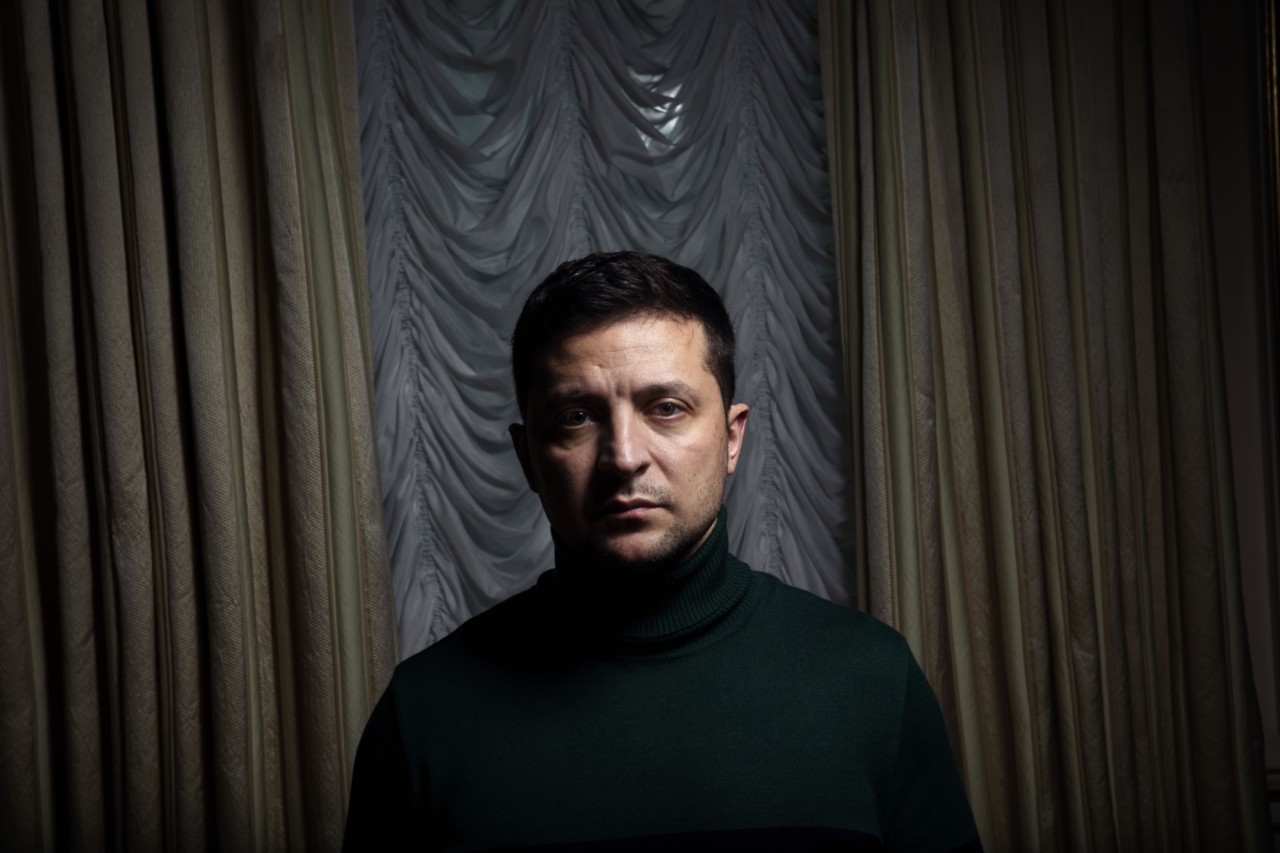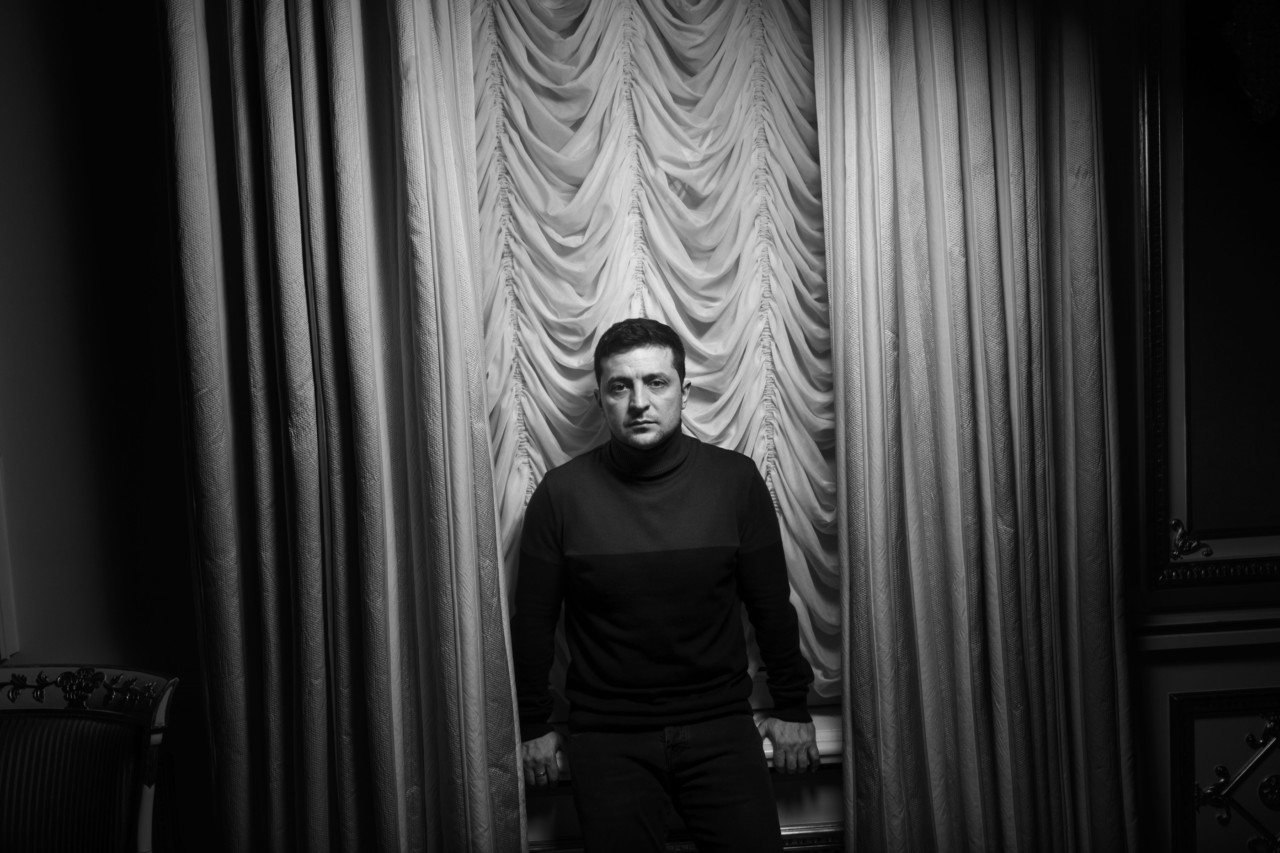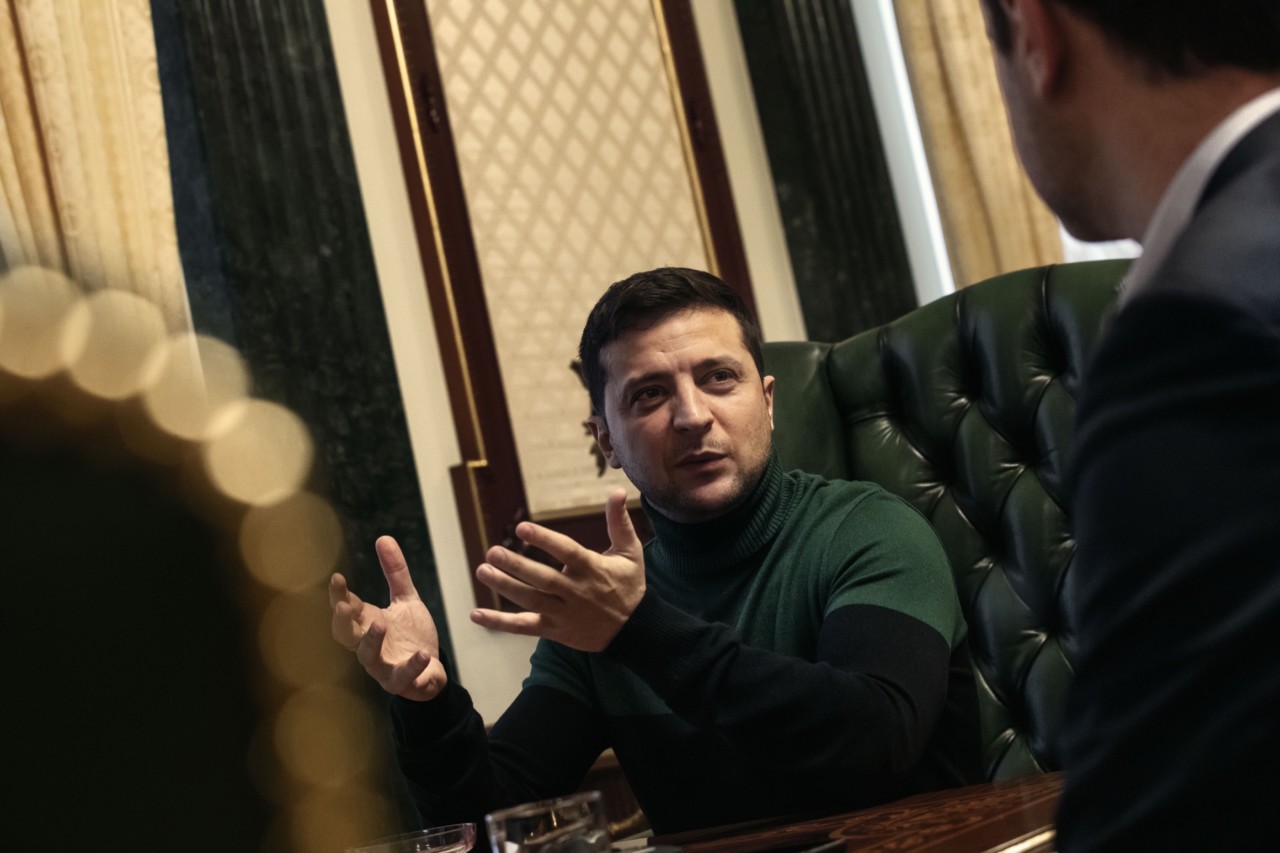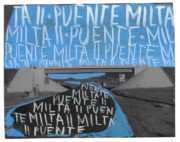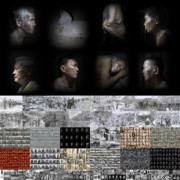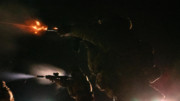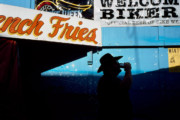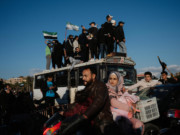Reporting the Early Stages of the War in Ukraine
Following Russia's invasion of Ukraine, several Magnum photographers went to report on the conflict and how it affected people in their daily lives. Here we gather the first two months of their coverage as it was published in the international press.
Magnum Photographers
Chien-Chi Chang – April 12
Chang’s photographs have been featured by The Economist‘s 1843 magazine in its piece ‘The war-life balance: working, flirting and feeding Ukraine’s refugees‘, subtitled ‘Even in times of conflict, ordinary life finds a way’:
As the war in Ukraine has entered its second month, its character has changed. Russian troops have withdrawn from their positions around Kyiv and the cities in the north-east of the country. According to the State Border Guard Service, in the first week of April almost as many people entered Ukraine as left. It is the end of the beginning. We don’t yet know if it is the beginning of the middle or the beginning of the end. The shock and adrenaline of the first weeks have dissipated. Now, Ukrainians are learning what one friend of mine called the “new war-life balance”. Some are even going home to towns occupied or devastated by the Russians.
William Keo – Zaporizhzhia & Mykolaiv – April 1–8
William Keo continues to work in Ukraine. His photographs have accompanied several Libération reports in early April. Click on the headlines for the articles.
April 1
‘Guerre en Ukraine: à Zaporijia, l’exode au compte-gouttes des réfugiés de Marioupol‘ (‘Ukraine war: the exodus of refugees from Mariupol slowly makes its way to Zaporizhzhia’) reports on the volunteers in the southeastern Ukrainian city of Zaporizhzhia doing what they can to welcome refugees from other parts of the country, including Mariupol.
April 5
‘Ukraine: les enlèvements russes à Melitopol, «comme une vengeance»’ (‘Ukraine: Russian kidnappings in Melitopol “like acts of vengeance”’)
April 6
‘«C’était mon devoir, ils tirent sur nos enfants»: avec les soldats ukrainiens blessés à l’hôpital de Zaporijia’ (‘“I had no choice. They’re shooting our children.” Testimony from wounded Ukrainian soldiers in hospital in Zaporizhzhia’)
April 6
‘Ukraine: au théâtre de Zaporijia, «toute la culture fait la guerre»’ (‘Ukraine: at Zaporizhzhia’s theatre, “Culture means war now”’) reports on the Zaporizhzhia theatre employees making equipment for those on the front line, from balaclavas to tourniquets.
April 8
‘Démineurs à Mykolaïv: «Nous n’étions pas prêts pour une guerre pareille»’ (‘Mykolaiv’s bomb-disposal units say “We weren’t ready for a war like this”’) reports on the units working to clear the city of mines.
Moises Saman – Moldovan border with Ukraine – April 1
April 1 also saw the publication of ‘The Road to Moldova: Photos of Ukrainian refugees fleeing home’ by the Atlantic, featuring photographs by Saman:
Over the course of seven days in Moldova, and at the country’s border with Ukraine, the photographer Moises Saman cataloged those differences, capturing images of the Jewish woman who, helped by international Jewish organizations, is bound for Israel; the Ukrainians lumped together in a community home in a village near the border; and finally the Ukrainian Roma who have found that discrimination has followed them.
Jérôme Sessini – Kyiv – April 4
On April 4, Sessini’s photographs accompanied the New Yorker’s ‘The Destruction of Ordinary Lives in Kyiv’:
The photographer Jérôme Sessini first came to Ukraine in late February, 2014, just as the Maidan Revolution was reaching its violent conclusion. He saw people felled by sniper fire, then watched the protesters mourn their dead after Viktor Yanukovych, the nation’s Russian-backed President, fled the country. After that, Sessini kept returning to Ukraine, spending time, in particular, in the breakaway republics in the east. After the Russian invasion, he returned to Ukraine, travelling to some of the hardest-hit spots in the country, photographing what he saw.
Rafal Milach – March 30
Milach was on assignment for Le Monde for a story about the possibility of tensions arising between Ukrainian and Russian e-sport teammates. His photographs feature in the March 30 article (“E-sport : « Jusqu’ici, on était une région unie », la cohésion entre Russes et Ukrainiens menacée par la guerre“; “E-sports: ‘We were one unified region – until now’ – the Russian-Ukrainian collaboration threatened by the war”) and an accompanying March 31 Instagram post.
William Keo – Mykolaiv – March 30
Keo continues to cover the conflict with France’s Libération newspaper. His images are in a March 30 article from the paper – “Pris pour cible, Mikolaïv pleure ses morts et résiste” (“Targeted Mykolaiv mourns its dead and holds firm”). The piece details the search for survivors from the blast that hit a regional government building in the port city.
William Keo – Zaporizhzhia – March 28
On March 28, Franceinfo published a piece titled “Guerre en Ukraine: à l’hôpital pédiatrique de Zaporijia, des sacs de sable pour protéger les enfants blessés de Marioupol” (“Ukraine war: at the children’s hospital in Zaporizhzhia, sandbags protect those injured in Mariupol”). The article features photographs and quotes from Keo.
William Keo – Mykolaïv – March 25
On March 25, Libération published a photo journal collating Keo’s photographs taken in southern Ukraine since March 5: “«Je pense que toutes les personnes qui ont vu la morgue de Mykolaïv s’en souviendront»: l’Ukraine dans l’œil de William Keo” (“‘Nobody who has seen the mortuary in Mykolaïv will be able to forget it’: the Ukraine crisis through the eyes of William Keo”).
Emin Özmen – Zaporizhzhia – March 25
March 25 saw the publication of the Der Spiegel article “Bomben auf die Schwächsten” (“Targeting the most vulnerable”) featuring Emin Özmen’s photographs. The piece details the brutality of the Russian attack on the city of Zaporizhzhia.
A day later, Özmen’s photographs also accompanied a Der Spiegel print article (“Im Vorhof der Hölle” or “Hell on Earth”) covering the situation at the children’s hospital in Zaporizhzhia. It is online in English here.
Chien-Chi Chang – Lviv – March 28
Internally displaced Ukrainians out of war-torn hometowns arrive at Lviv-Holovnyi railway station to board another train or bus to seek shelter and protection in Europe. The bugle call in the film was recorded in a Lviv church during a funeral for soldiers killed in the conflict.
“… life was no longer normal, it was in no way reminiscent of life before the outbreak of war… That recently wonderful world was about to plunge into DARKNESS…with each day that DARKNESS deepened encompassing our world with ever swallowing us up. The normal world stopped existing – all that remained for us was darkness.”
– Ignacy Chiger
Jérôme Sessini – Irpin, Kyiv and Kharkiv – March 15–22
Jérôme Sessini’s photographs have accompanied a March 15 New Yorker article by Jane Ferguson titled “A Search For Survival Outside Kyiv”. Sessini also appeared as a witness in the piece:
As Sessini made his way back toward Kyiv, he visited the main bridge to the capital, which the Ukrainian military had blown up to slow the Russian advance. As Sessini photographed the bridge from the Irpin side, elderly civilians slowly traversed its remains. Giant chunks of concrete and asphalt lay in a tangle on the riverbed nearby. Volunteers helped an elderly woman slowly shuffle along a makeshift wooden walkway. The rushing, dark waters of the Irpin River swirled around her as a volunteer reached forward, clasped her hand, and guided her toward momentary safety.
A week later, Sessini’s images featured in another New Yorker piece (“The Devastation of Kharkiv”, March 22), by Masha Gessen, who wrote:
I visited Kharkiv less than a month before Russian missiles started striking it. Most of the people I met there—and all of the men whom I met there—told me that they, and the city, were ready for war. They thought they knew what war was. A Russian-orchestrated attempt to take over the city had failed in 2014, but, just to the east of Kharkiv, an occupation regime was established, and a shooting war went on for eight years. A giant blue-and-yellow tent in Freedom Square, with a banner that said “Everything for victory,” stood as a stubborn reminder that the war wasn’t over. Then Russia’s full-scale invasion of Ukraine began. Within a few weeks, Kharkiv was unrecognizable.
Emin Özmen – Kyiv – March 14–16
Emin Özmen’s photography has featured in Der Spiegel’s coverage of the invasion of Ukraine, including a March 14 article titled »Ich habe kein Zuhause mehr« (“I don’t have a home anymore”), which covers the defiant stance of Kyiv’s citizens and “Eine Stadt hält den Atem an” (“A city holds its breath”) on March 16, as Kyiv continued to await a Russian onslaught.
Özmen has been posting on Instagram about his work in Ukraine.
William Keo – Zaporizhia and Mariupol – March 20–21
March 20 saw the publication of the Libération report “Zaporijia, une ville au chevet des enfants martyrs” (“Zaporizhia: city of martyred children”), featuring photos from William Keo, who posted on Instagram about the events and people in this story.
A day later, on March 21, Keo’s photographs accompanied Libération’s “Les survivants de Marioupol racontent: «Il y a des corps dans tous les quartiers»” (“Mariupol survivors report that ‘There are bodies everywhere’”).
Zied Ben Romdhane – March 22
On March 22, Zied Ben Romdhane’s photographs appeared alongside a report in Le Monde: “L’Afrique paie déjà le prix de la guerre en Ukraine” (“Africa is already paying the price for the war in Ukraine”), which examines the impact of inflation on food supply chains in the continent.
Enri Canaj – Odesa and the Isaccea-Orlivka border – March 8–14
A selection of Enri Canaj’s photographs, shot in Odesa as the city prepares to defend itself, and at the border between Romania and Ukraine. More than 80,000 people have passed into Romania at this border crossing.
William Keo – Odesa/Voznessenska – March 17
Keo’s photographs have accompanied a March 17 Libération piece about the aftermath of a March 2–3 battle in the town of Voznessensk, some 100km to the northeast of Odesa. ‘Dans le Sud ukrainien, les Russes ont «foutu le bordel» mais «ont battu en retraite»’ can be read here.
Chien-Chi Chang – Lviv – March 14 & 15
Chang’s photographs have accompanied two in-depth, first-person dispatches from Wendell Steavenson for The Economist’s 1843 magazine. March 14 saw the publication of ‘Cappuccinos and Kalashnikovs: war comes to Lviv‘, which describes the on-the-ground situation in Lviv. The March 15 dispatch – “I’ll stay until Putin’s dead or the war is over”: the Americans fighting for Ukraine – introduced some of the foreign volunteers to have joined the Georgian Legion to combat the Russian invaders.
Rafał Milach – Poland – March 2–4
Rafal Milach has spoken to the New Yorker about his work in Poland. Published alongside his photos of people arriving from Ukraine and the help they are receiving, the article provides an insight into how he works in the field.
“I witnessed Milach at work, and was struck by how long he talked with each refugee before taking a photograph. He wanted to hear their stories,” writes Ed Caesar. “‘What can you do when a grown man starts to cry in front of you?’ he said to me. ‘What can you do when people tell you how they had to abandon their homes and their relatives overnight? I can listen. I can document it—to remember, so the images and words can resonate long after this nightmare is over.’”
Chien-Chi Chang – Lviv – March 13
Lviv-Holovnyi railway station. A father bidding farewell to his wife and his daughter. The train heads to Poland where the mother and the daughter seek shelter and protection. The man stays to defend his country.
William Keo – Odesa/Mykolaiv – March 11
Keo’s photos appear in Libération. “In the landlocked port, the activity of the morgue bears witness to the violence of the fighting to prevent the town from falling and opening the road for the Russian army to the strategic Odessa,” reports Pierre Alonso.
Emin Özmen – Odesa – March 11
Emin Özmen has been photographing the people of Odesa as they prepare for an attack. His photos appear in Der Spiegl in an article which asks: “This is how the inhabitants of Odessa are preparing for war They fill sandbags, collect food and medicine: In Odessa, Ukraine, people are preparing for the attack by Putin’s troops. Yet many feel closely connected to Russia. How can they stand it?”
Chien-Chi Chang – Lviv – March 9
“A school in the suburbs of Lviv has been turned into a training centre. Men and women with no military experience come there to familiarise themselves with the weapons of war. They want to be “ready for Putin’s soldiers. It’s not about sending them into battle but about teaching them the basics if the fighting comes to them,” reports L’Obs, which includes video footage by Chang.
Enri Canaj – Isaccea-Orlivka border – March 8
Enri Canaj has been at the border between Romania and Ukraine. More than 80,000 people have passed into Romania. Canaj’s photos show people crossing the border at Isaccea-Orlivka.
William Keo – Odesa – March 8
William Keo has continued to photograph the people and city of Odesa as it prepares for an attack. His photos appear in an article titled: “We must fight back”: Odessa prepares for an assault, that appears in Libération
Chien-Chi Chang – Mostyska – March 4
“In a small public school in the western metropolis, for the moment spared by Russian bombs, men and women with no military experience are familiarising themselves with weapons of war to be ‘ready to receive Putin’s soldiers’,” reports L’Obs with photos by Chang.
Rafał Milach – Poland – February 28 – March 7
More than one million people have crossed the border from Ukraine to Poland since the Russian invasion. Rafal Milach has been in the field in Warsaw and on the border in Medyka as the refugees arrive. Here, he shares some short films from the past ten days.
William Keo – Odesa – March 5–7
William Keo has photographed the citizens of Odesa as they prepare to defend the city. In Libération, where Keo’s photos appear, Pierre Alonso writes:
“On this Monday afternoon, men in khaki are setting up a barricade with heavy concrete blocks in Odessa’s majestic shopping avenue. Anti-tank obstacles are already blocking the usually busy street, with its chic restaurants, elegant kiosk square and finely crafted colourful facades. Residents are either holed up in their homes or have already left. According to local authorities, nearly 150,000 people have left the large Black Sea port city, which had about a million residents until the Russian invasion began on 24 February. They have fled to the west of their country, which has so far been spared by the war, and across the border, mainly to nearby Romania and Moldova. Behind them, they leave a feverish city, worried about an upcoming attack.”
Jérôme Sessini – Irpin – March 6
Jérôme Sessini photographed civilians dodging mortars as they tried to escape the Russian advance on the city of Irpin. Sessini spoke to The New Yorker, which published his images.
“Early on Sunday afternoon, Jérôme Sessini, a French photographer on assignment for The New Yorker in Ukraine, arrived in Irpin, a small town of sixty thousand people about a half hour’s drive west of the capital, Kyiv. Sessini, who is based in Paris and has covered conflicts around the world for the Magnum photo agency, was travelling with three companions: a Ukrainian driver and two photographers. Their destination was a bridge on the Irpin River which Ukrainian troops had destroyed to slow Russian forces advancing on Kyiv. The day before, Sessini had witnessed civilians huddled under what was left of the bridge, trying to make their way across the river, fleeing Russian troops. He had returned to see how the evacuation was progressing.”
Lorenzo Meloni – Irpin – March 6
People evacuated under heavy shelling by the Russian army on the outskirts of Irpin, a city about 20km from Kyiv.
Susan Meiselas – New York – March 5
Hundreds gather during the Stand with Ukraine demonstration in Times Square in New York City to support Ukraine resistance and urge NATO to create a no-fly zone.
Thomas Dworzak – Paris – March 5
Demonstration against the Russian invasion of Ukraine at Place de la République in Paris.
Chien-Chi Chang – Mostyska – March 4
Ukrainians escape war-torn hometowns in south Ukraine via train from Odesa and make a stop for food before heading to Poland to seek shelter and protection.
Lorenzo Meloni – Kyiv – March 3–4
“Kyiv now experiences two parallel and opposite dimensions. On the surface, young men and women prepare for battle, while in the basement of buildings and metro tunnels, families seek shelter. From hour to hour the mood changes, there are moments when everything seems to be going well and then suddenly for reasons beyond logic the tension rises. The tanks are still at the gates of the city. Yesterday I went to take pictures on the front line, it seemed relatively calm, but it seems that tomorrow I won’t be able to return to the same place because the Russian Army have advanced.”
– Lorenzo Meloni
Meloni is being supported by the Emergency Reporting Commission, a new initiative that supports reporters covering breaking news in conflict areas, independently of media outlets. Initiated by Obscura, photographers are funded by the sale of NFTs. 100% of the proceeds of the Emergency Reporting Commission are distributed amongst selected active photographers on the ground to support their efforts to document during moments of conflict. Find out more here.
William Keo – Lviv – March 2
William Keo has been photographing at Lviv station.
“More than 454 000 people have fled to Poland since the Russian offensive. Mostly via Lviv, the largest city in the West, and its station where trains from all over the country converge,” reports L’obs.
Lorenzo Meloni – Kyiv – March 1
“Today I spent an hour or two on the streets of Kyiv. The logistics are very complicated as most of the fixers have left or decided to fight. The same goes for having a driver or just a car. Apart from the bombing of a TV antenna the situation is tense but calm. It’s probably the calm before the storm, as I can see on the news that there is a 40 miles-long column of tanks at the gates of Kyiv.
Along the streets, I found many barricades and checkpoints set up by citizens. I saw many young people, especially in the suburbs, protecting their neighborhoods. I don’t know if they know or not that those barricades won’t stop any tanks. But I didn’t feel I had to tell them that if they want to hope so”
– Lorenzo Meloni
Meloni is being supported by the Emergency Reporting Commission, a new initiative that supports reporters covering breaking news in conflict areas, independently of media outlets. Initiated by Obscura, photographers are funded by the sale of NFTs. 100% of the proceeds of the Emergency Reporting Commission are distributed amongst selected active photographers on the ground to support their efforts to document during moments of conflict. Find out more here.
Emin Özmen – Lviv – February 26
“In wintry temperatures, people try to flee the Ukrainian city of Lviv. According to UN figures, more than half a million people have left Ukraine since the Russian invasion began. ‘Over 500,000 refugees have now fled Ukraine to neighboring countries,’ wrote UN Refugee Commissioner Filippo Grandi on Twitter,” reports Der Spiegel, with photographs by Emin Özmen
Rafał Milach – Poland – February 25/26
“Thousands of Ukrainians arrive at the border crossings to the eastern EU countries; there could be millions. They are given a friendly welcome. But many refugees ask themselves: What happens now?” asks an article in Der Spiegel that uses Rafał Milach’s photos to show the activity at the Polish border.
Stuart Franklin – London – February 26
Demonstrations against the Russian invasion of Ukraine outside Downing Street and the Russian embassy in Notting Hill. The ‘Stand with Ukraine’ rally was attended by the Ukrainian diaspora and their supporters.
William Keo – Paris – February 26
Citizens of Paris have gathered every day to protest since Russian operations in Ukraine commenced on 24 February. William Keo photographed one of the demonstrations, which was addressed by Vadym Omelchenko, the Ukrainian ambassador to France.
Thomas Dworzak – Paris – February 26
Crowds gathered at Place de la République in Paris in a show of support for Ukraine and to demonstrate against the Russian invasion.
Lorenzo Meloni – Mariupol – February 24
Lorenzo Meloni was in the the city of Mariupol as the city was shelled by the Russian navy. “On the morning of Friday 25 February, Russian forces had still not broken through the Ukrainian lines. But the risk of being caught off guard and subjected to a siege has become obvious to everyone. Between the rumours of an amphibious landing west of the city, the fear of aerial bombardments and the rapid advance of Russian troops from Crimea to Melitopol (170 kilometres to the west), the nerves of the Mariupolitans are being put to the test,” wrote Emmanuel Grynszpan in Le Monde where these photos were first published here and here.
Thomas Dworzak – Kyiv – February 1
In Kyiv, Thomas Dworzak witnesses anti-Putin marches and civilian training by the Azov batallion. At the time, Russia was stationing troops along its border with Ukraine, while denying any intention to invade the country.
Paolo Pellegrin – Donbas – August 2021
Paolo Pellegrin – Volodymyr Zelensky, President of Ukraine – 2019
Former comedian and actor Volodymyr Zelensky was elected President of Ukraine April 21, 2019 and inaugurated May 20, 2019. Pellegrin’s portrait was used on the cover of Time Magazine.


